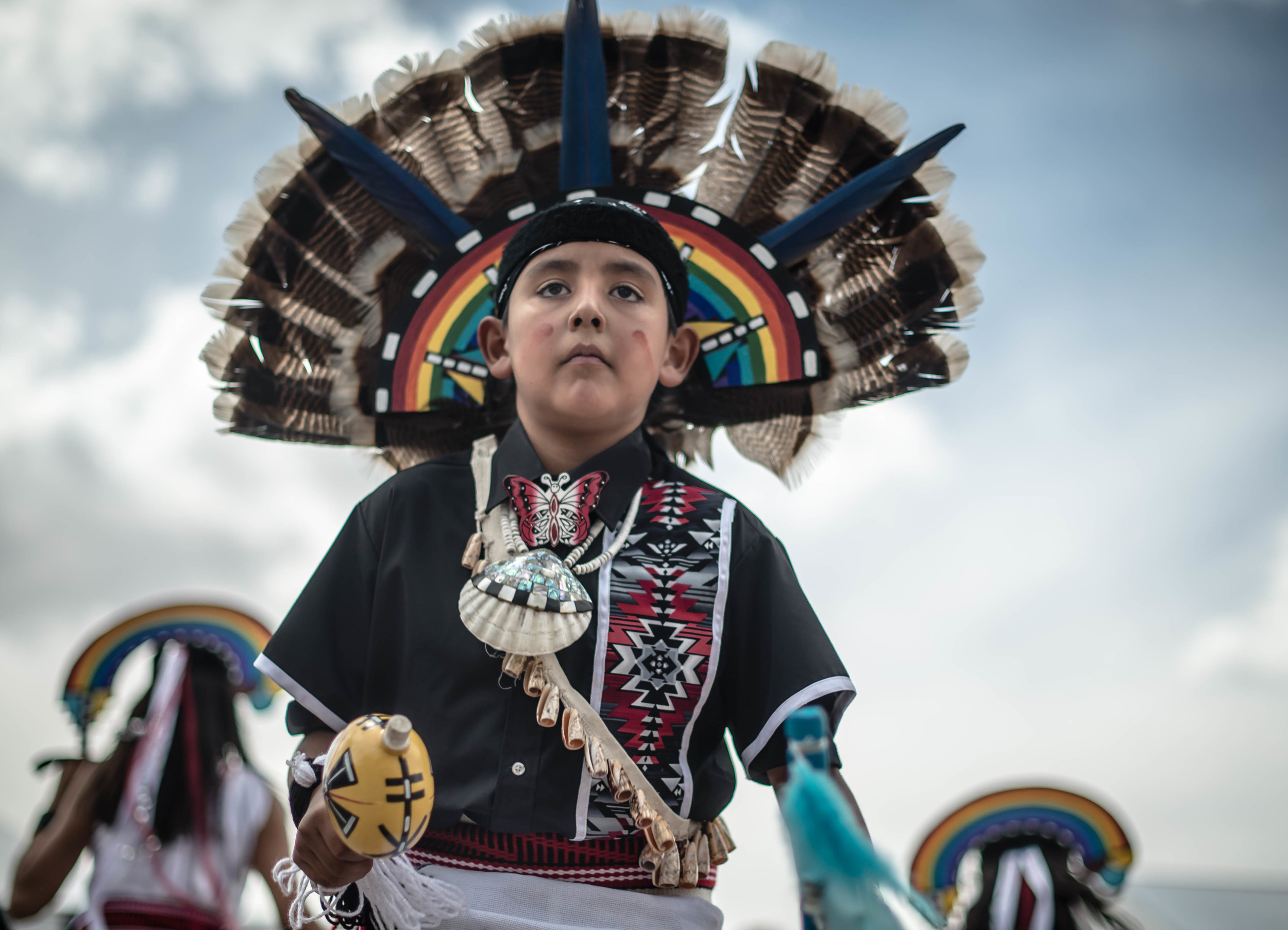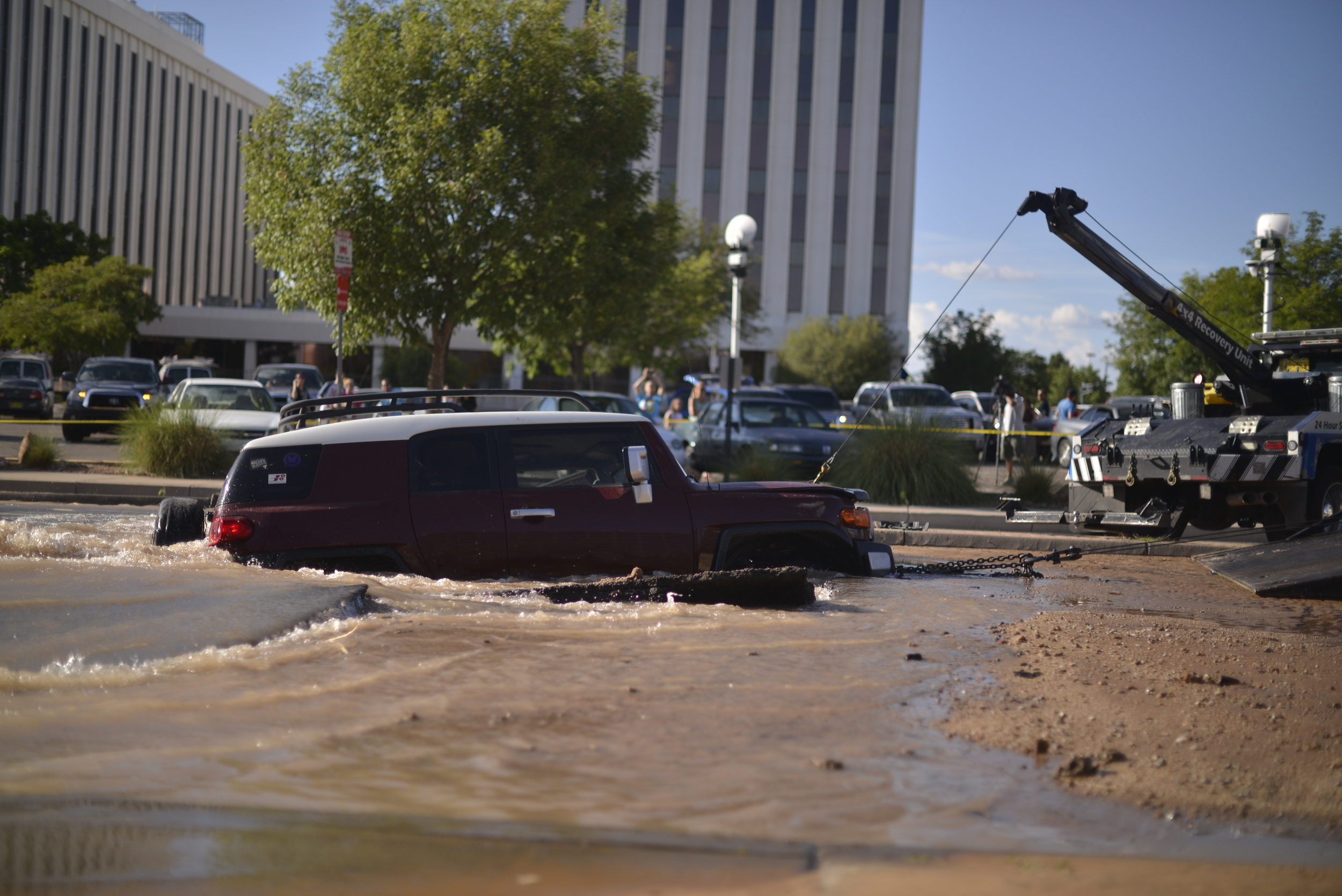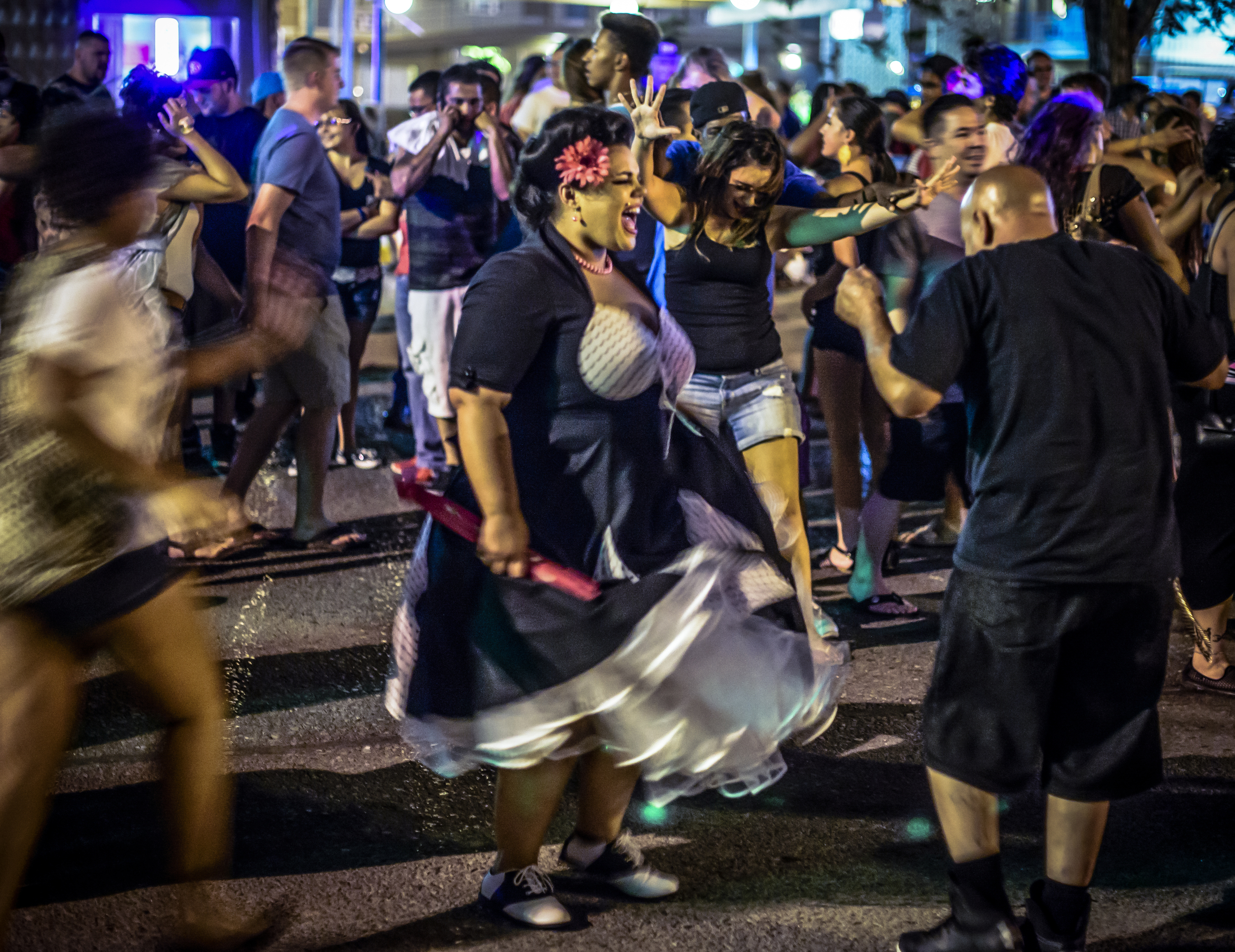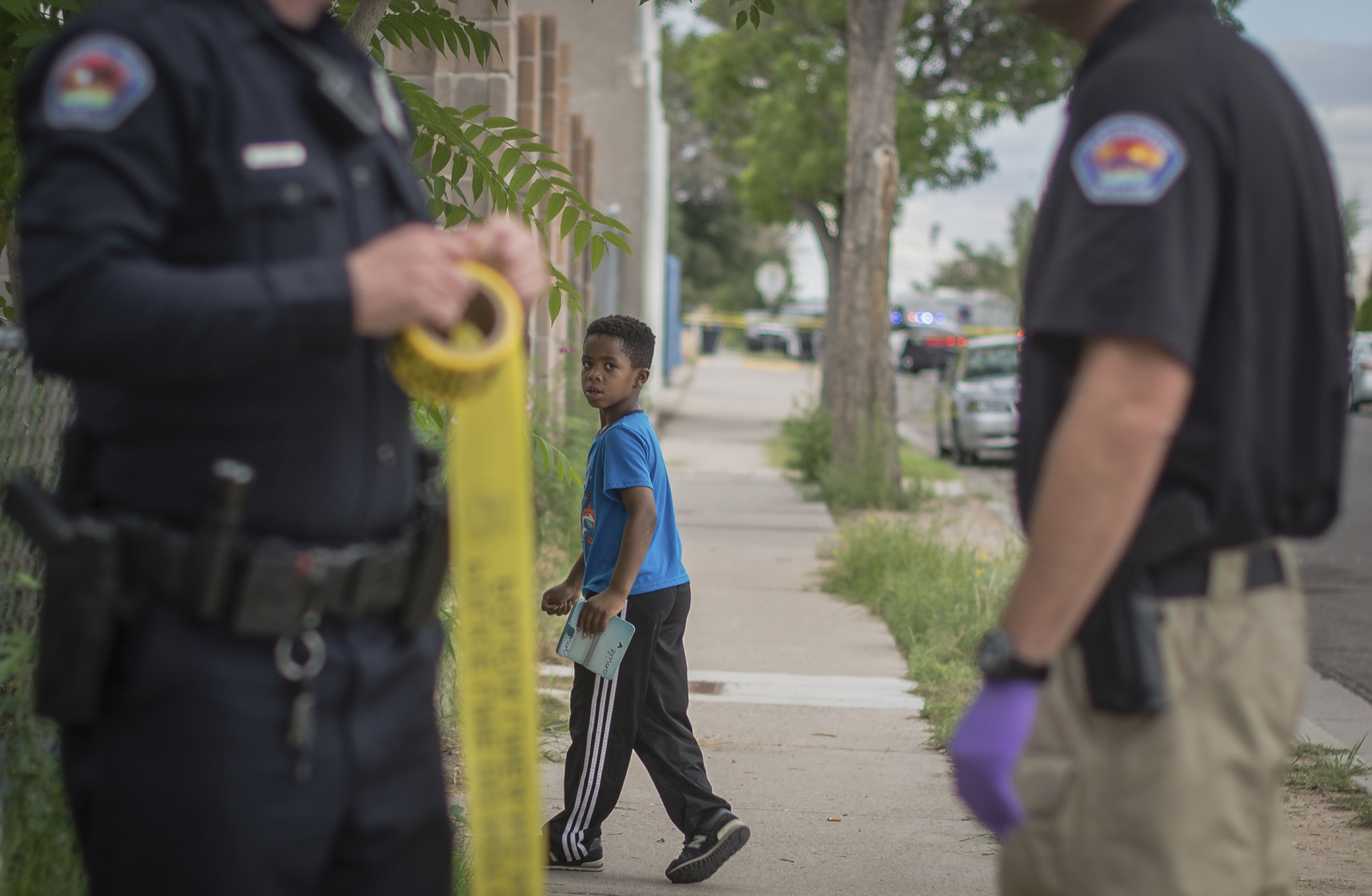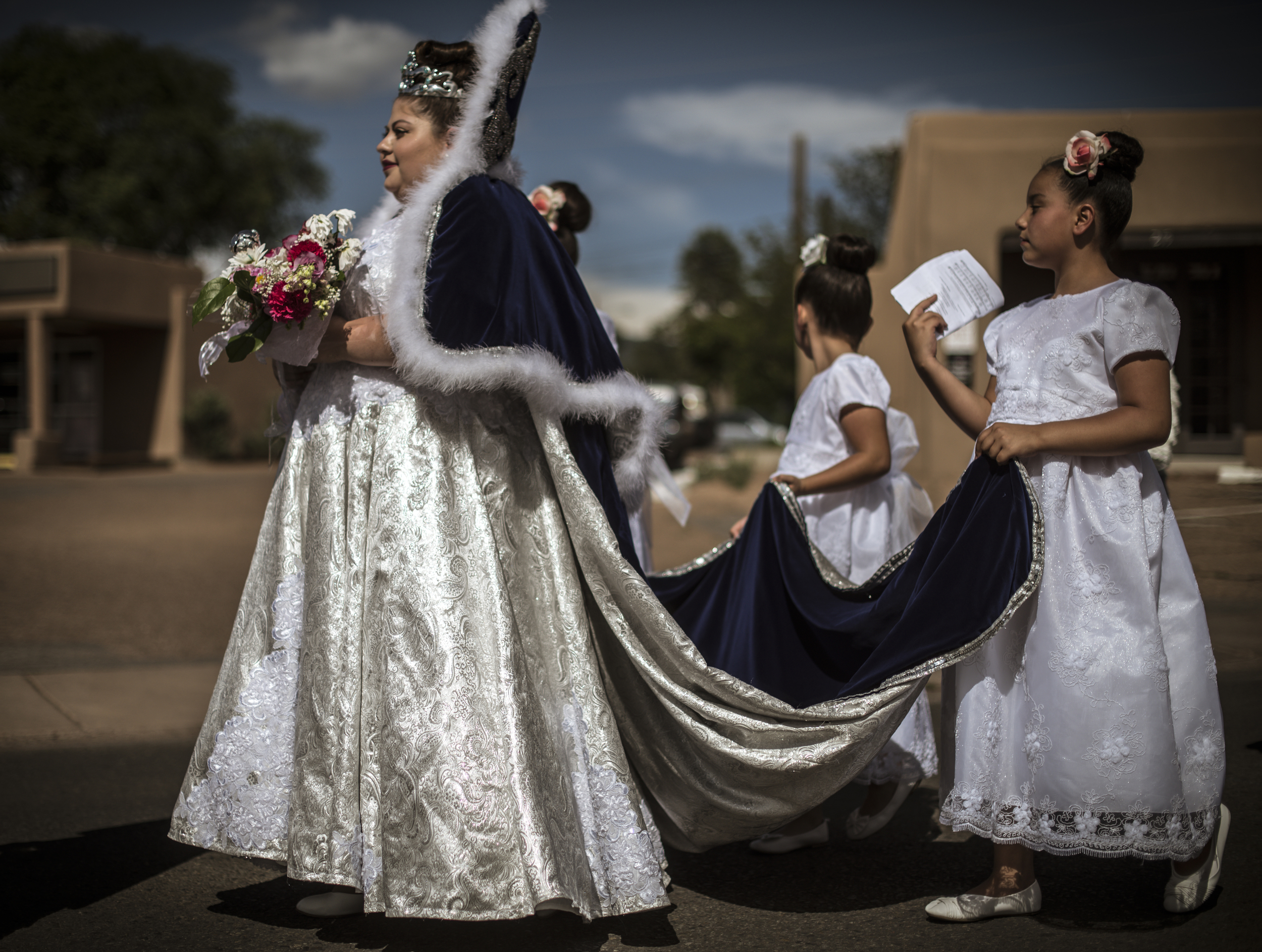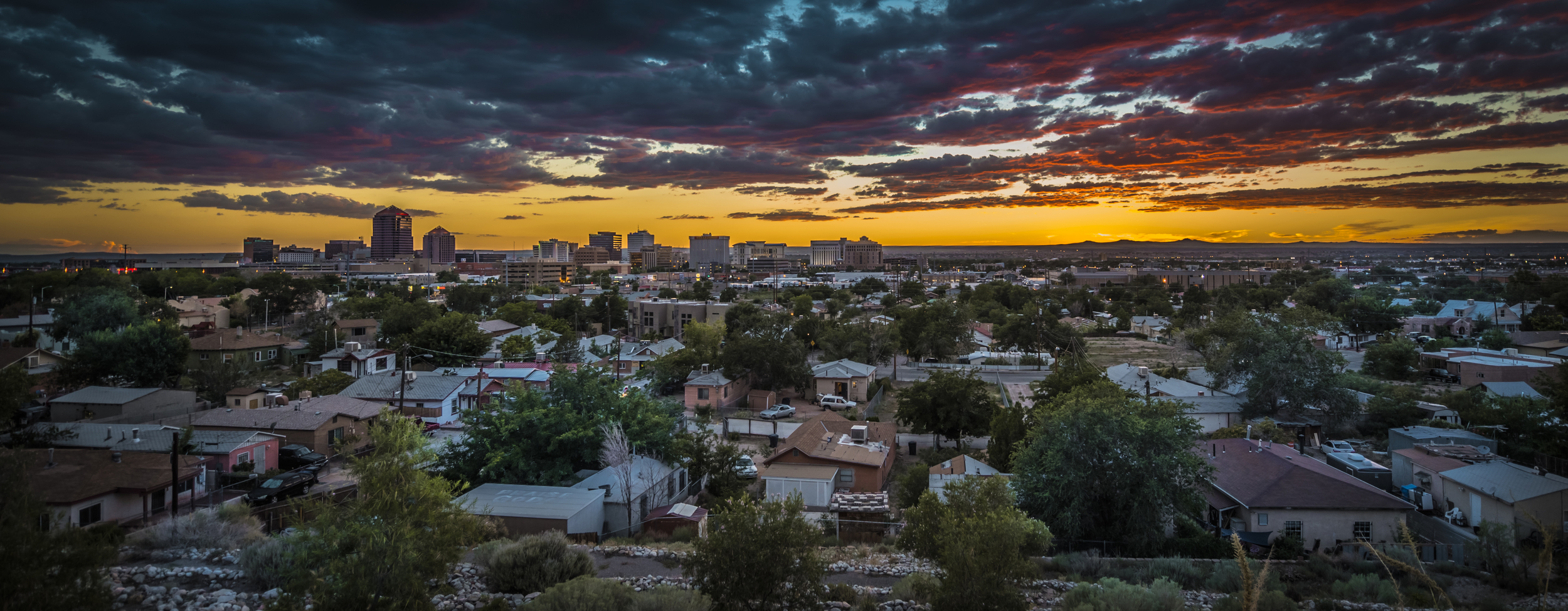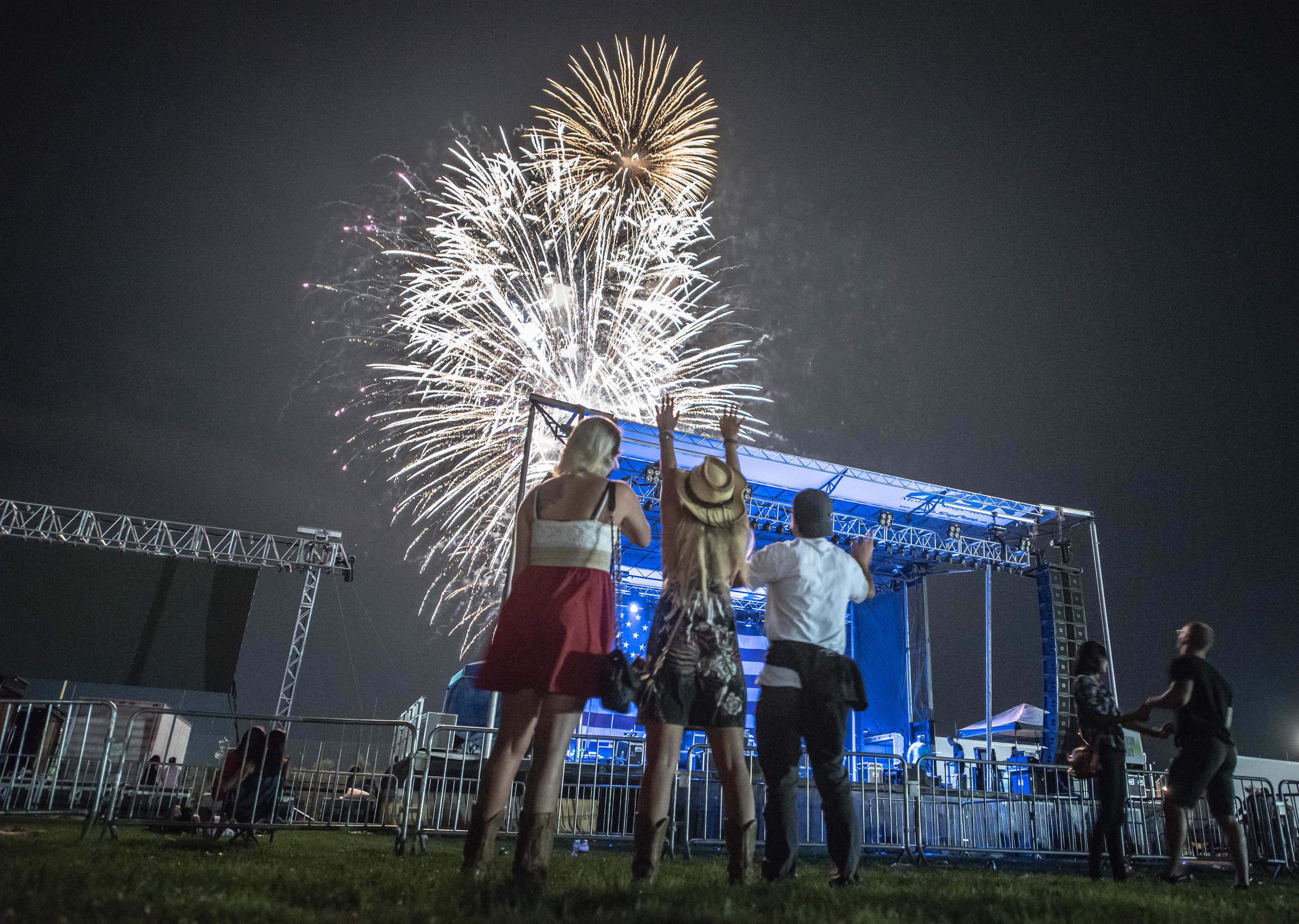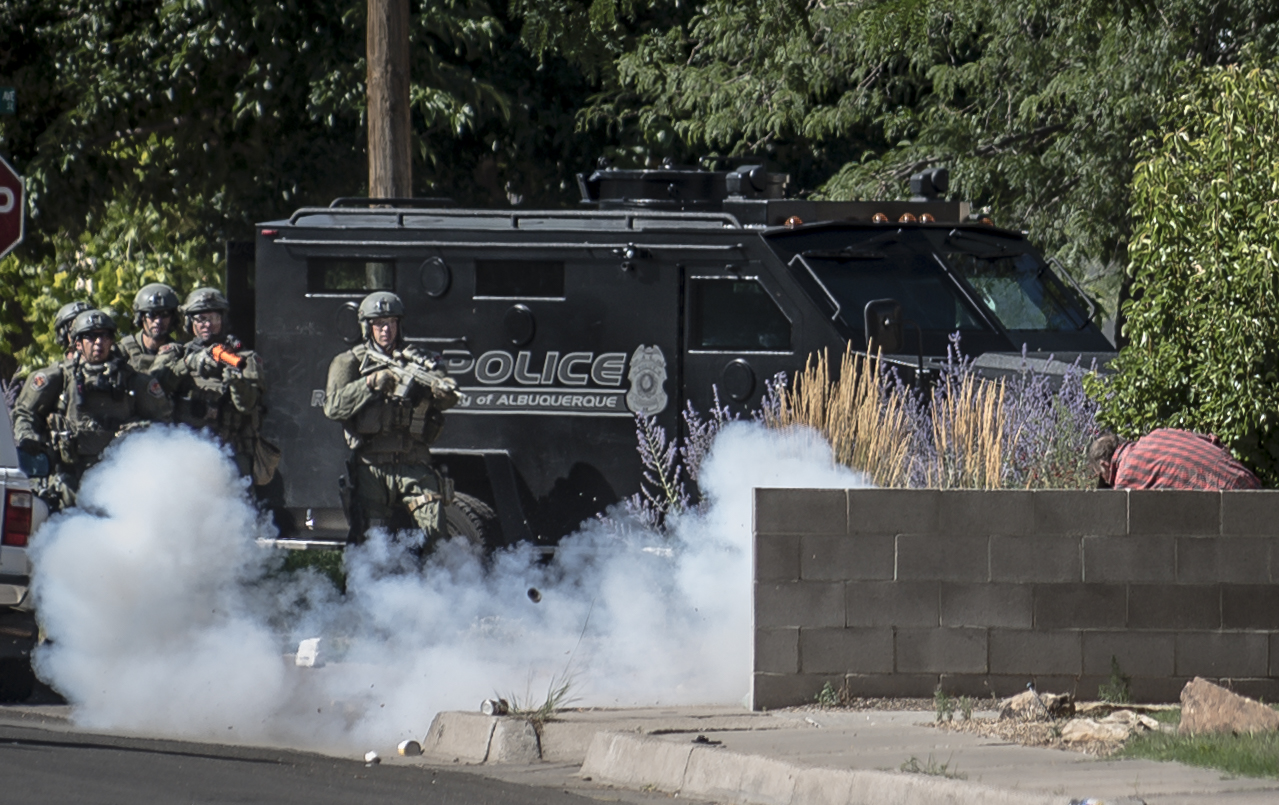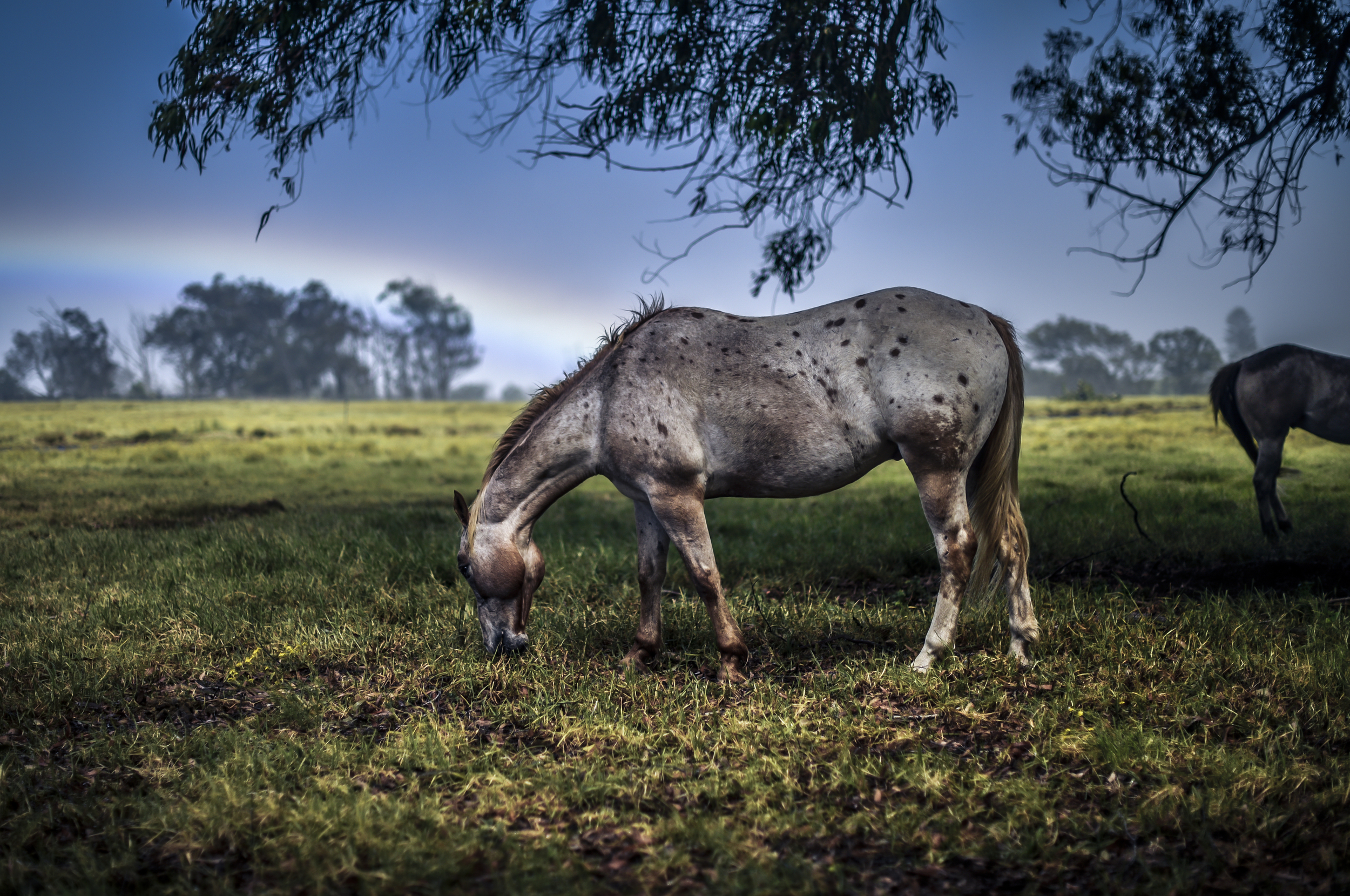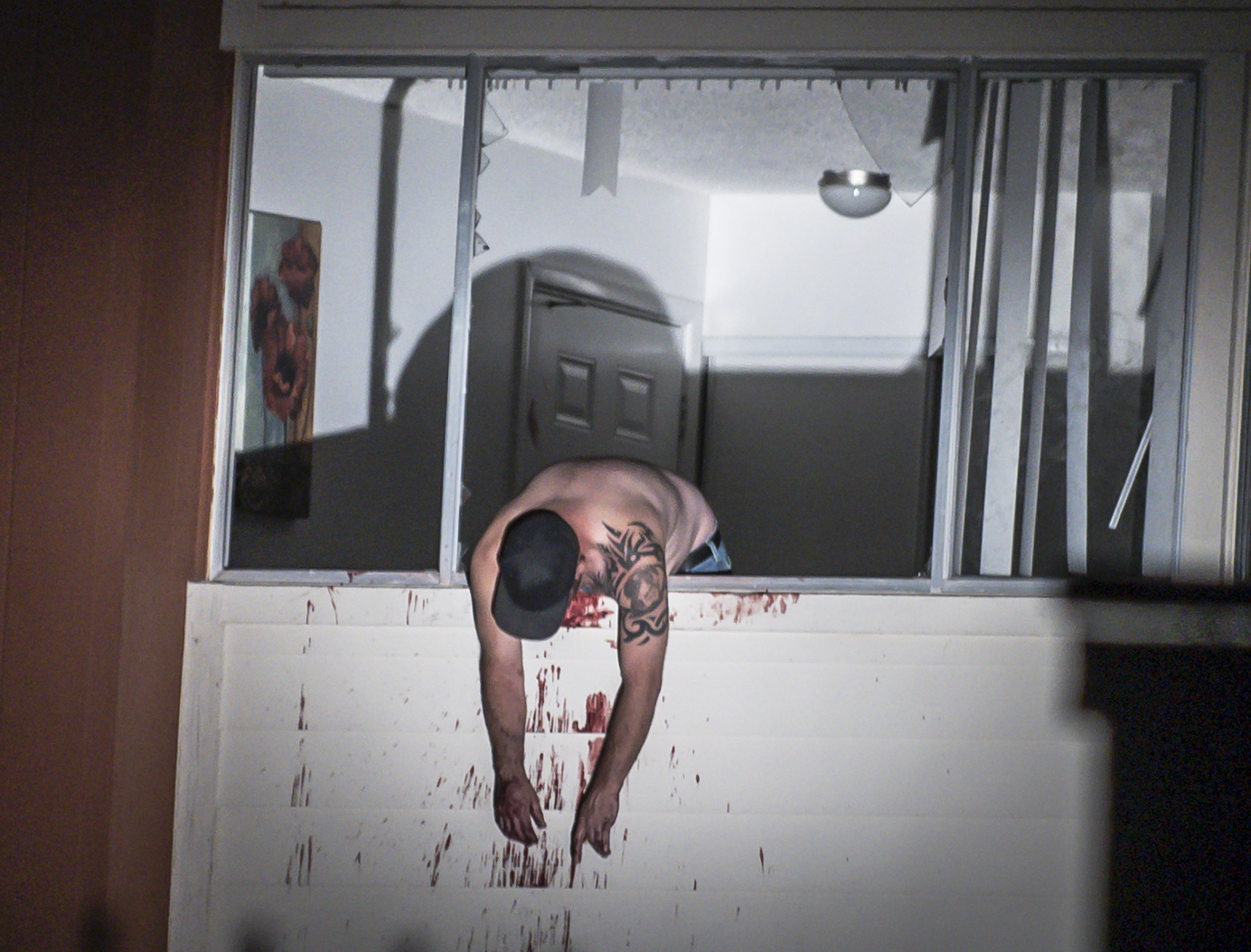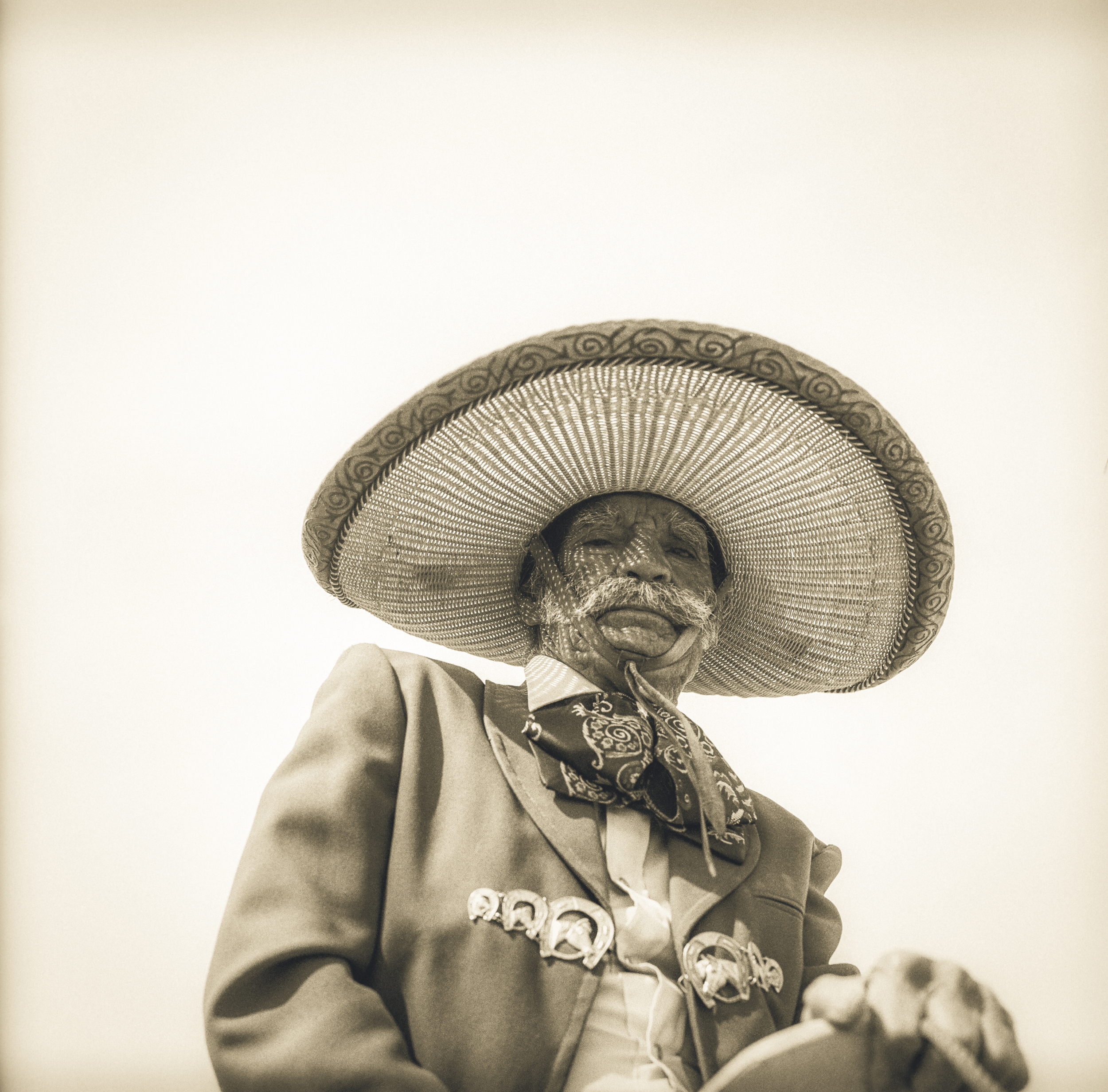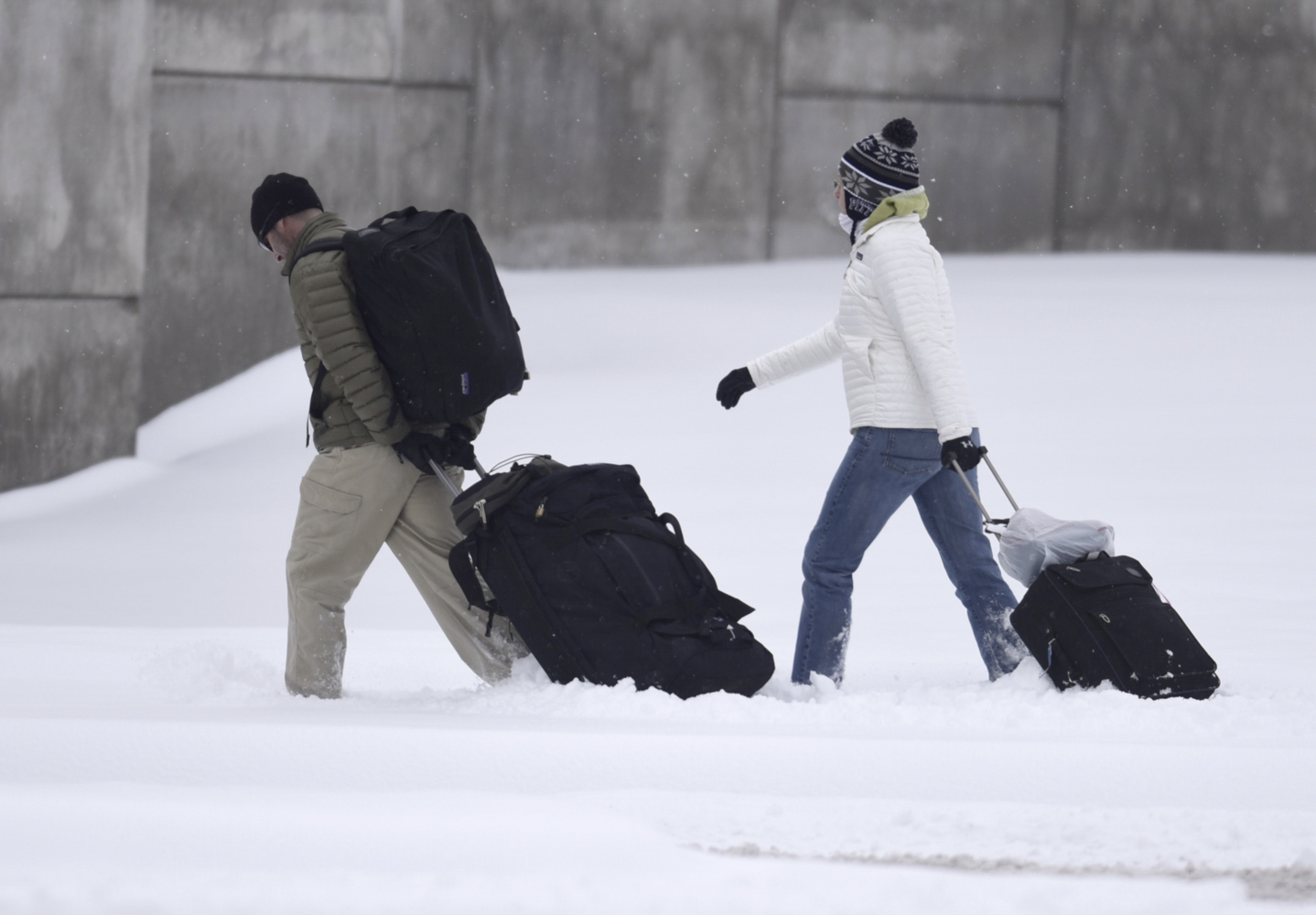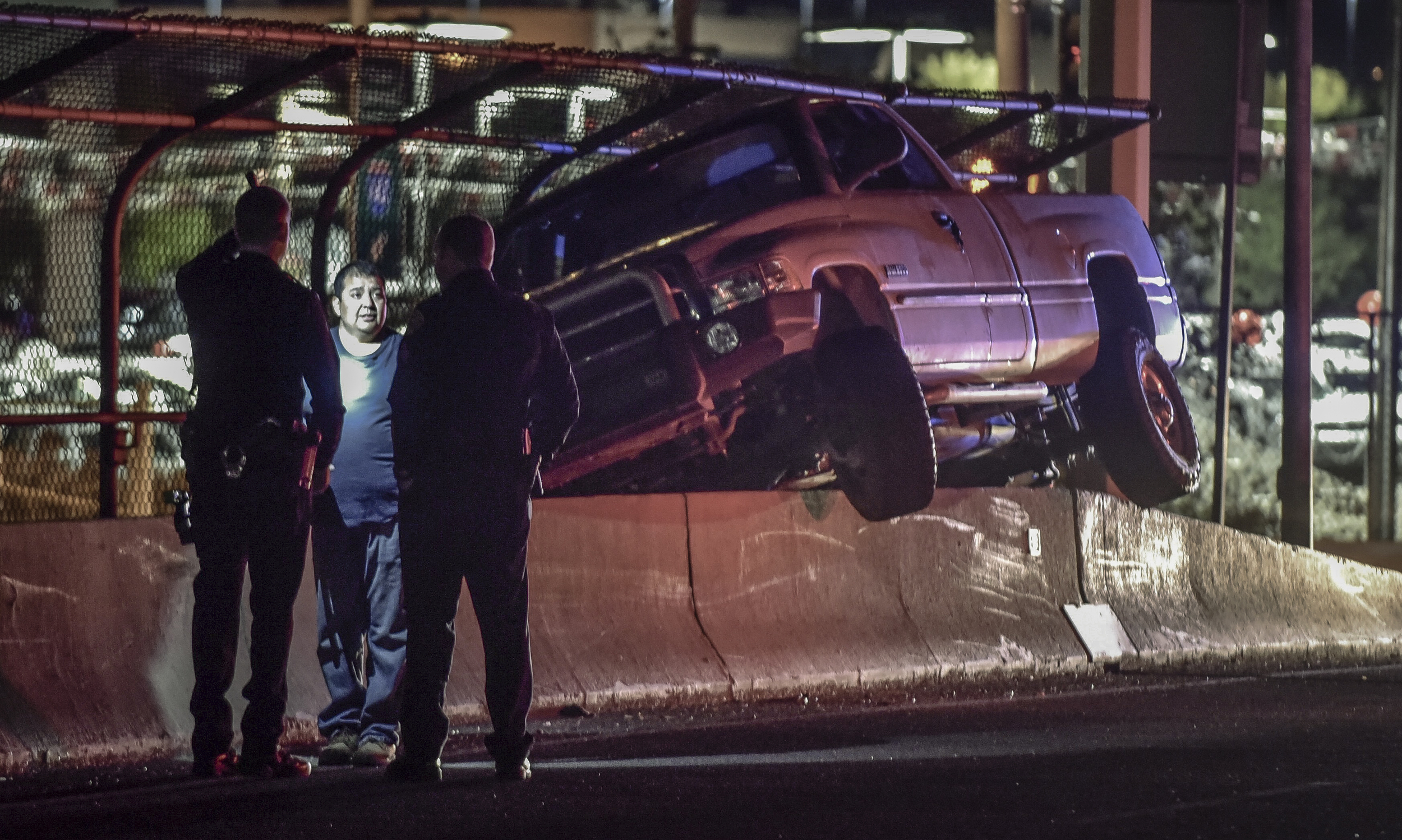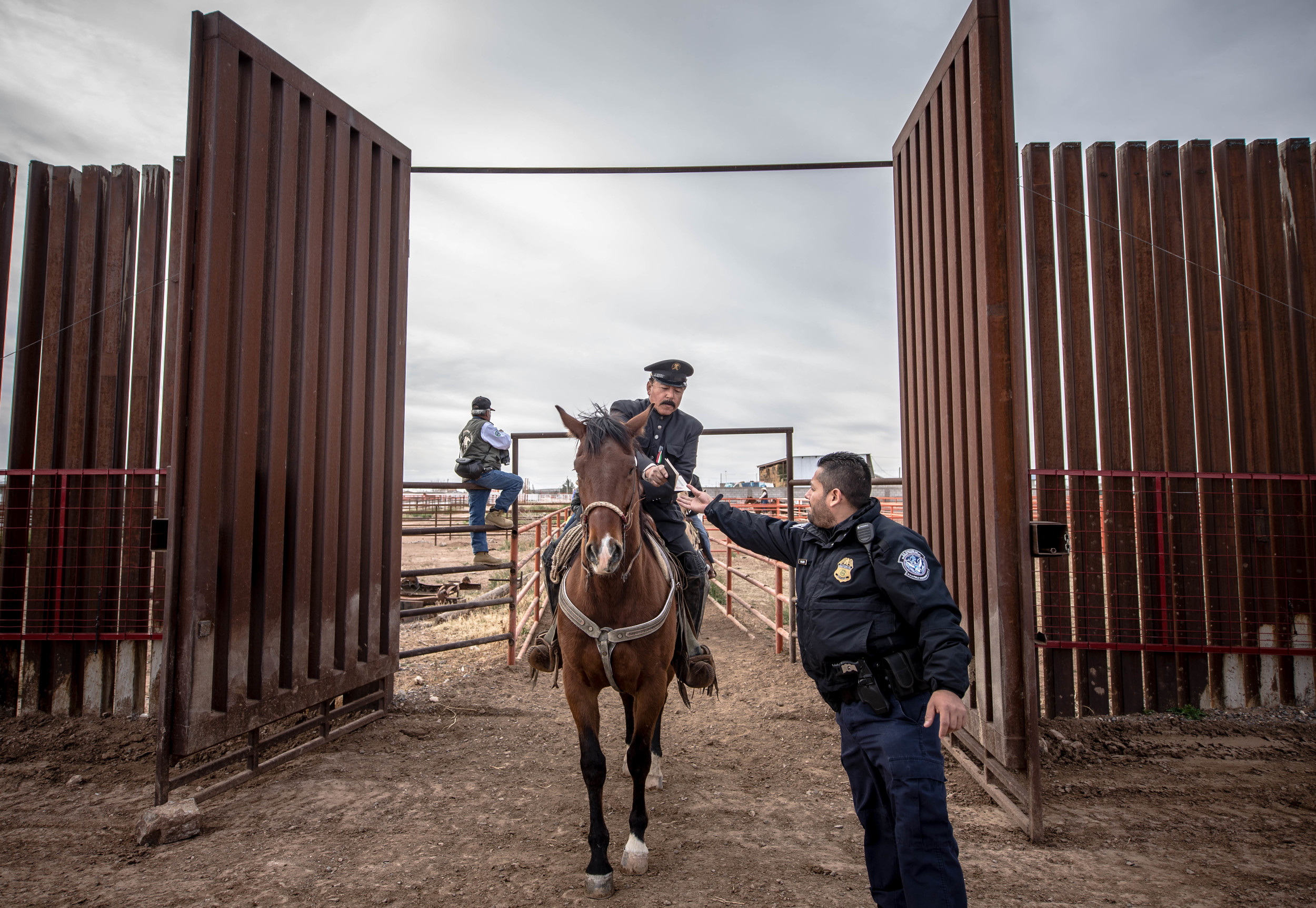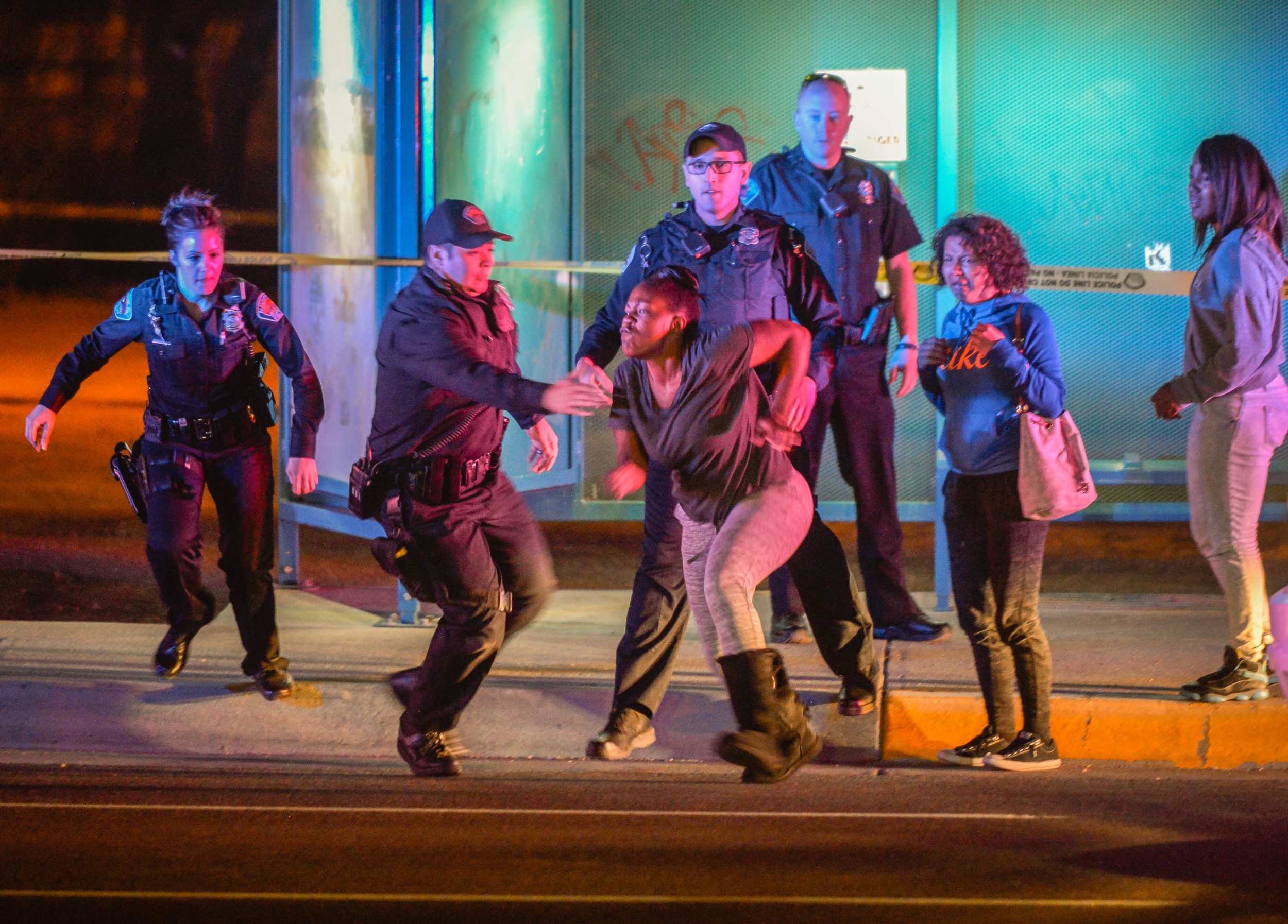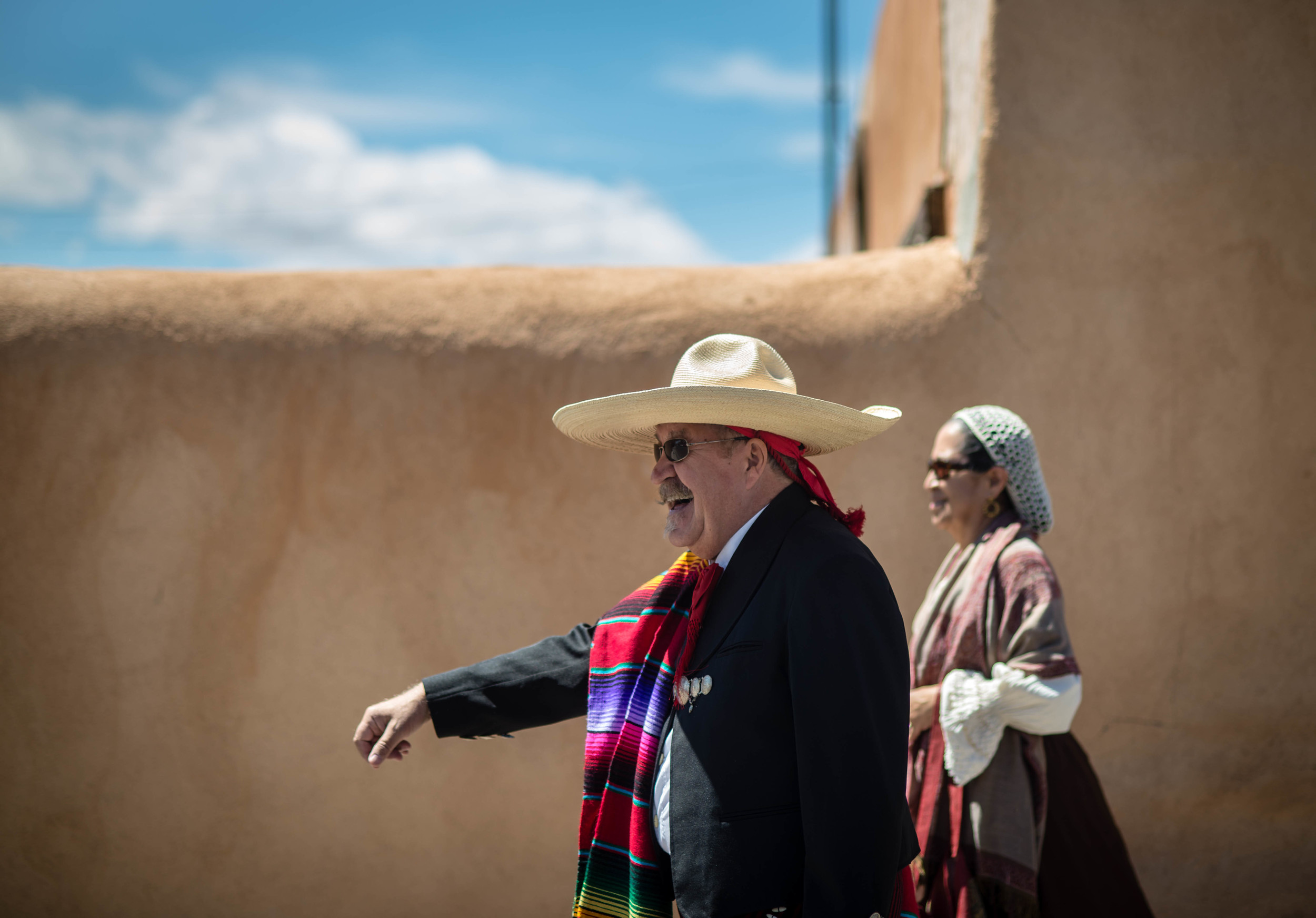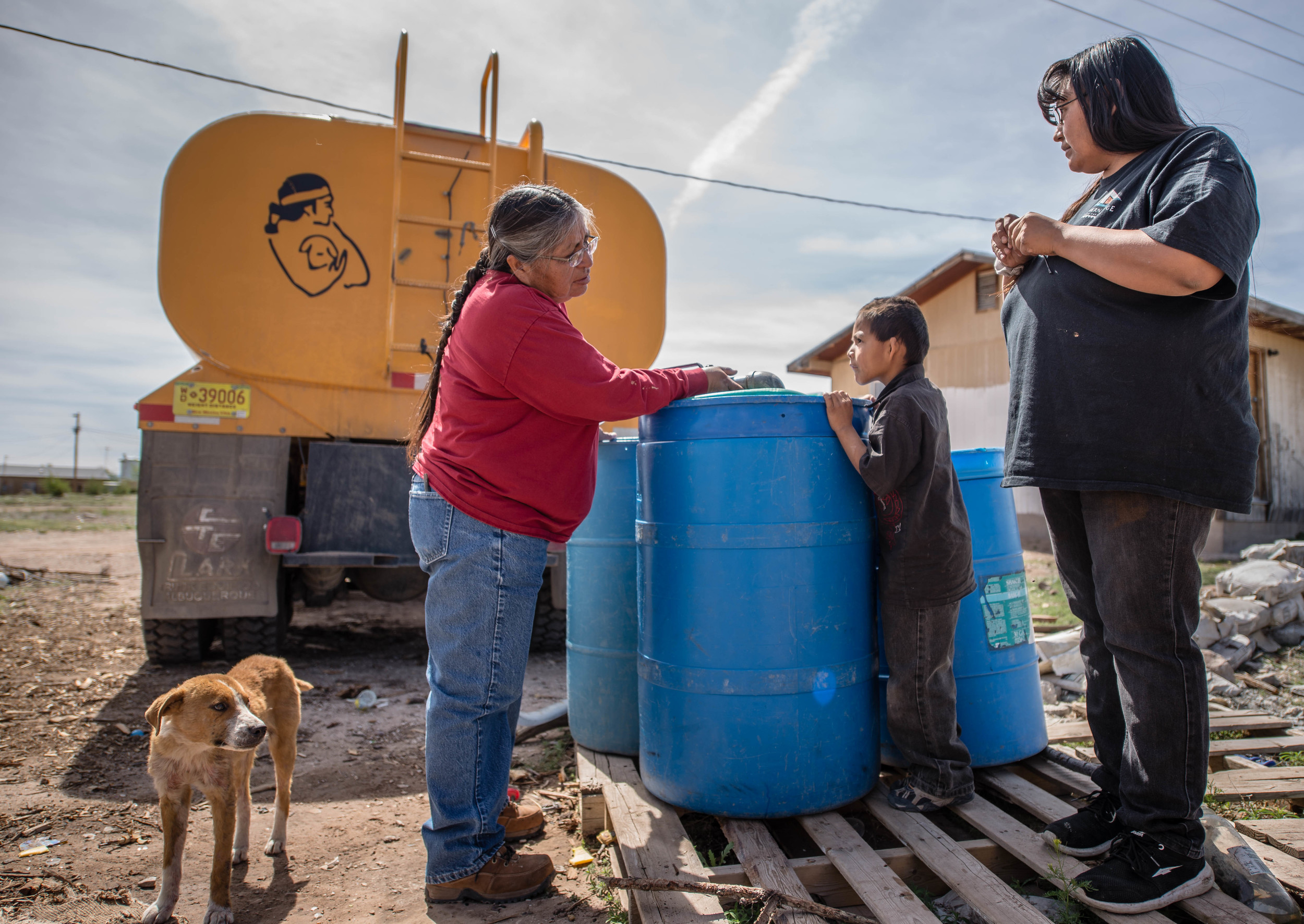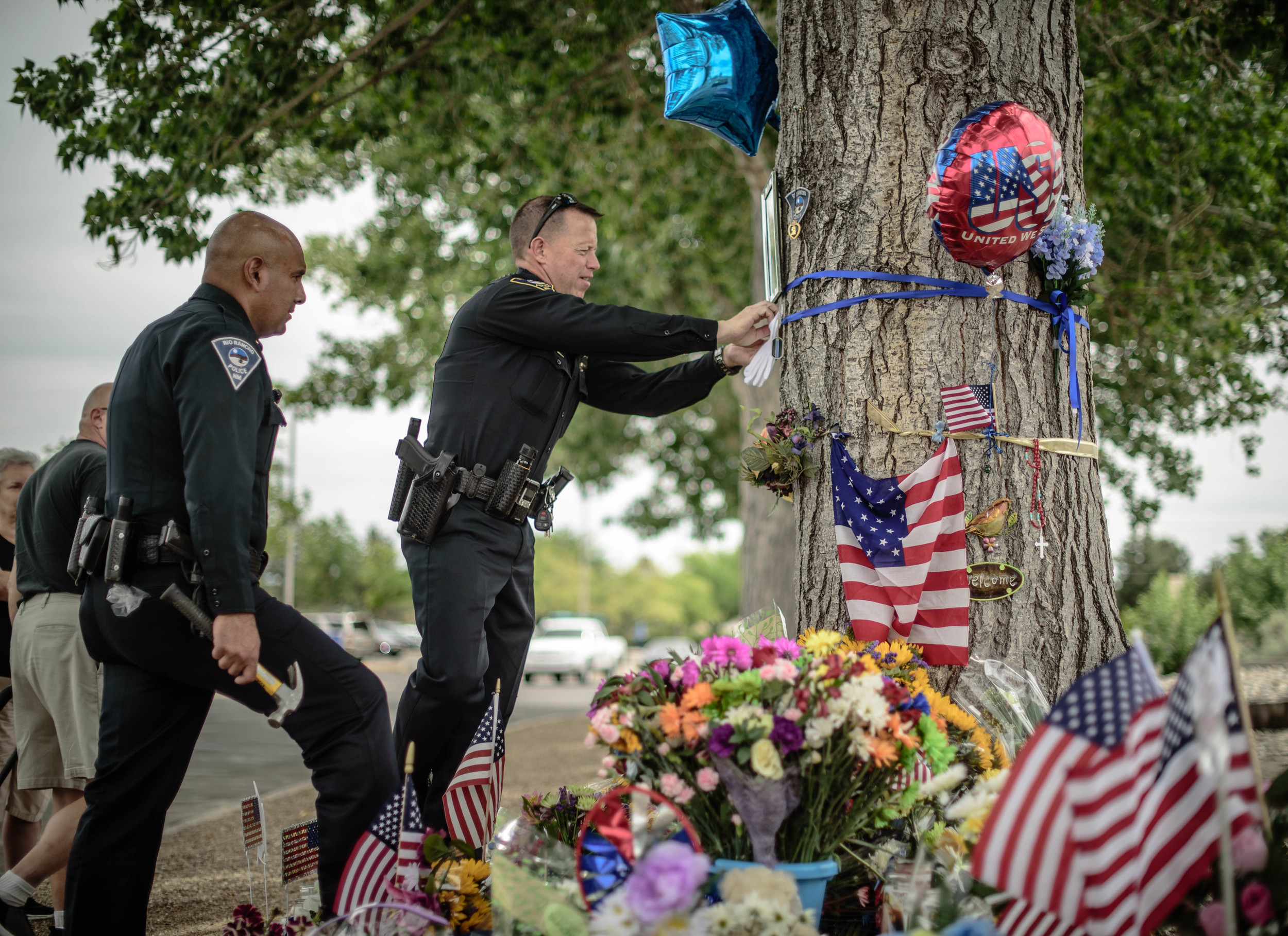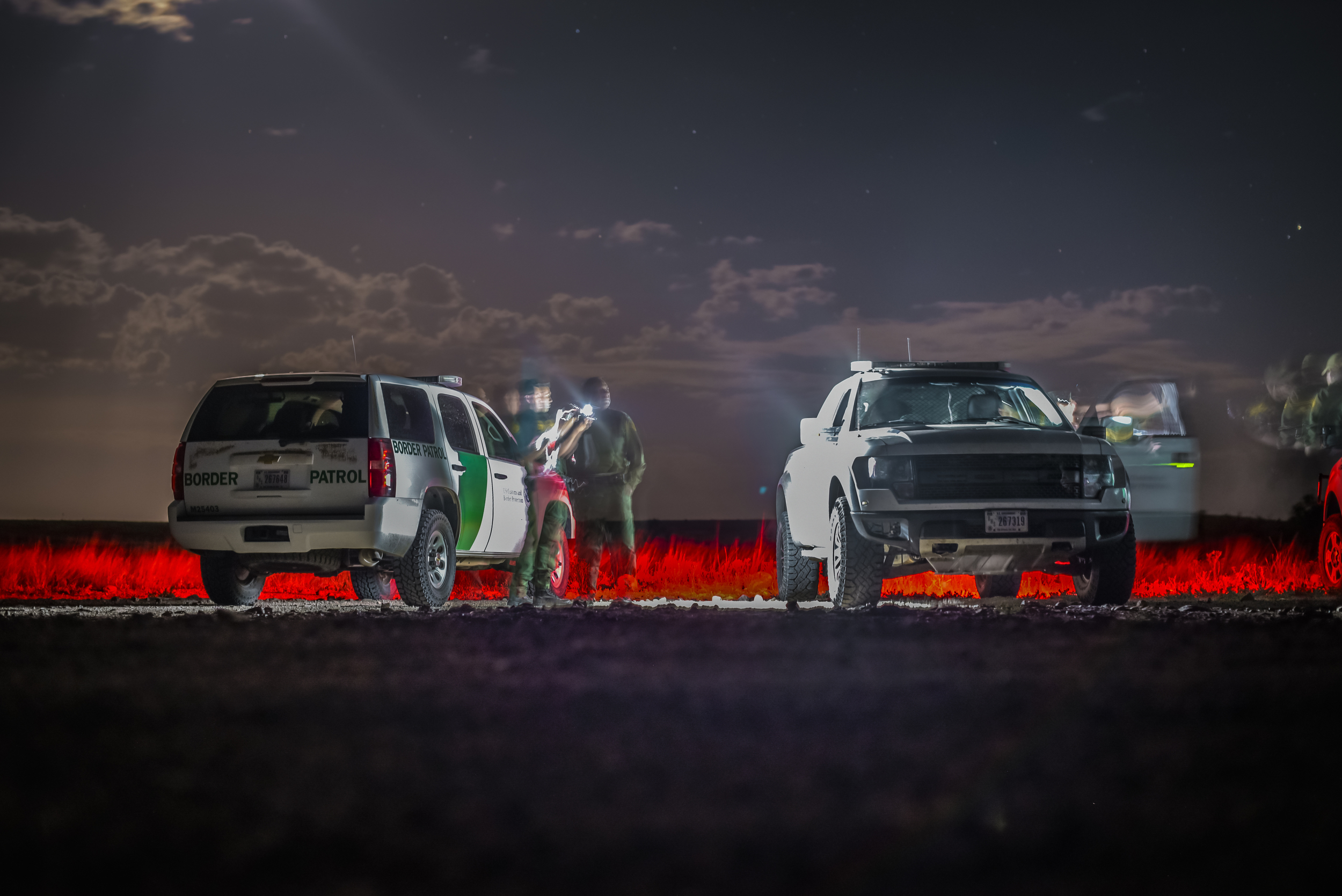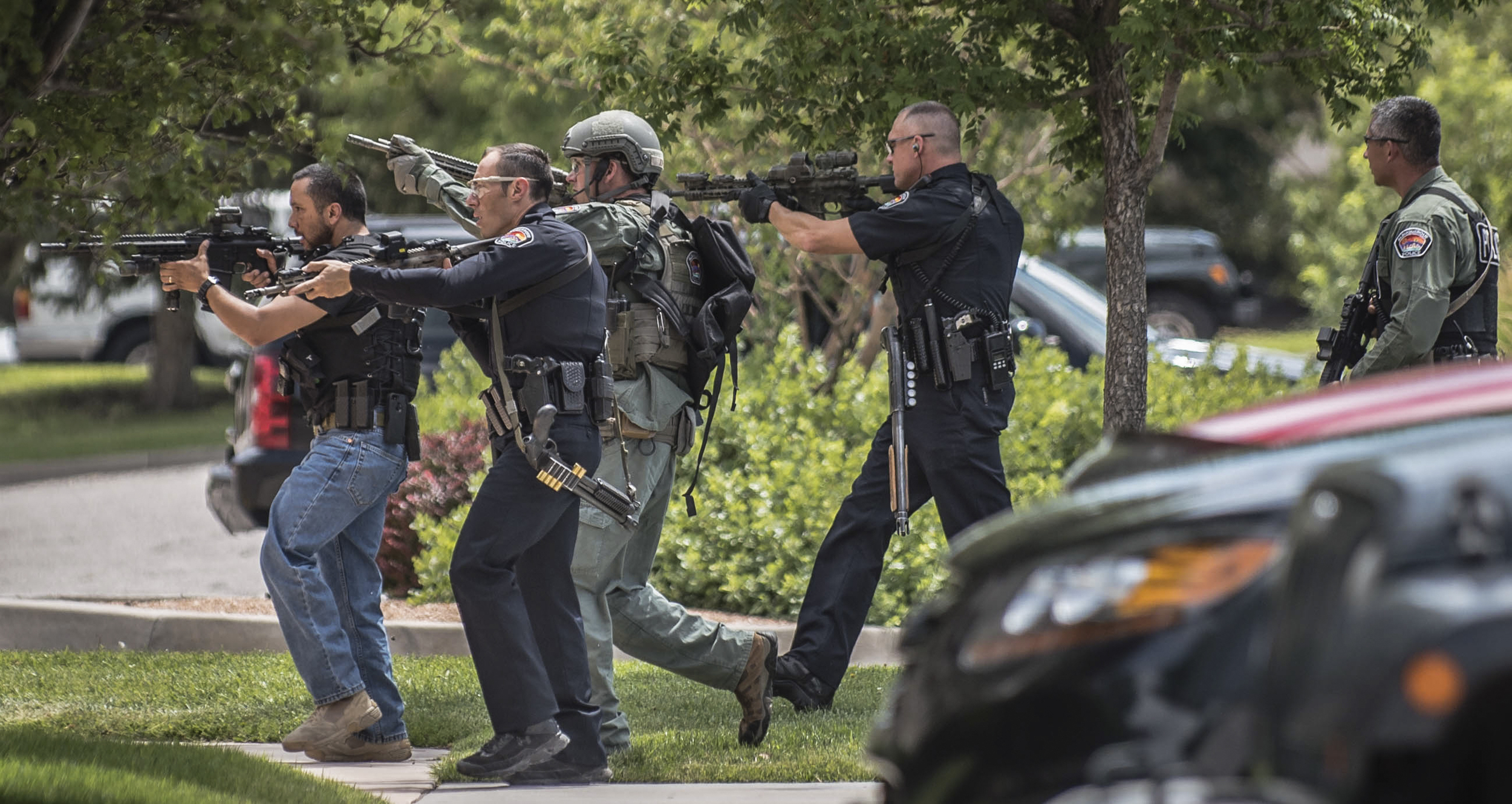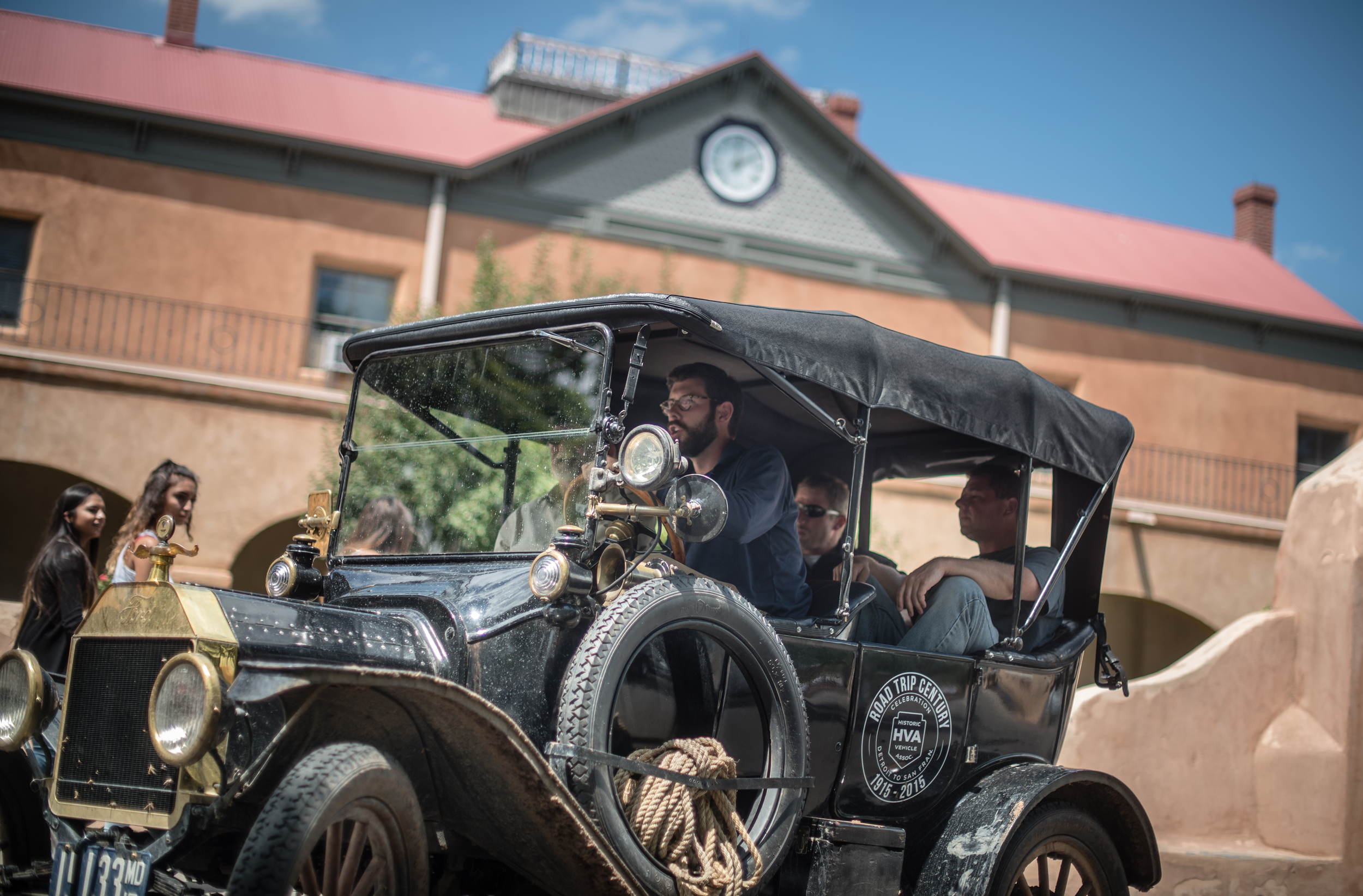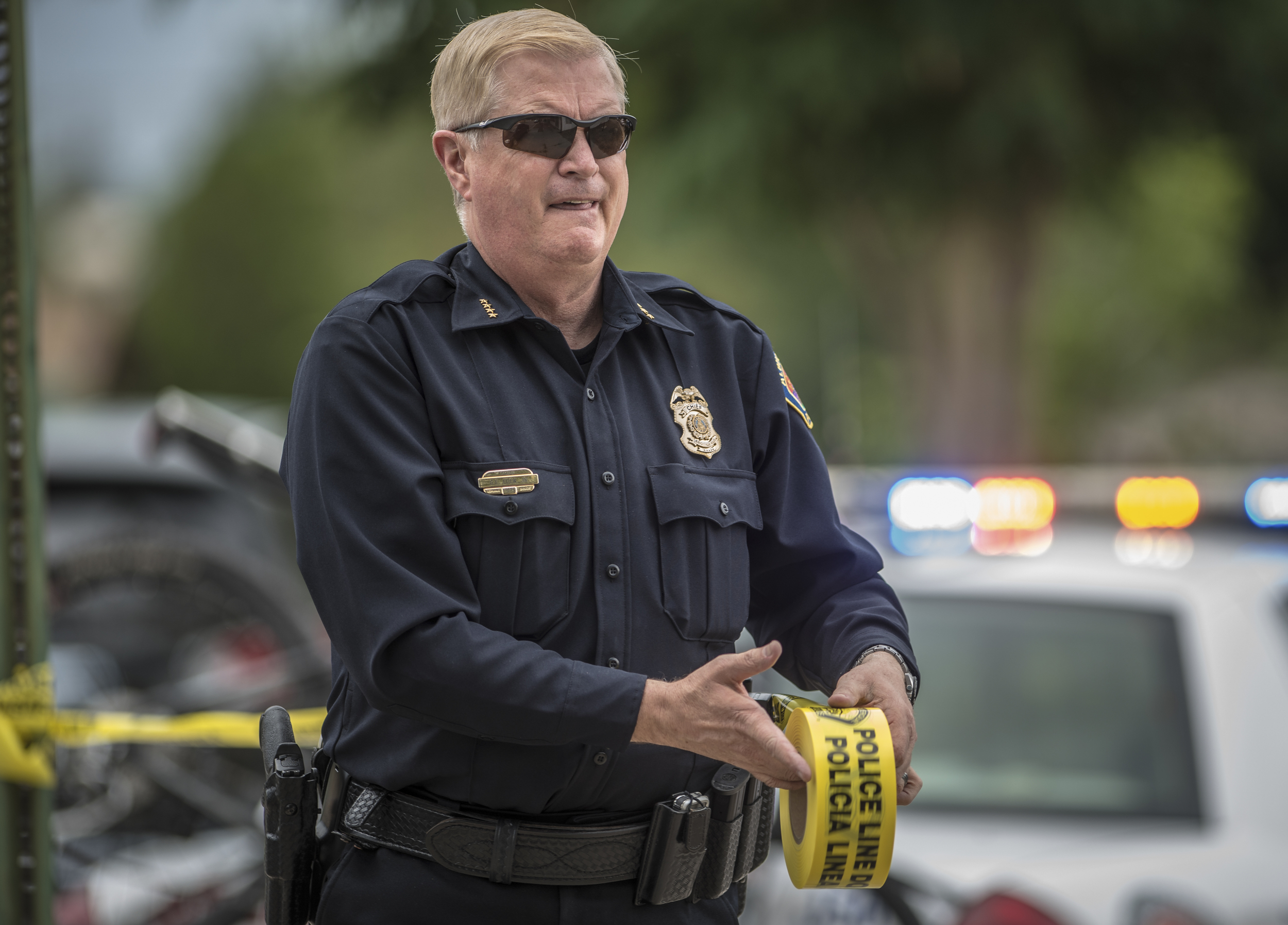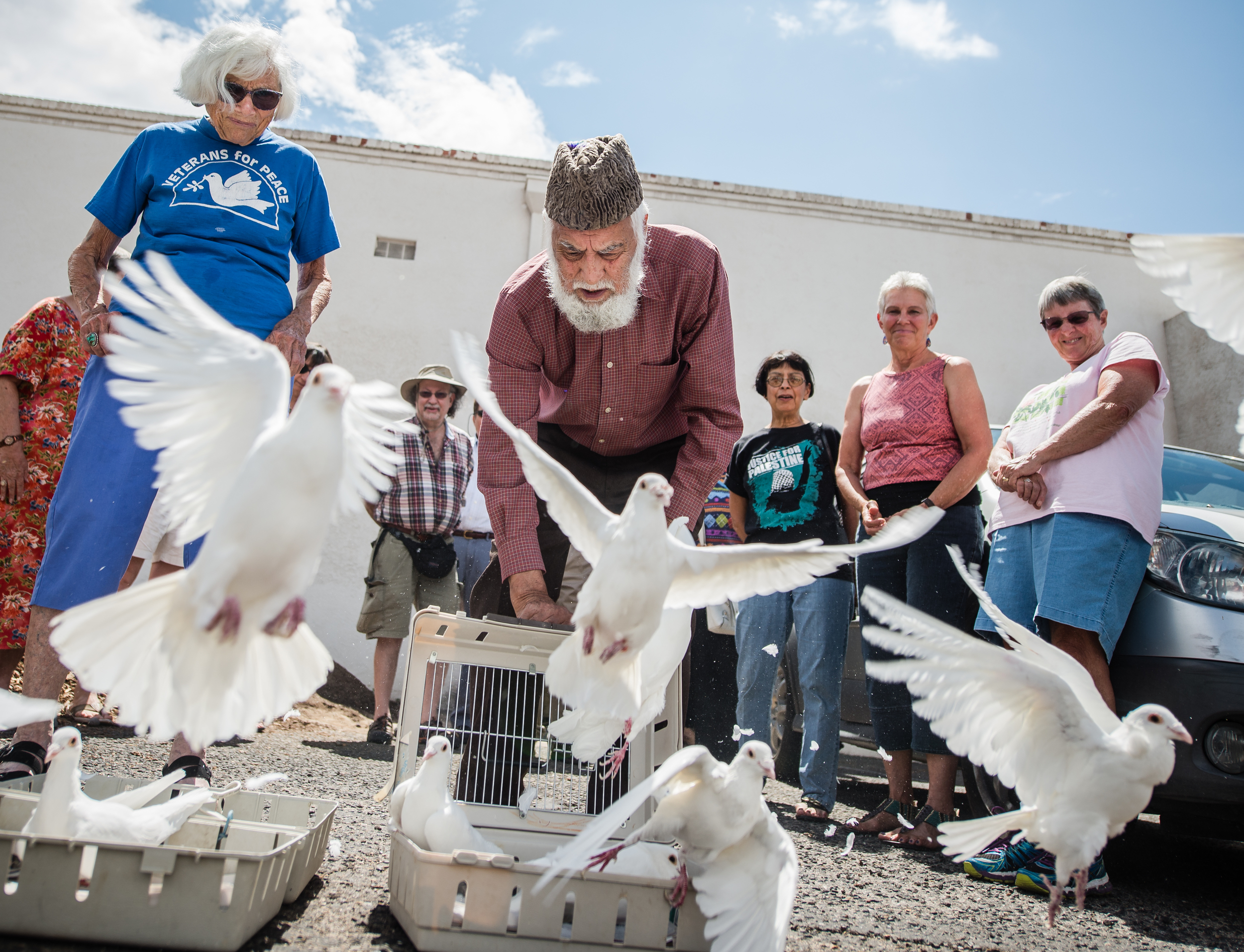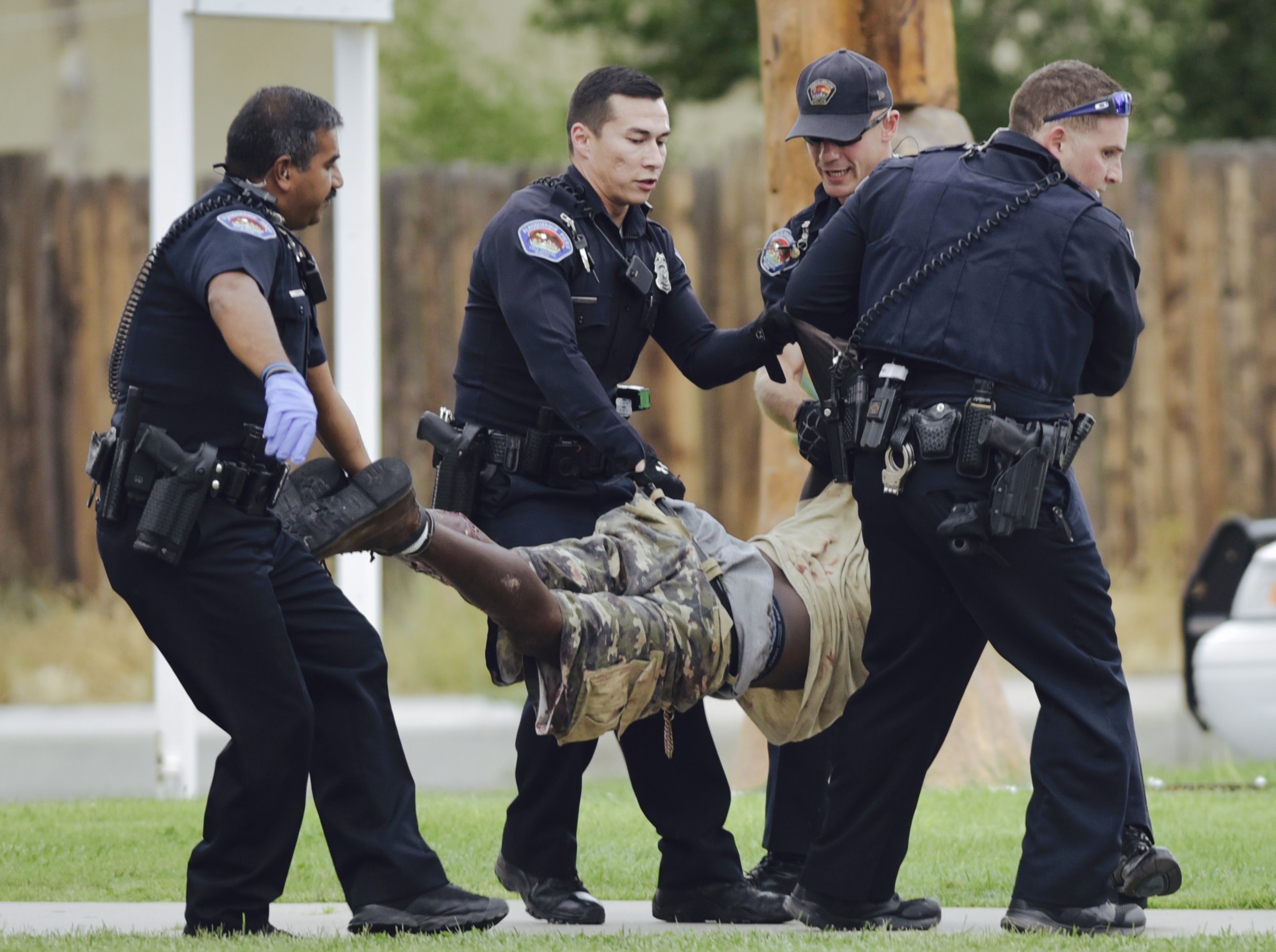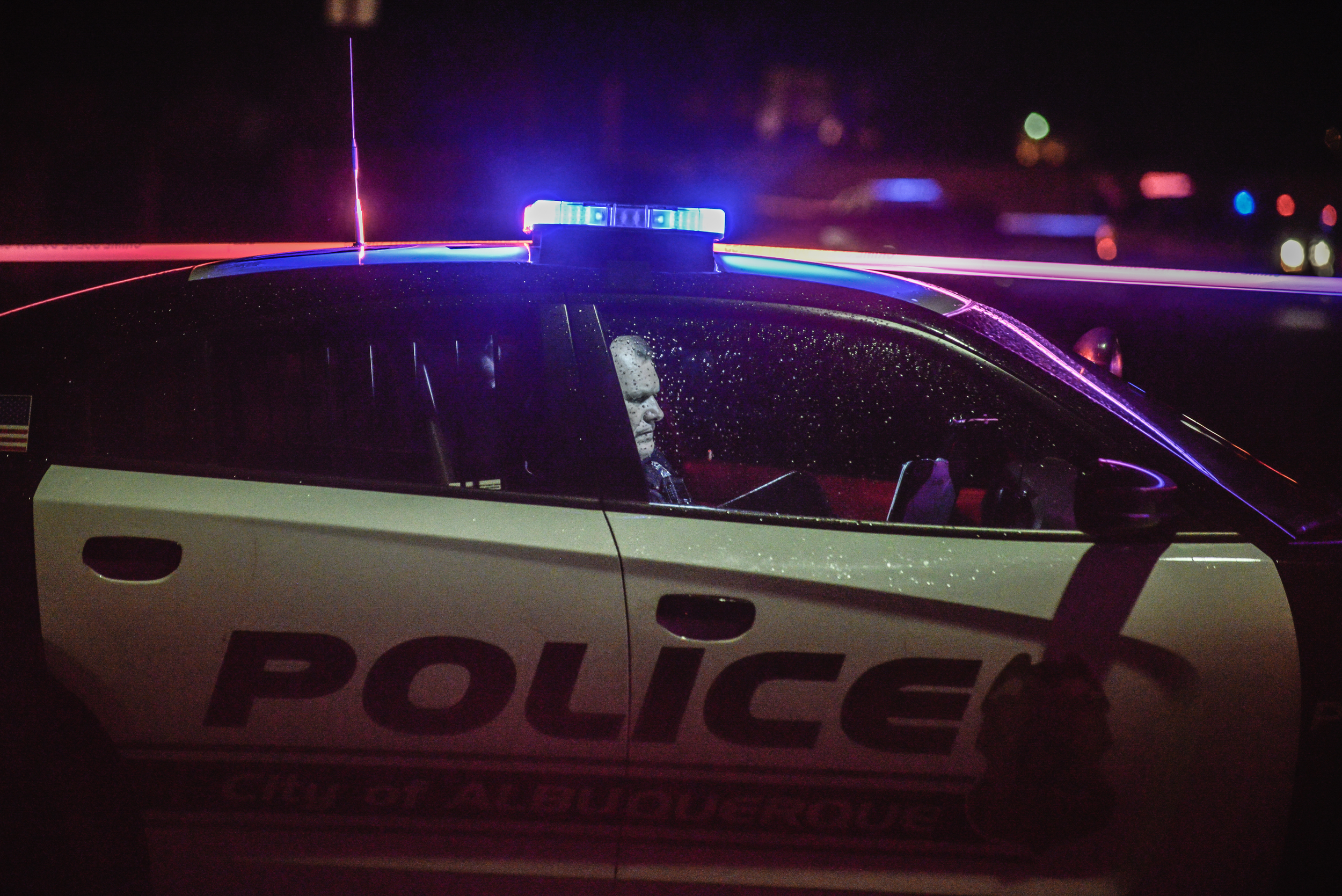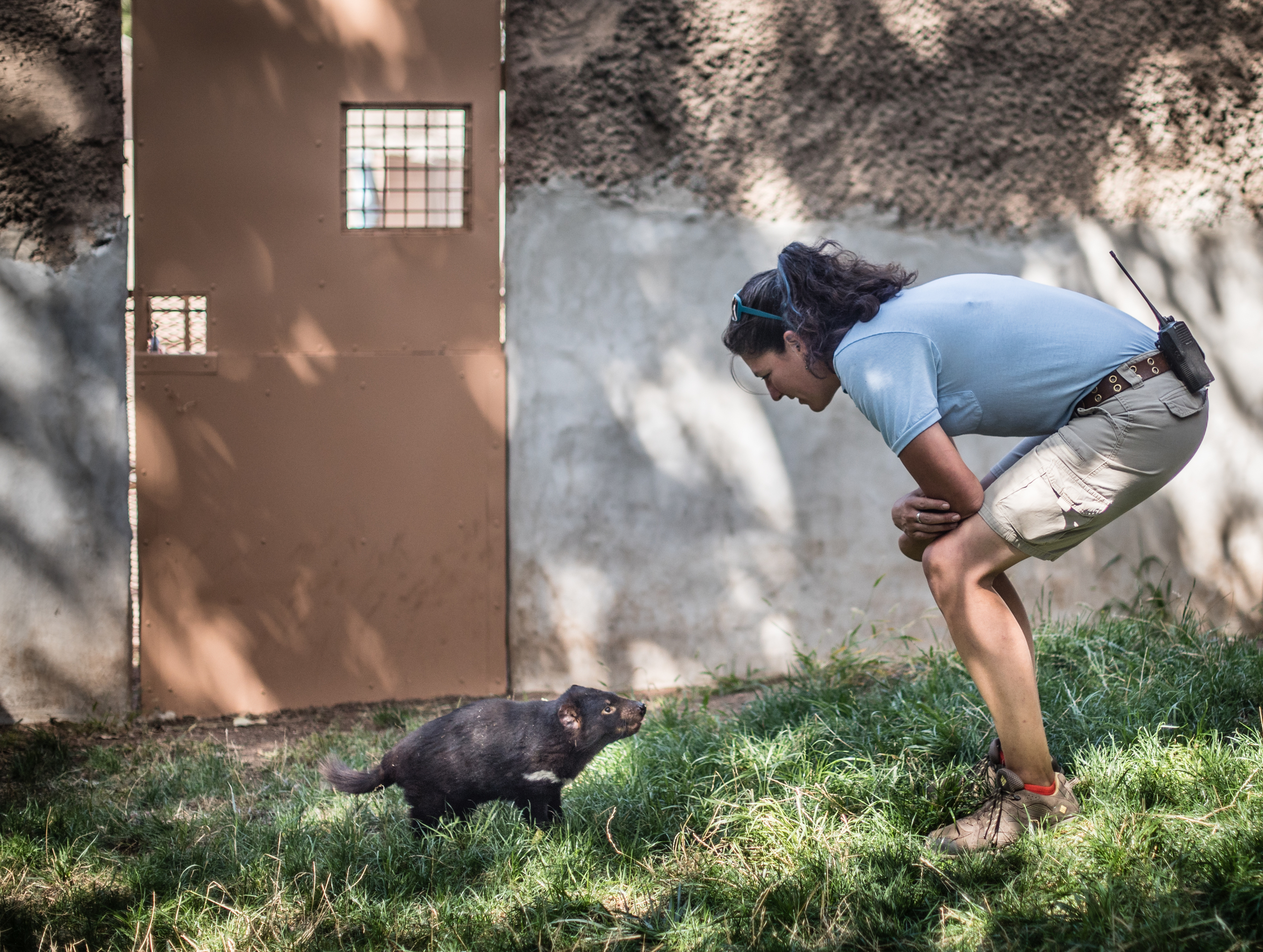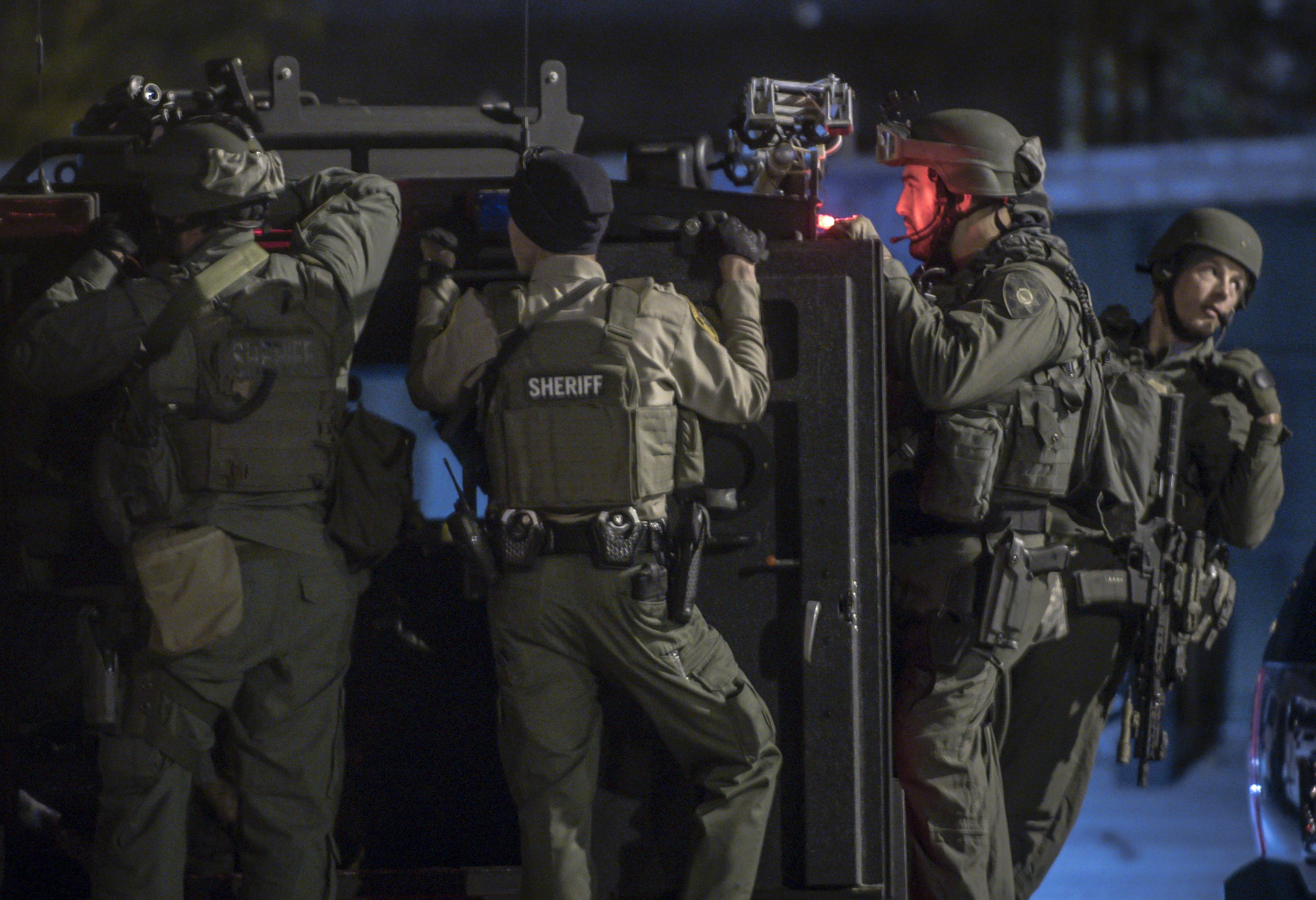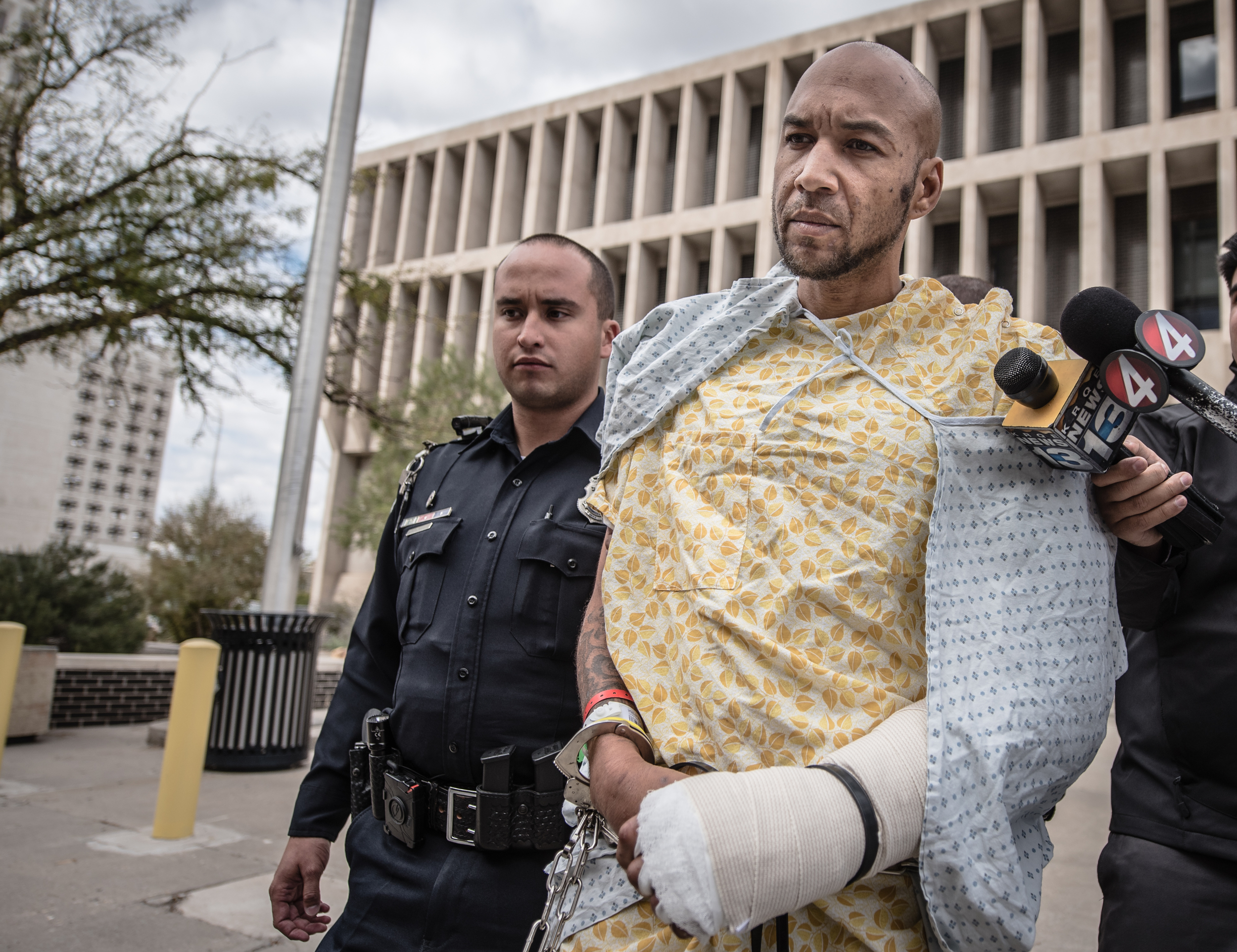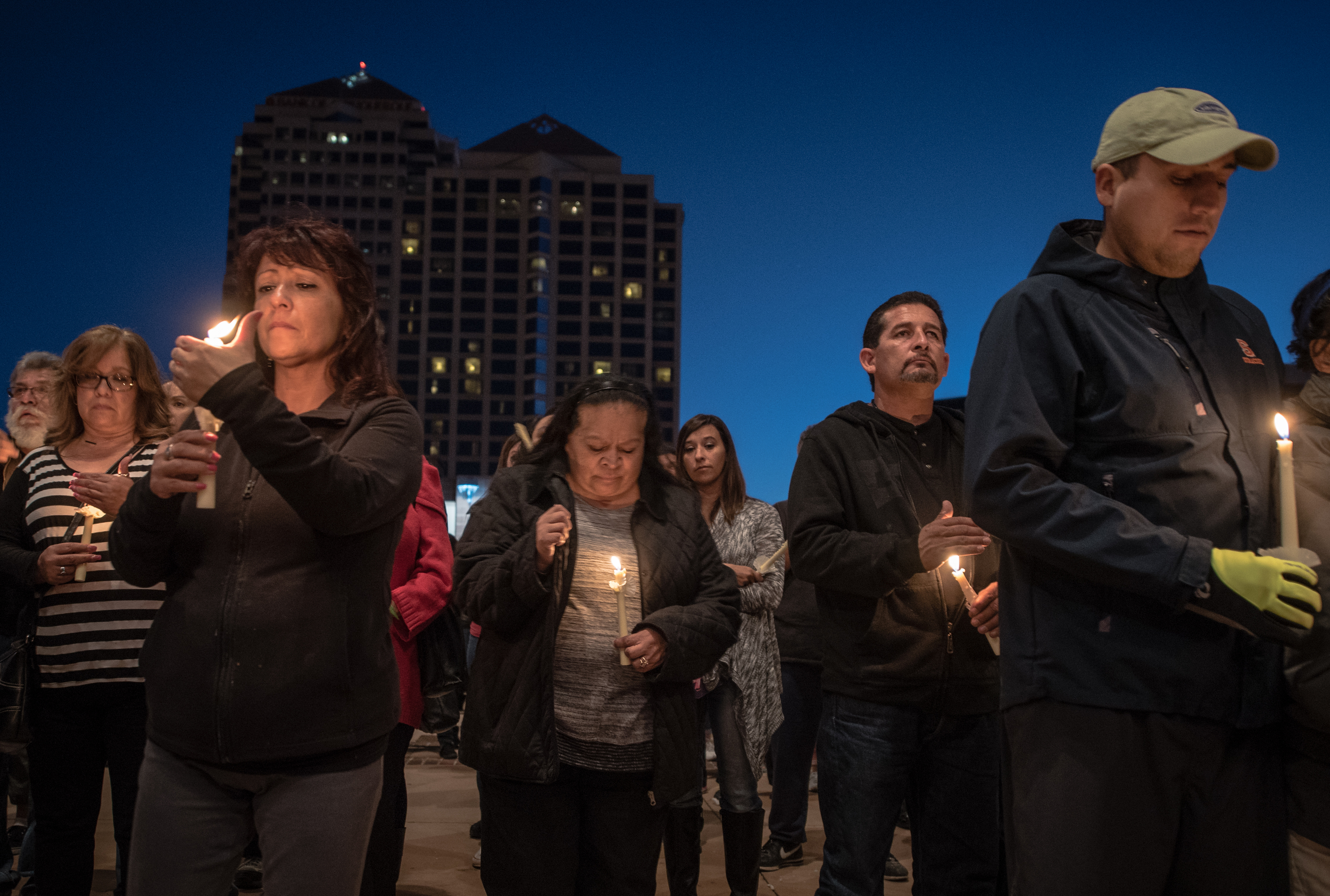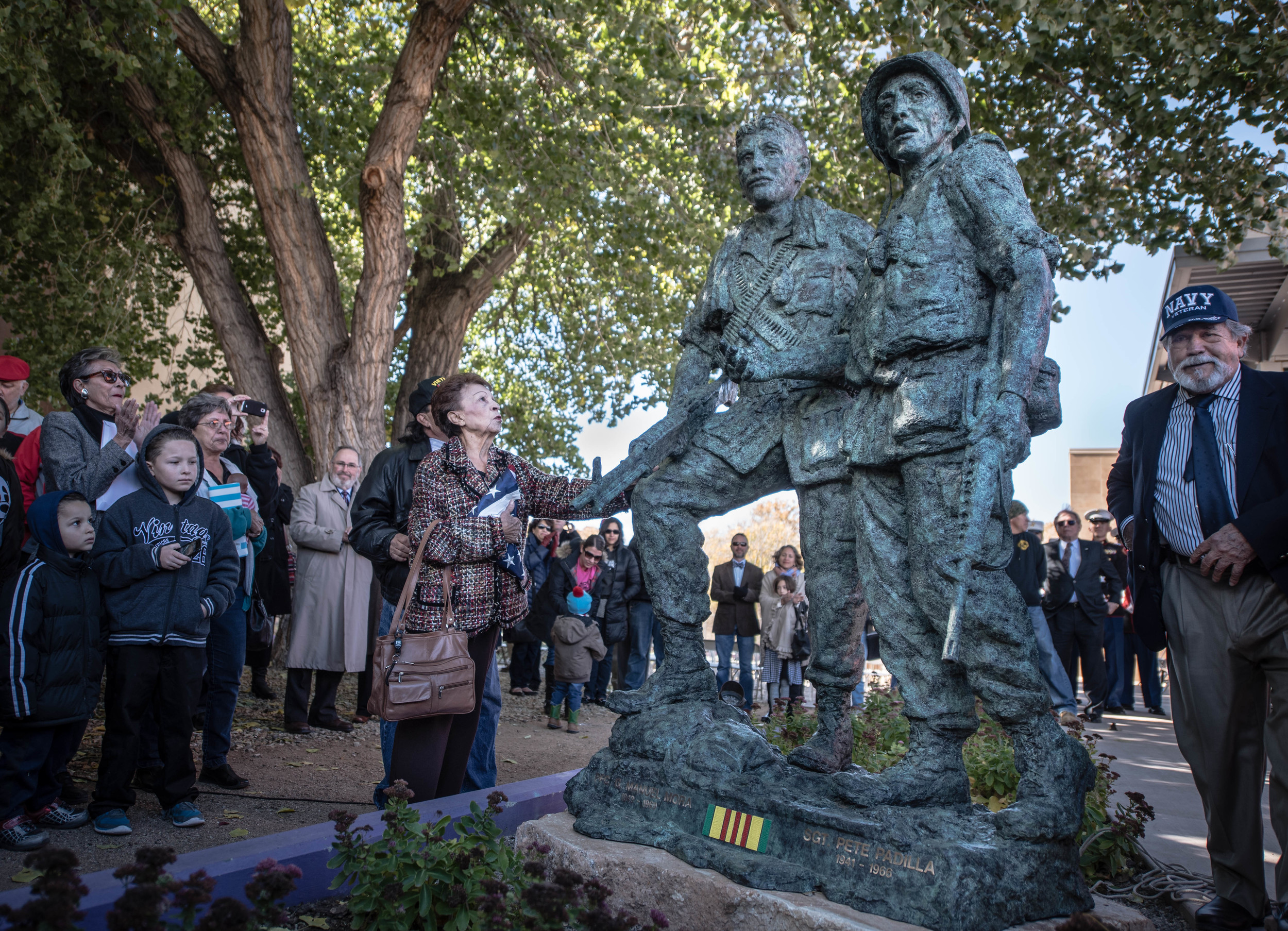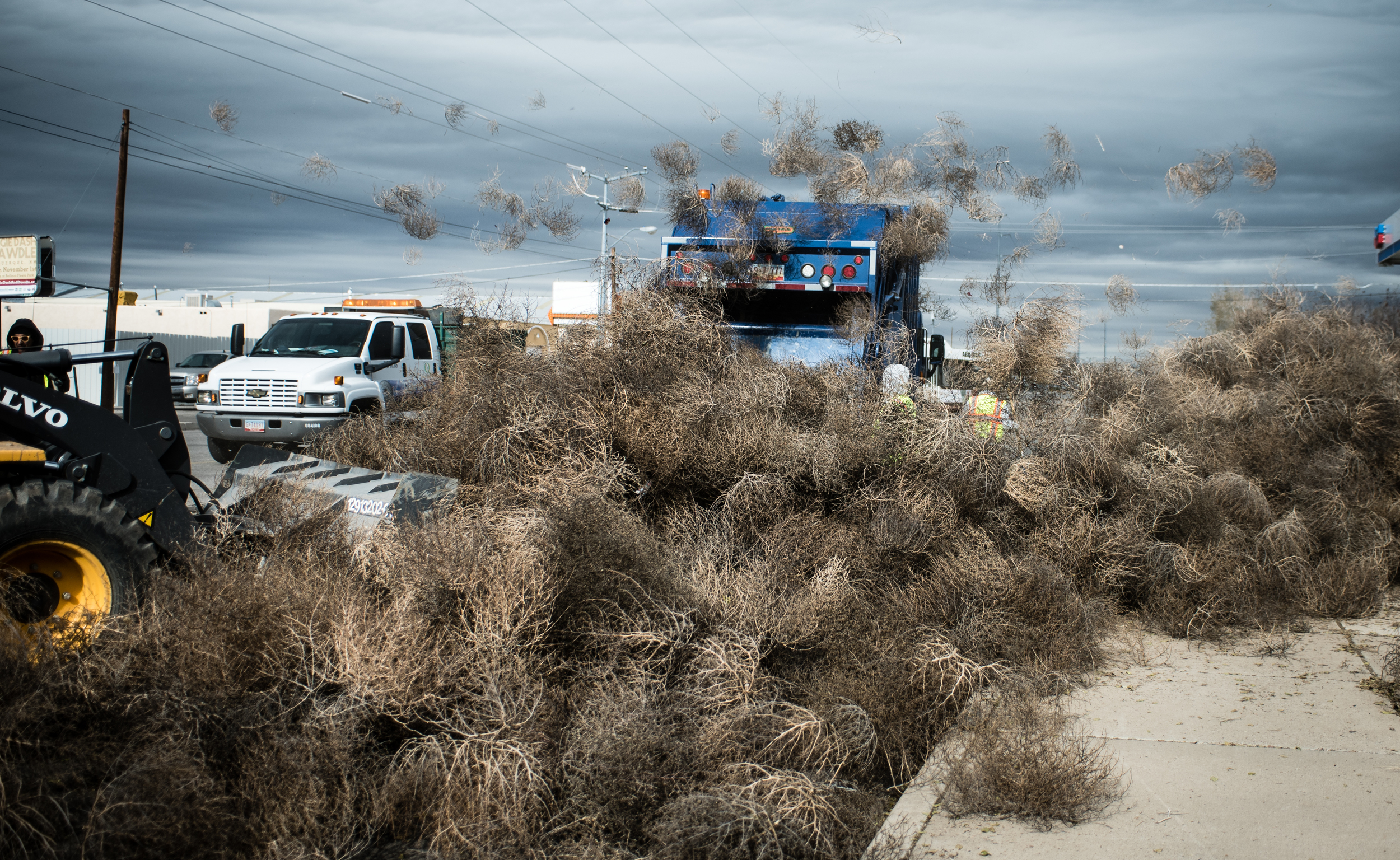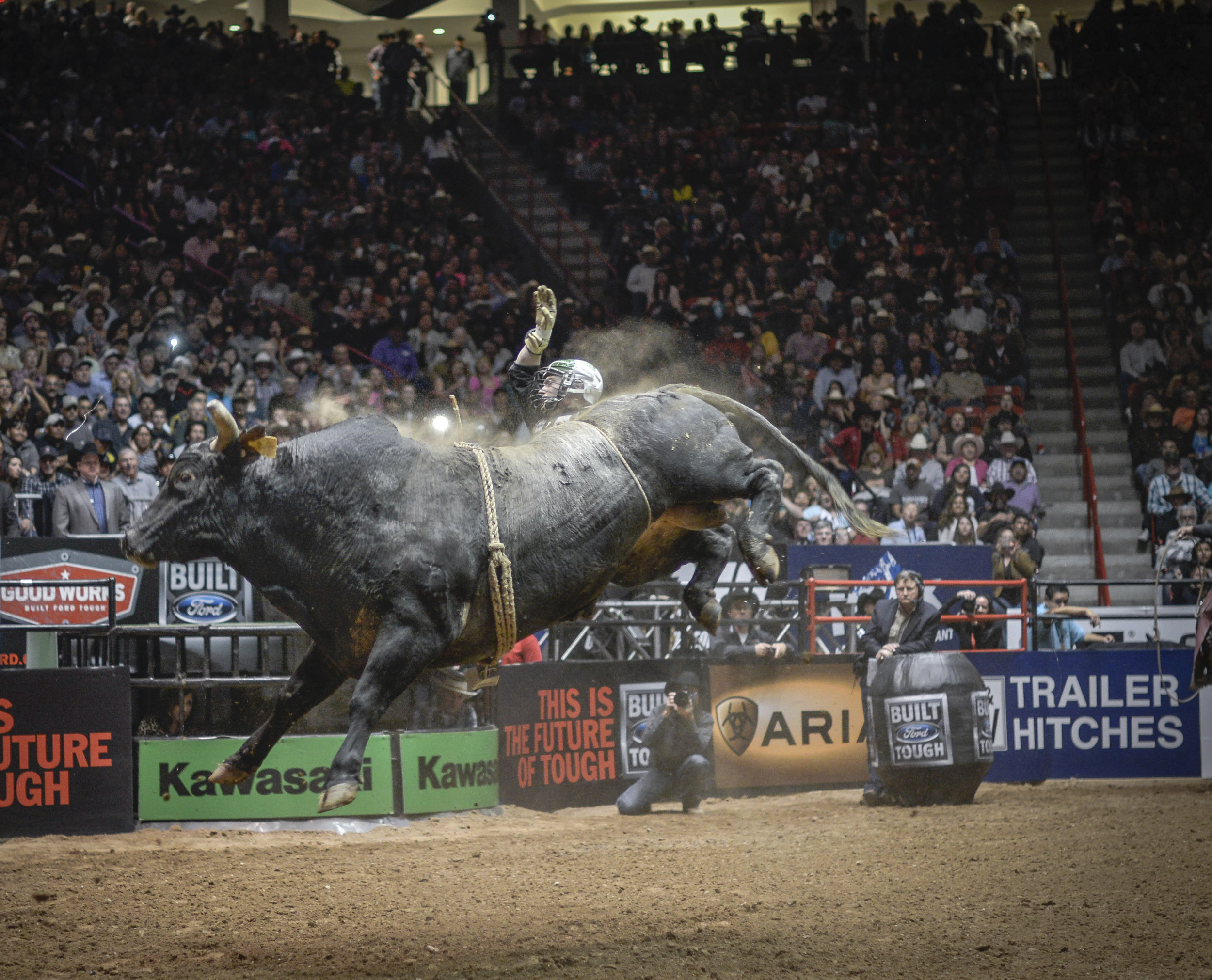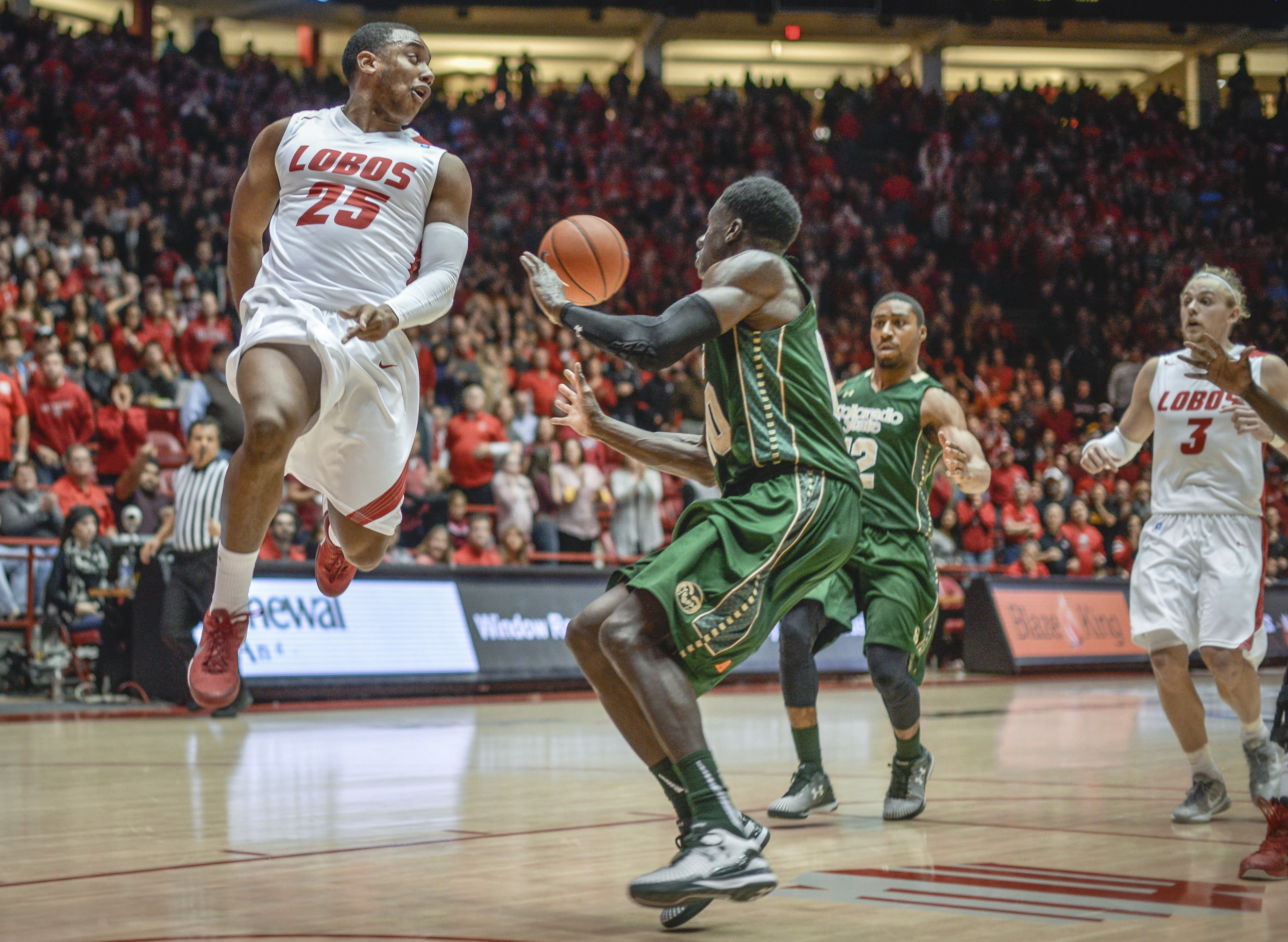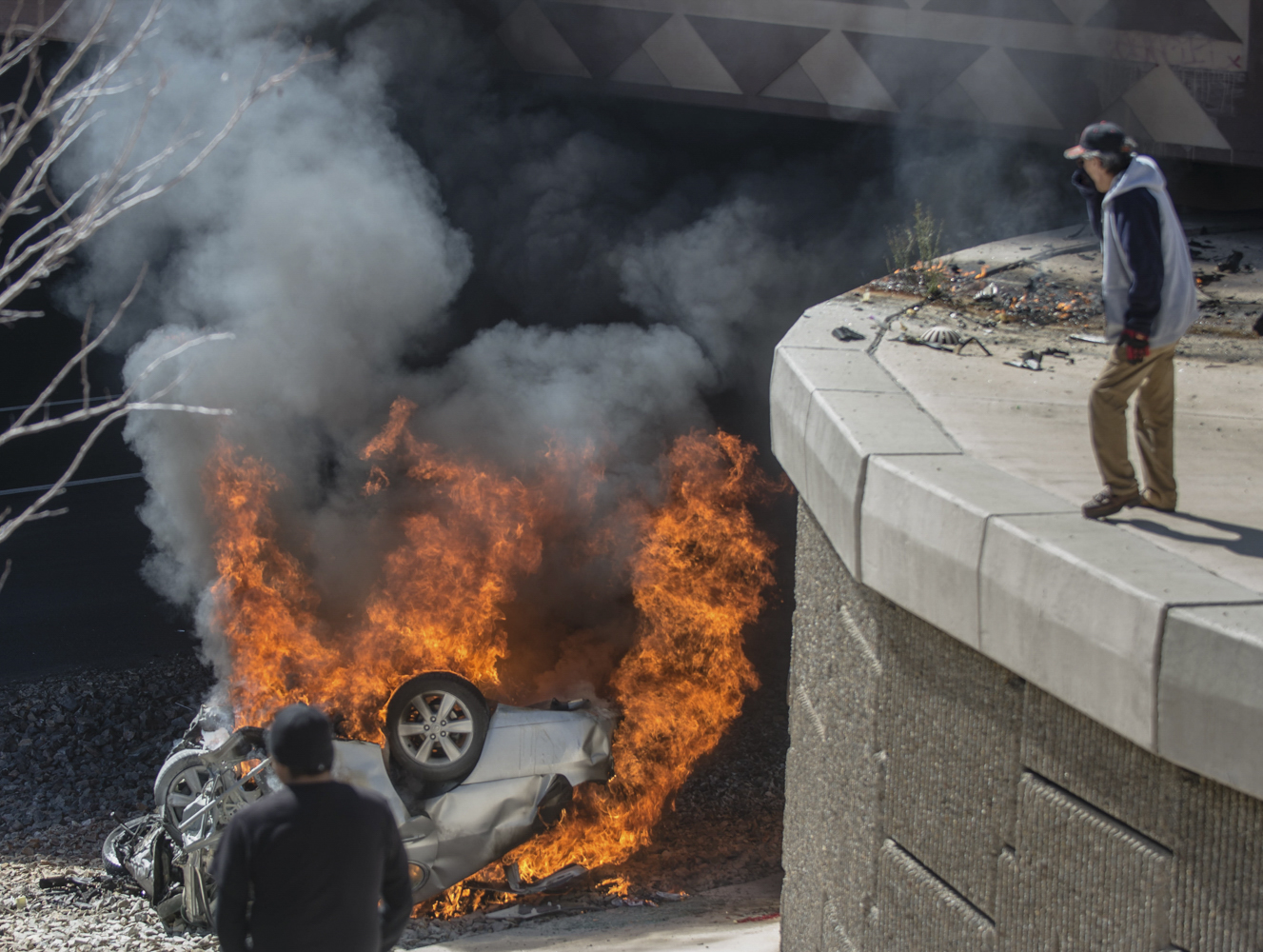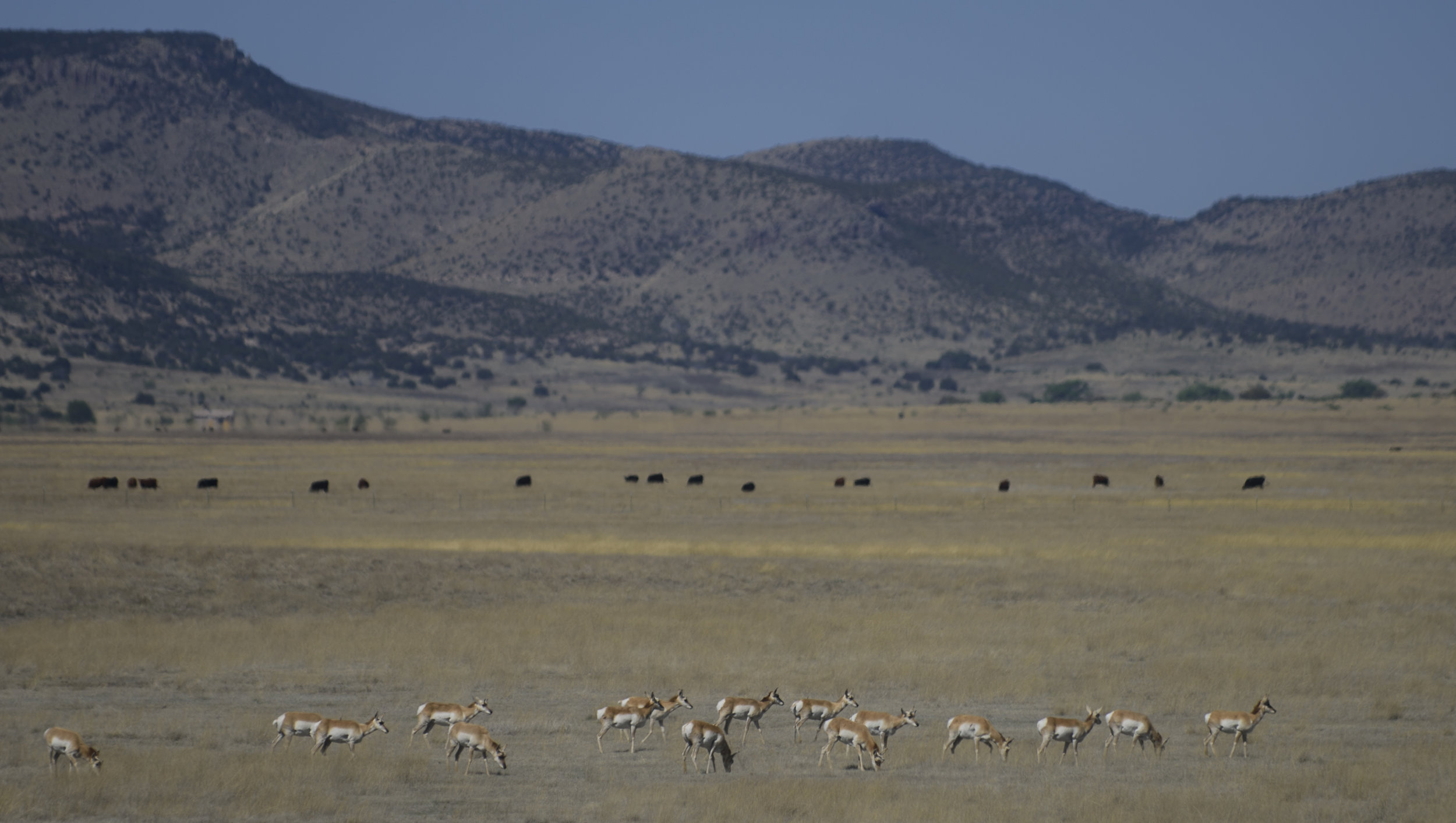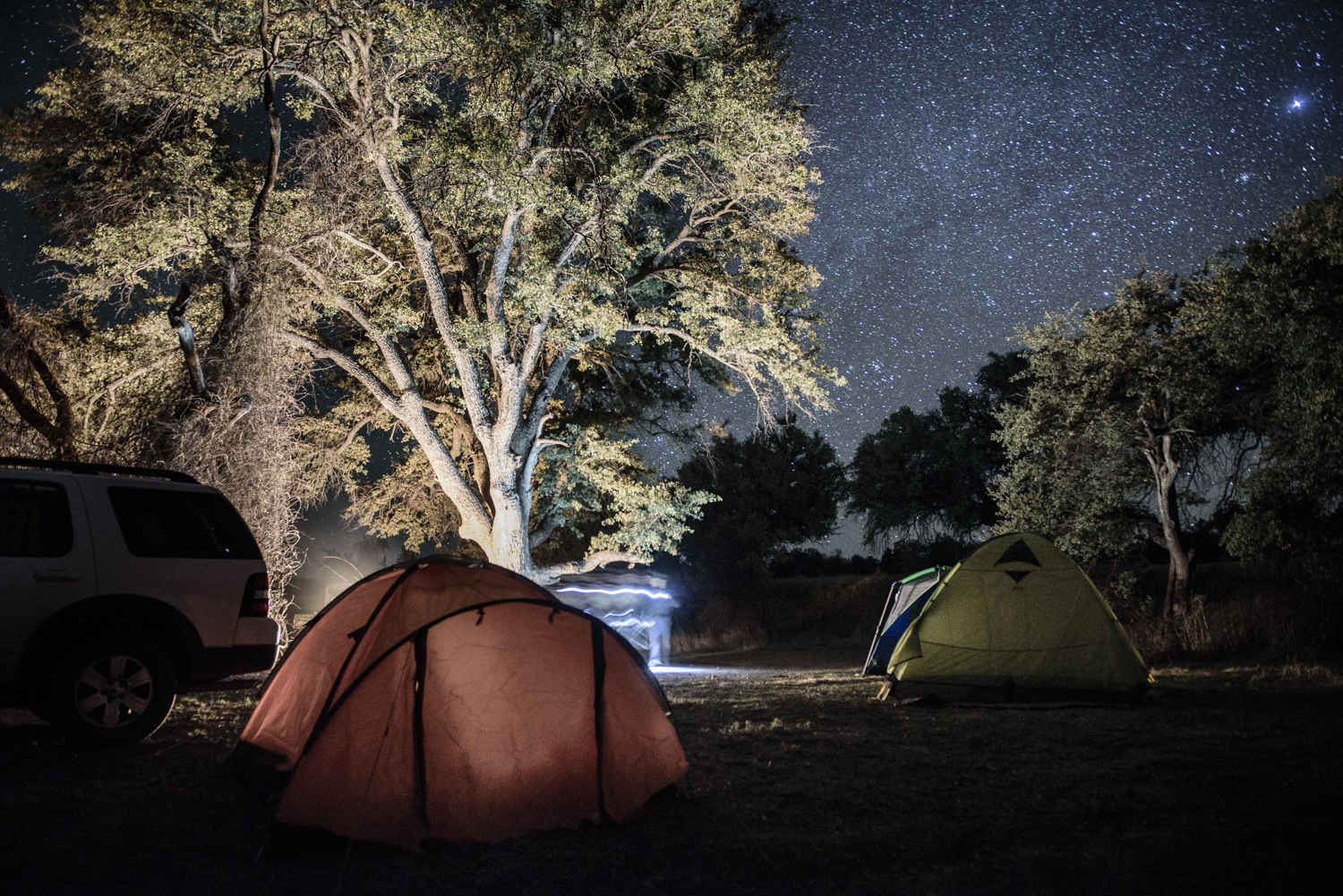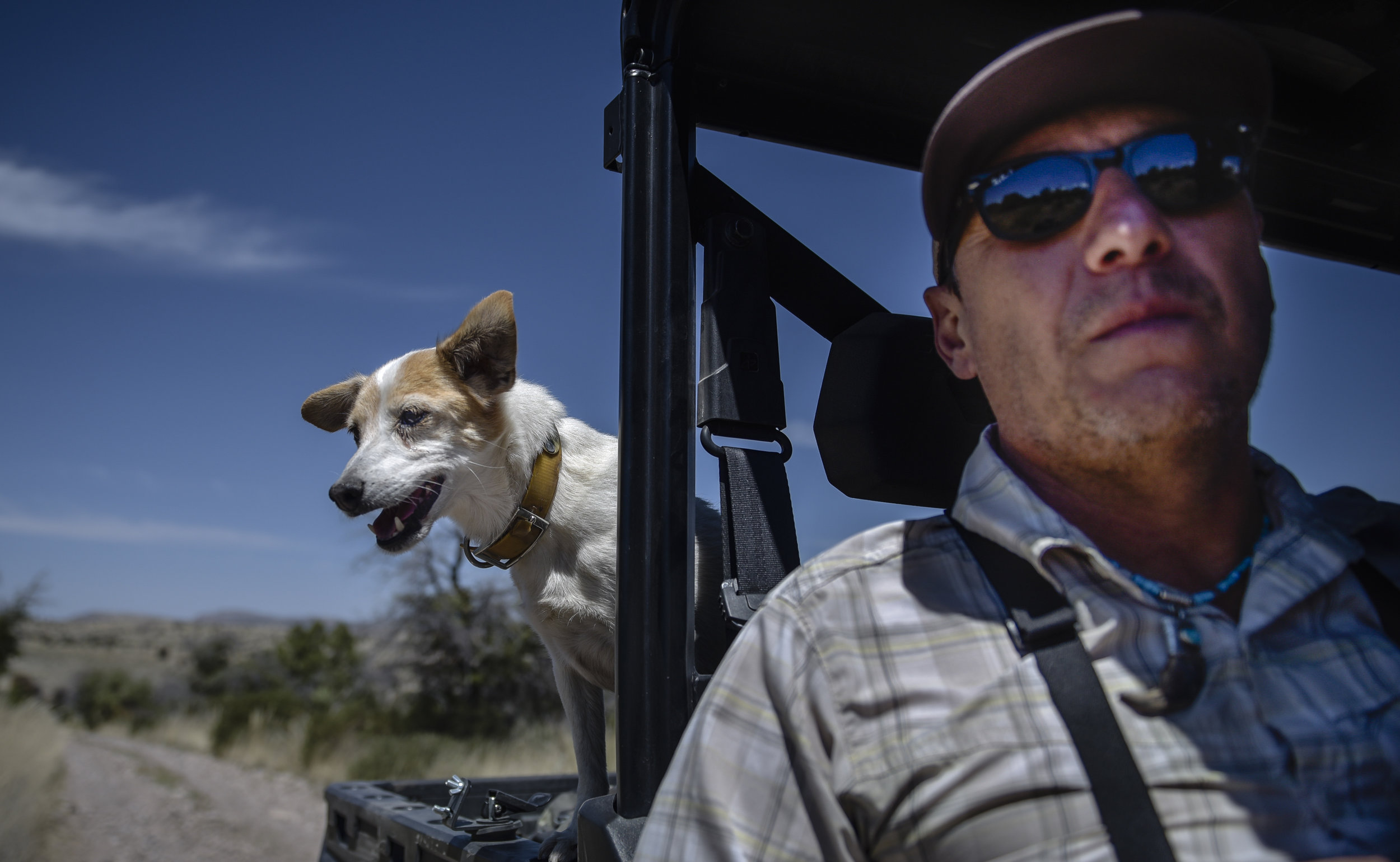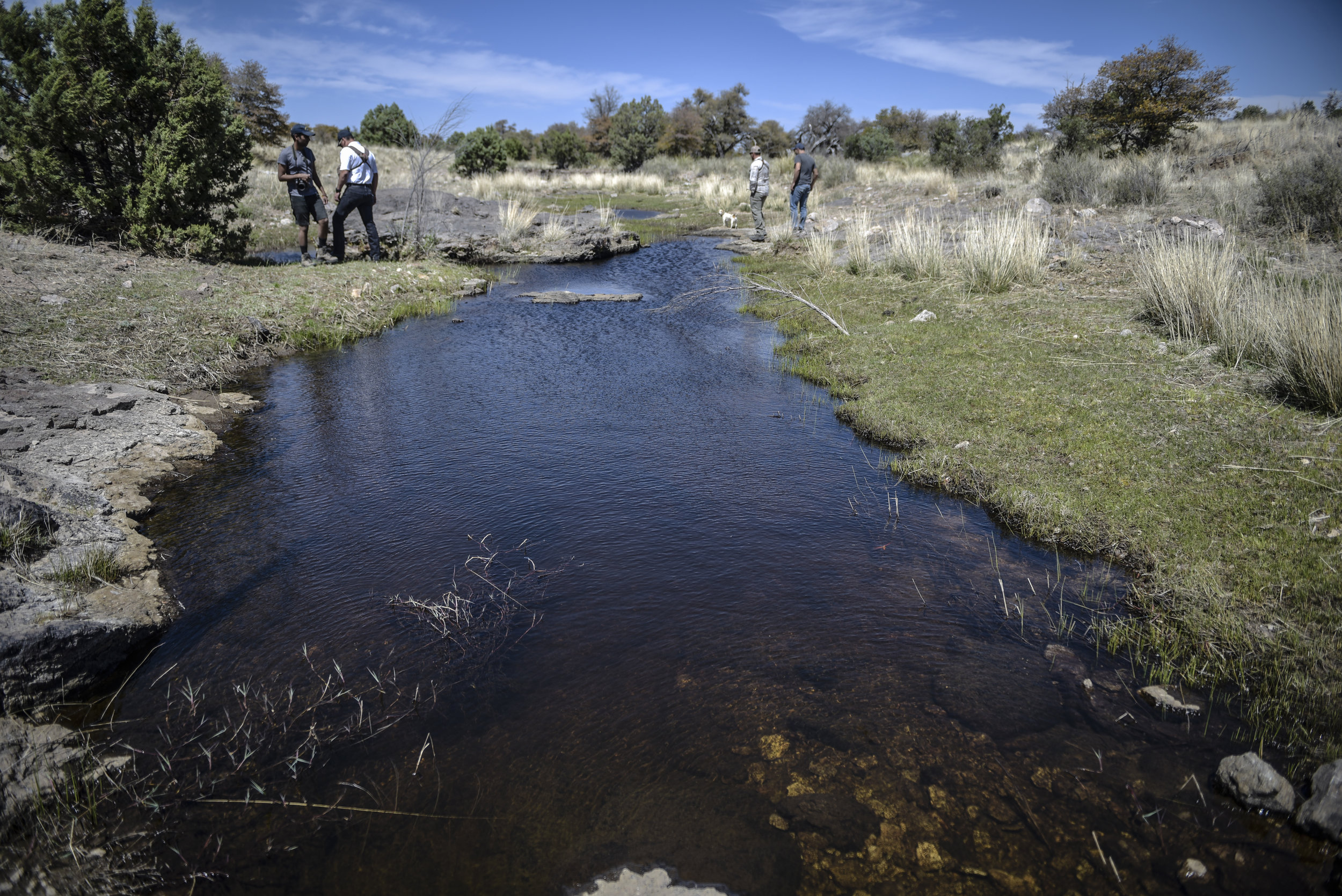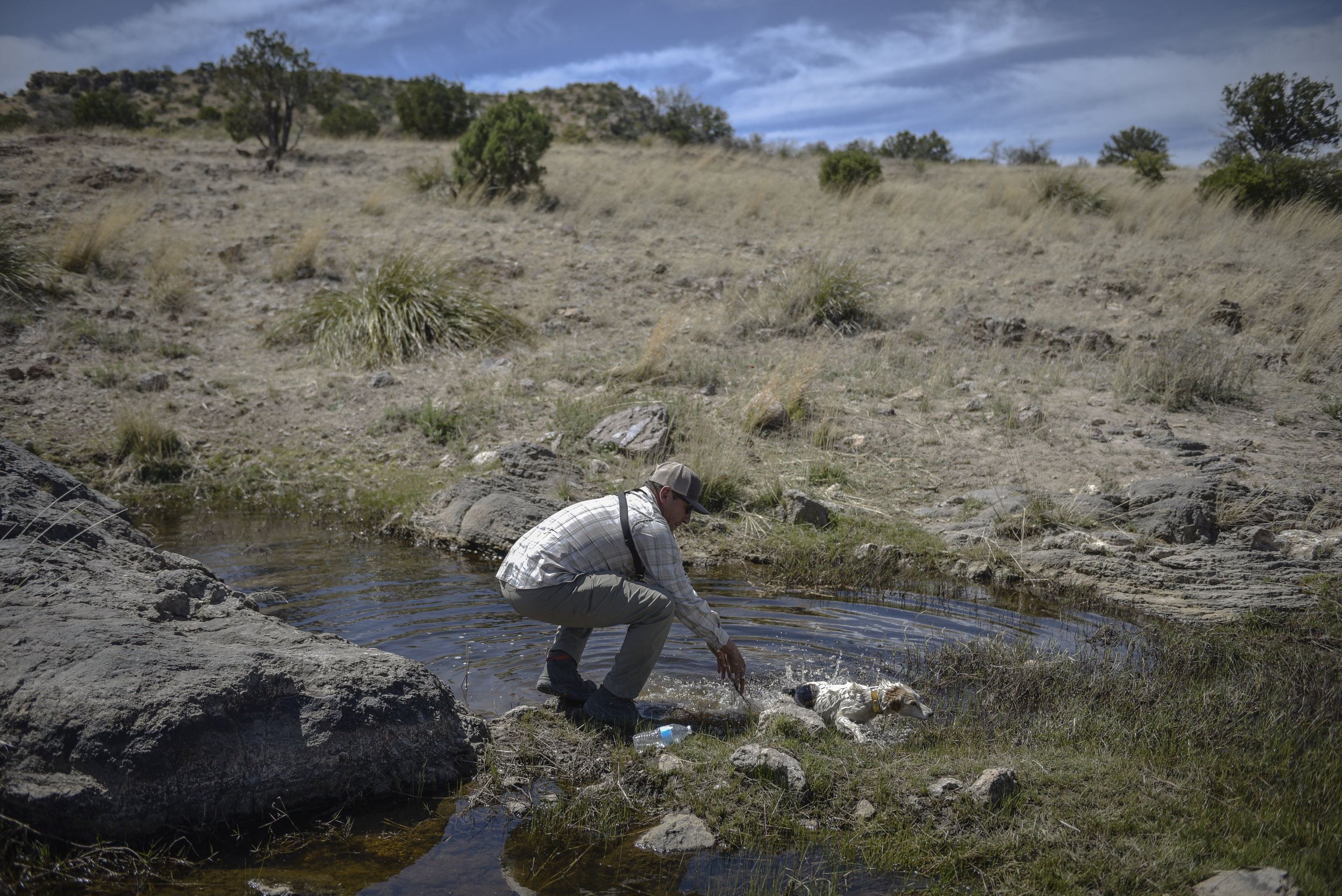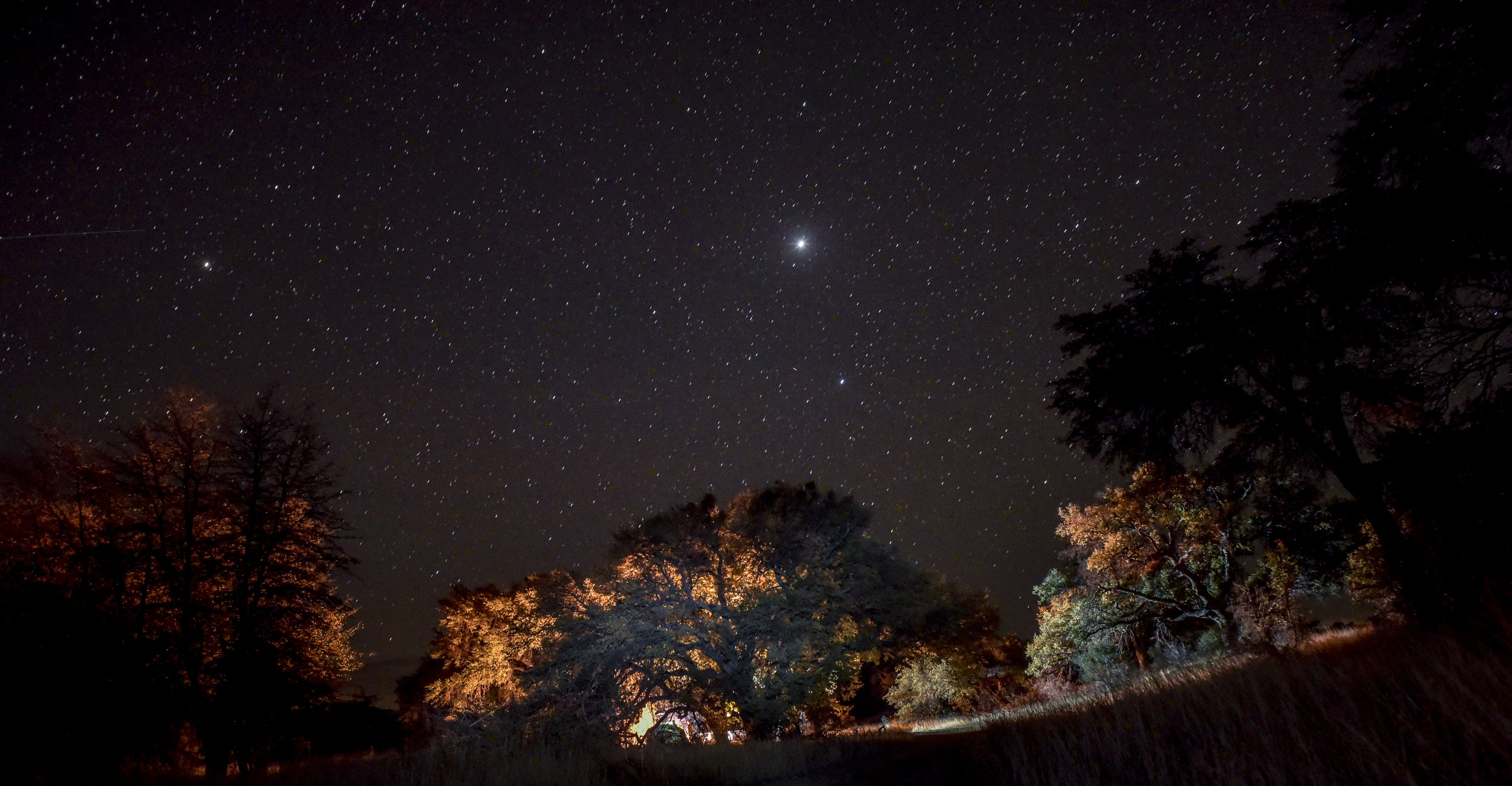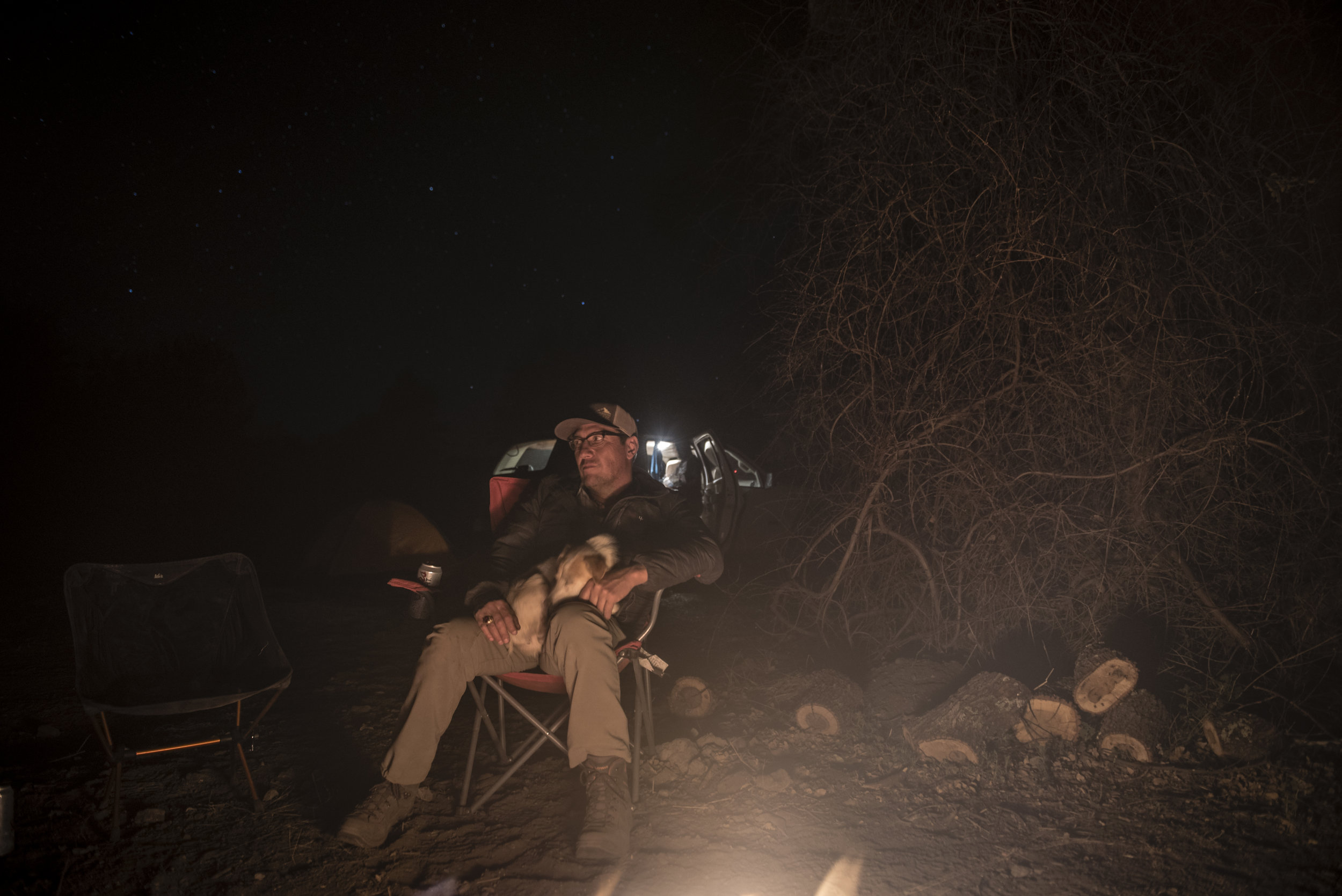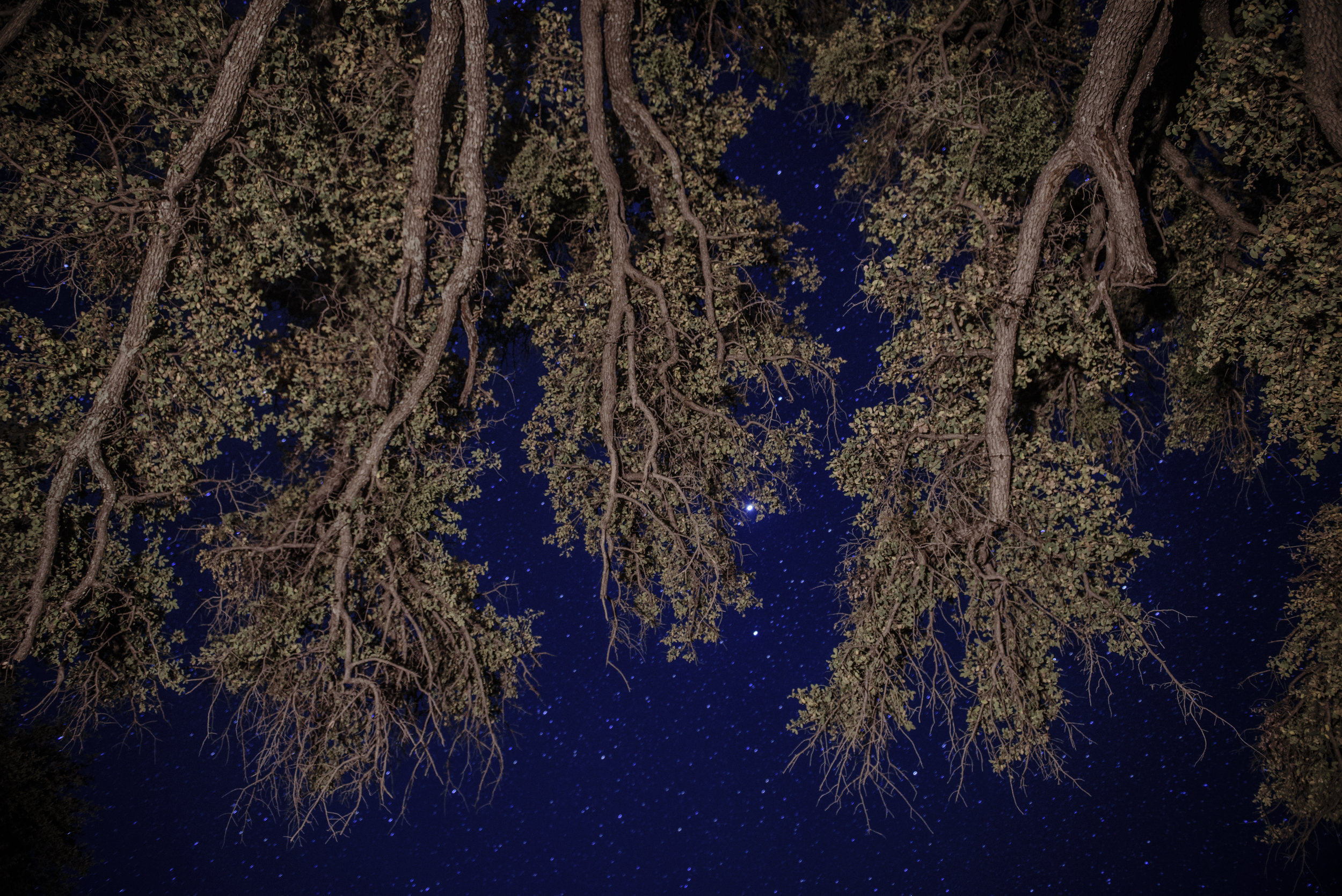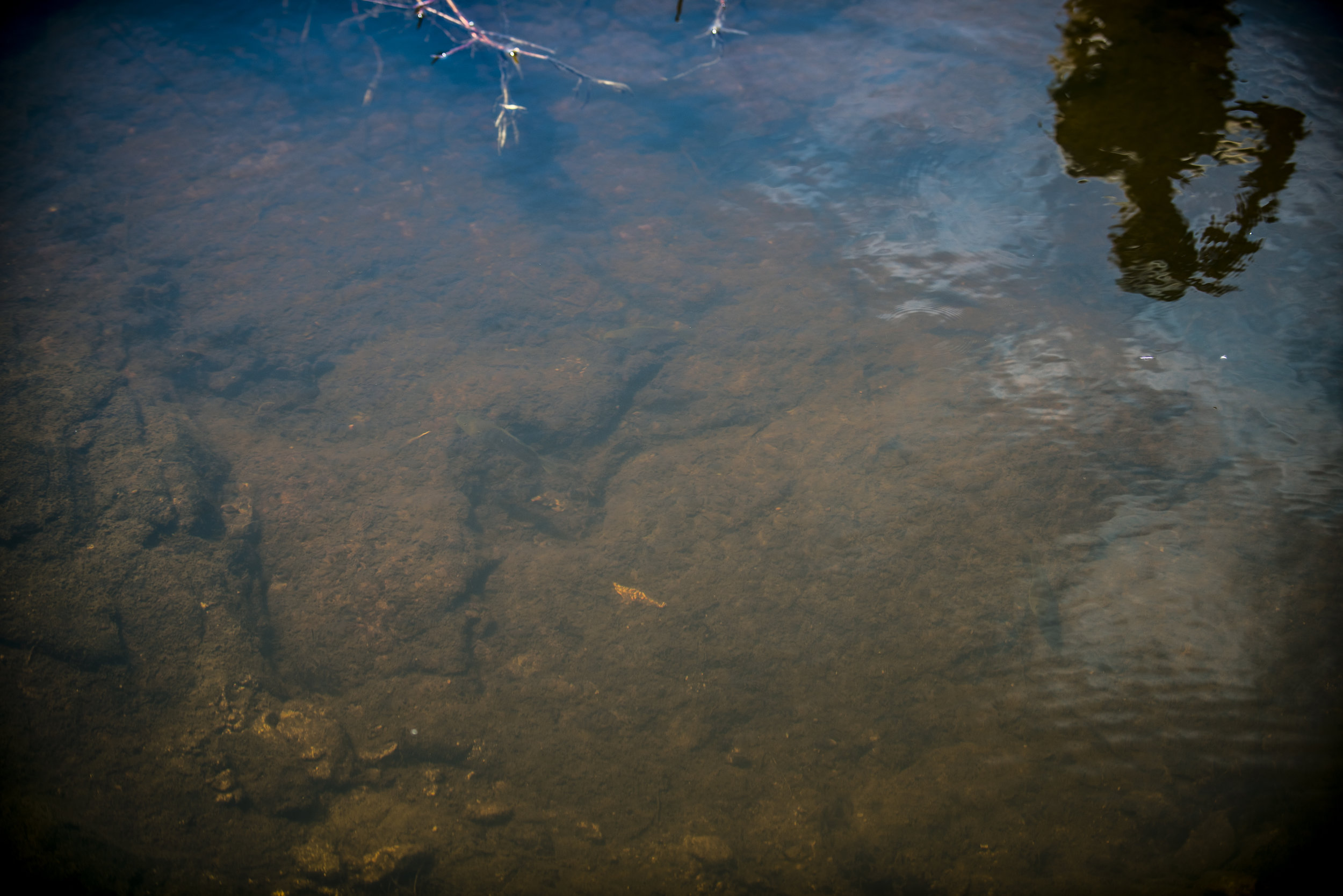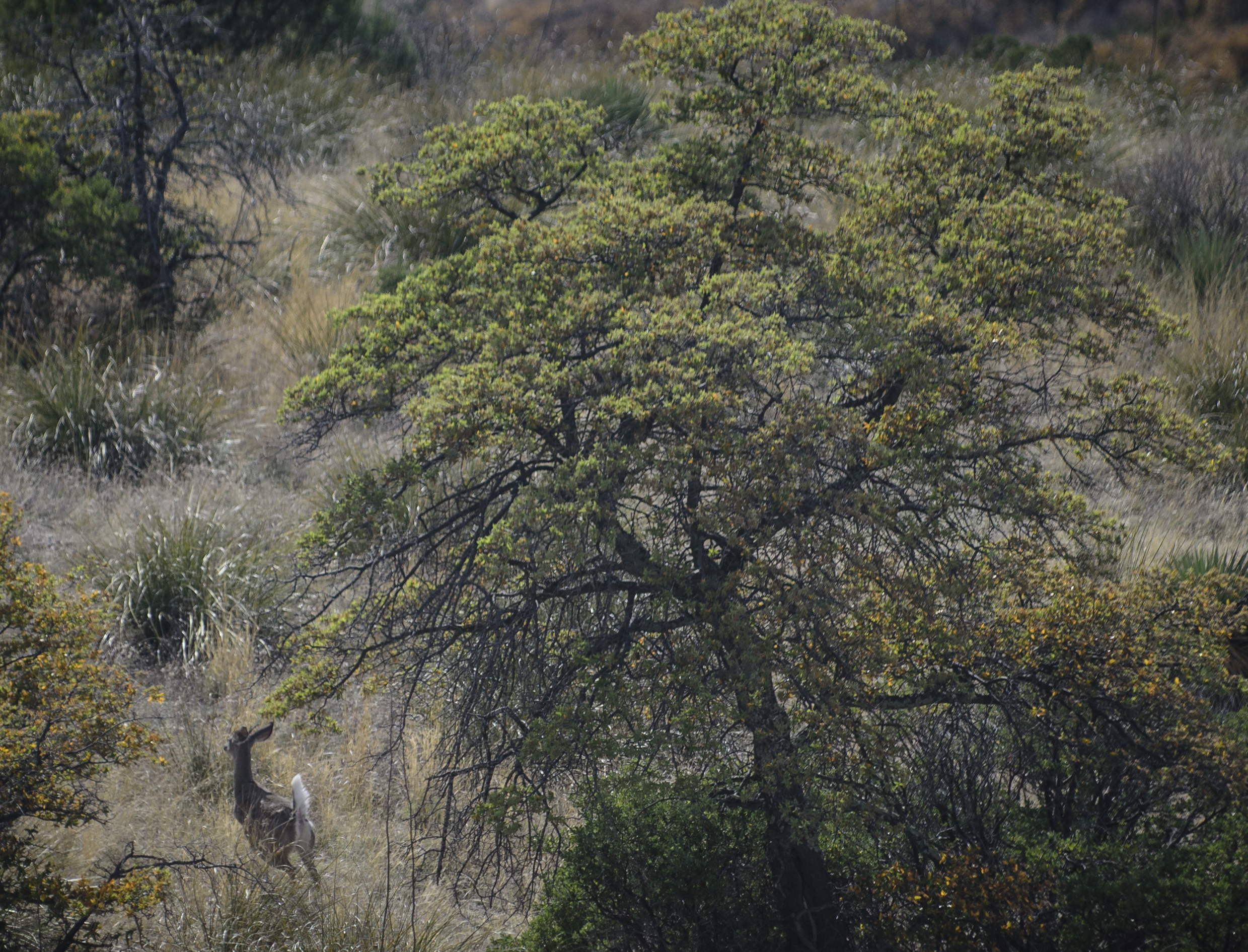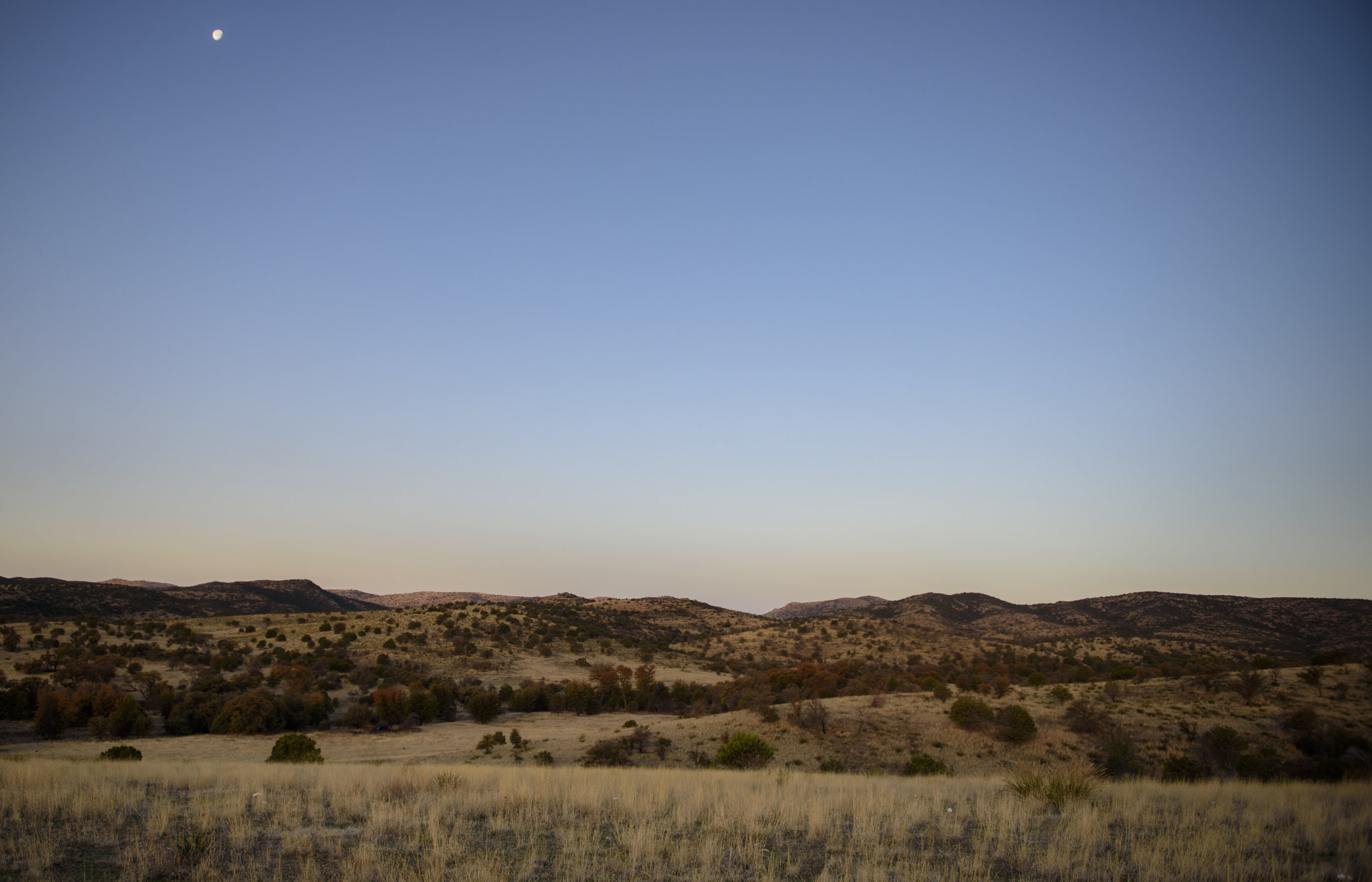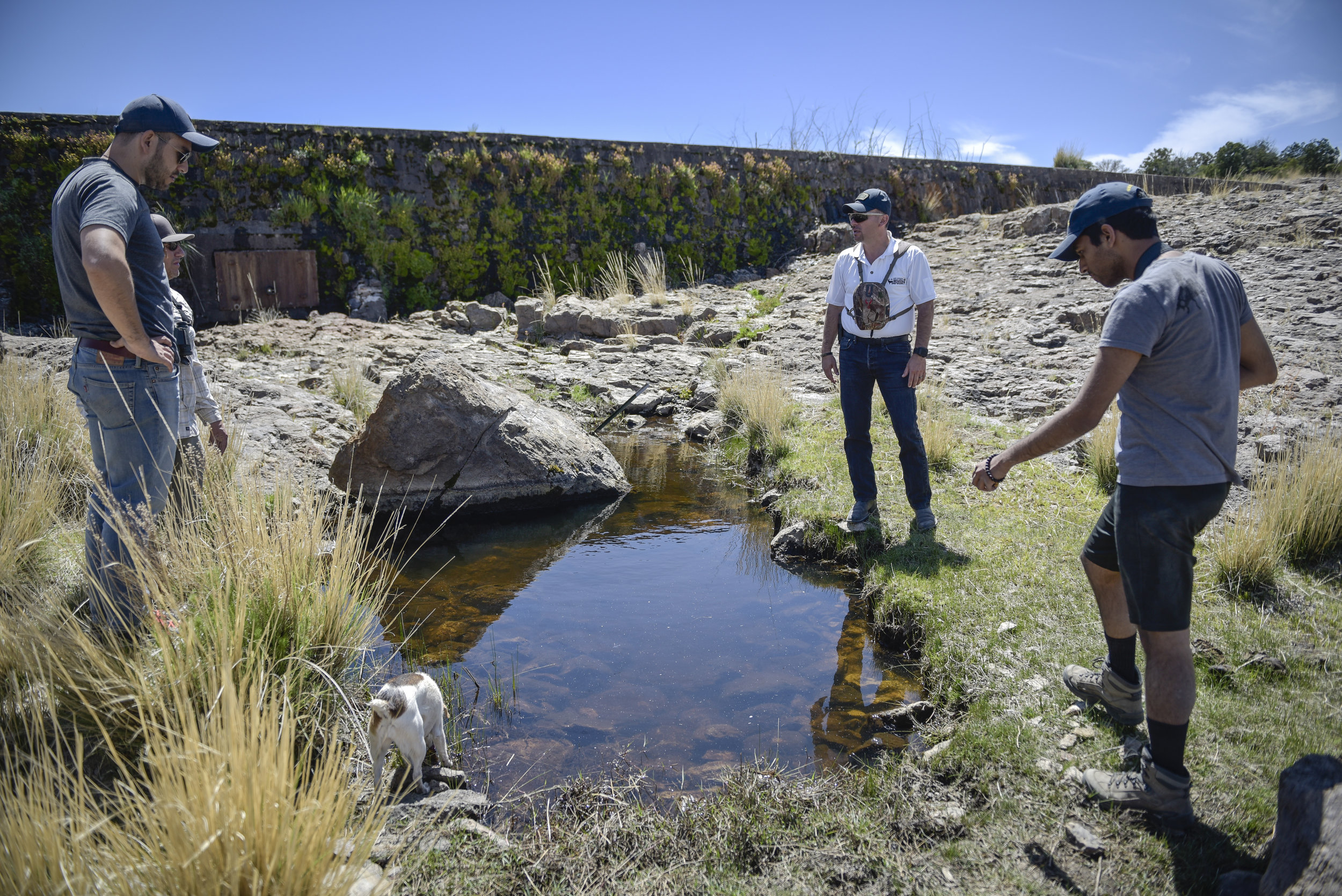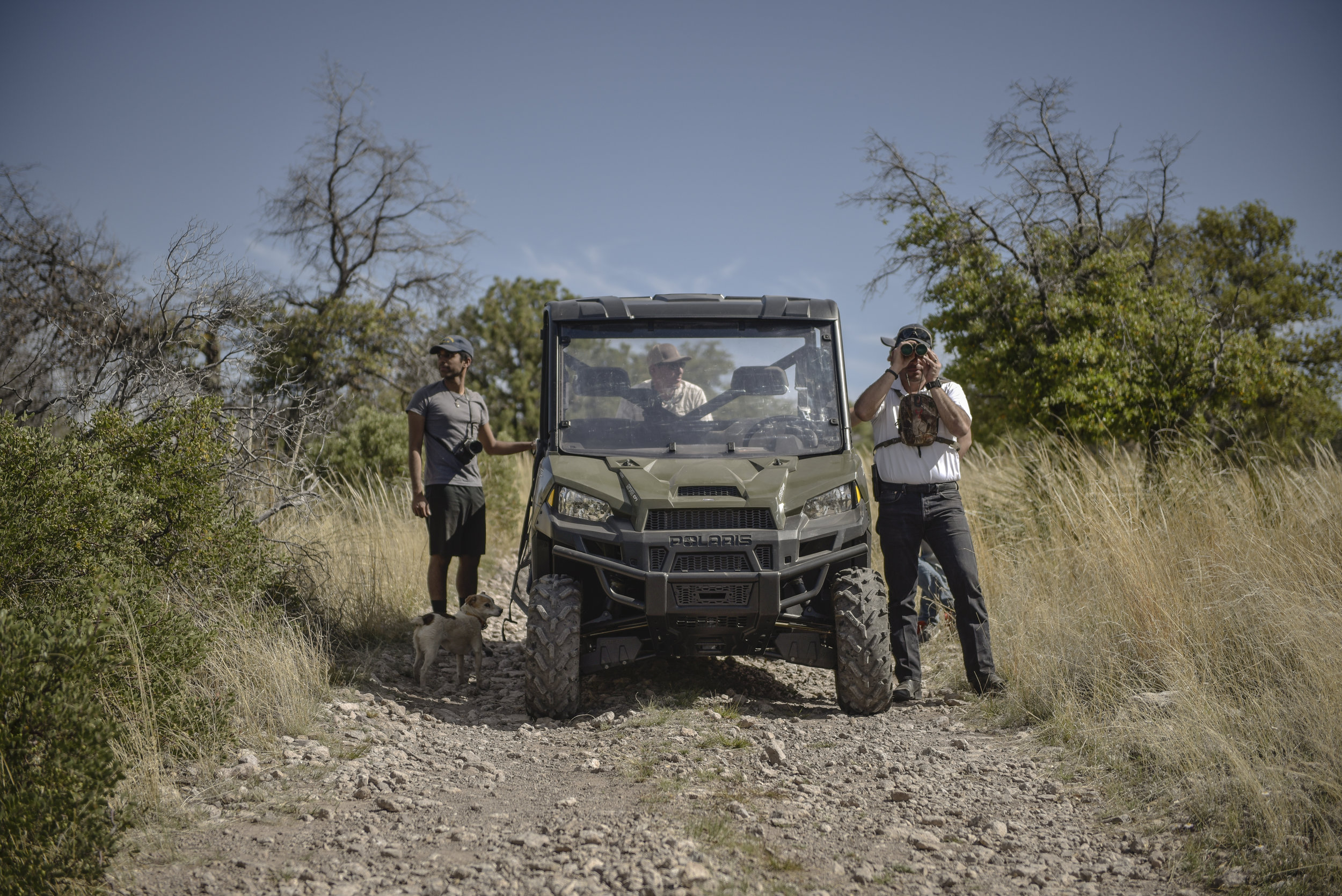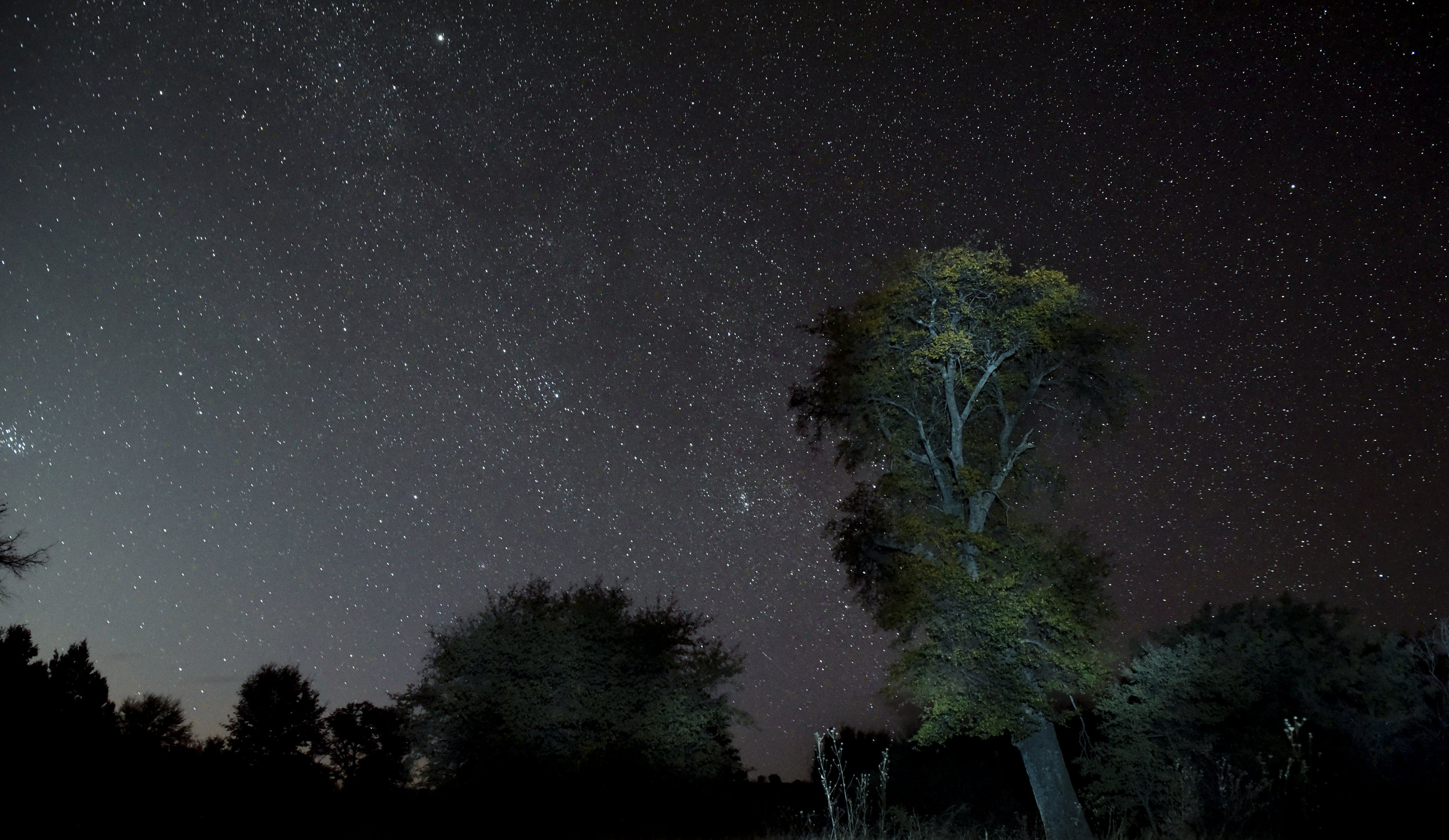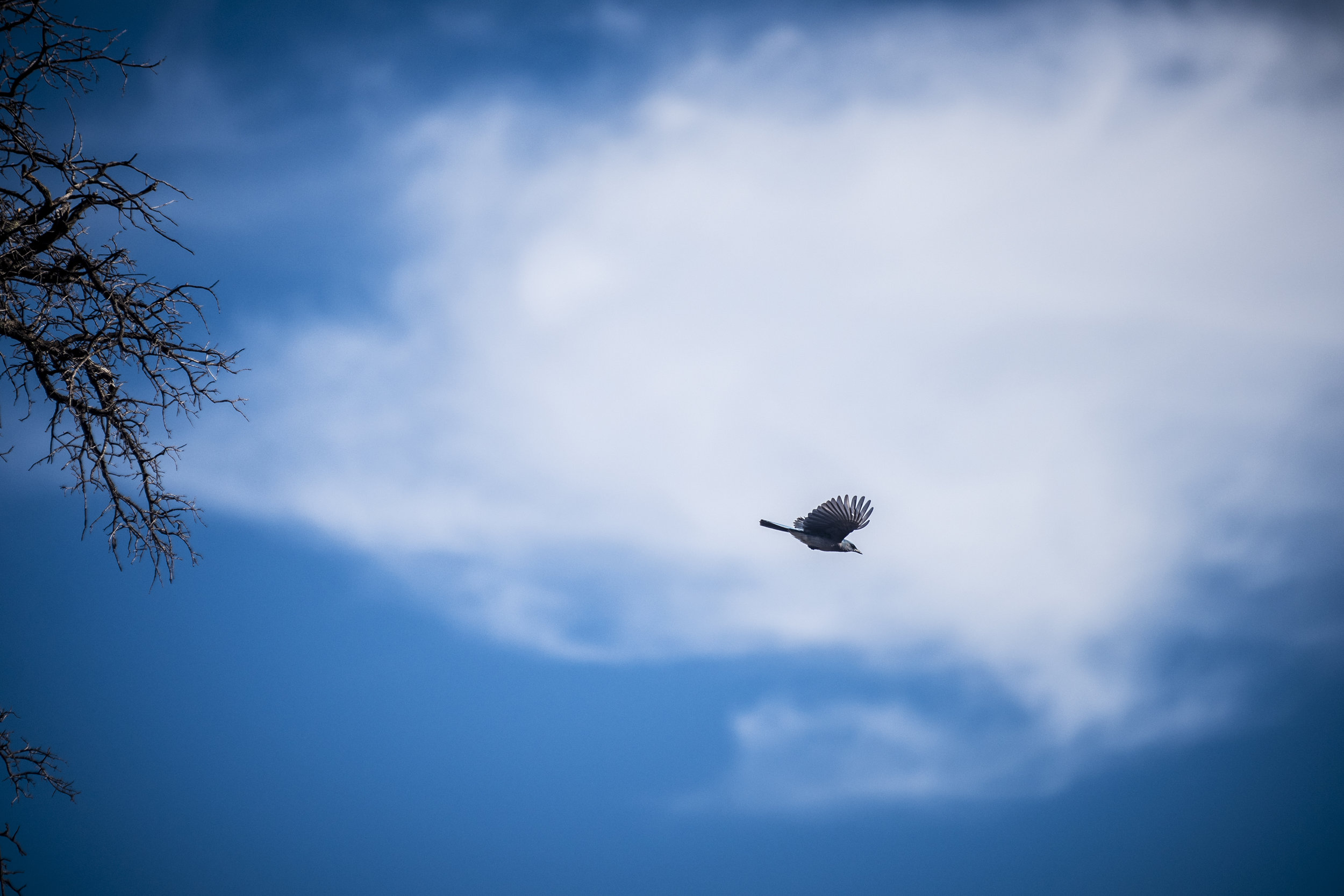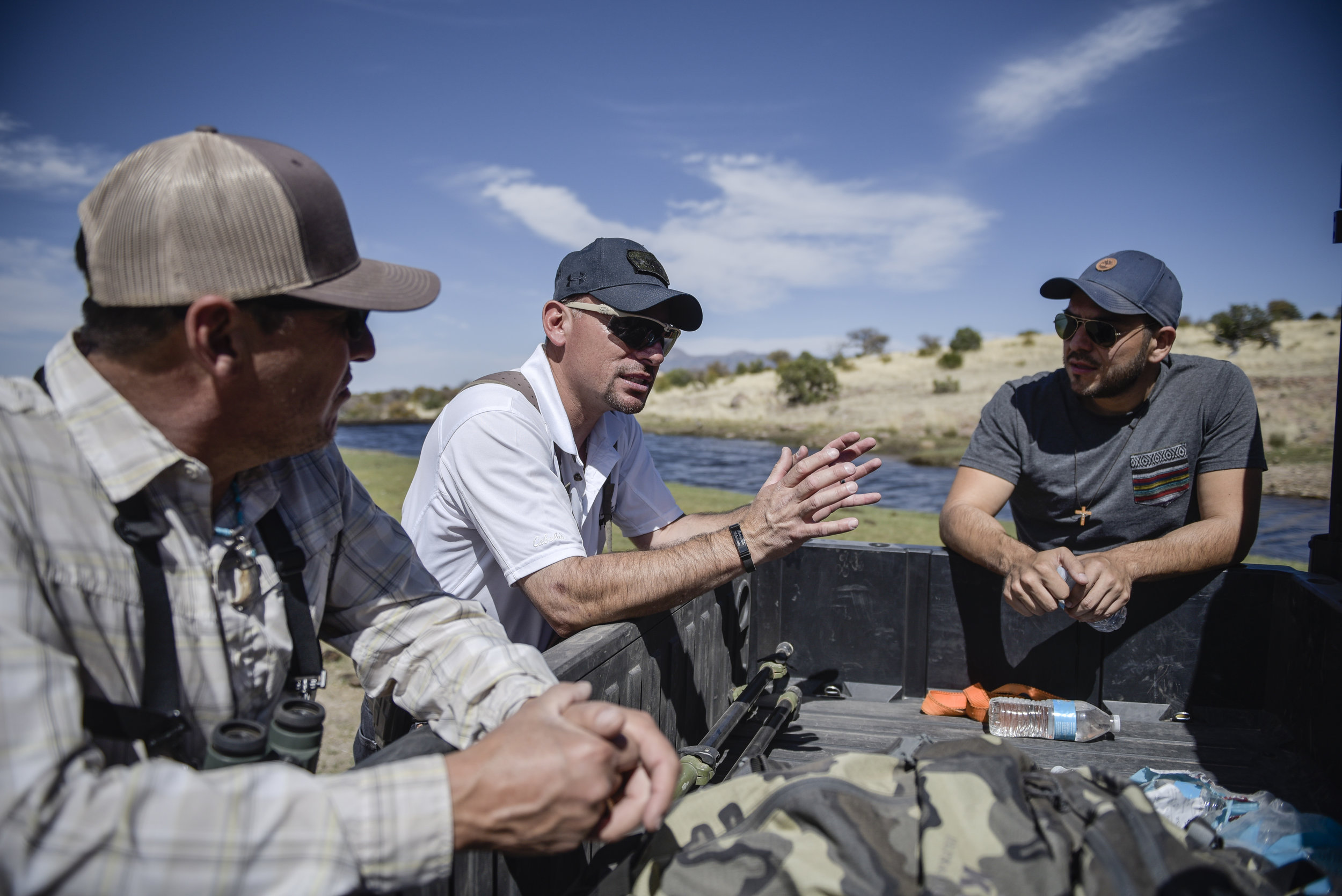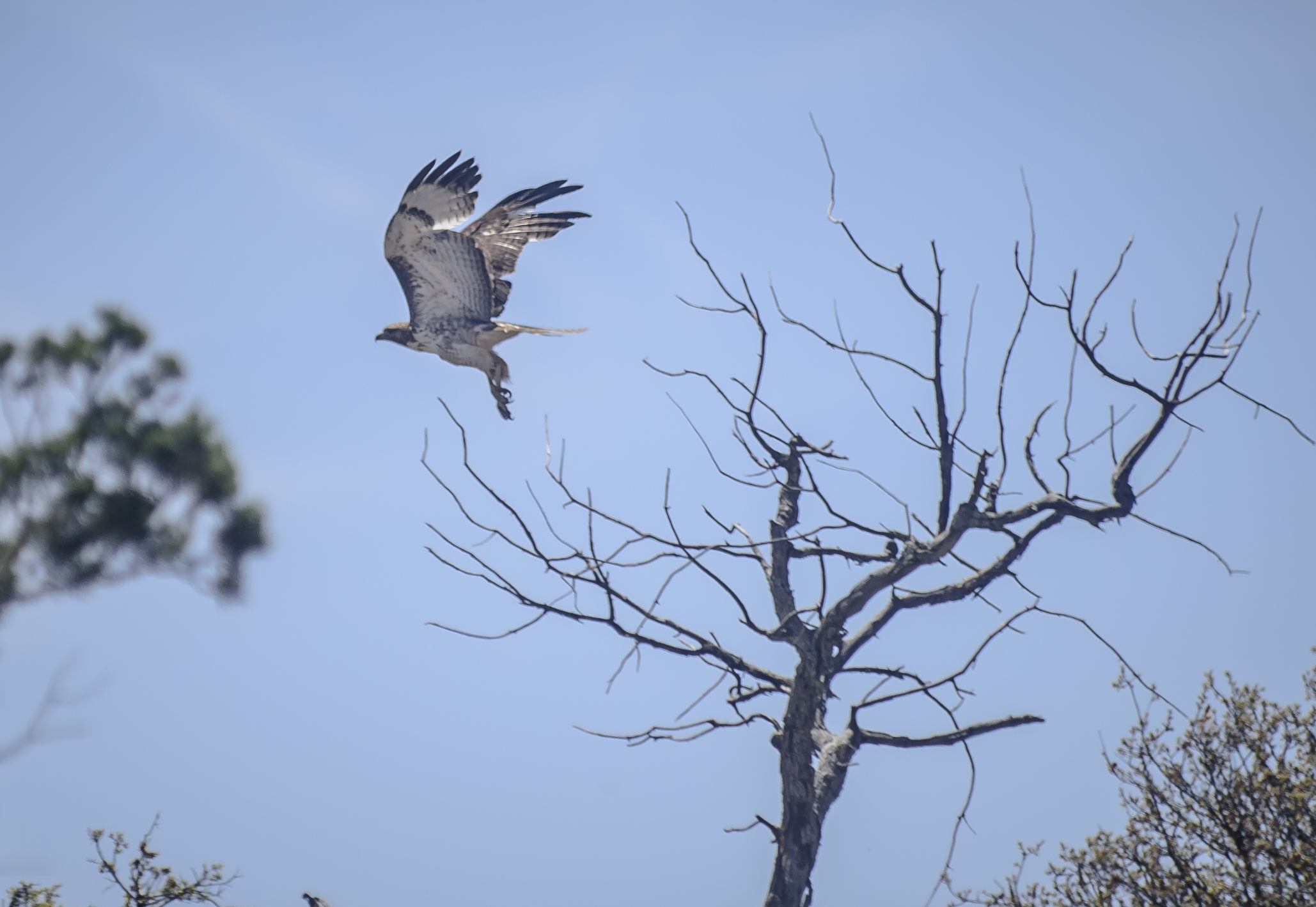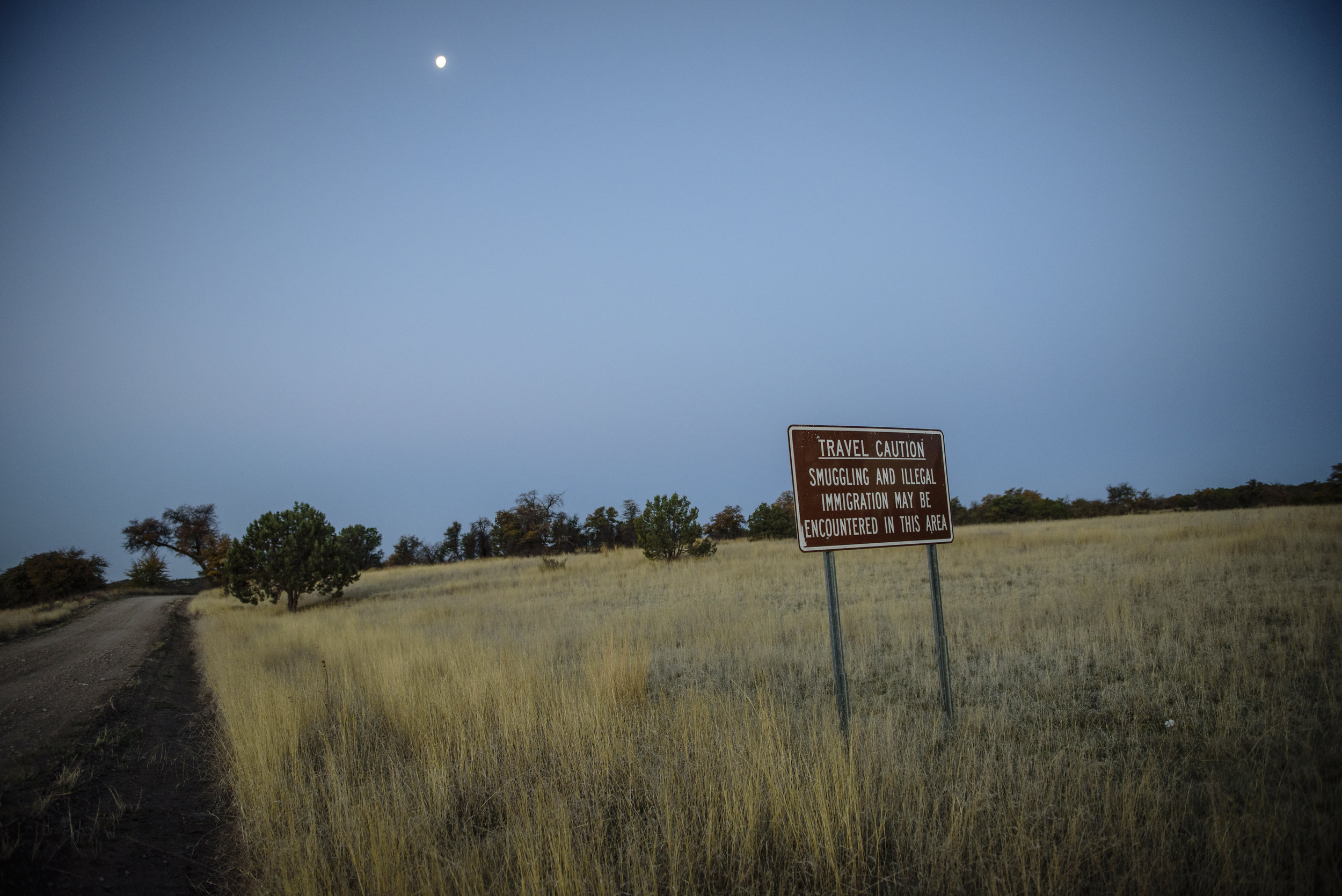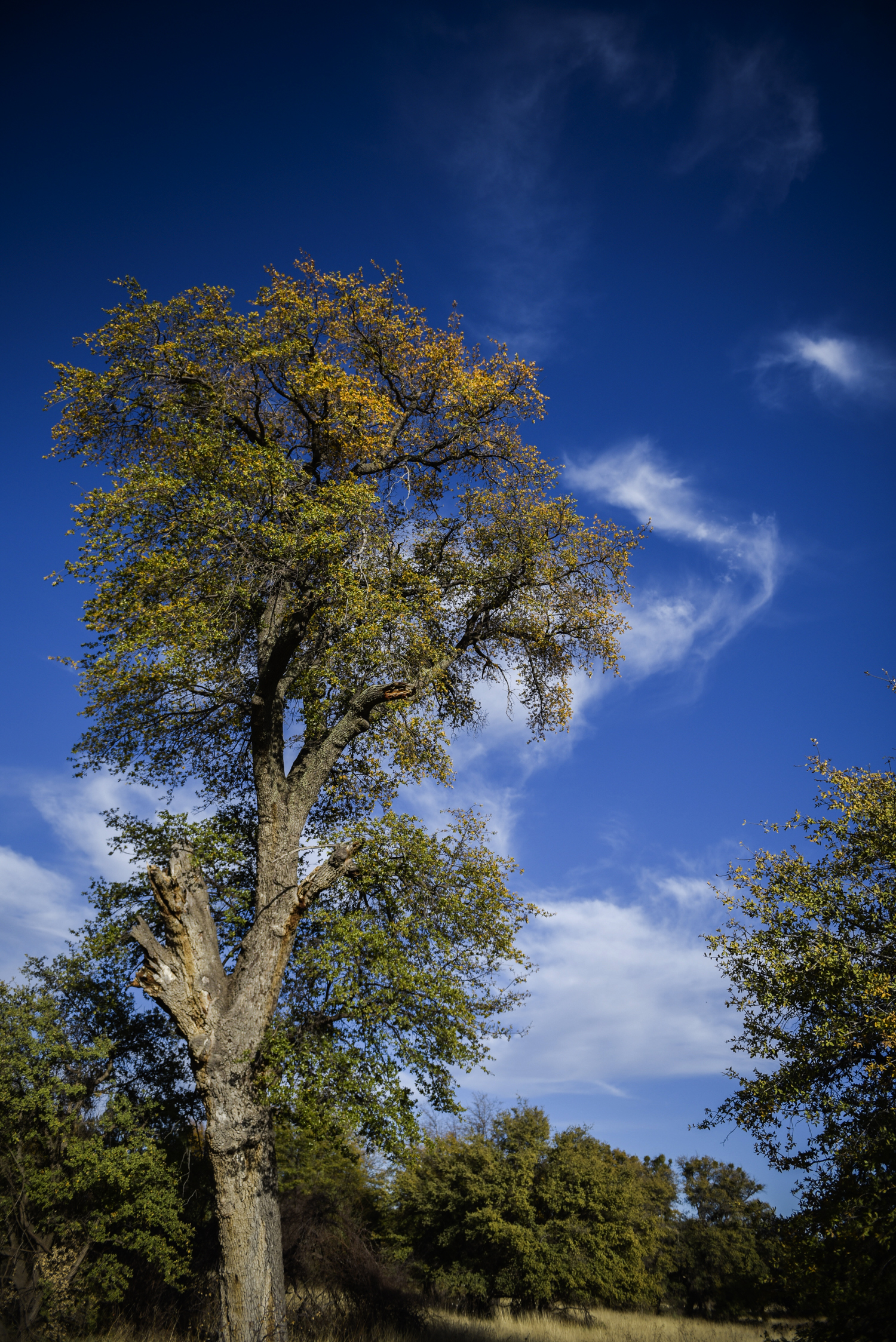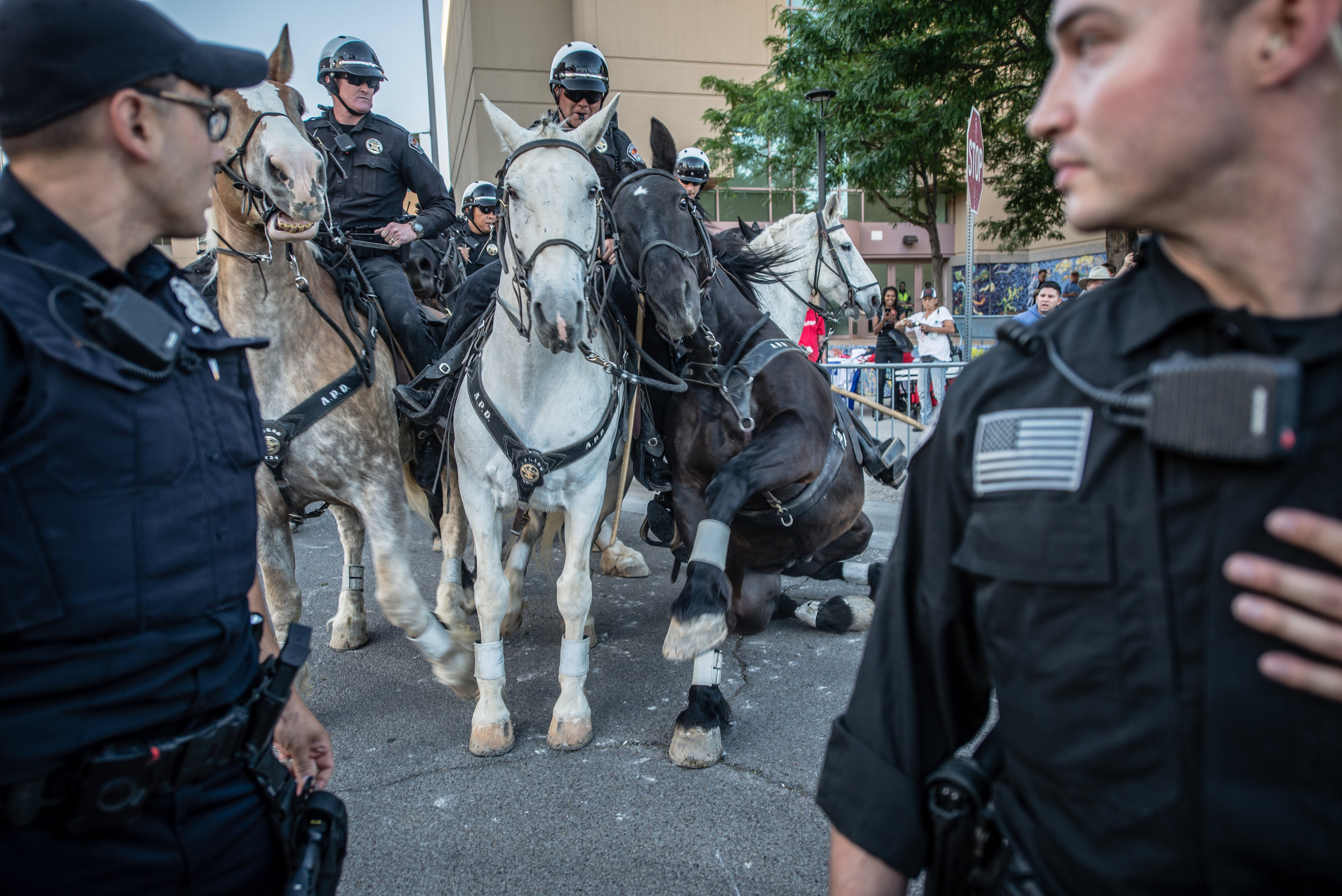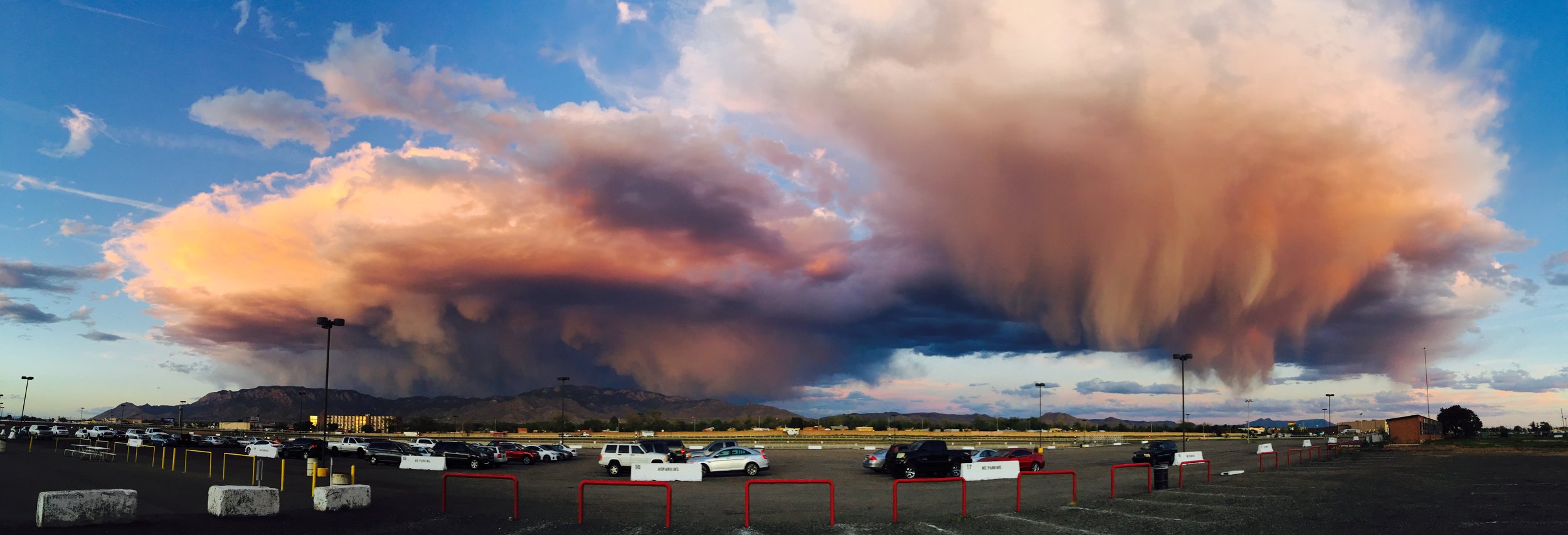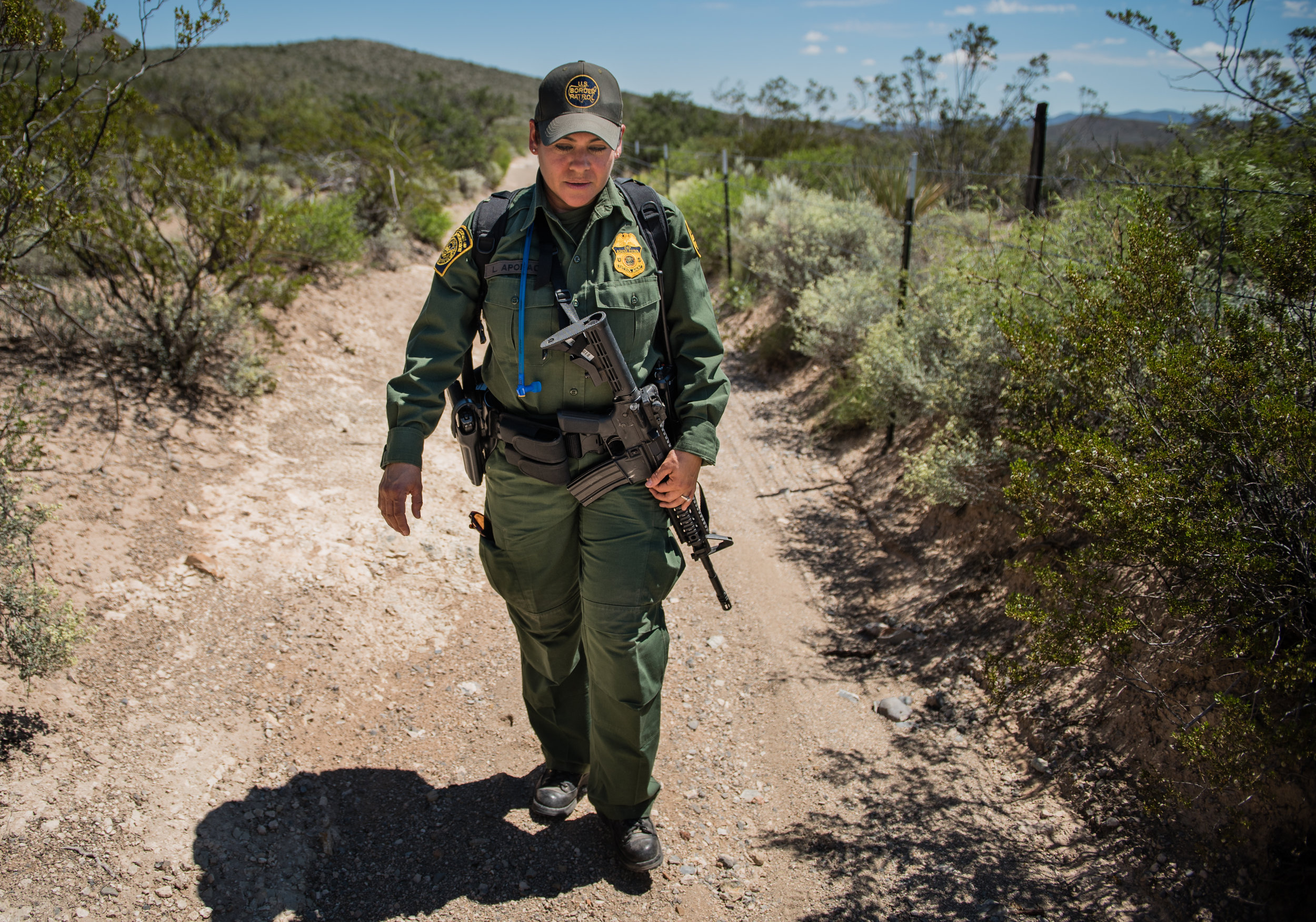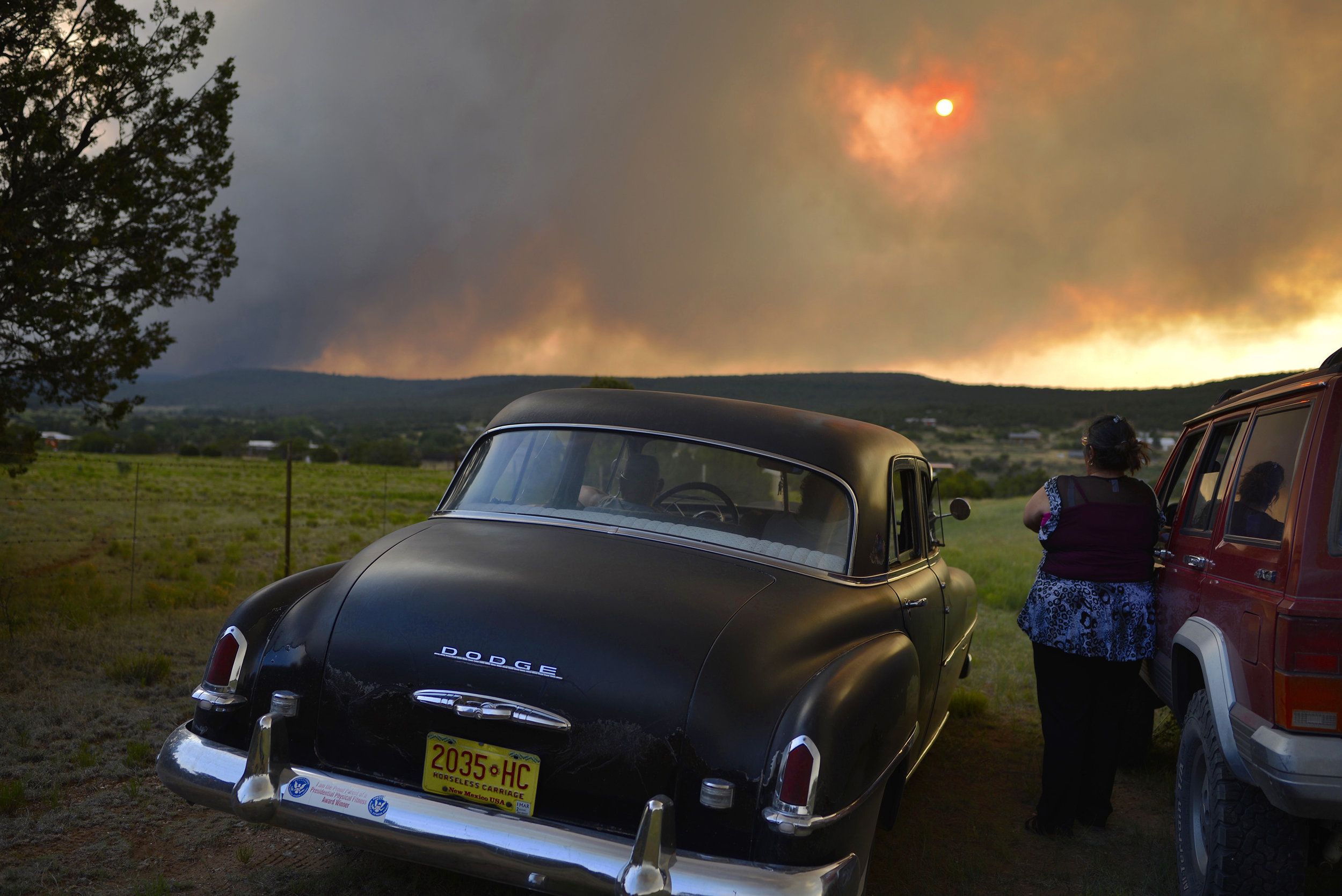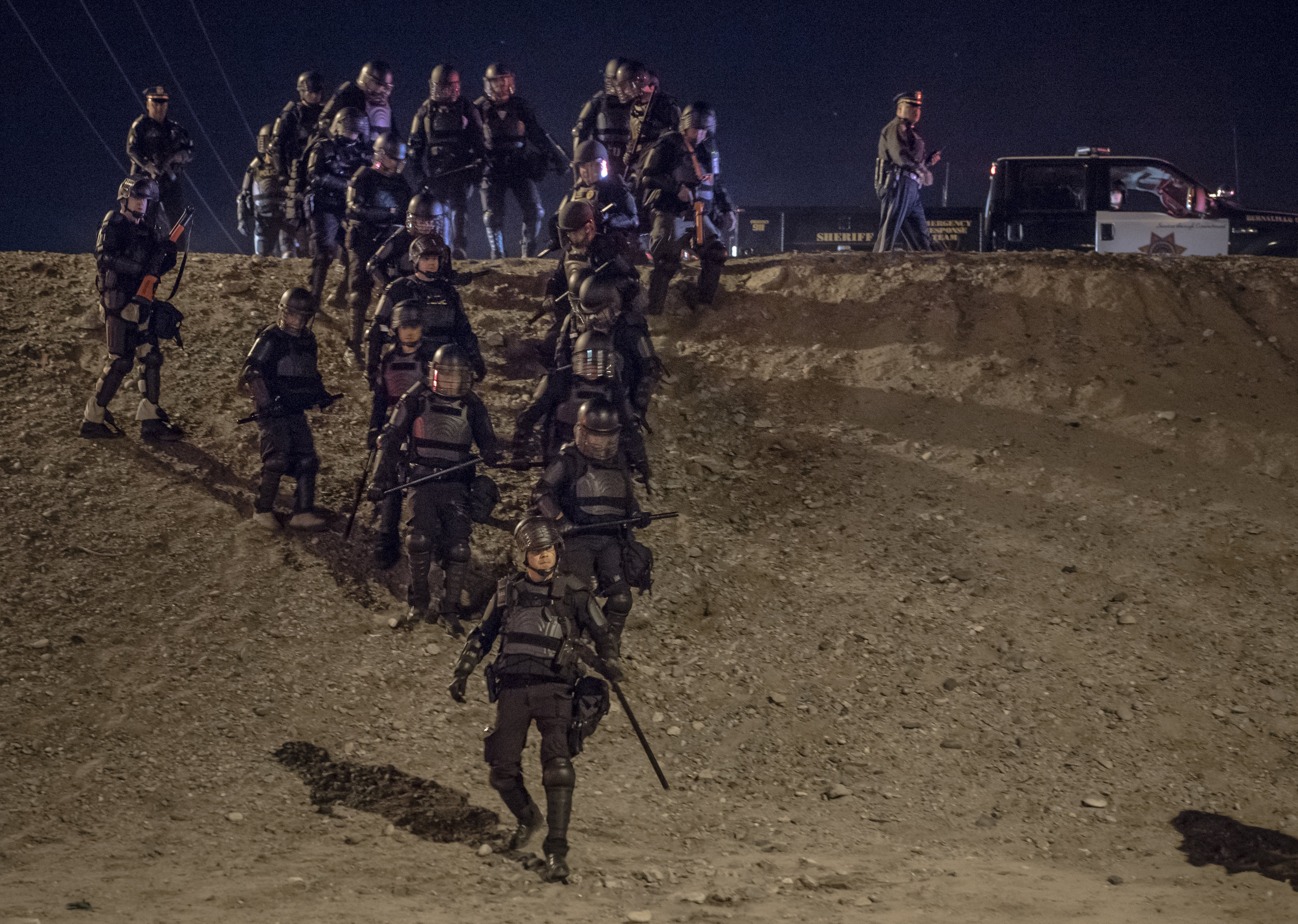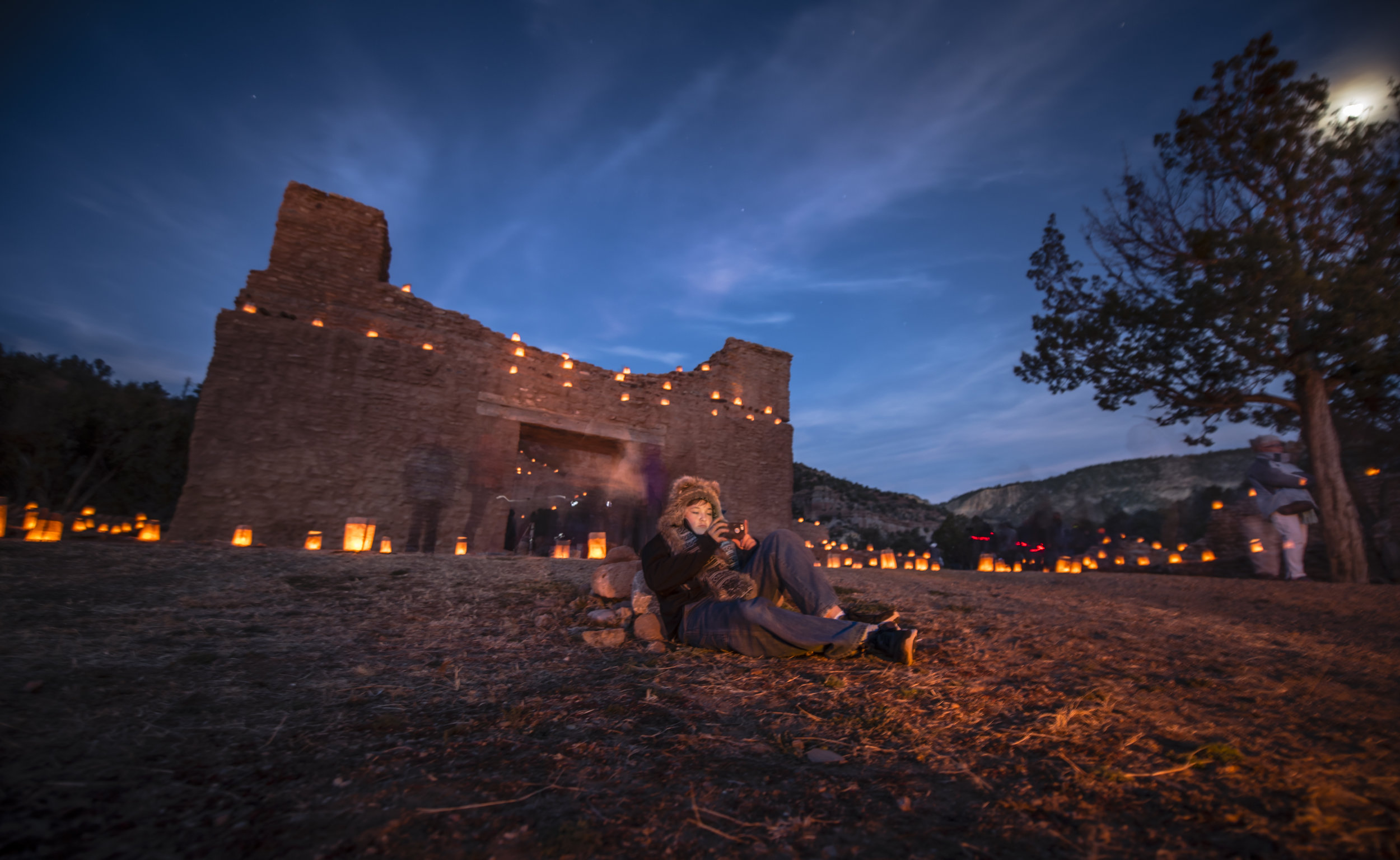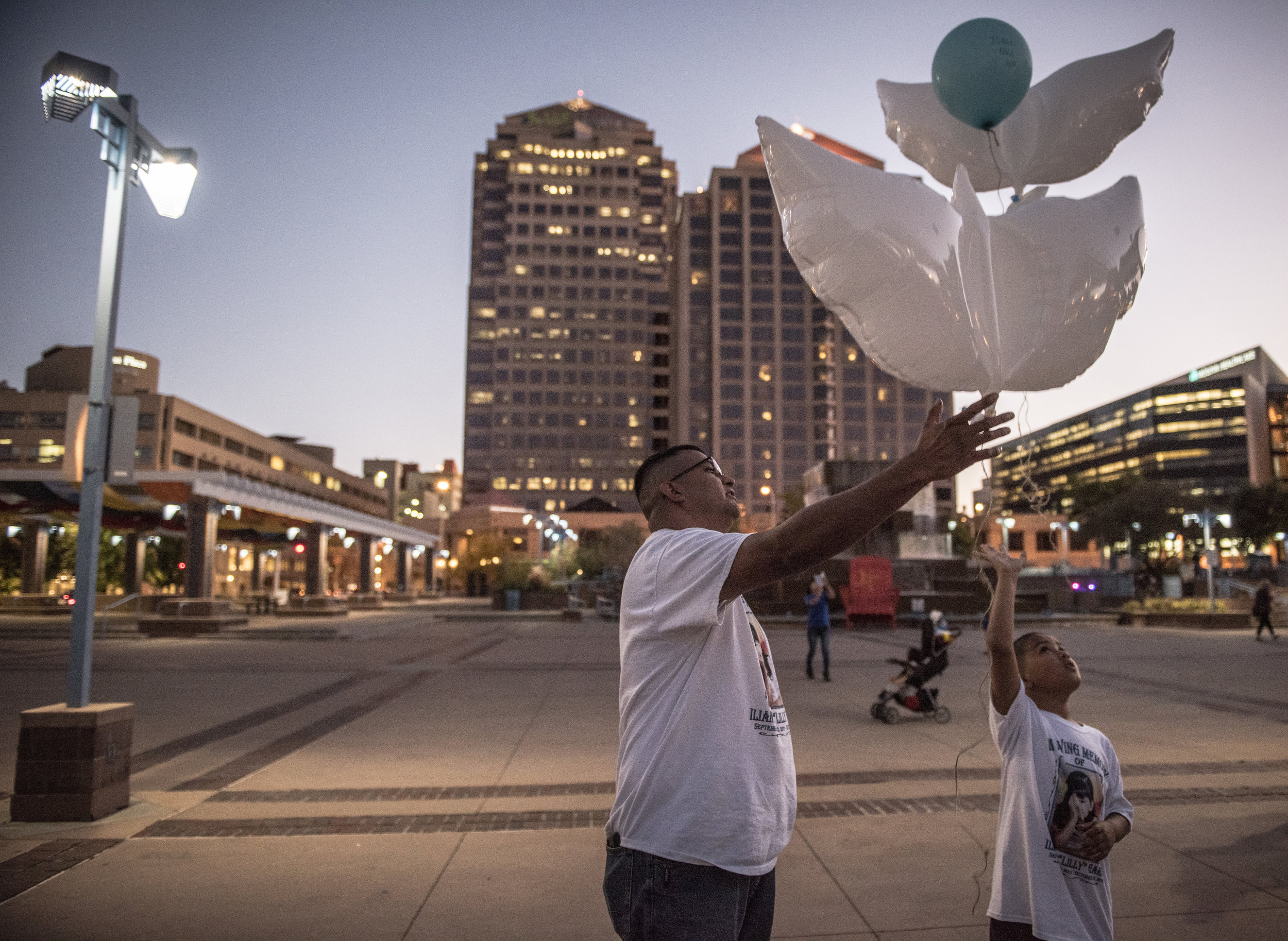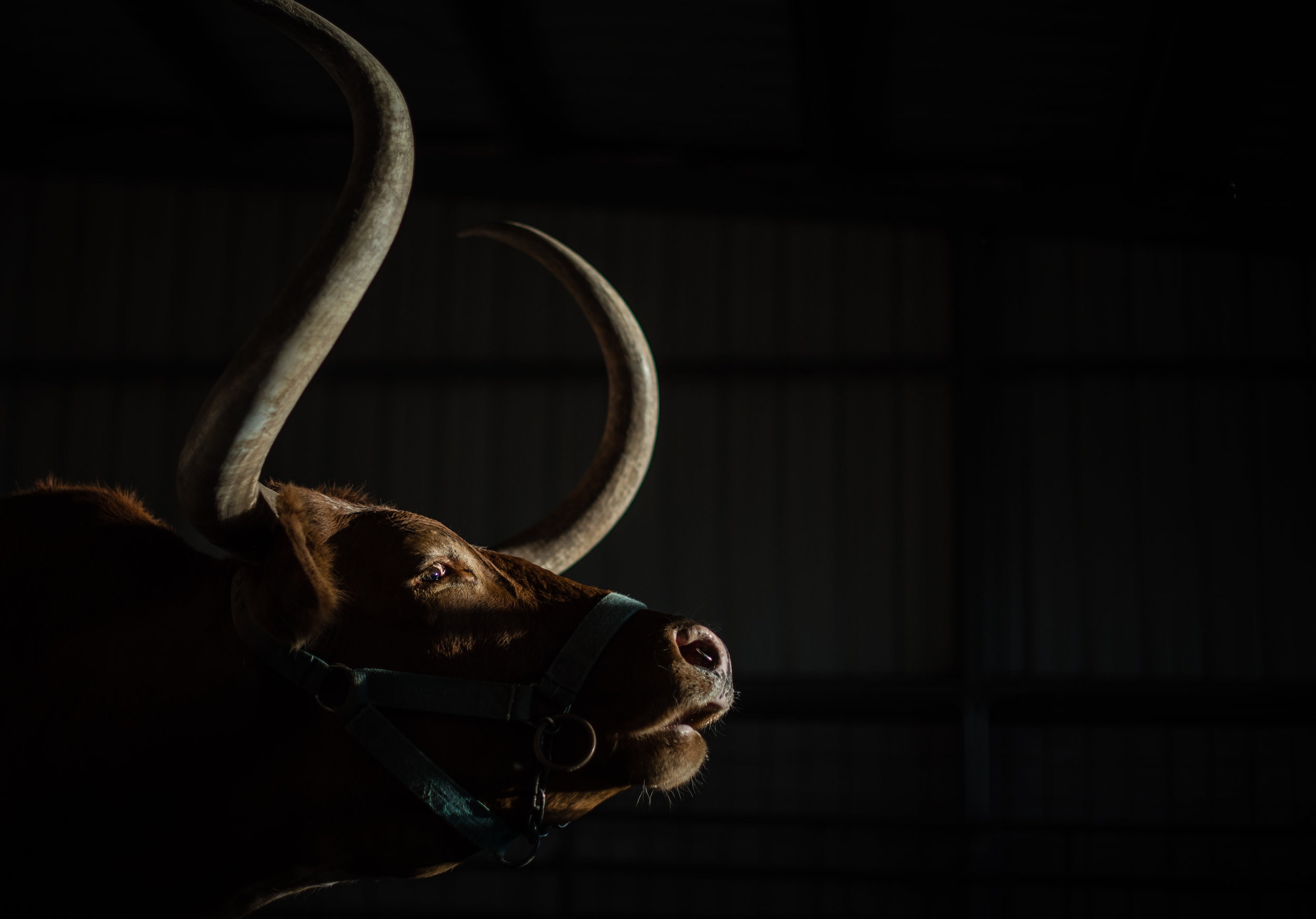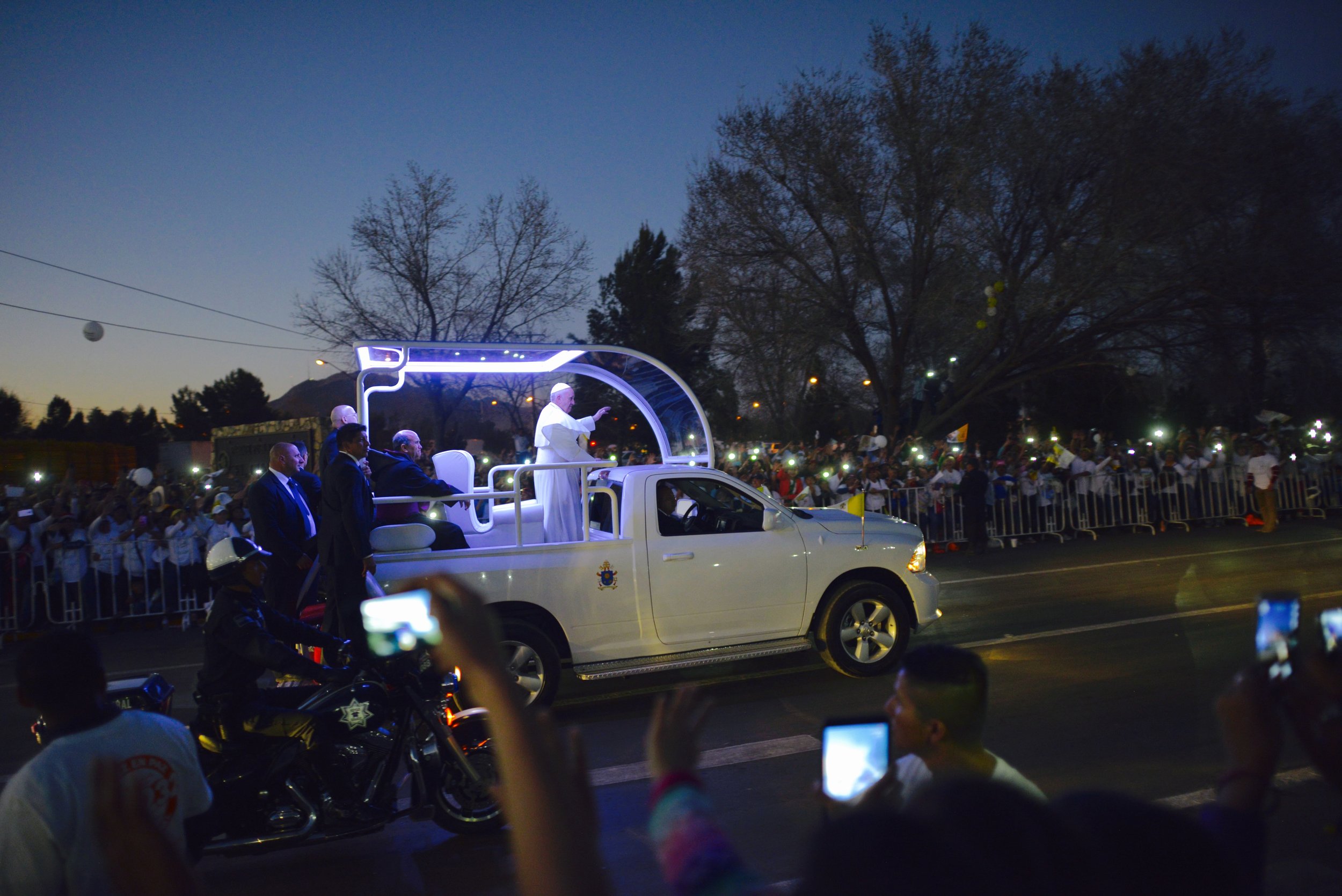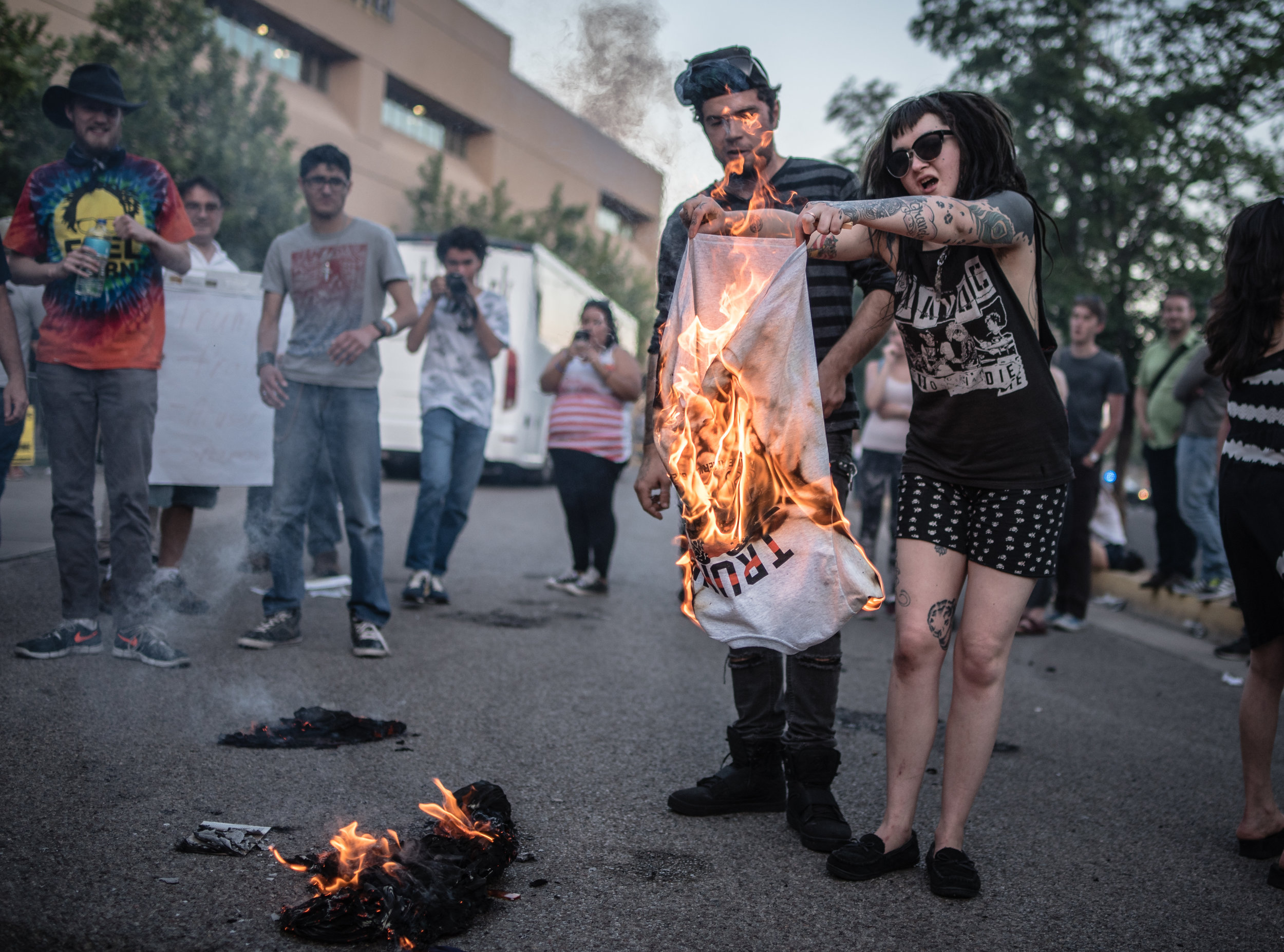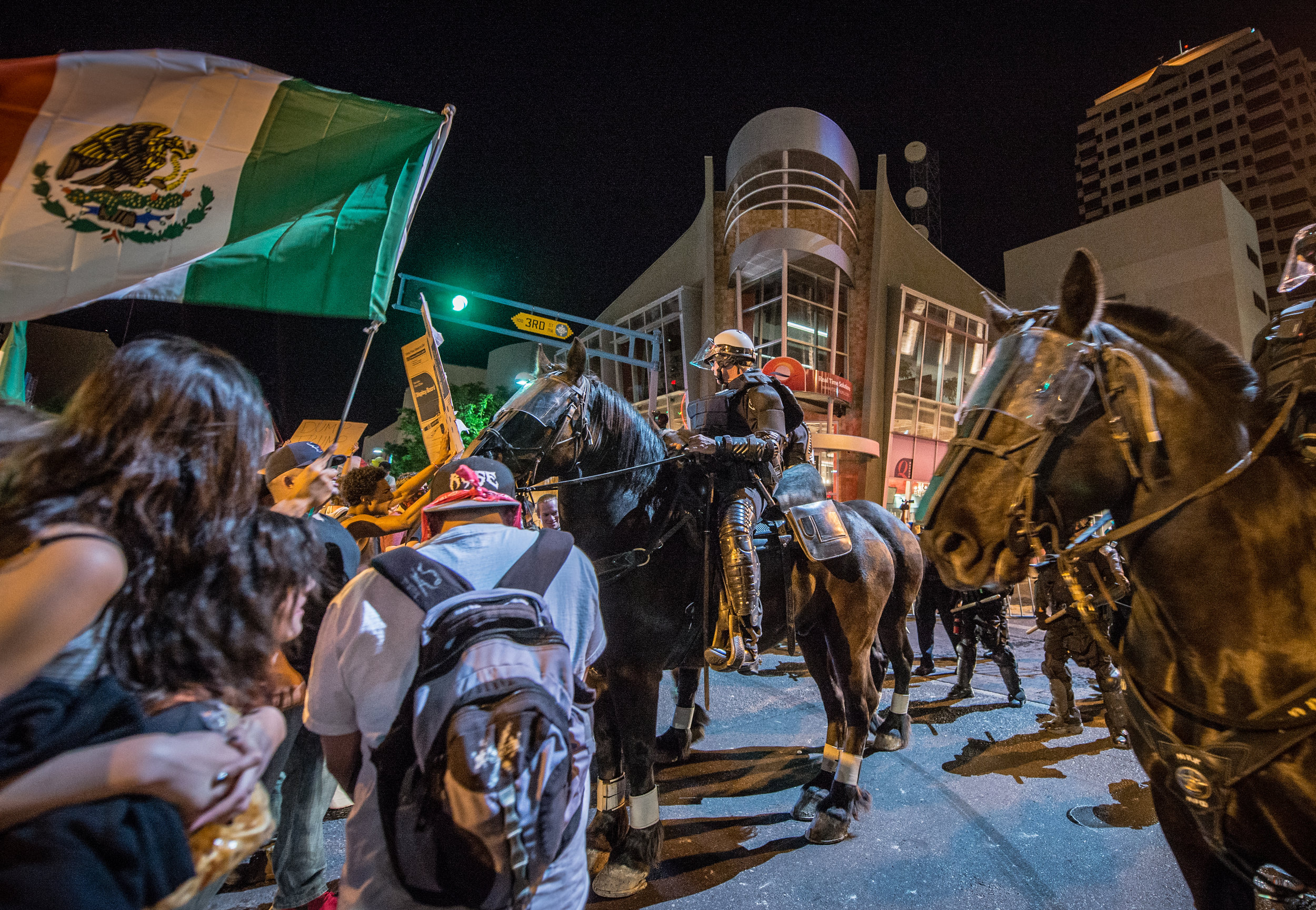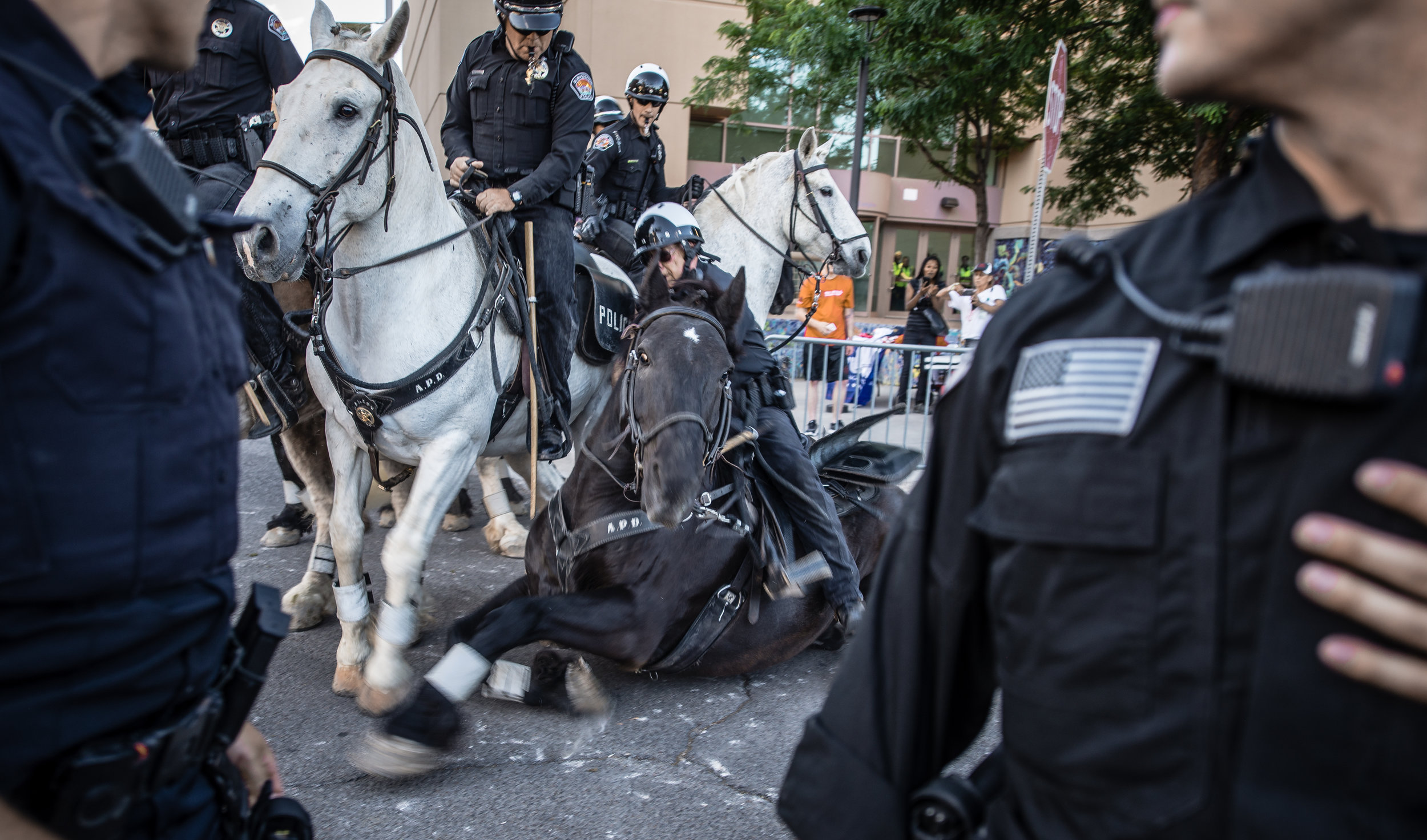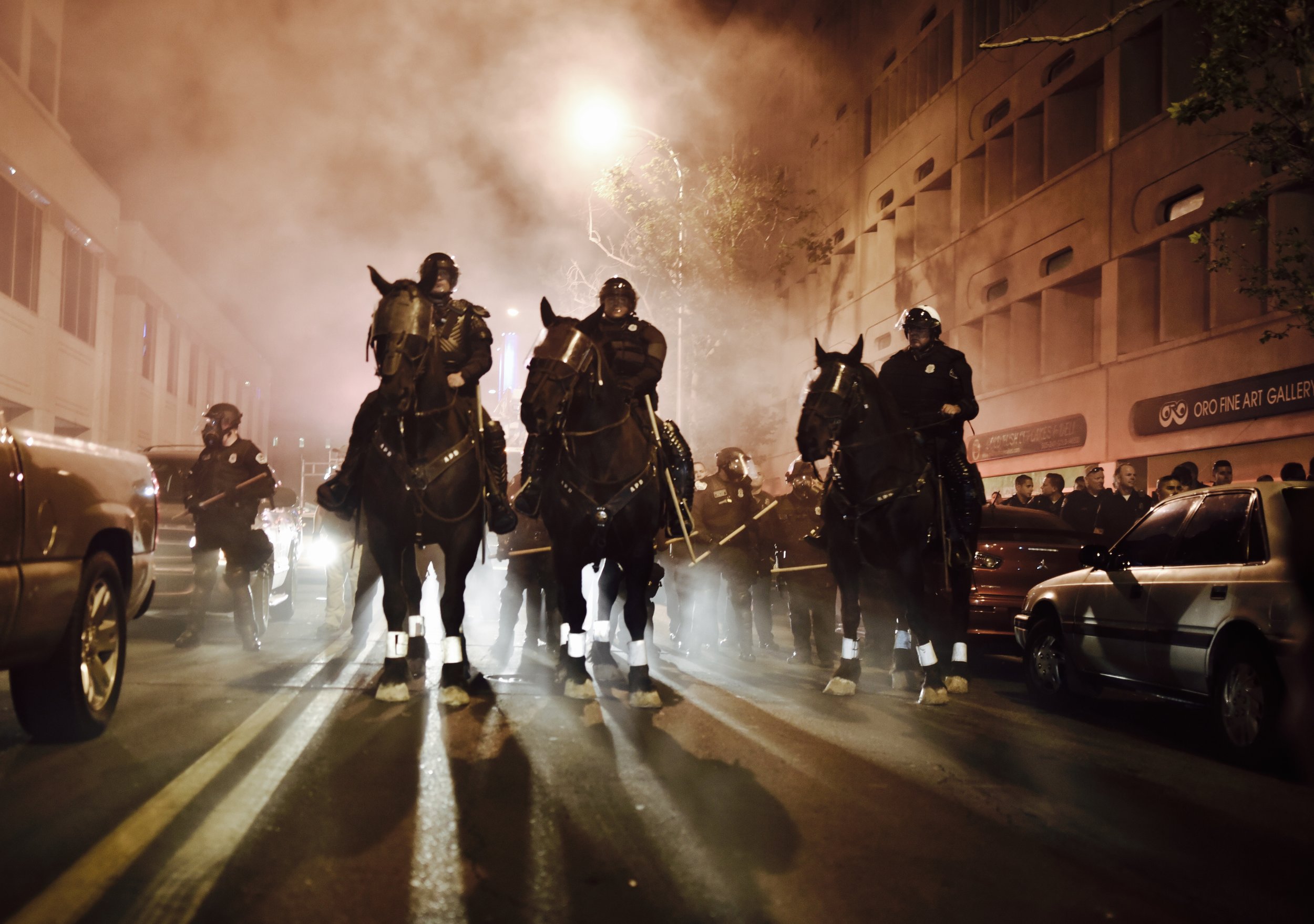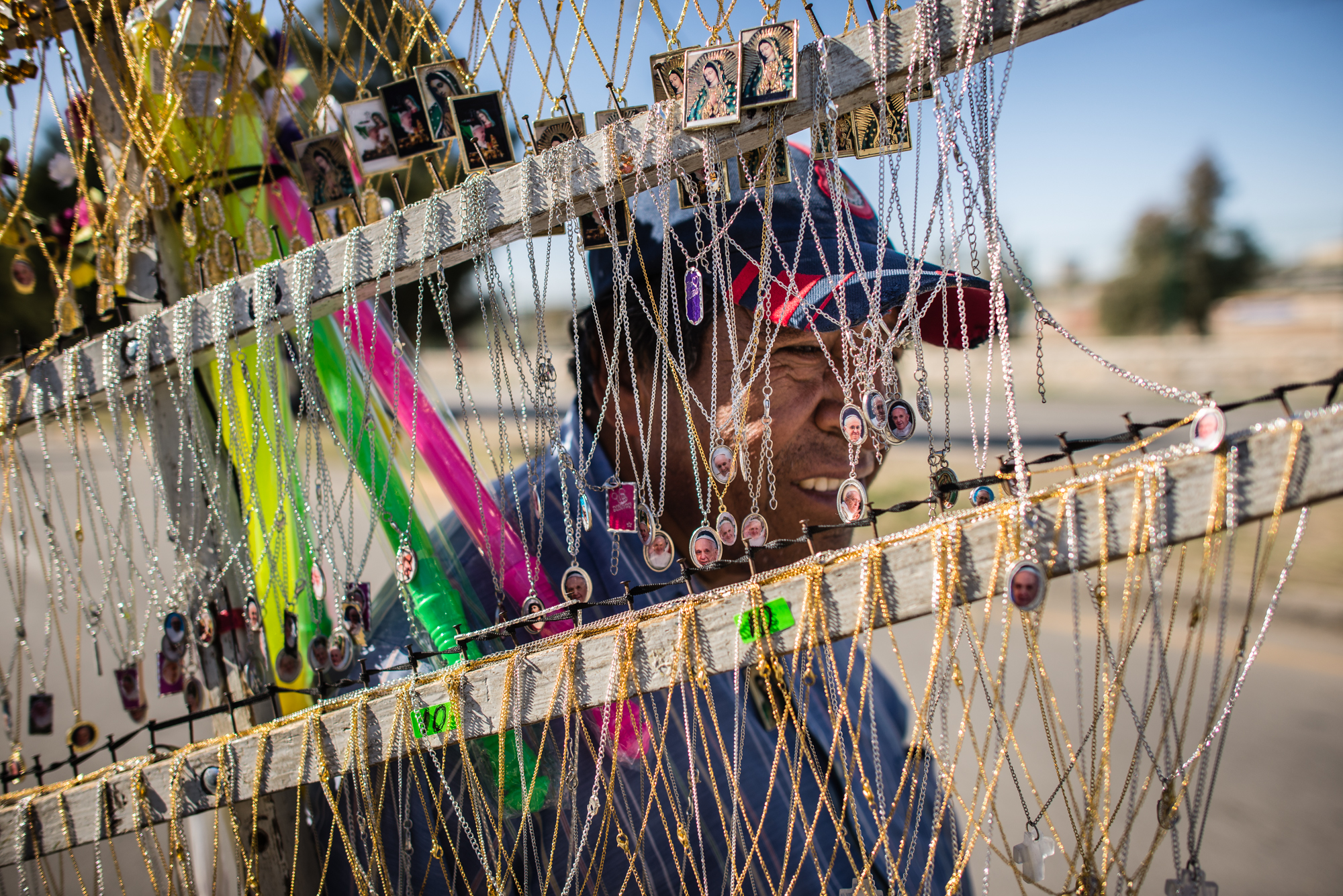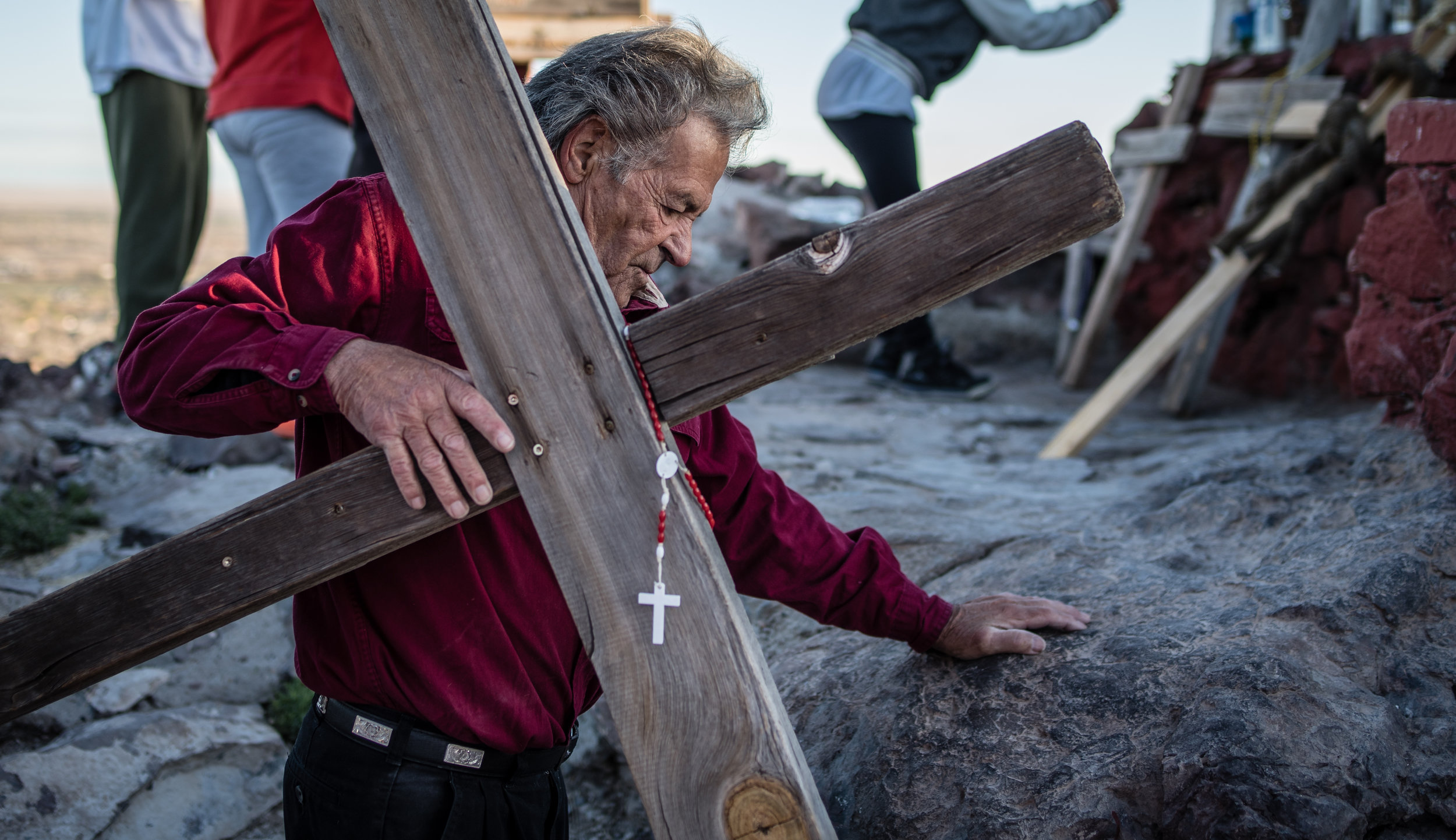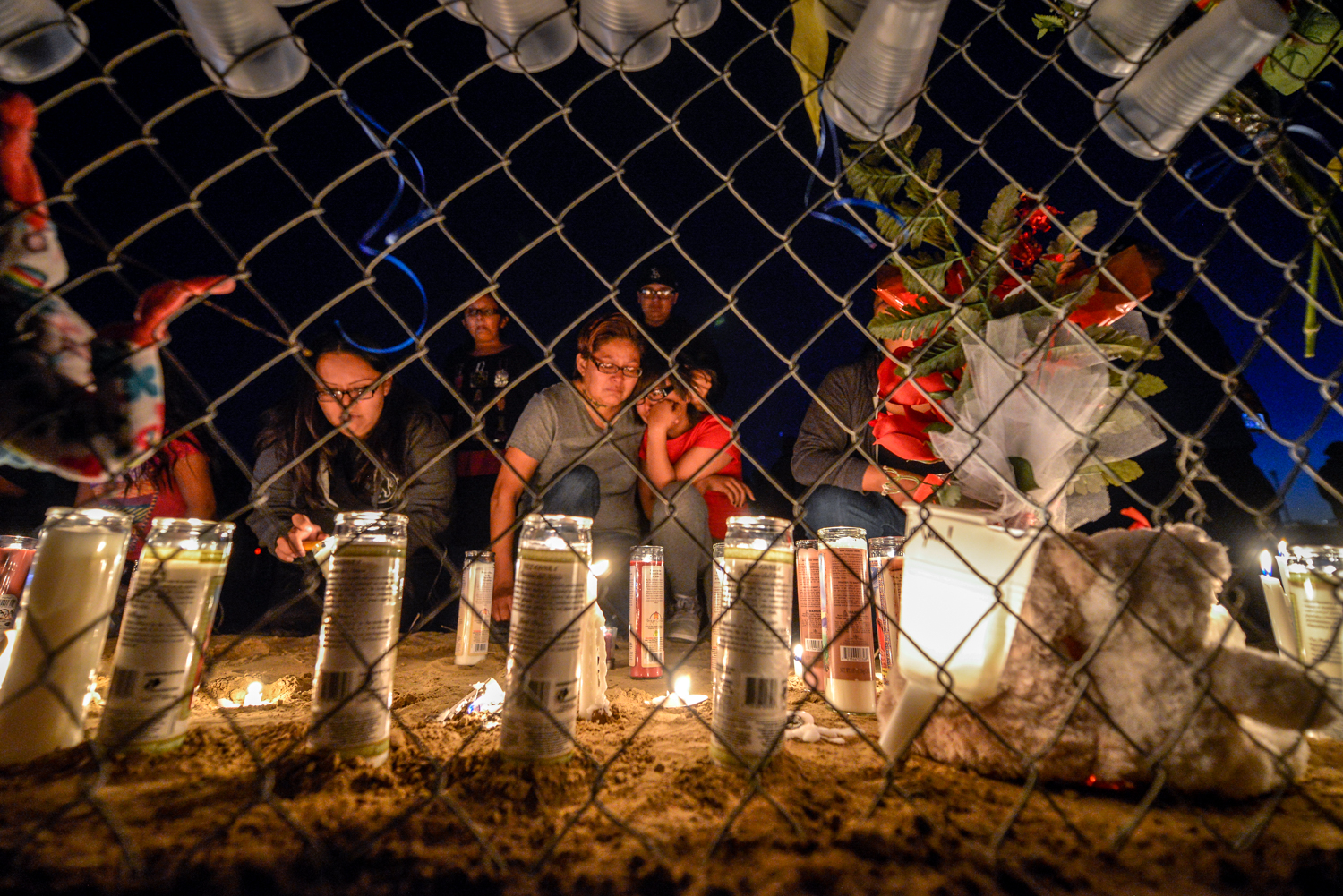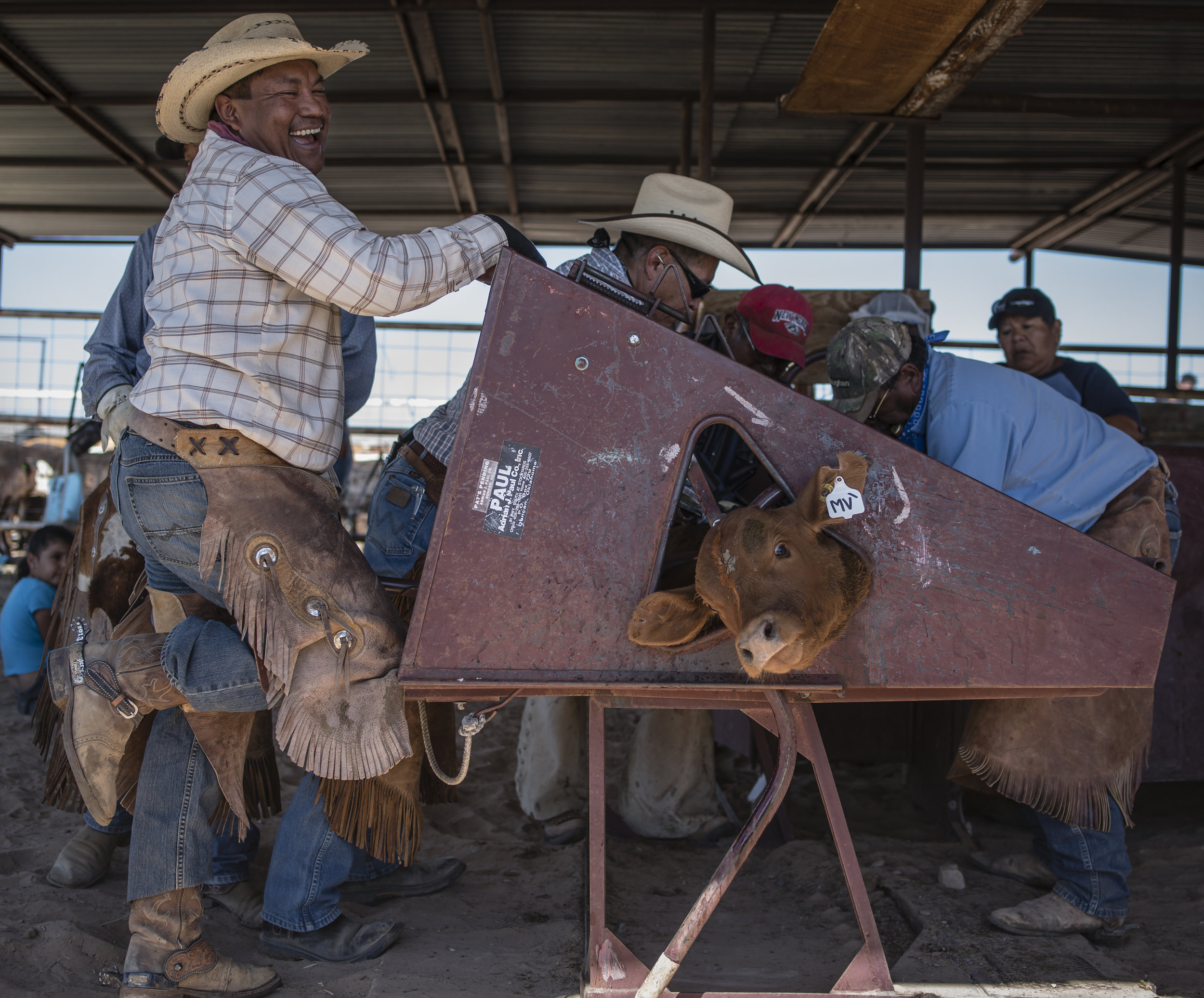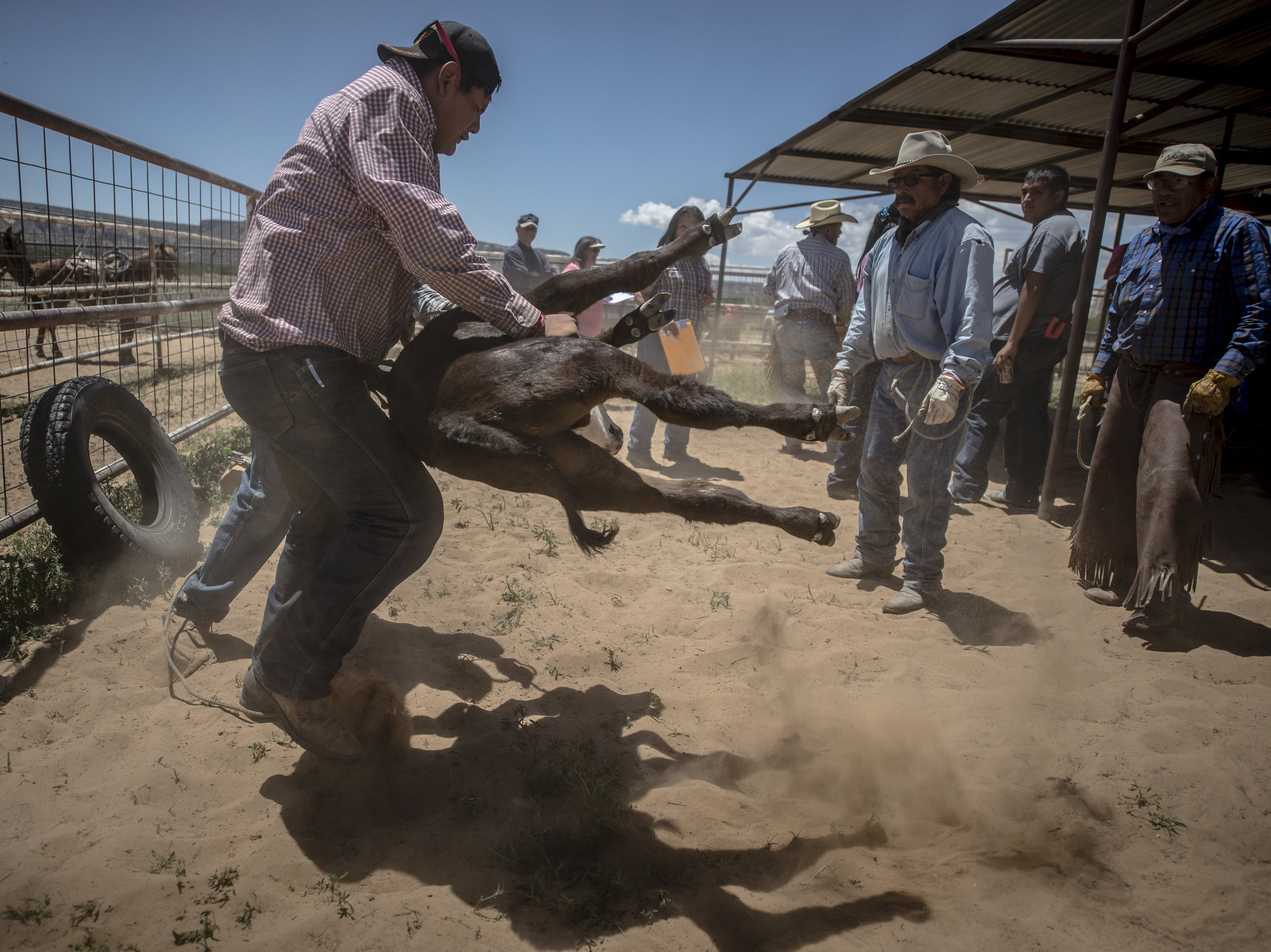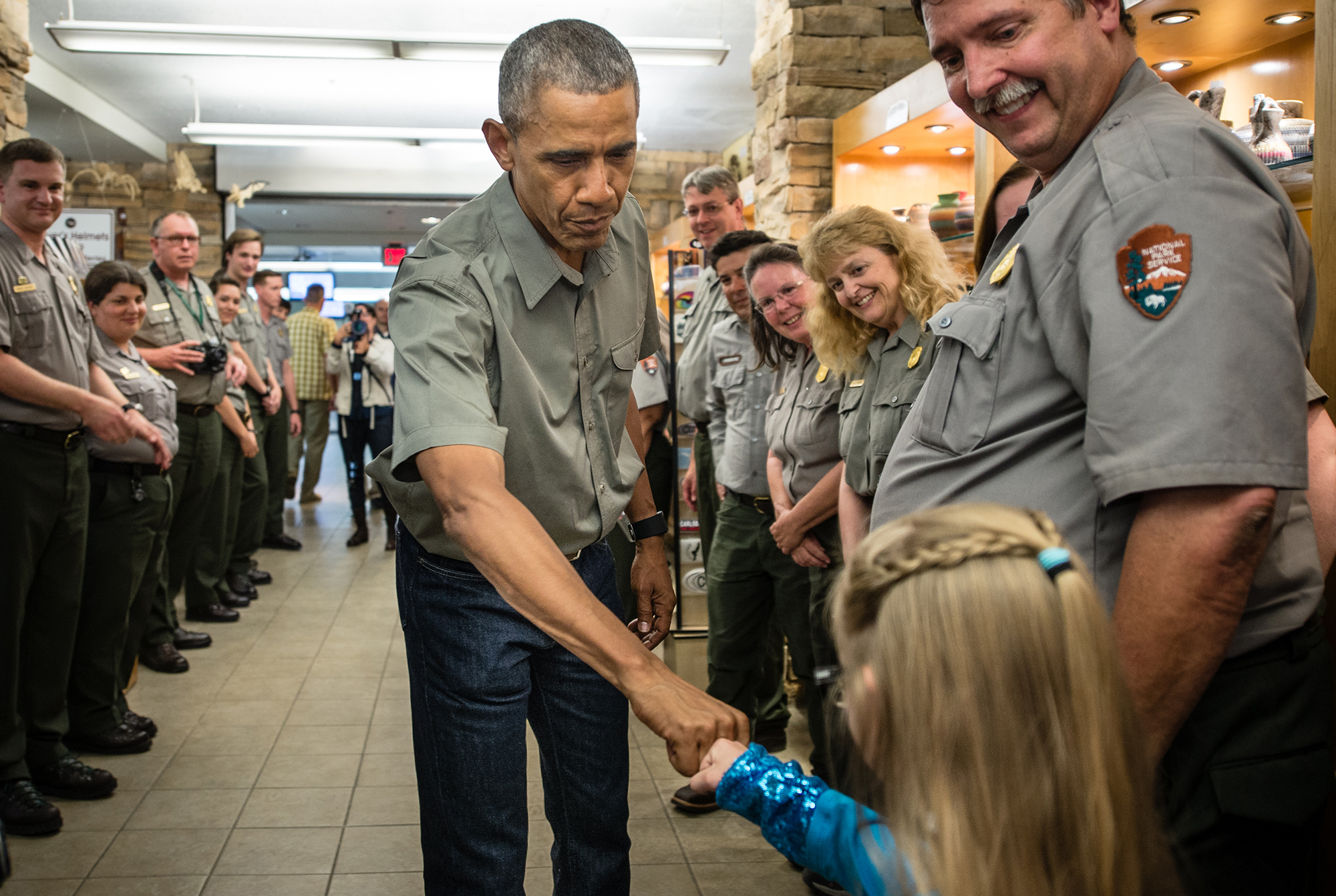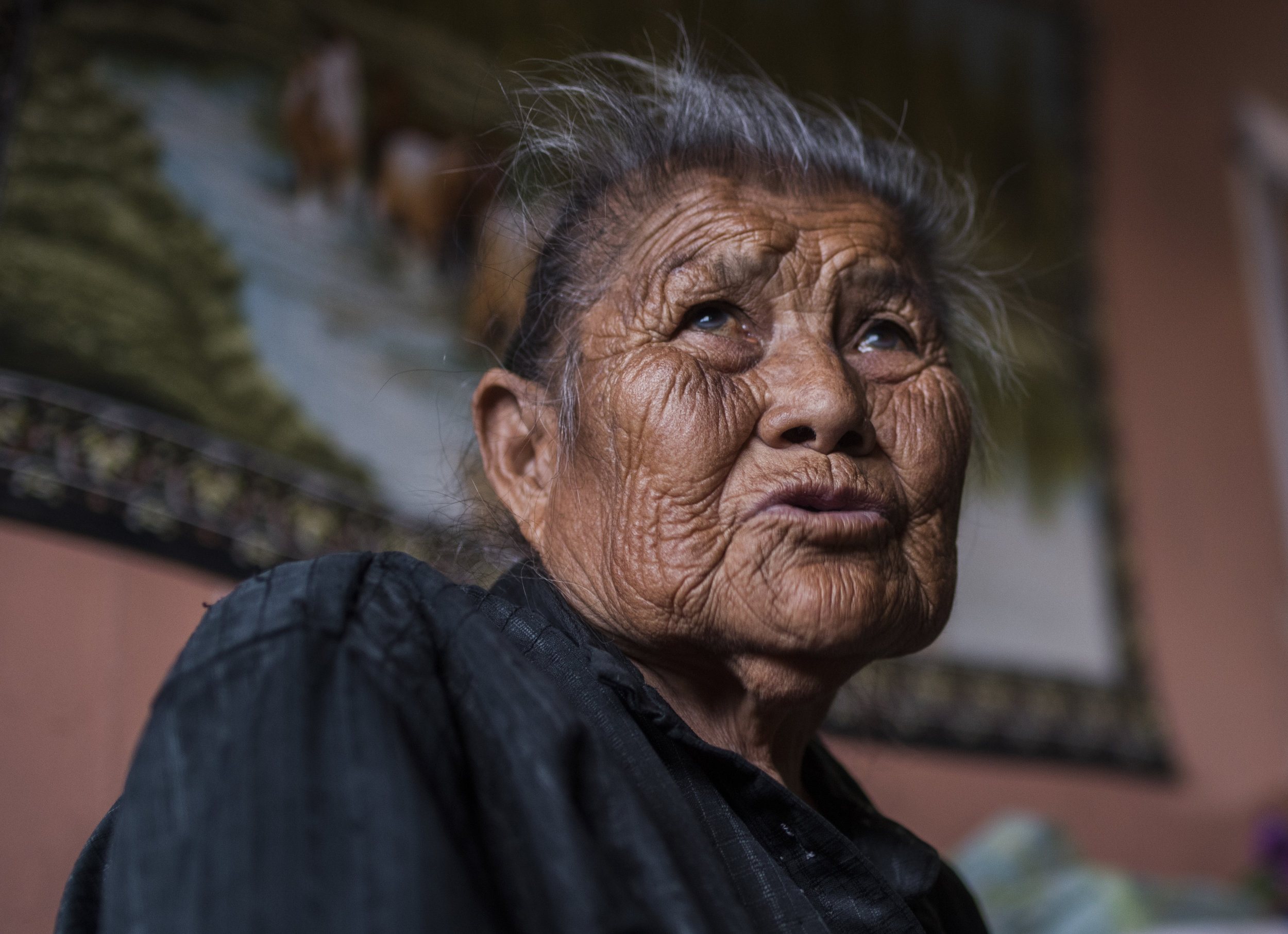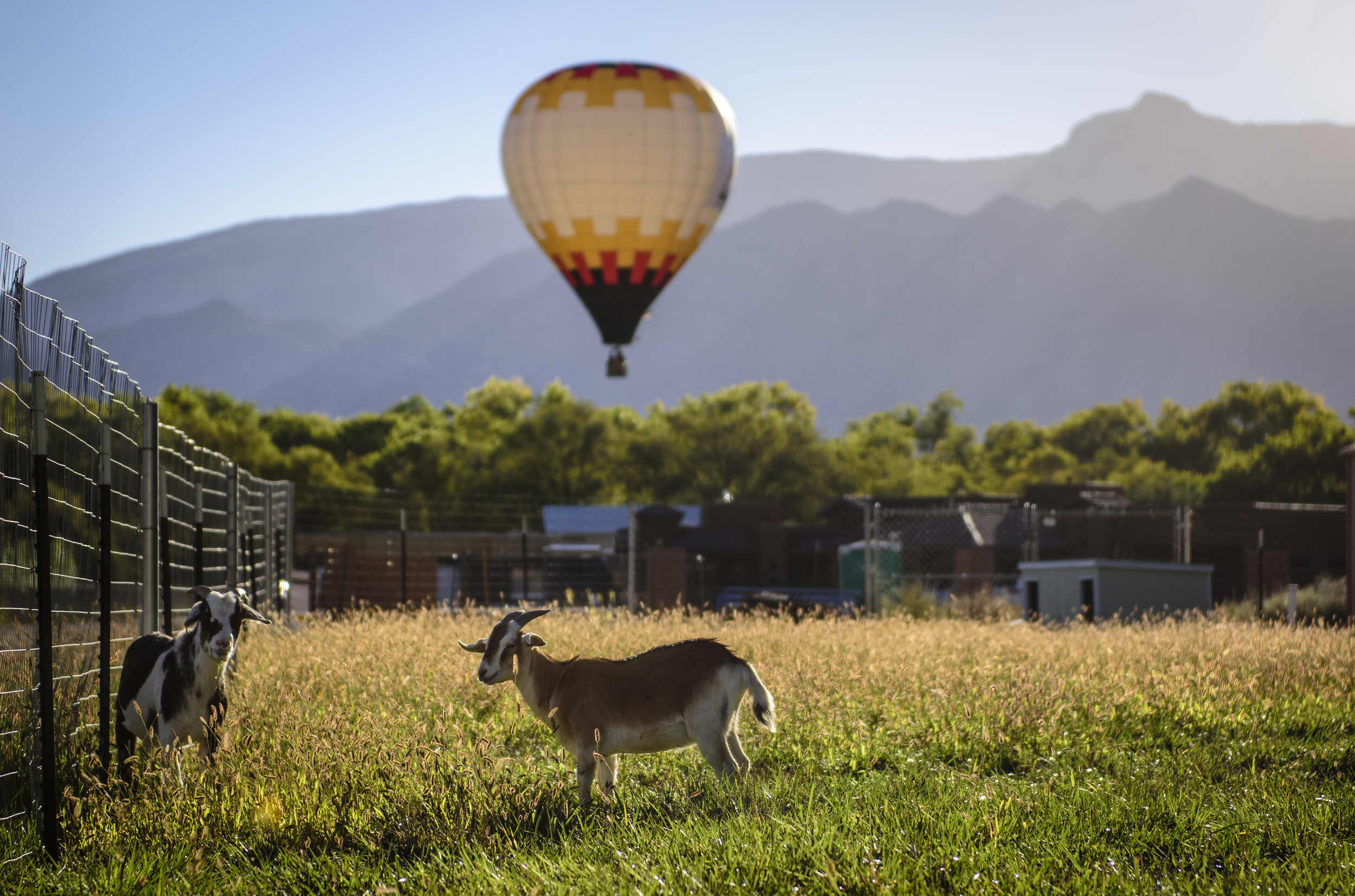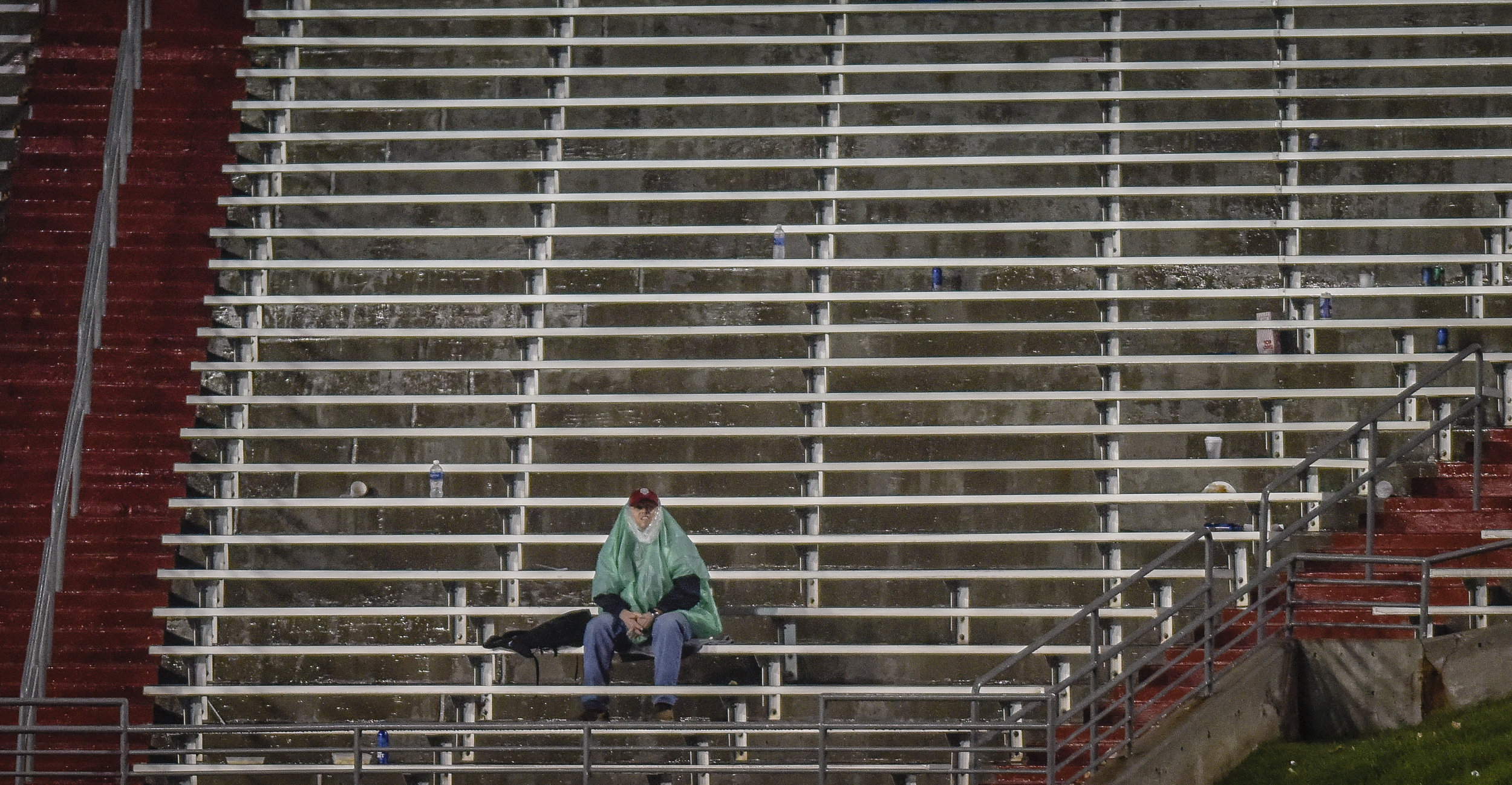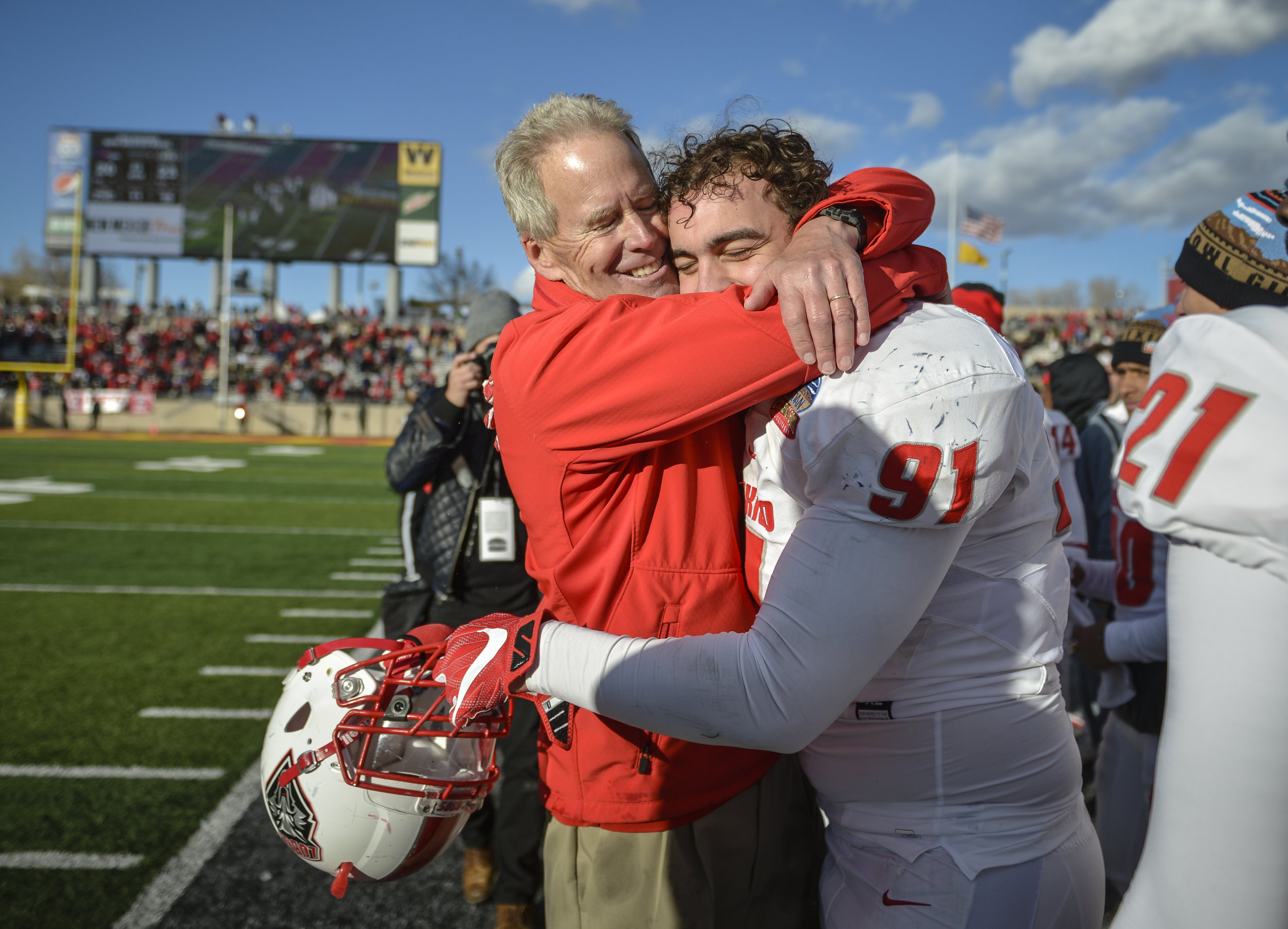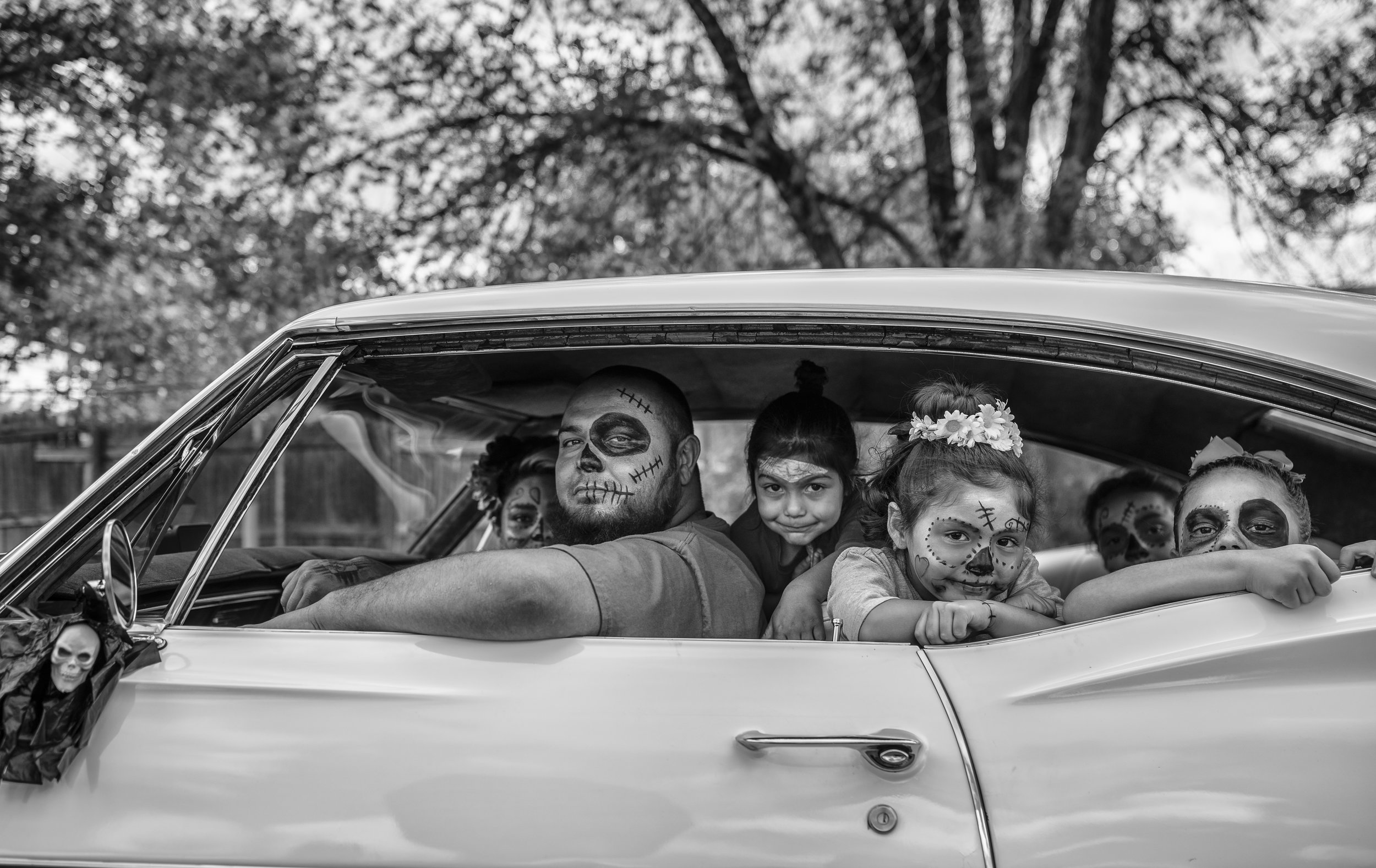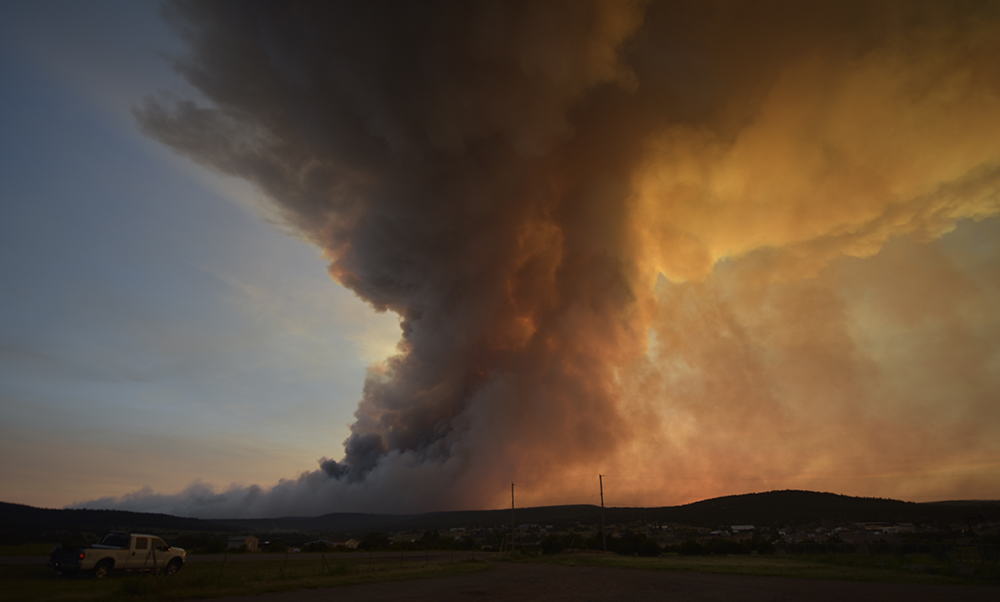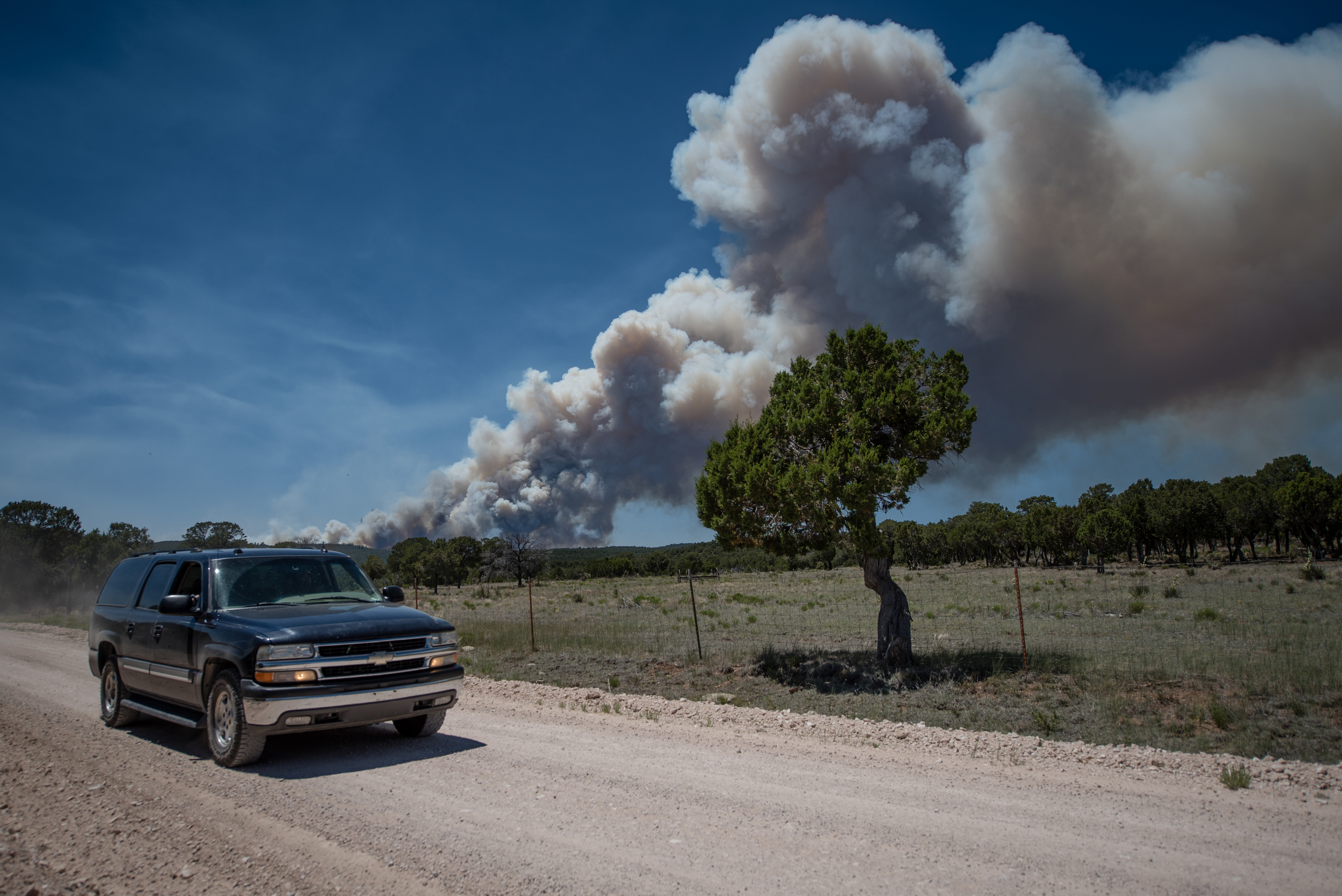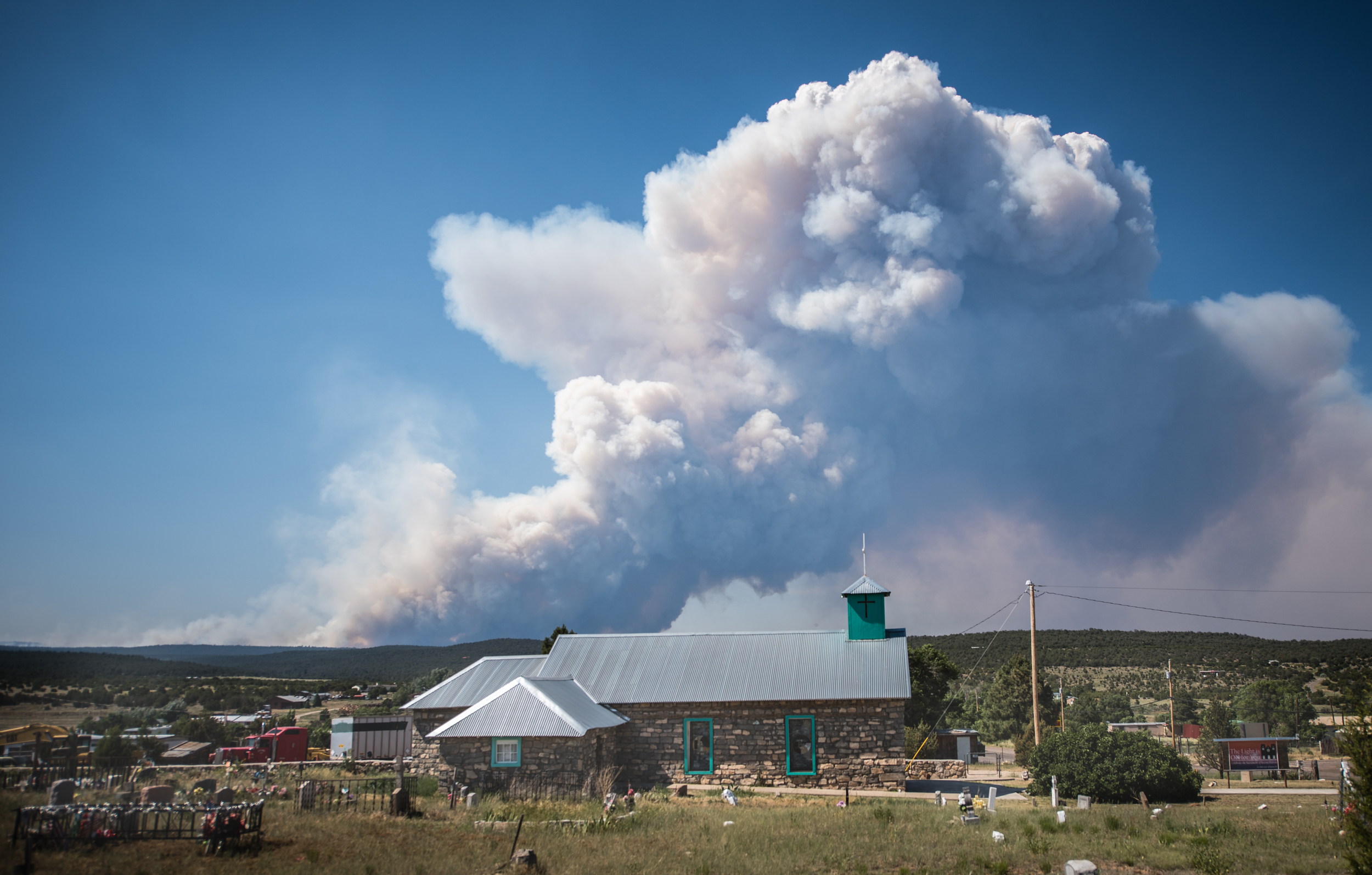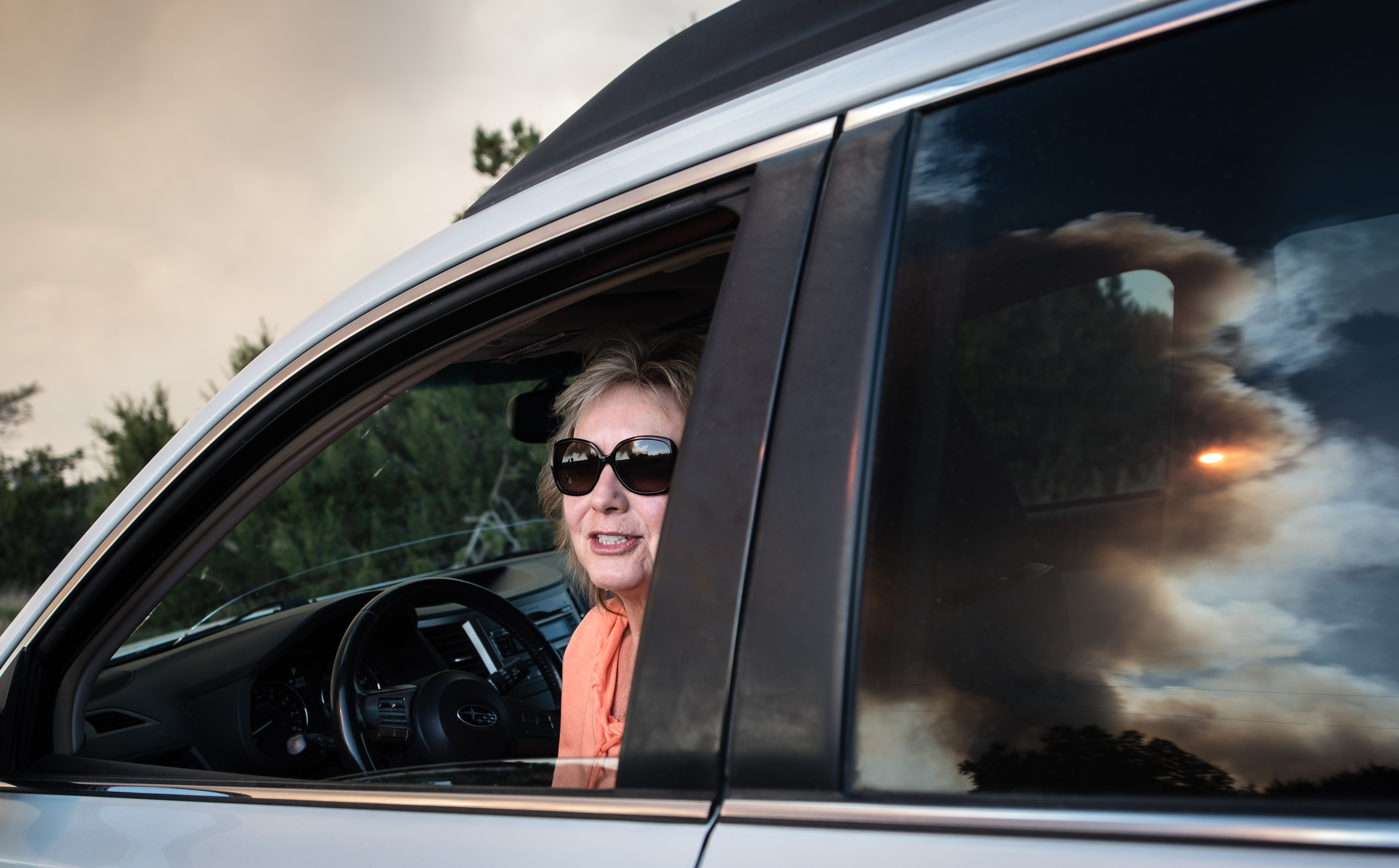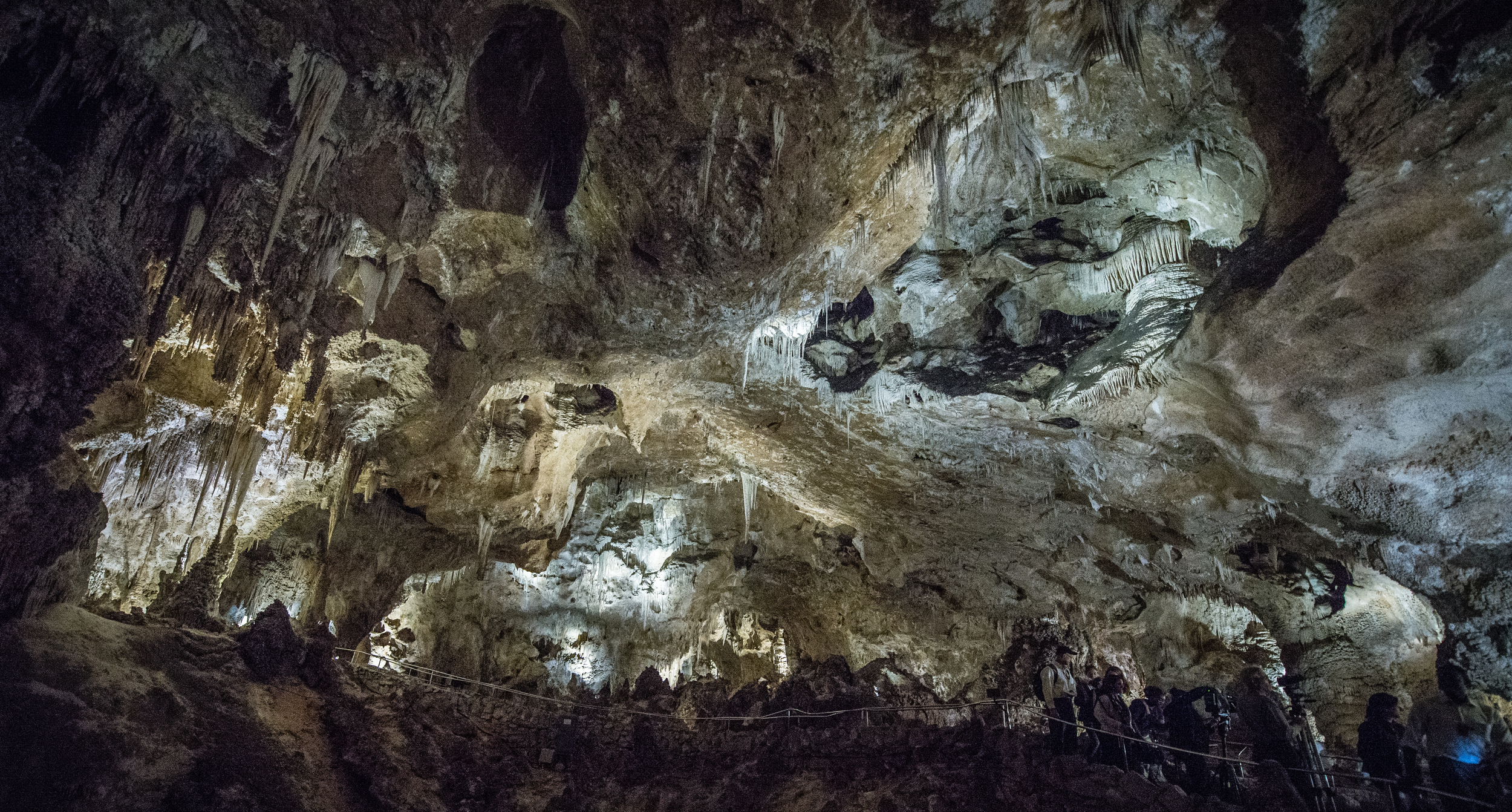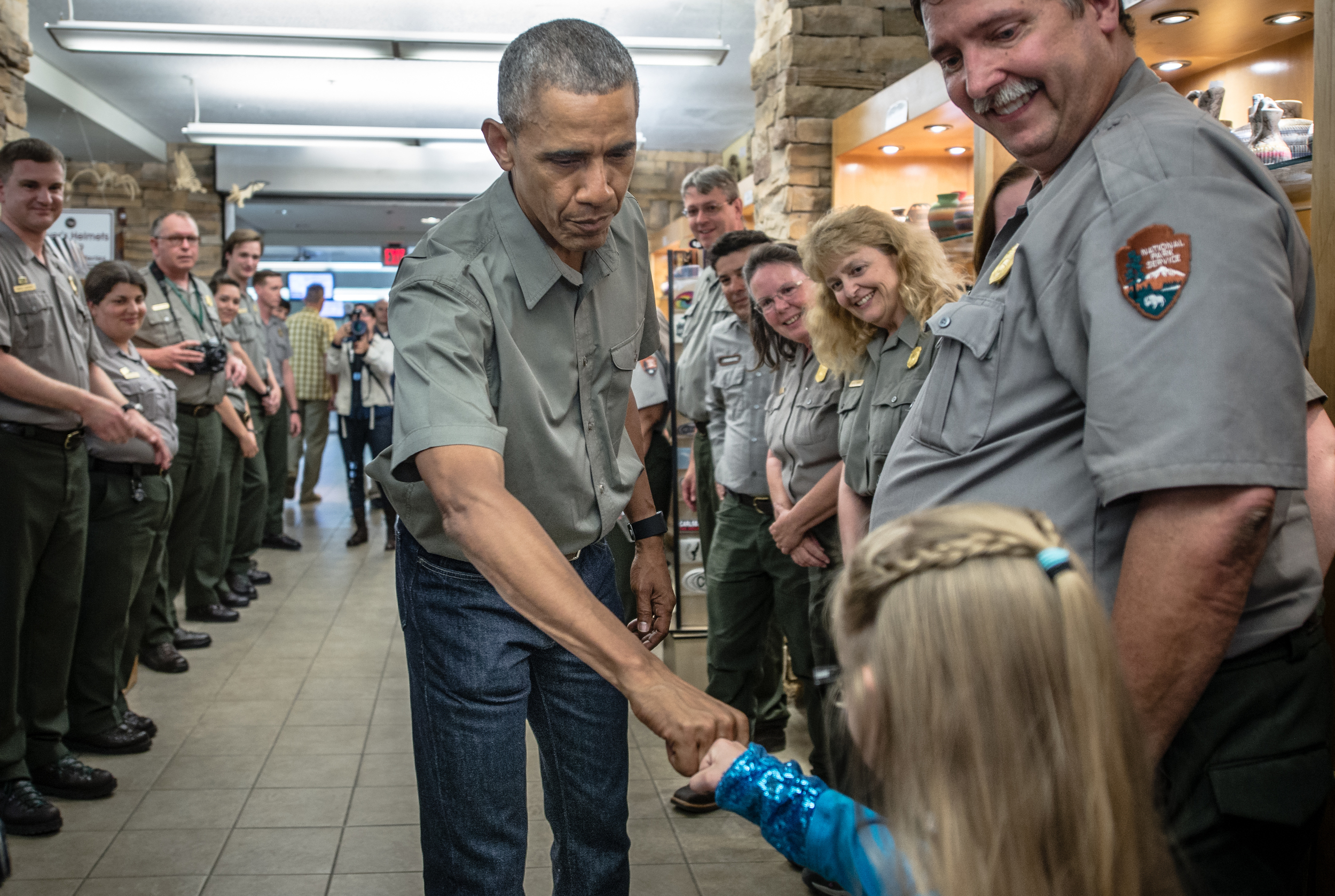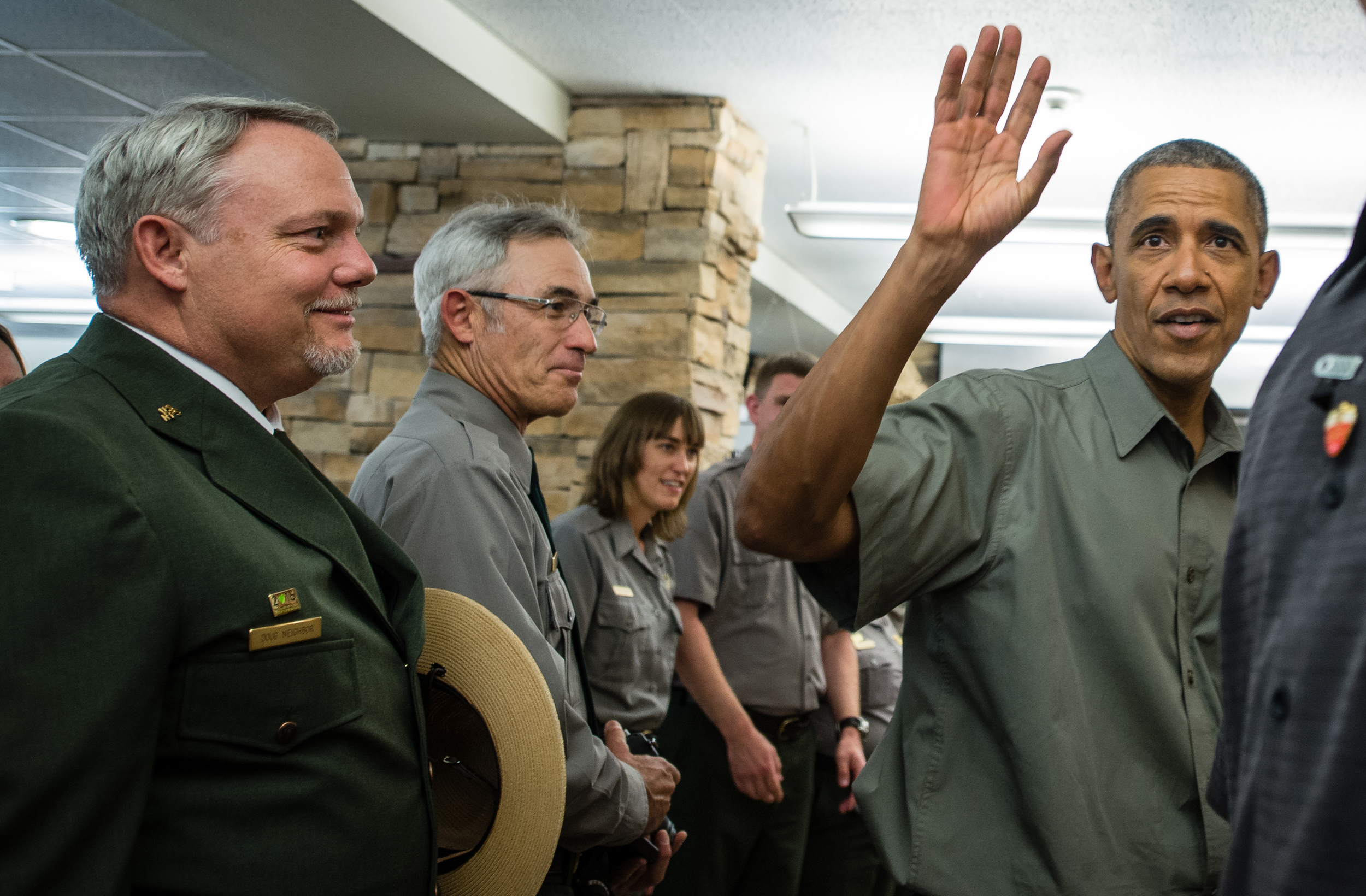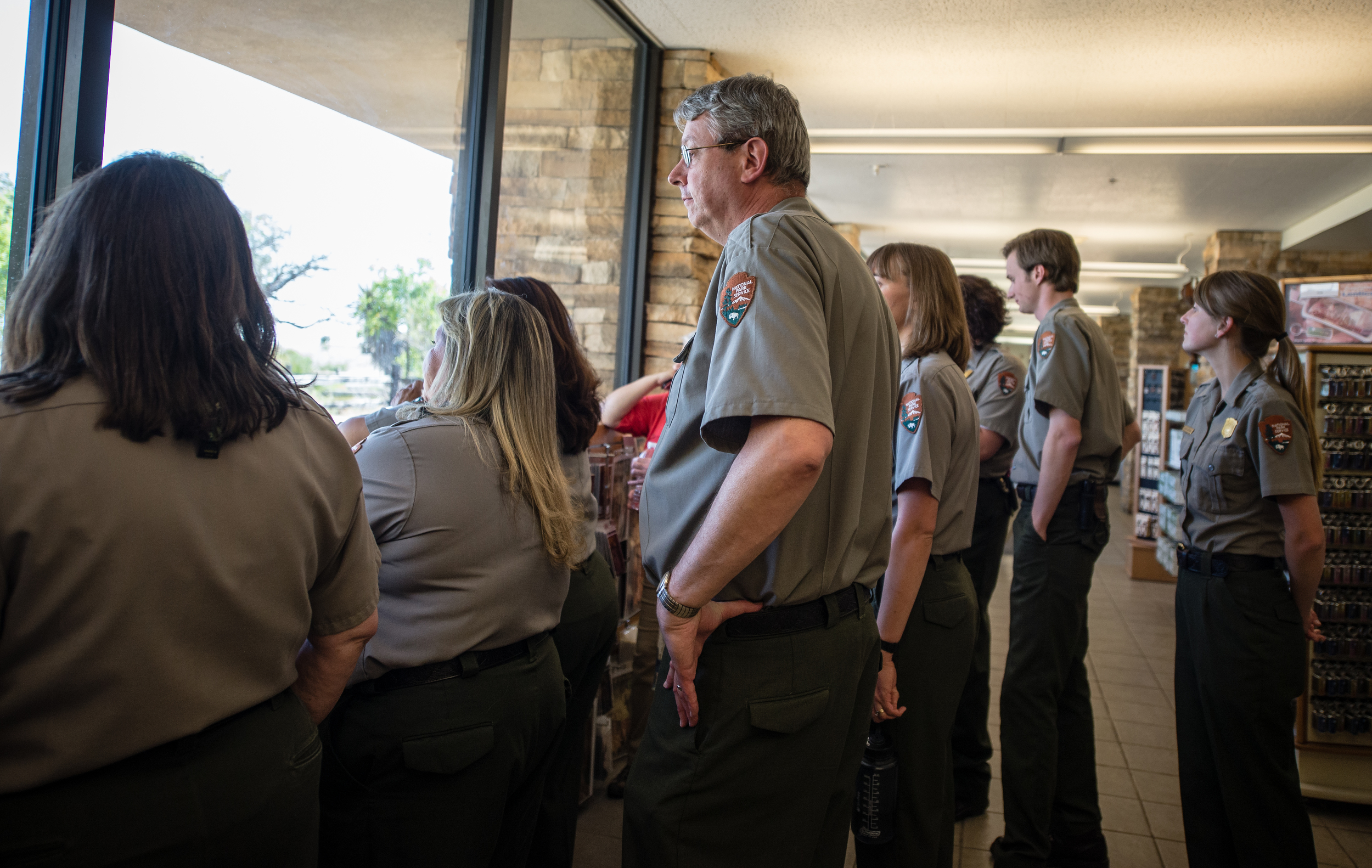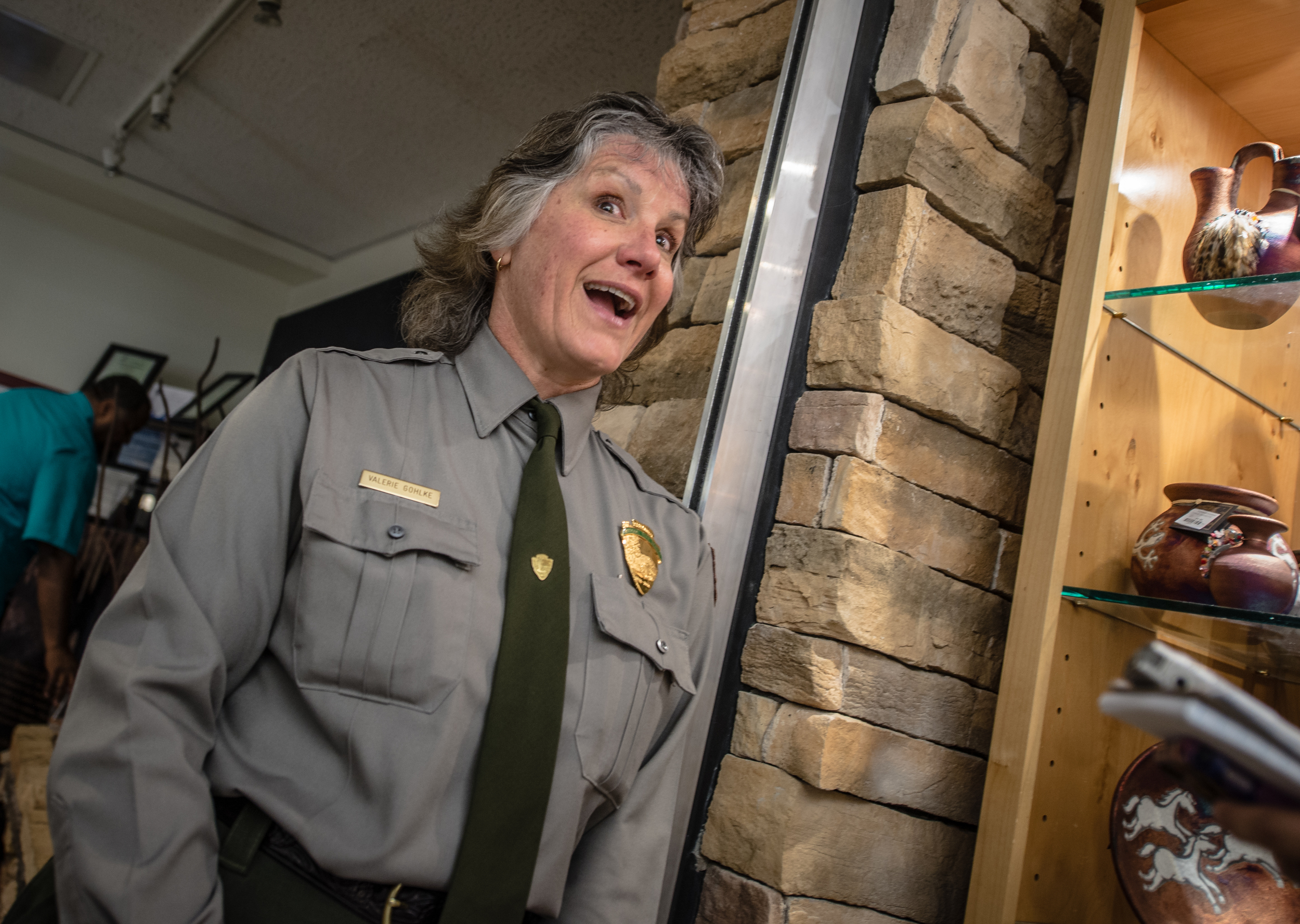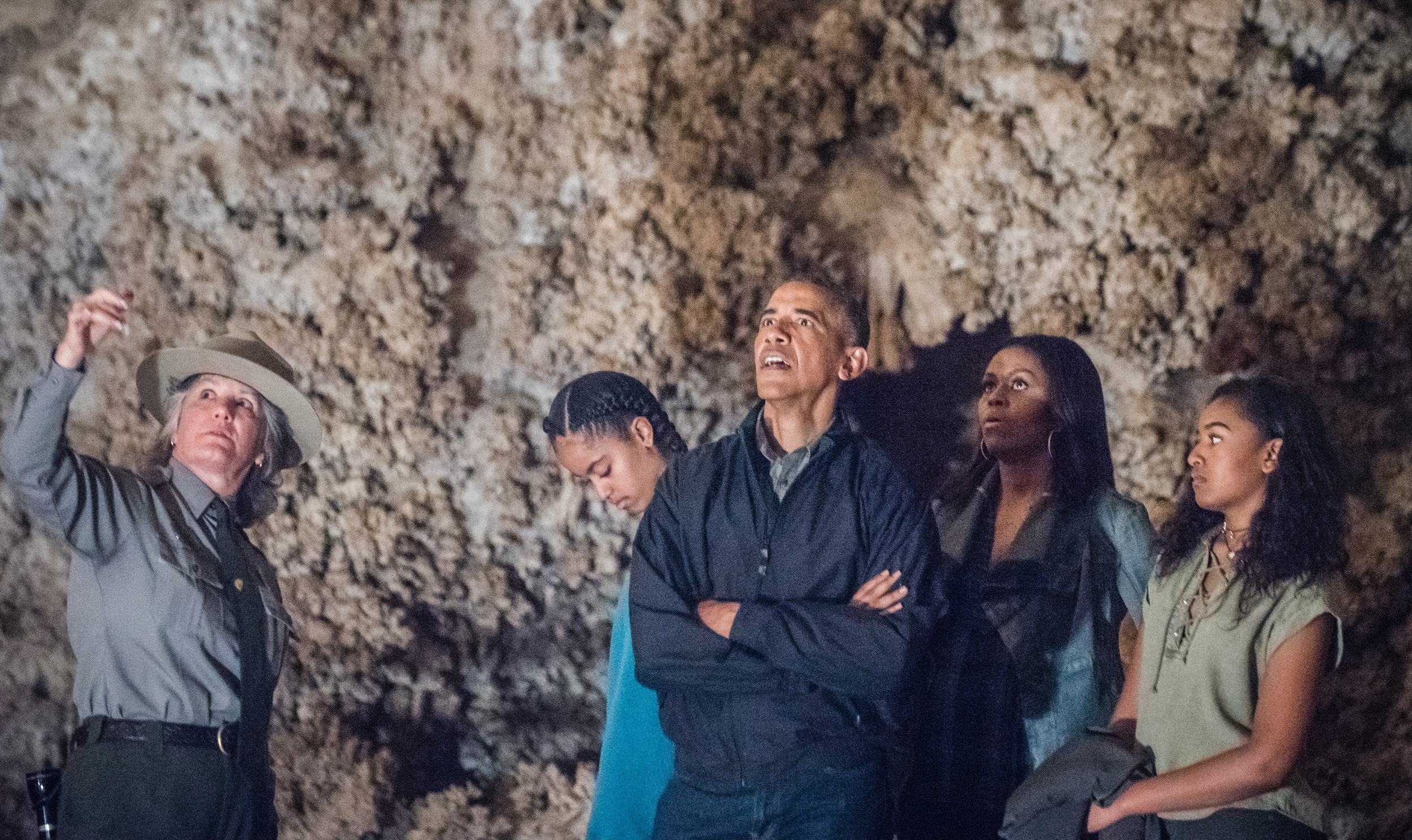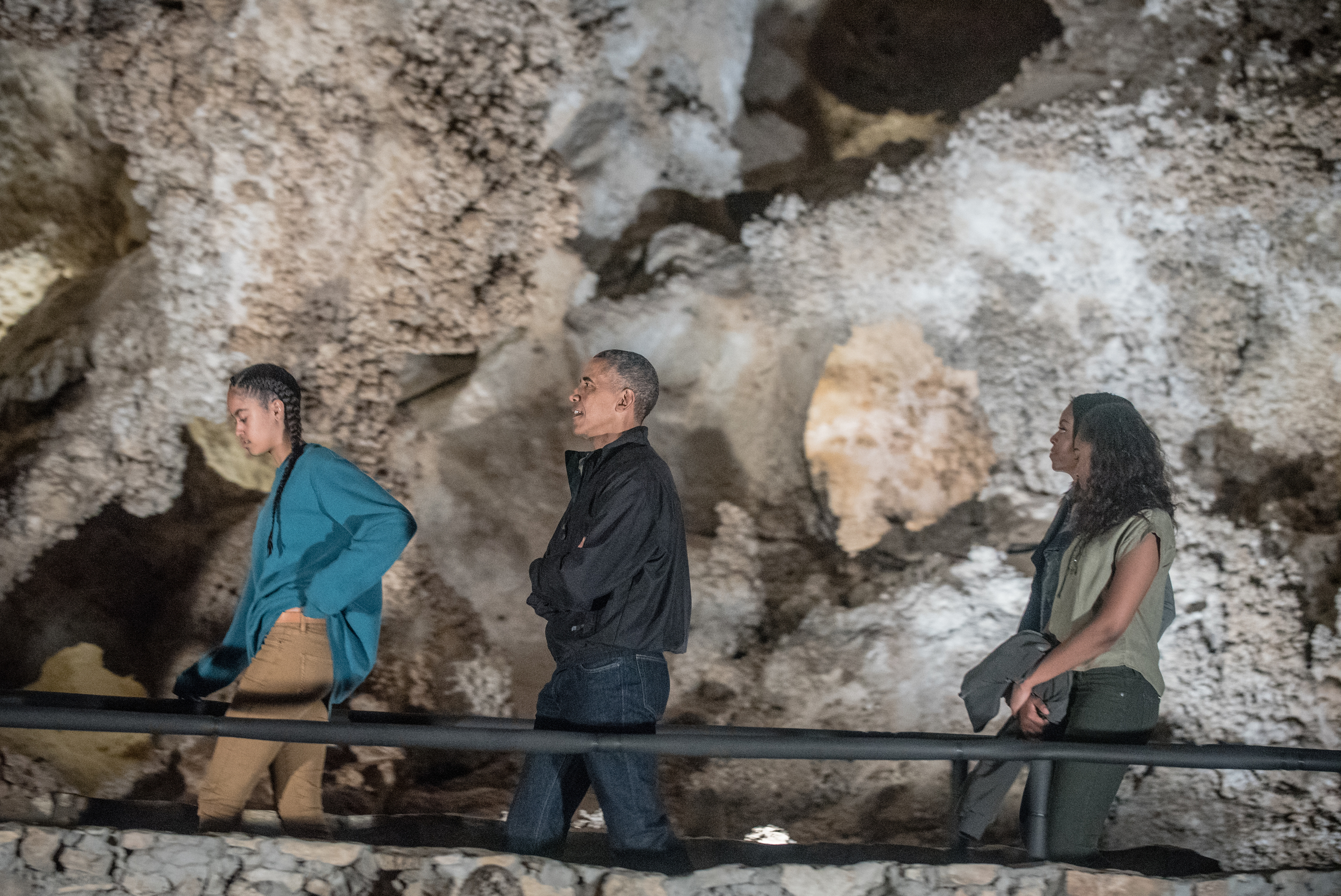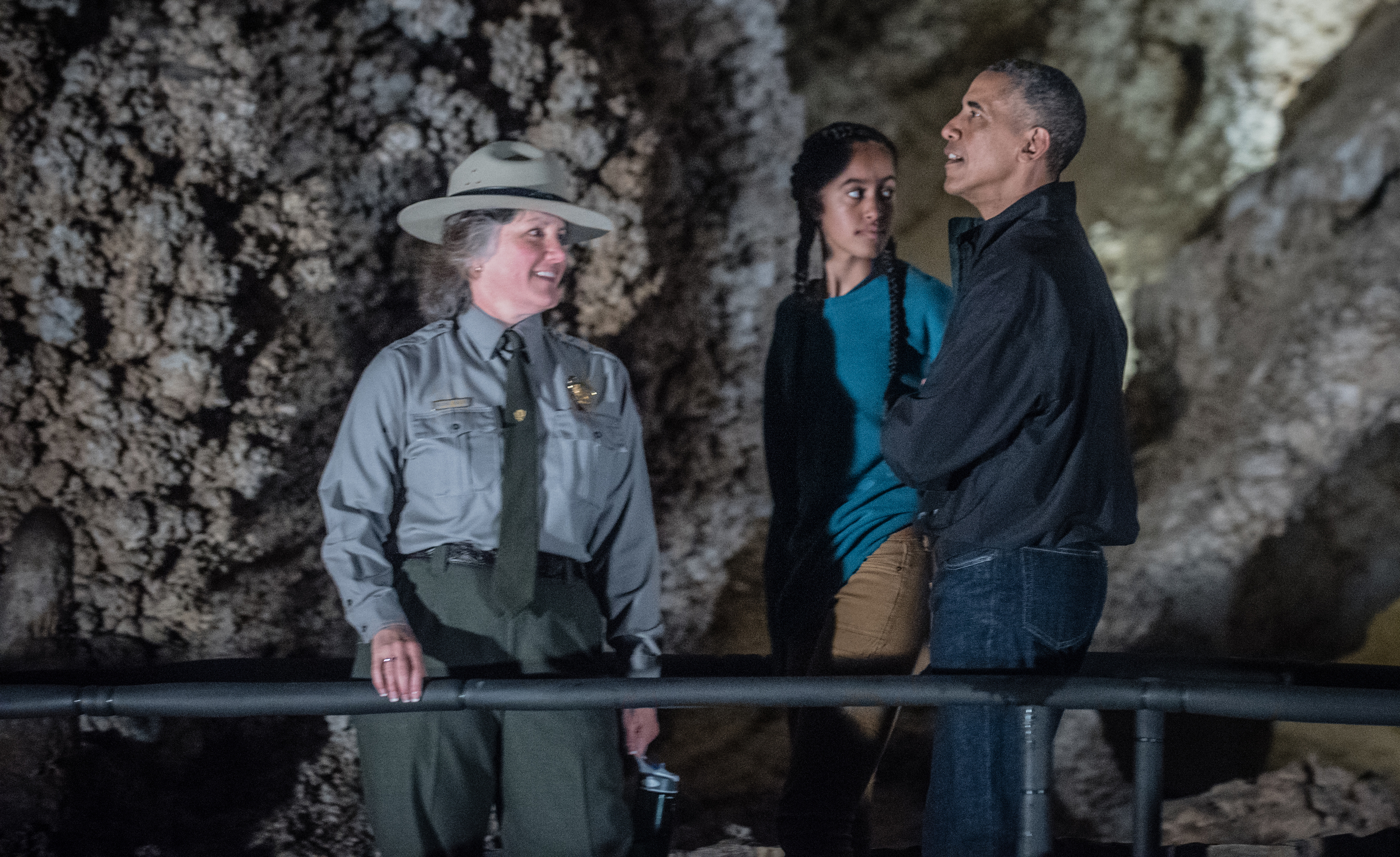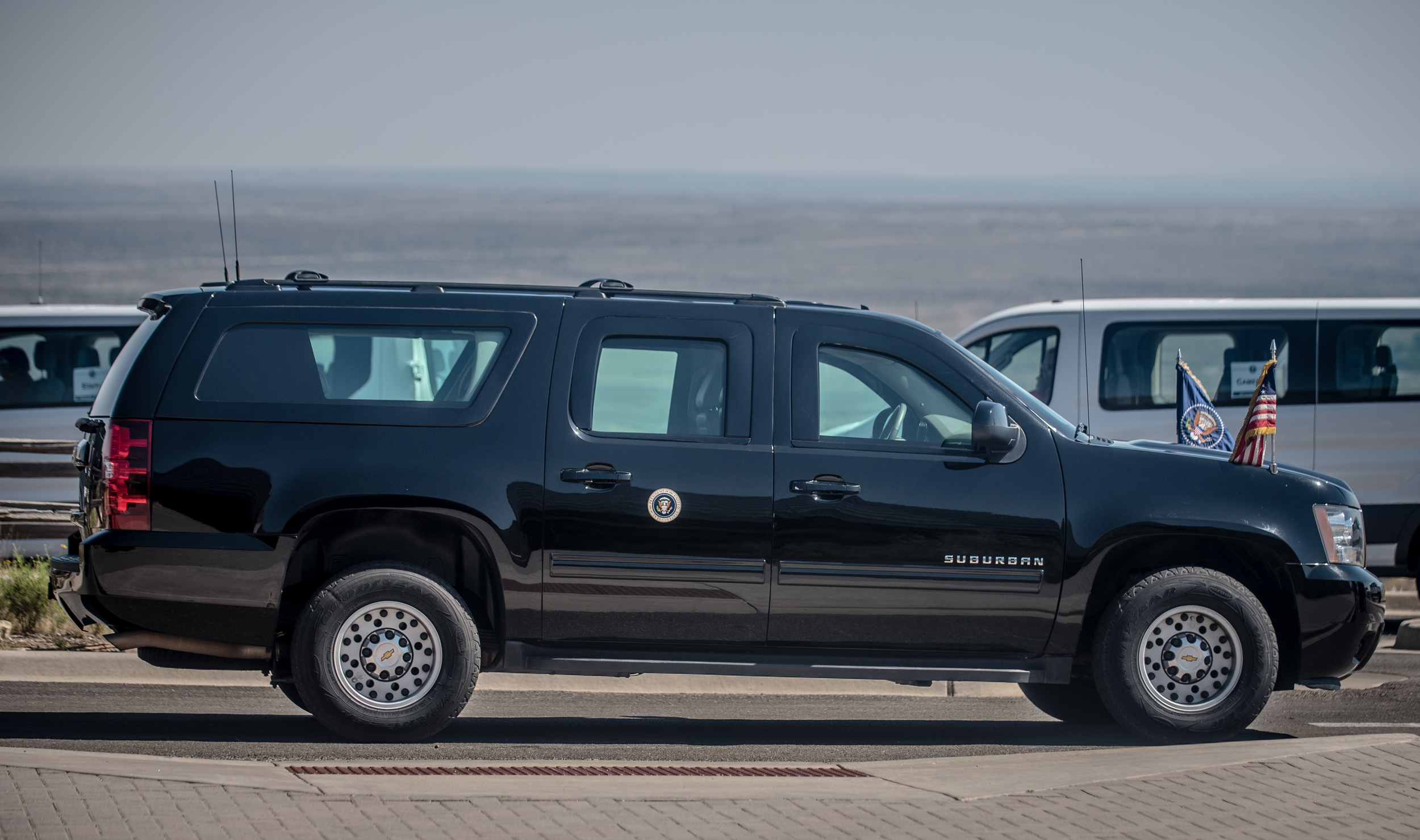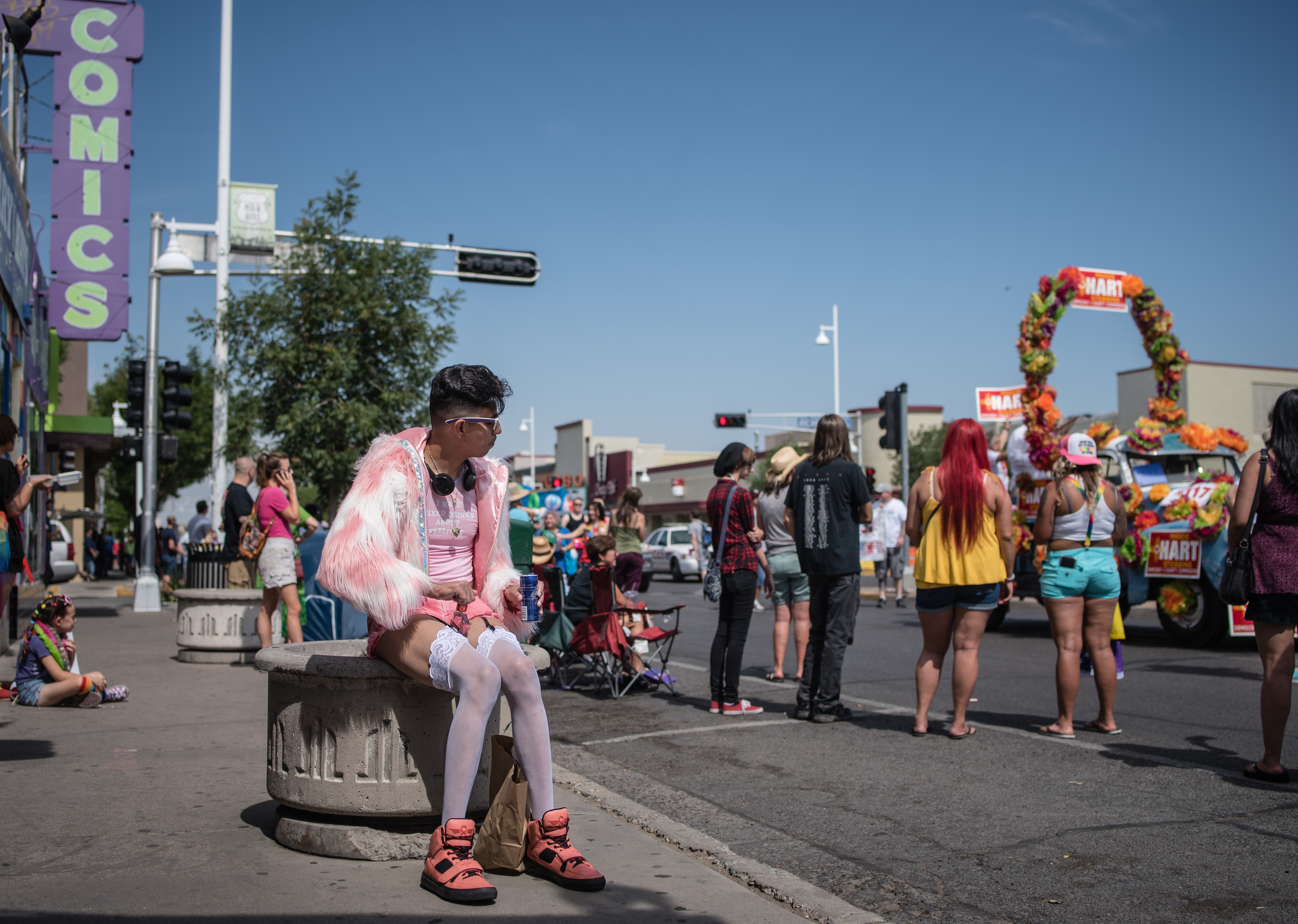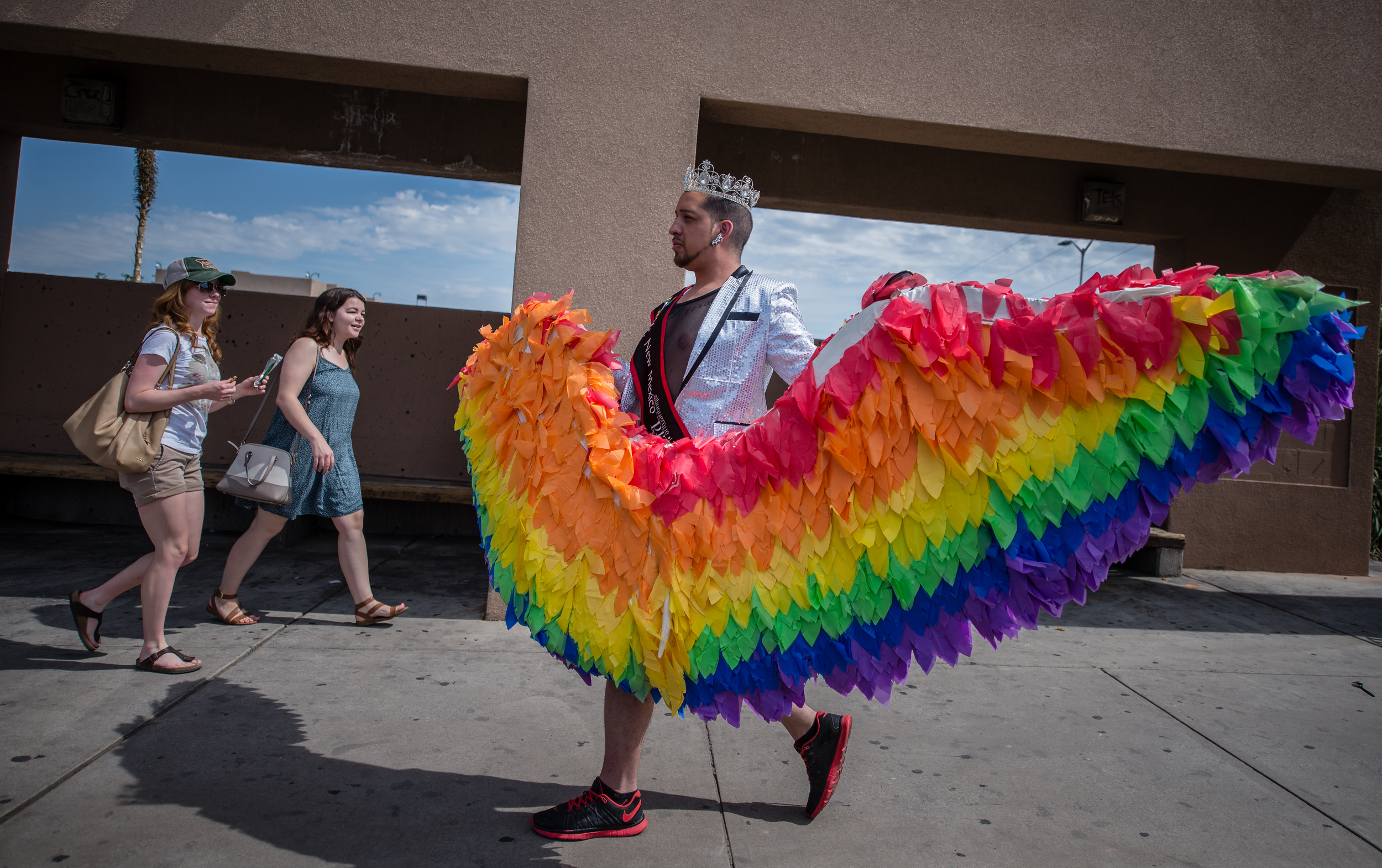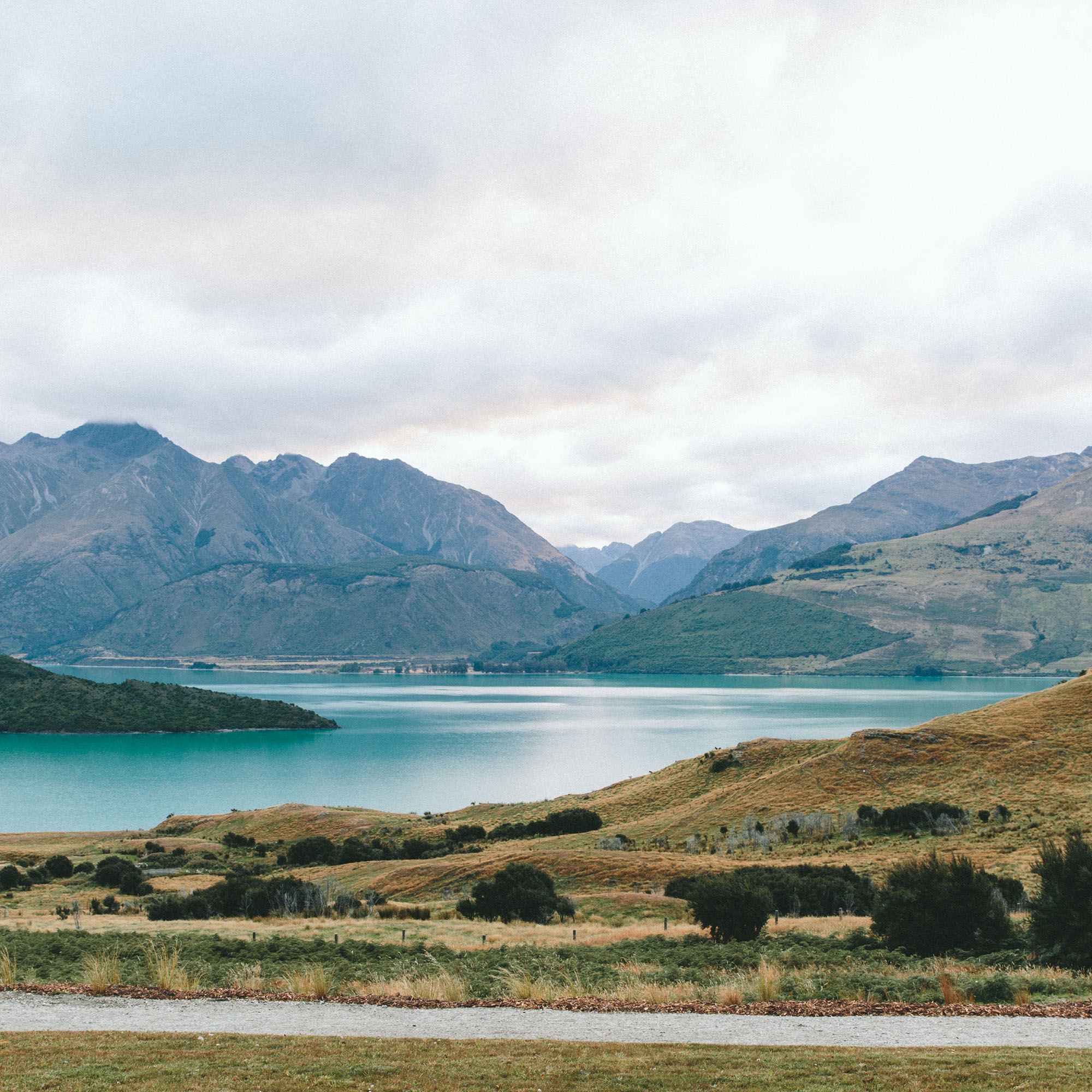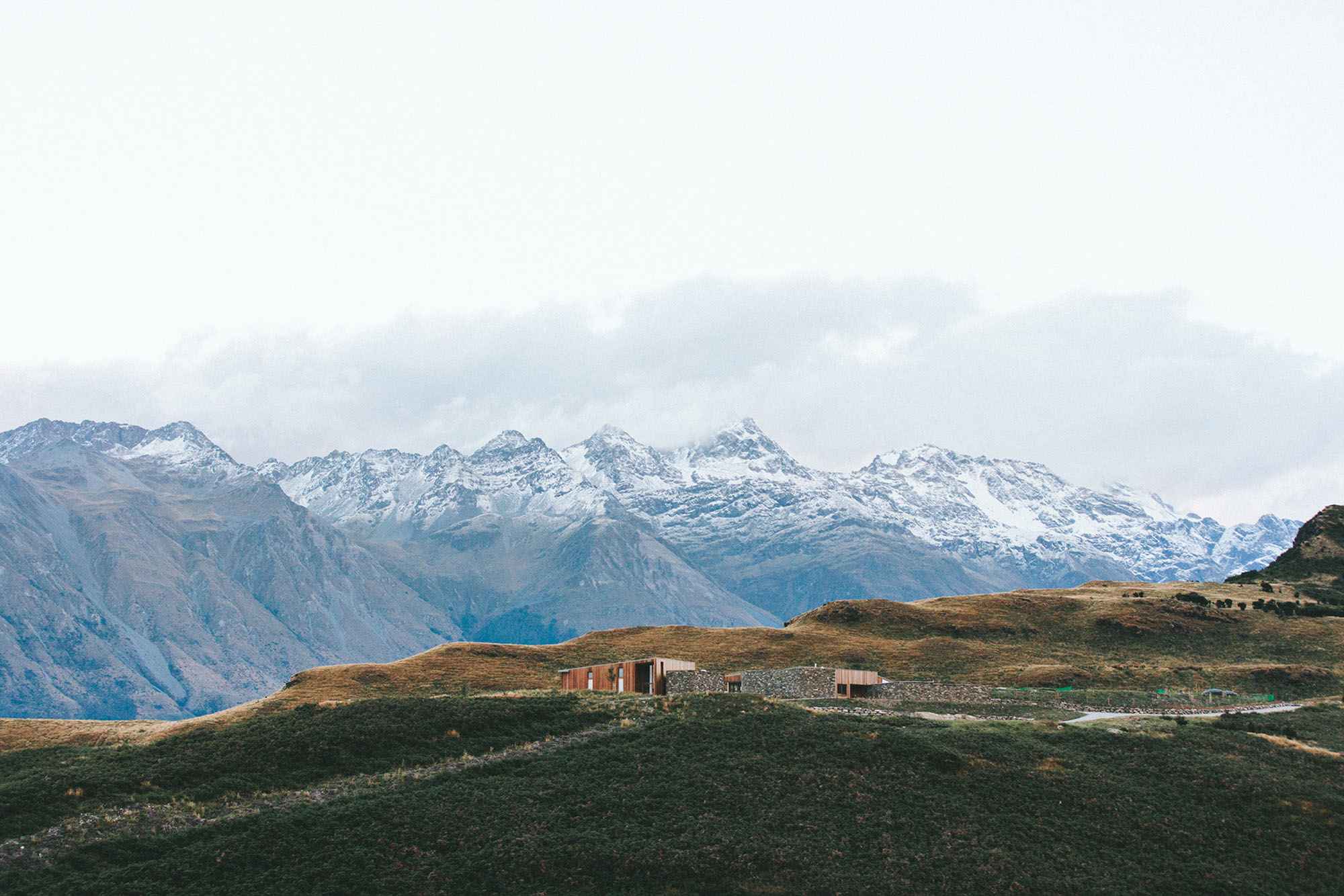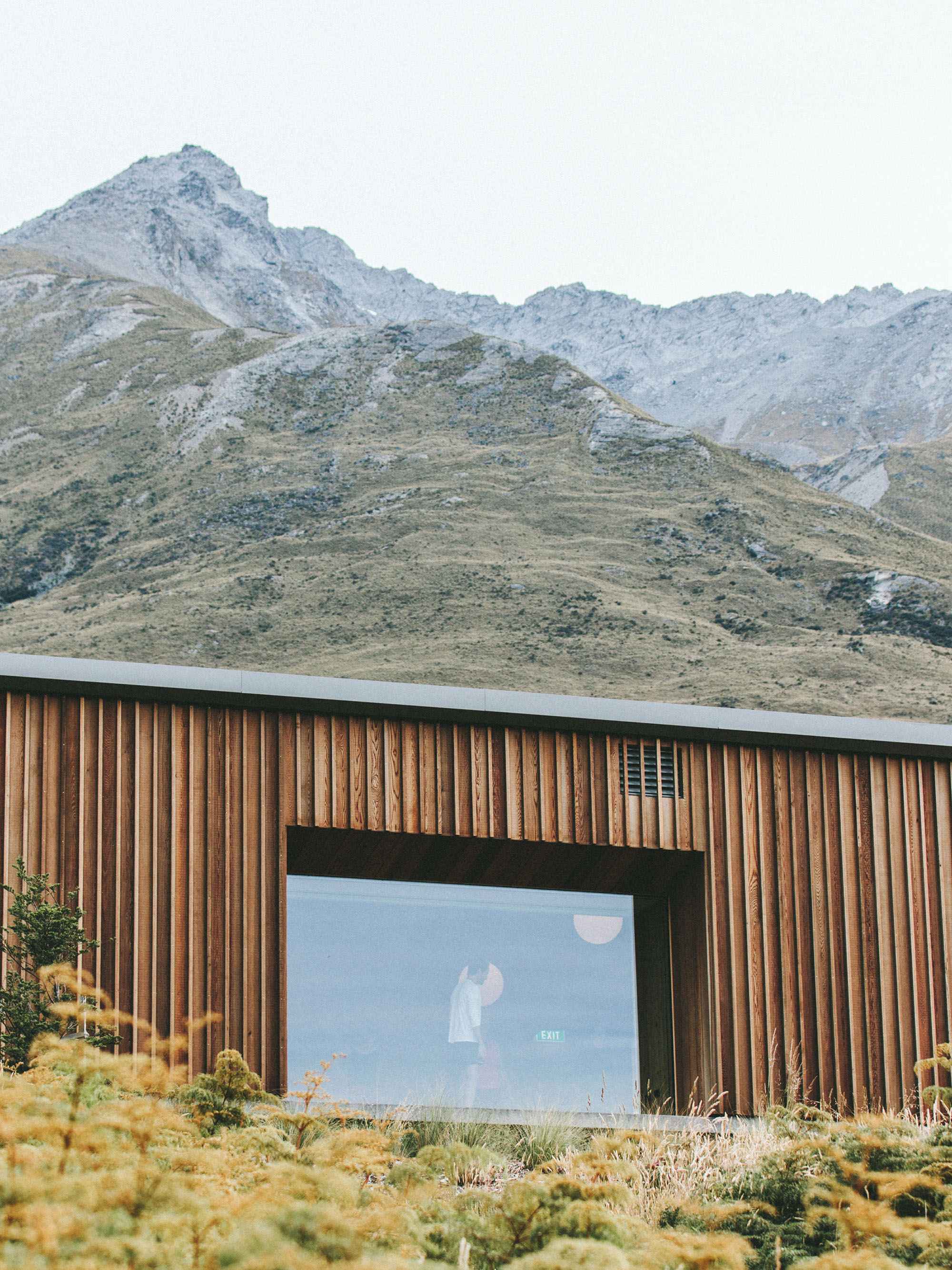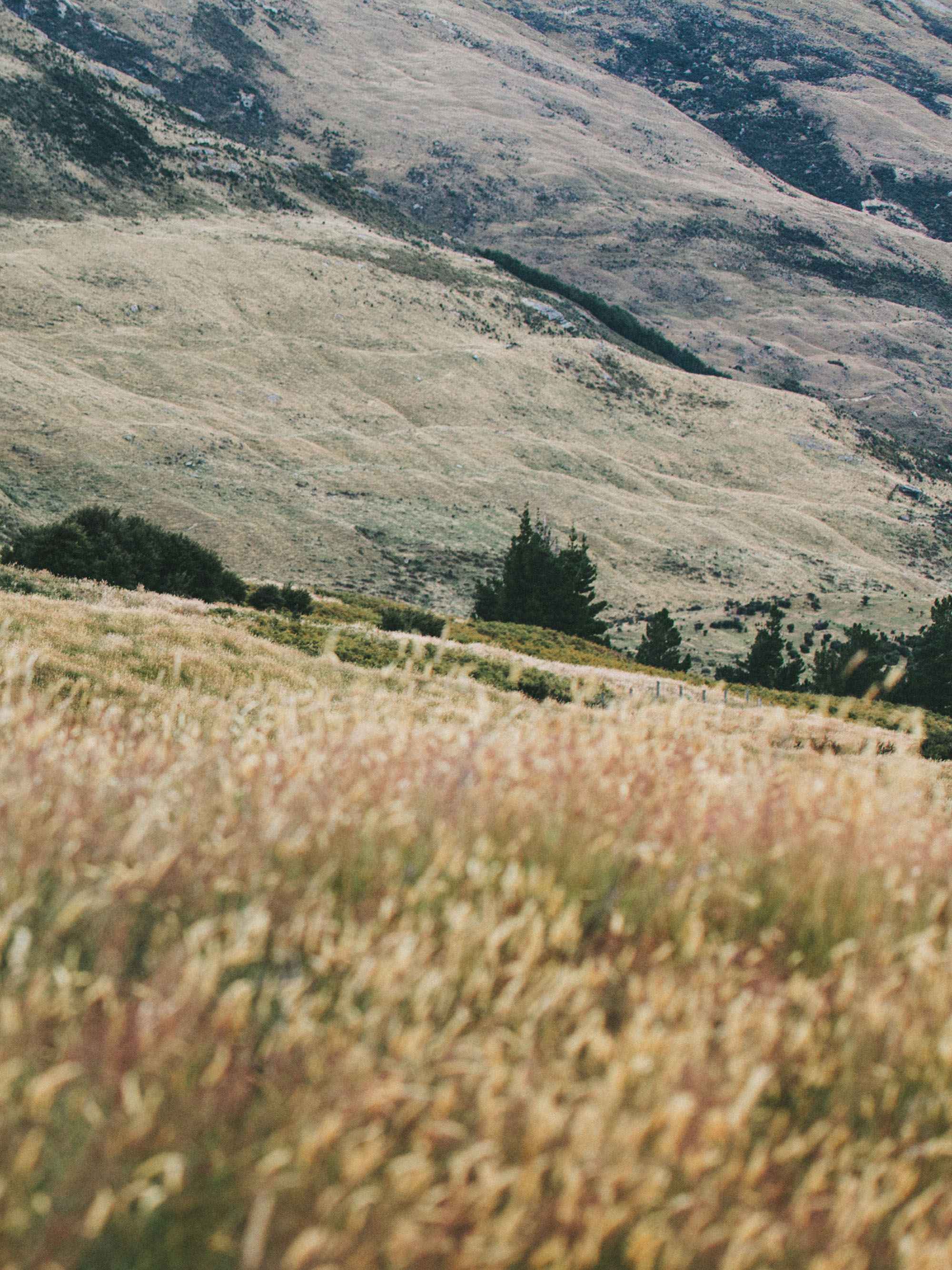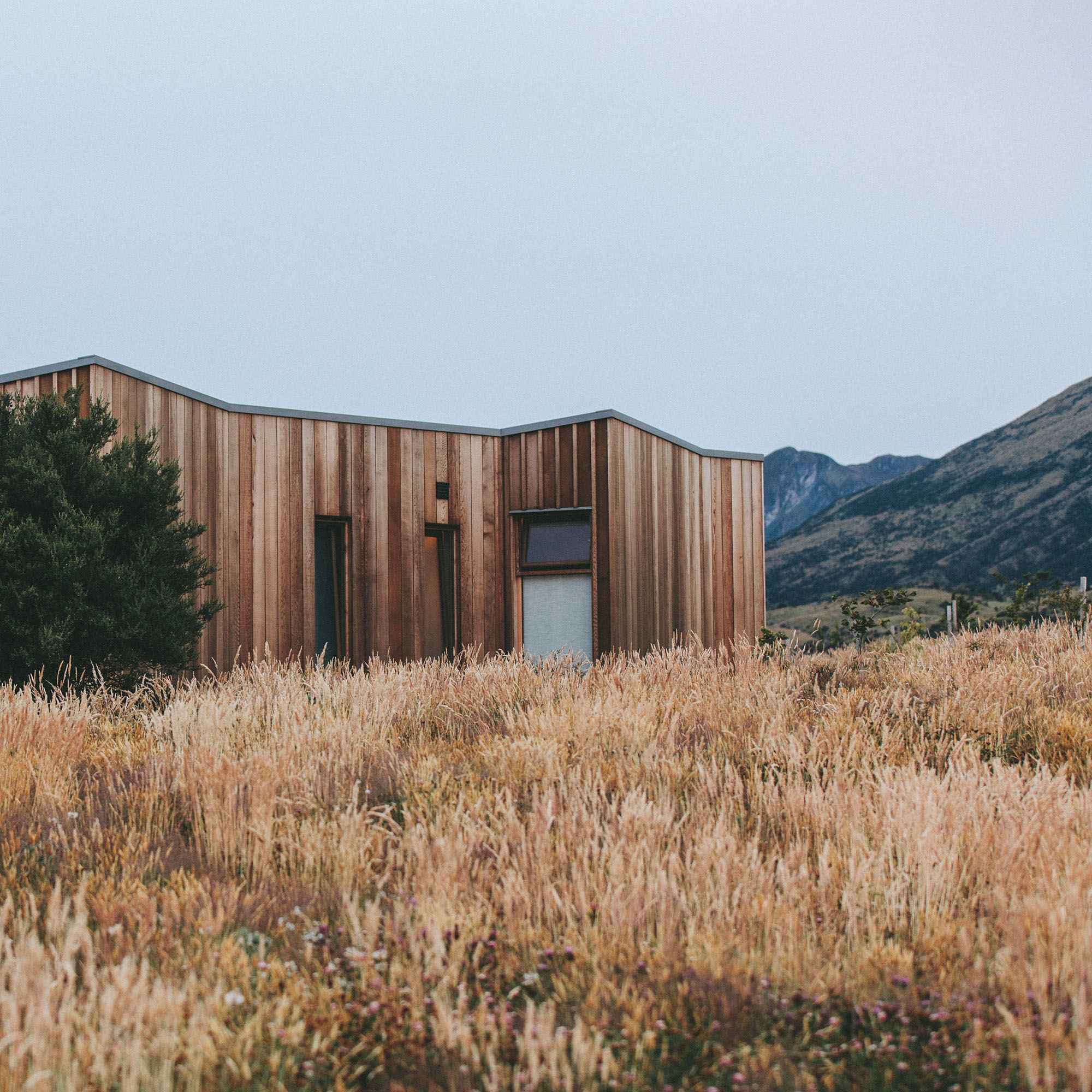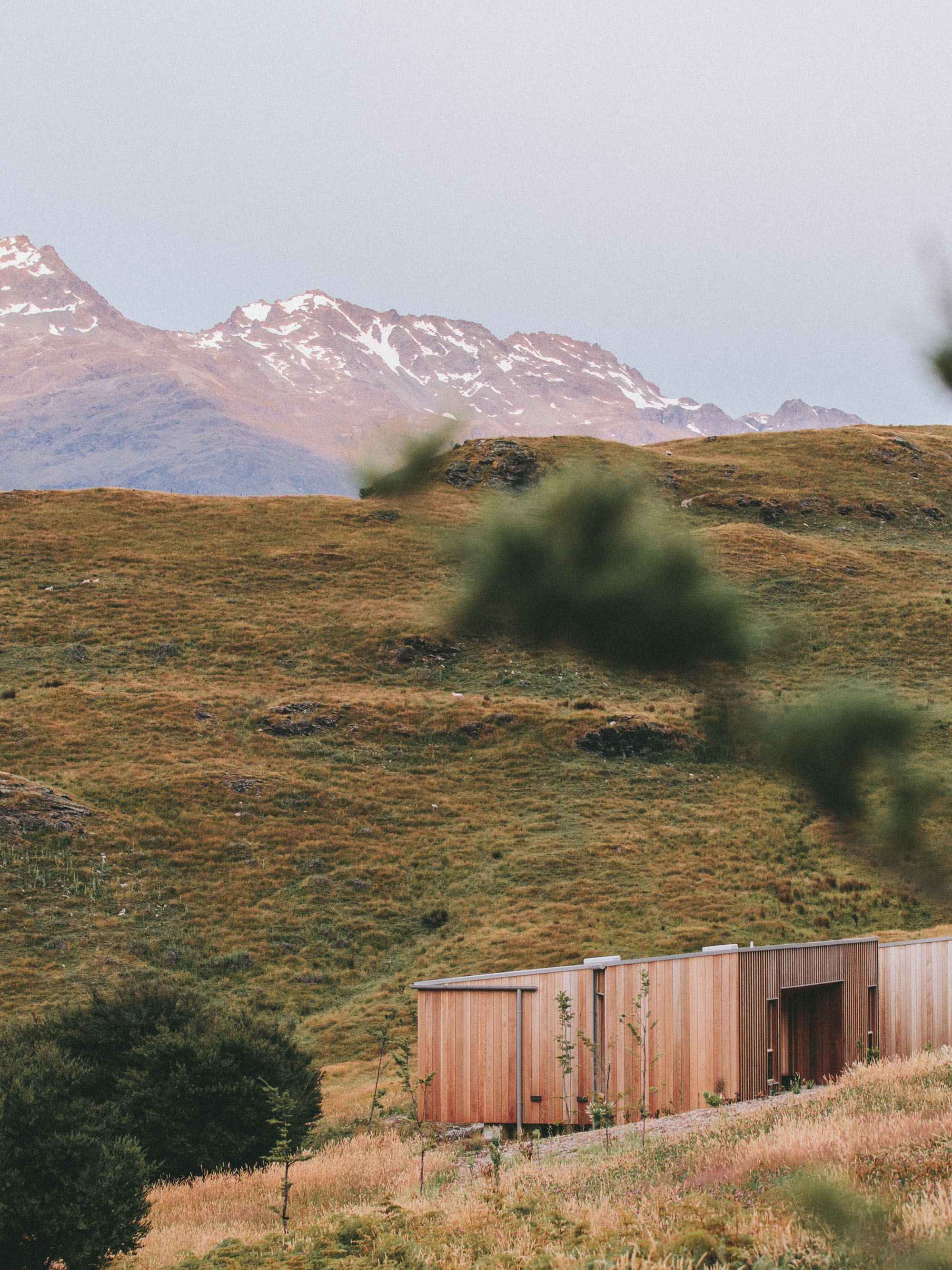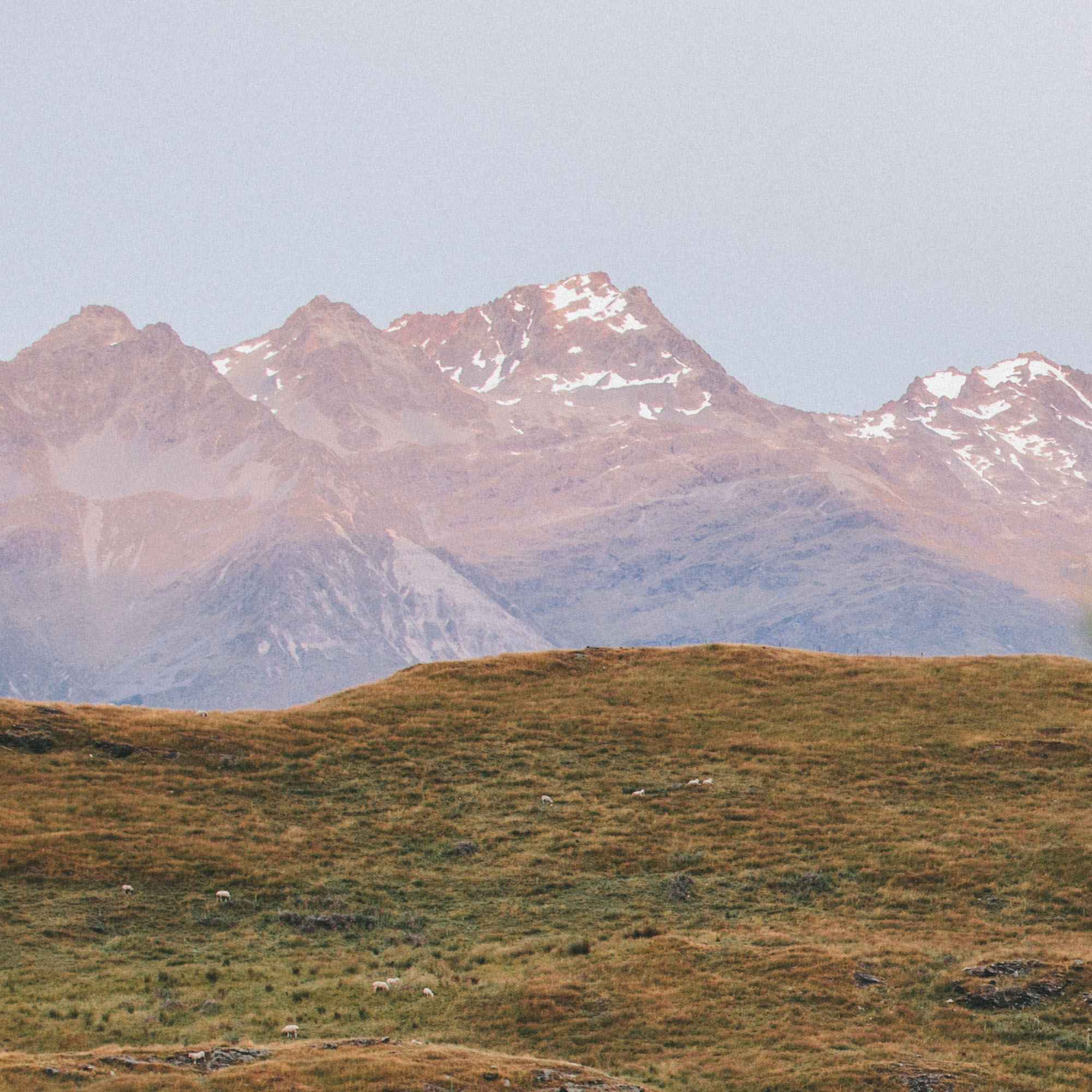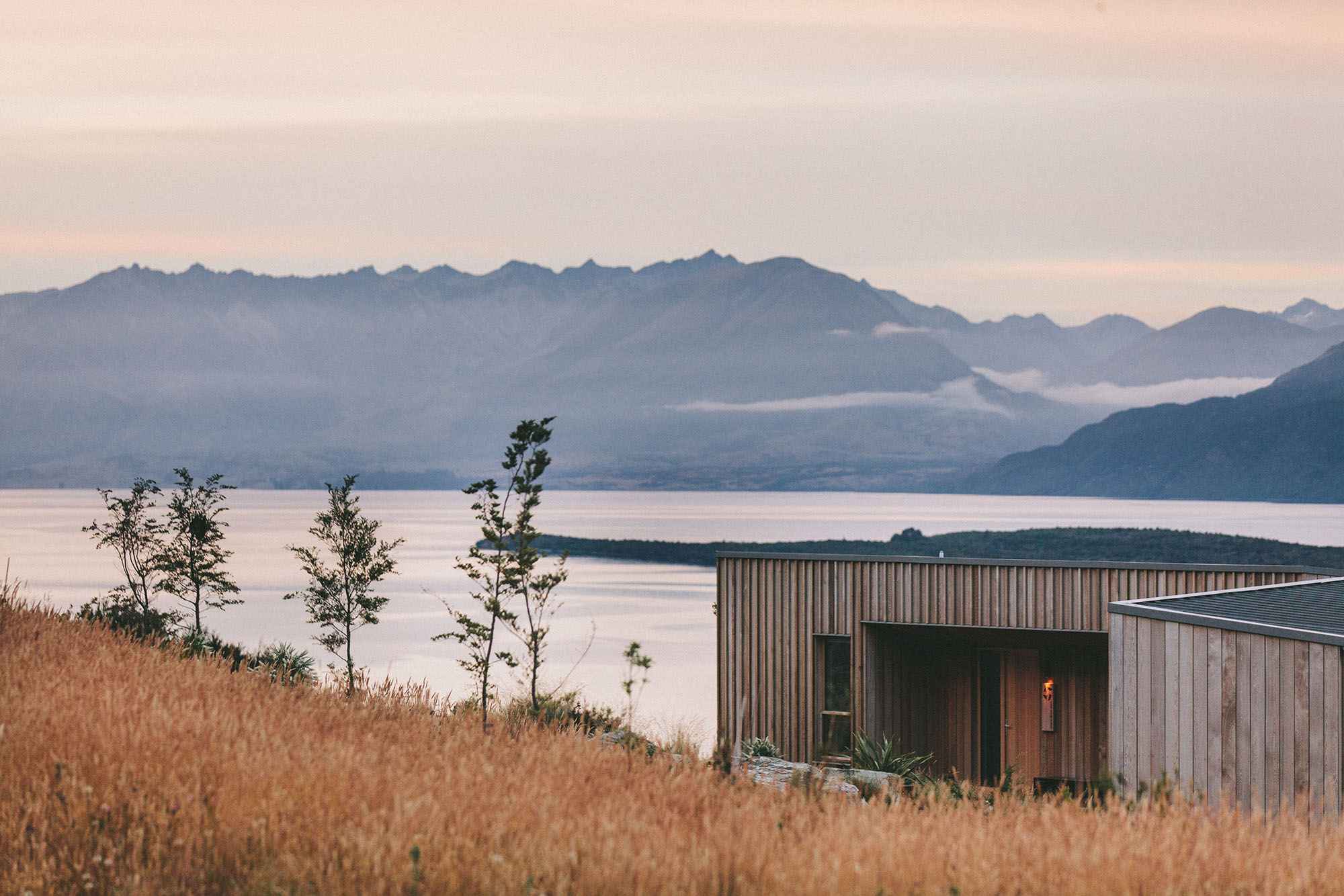‘Land that time forgot’
By Lauren Villagran
CORONADO NATIONAL FOREST – Wildlife biologist Fernando Clemente steers a six-man ATV over a gravel road that cuts through golden grasslands and shrub forest, over the dry beds of rivers that run only after monsoon storms. Mountains in Mexico ring the horizon.
“I understand that homeland security is important for everybody,” says Clemente, whose New Mexico Wildlife Services educates ranchers on both sides of the border in range management that benefits wildlife, the desert ecosystem and cattle grazing.
“The problem is,” he says, “a wall will stop everything except a person.”
Wild and unwalled, much of the landscape of New Mexico’s Bootheel extends seamlessly into Mexico. Wildlife experts say the Trump administration’s promise to build a “big, beautiful wall” on the border poses a special risk to plant and animal life in this region, home to one of the most biologically diverse corridors in North America.
“It is the land that time forgot, right there where the border is,” said Garrett VeneKlasen, executive director of the New Mexico Wildlife Federation, which represents more than 80,000 sportsmen statewide. “That is one of the most complex and significant wildlife corridors in all of North America. On the border, there are big gaps and holes – thank God – to allow that wildlife movement back and forth.”
But the region’s security challenges are evident in a sign near a Coronado National Forest entrance cautioning, “Smuggling and illegal immigration may be encountered in this area.”
Clemente is driving a group that includes Deming Public Schools assistant superintendent and avid sportsman Ray Trejo; Gabe Vasquez, southern New Mexico coordinator for the Wildlife Federation; and Zen Khan, a Burrell College of Osteopathic Medicine student who hopes to practice wilderness medicine.
Clemente is carrying a sidearm for a reason.
The Bootheel is a known route for drug mules trekking north to Interstate 10 with 60-pound sacks of marijuana on their backs. The corridor is also used, less often, by economic migrants entering the country illegally. With only a few rough roads, no cellular service and an understaffed station, the Bootheel has long been a challenging area for Border Patrol.
President Donald Trump wants to wall along the southern border, he has said, to stop illegal immigration and drug trafficking.
Touting the accomplishments of the first 100 days, the administration said last week in a statement that it has “received hundreds of bids” in response to two requests for proposals, one to build a “solid concrete border wall” and the other for prototypes for a “physically imposing” barrier.
Illegal immigration has dropped by more than 60 percent since January. Noting the decline, Trump said Friday at a National Rifle Association forum, “By the way, we will build the wall no matter how low this number gets, or how this goes.”
Trump’s proposed budget to Congress asks for $2.6 billion to pay for “tactical infrastructure” on the border, including for technology and money to design and start building the wall. Total estimates for a border wall have ranged from $8 billion to $21 billion.
Wildlife experts say a physical barrier – concrete, steel or otherwise – that cuts this landscape could devastate both plant and animal life by reducing or isolating habitats, blocking migration routes, enabling predation of fragile species and even potentially changing wind patterns, which could alter the ecosystem.
Clemente stops the ATV in a cloud of dust. Riding in the back, Trejo focuses binoculars on a tree in the distance.
“A Coues deer,” Trejo says, handing off the binoculars. “Can you see it?”
A subspecies of white-tailed deer, Coues aren’t endangered but their habitat is limited to parts of New Mexico and Arizona, stretching into Mexico.
A short list of other endangered, threatened or habitat-constrained species native to this region: bighorn sheep, Gould’s turkey, pronghorn antelope, white-sided jackrabbit, ridge-nosed rattlesnake, Baird’s sparrow and three species of quail.
Clemente is taking a route through the publicly accessible Coronado National Forest, which runs along the border from the foothills of the Peloncillos in New Mexico to the peaks of the Chiricahuas in Arizona. Beyond the boundaries of the national forest, the southwestern corner of the state is dominated by a patchwork of large family ranches, many of them committed to wildlife conservation, Clemente says.
Jaguars, wolves
A jaguar and Mexican gray wolf were recently seen in this borderlands region, just over the state line in Arizona. Although neither species has naturally repopulated the New Mexico or Arizona borderlands after near extinction decades ago, reintroduction efforts by the U.S. and Mexican governments have stoked advocates’ hopes that the jaguar and wolf populations in Mexico will eventually extend into the U.S. Southwest.
“If we block the border further, and especially if we do complete and total obstacles in these mountainous regions, then that population can’t repopulate naturally,” said Bryan Bird, Southwest program director for the nonprofit advocacy group Defenders of Wildlife. “We want those animals to migrate up from northern Mexico. These animals want to disperse and need to disperse.”
Although many ranchers support wildlife conservation, many also oppose the reintroduction of the Mexican wolf, which has been known to hunt cattle.
In desert ecosystems, wild animals often need wide, open land so they can move where there is water, VeneKlasen said.
“It is so critical in desert ecosystems,” he said. “A little localized rain and the desert bighorn need to move out of one mountain range into another. Habitat doesn’t hold big numbers of wildlife in any one area.”
Pronghorn antelope graze the kind of grasslands that have been fast disappearing in the Chihuahuan Desert. Herds roam the Diamond A Ranch just outside of the Coronado National Forest. Pronghorn can run up to 60 mph for extended periods, making them the fastest long-distance mammal in North America – but they typically won’t jump walls or fences.
They prefer flat country where they can see for miles, and they’ll steer clear of any barrier that blocks their vision, Clemente says.
The hard-to-spot Mearns quail, with its harlequin-patterned feathers, and the red-headed Gould’s turkey also won’t approach infrastructure that could put them at disadvantage to predators. They’ll avoid fences and sometimes roads, Trejo says. The Gould’s turkey’s only natural habitat is cornered in New Mexico’s Bootheel and parts of northern Mexico.
Advocates say these and many other animals depend on their connection to herds, dens, flocks and families in Mexico for their genetic diversity and long-term survival.
“Most environmental organizations are concerned that we keep these populations genetically united and not fragmented and that we create some passageways that are safe for wildlife, for them to cross the border without creating problems for the Border Patrol,” said Diana Hadley, president of the Northern Jaguar Project, a reserve in northern Mexico that supports jaguar habitat. “And that can be done.”
‘Game-friendly’
As it stands today, the “wall” along the Mexican border refers to a range of infrastructure: barbed-wire ranch fences, low vehicle barriers of crisscrossed steel beams; 18-foot steel columns, wire mesh or panels.
In the Bootheel, the border is mostly divided by barbed-wire ranch fences and low vehicle barriers where the land is flat and no fence at all where mountain ranges rise.
U.S. Customs and Border Protection, the parent agency of the Border Patrol, has worked with the U.S. Fish and Wildlife Service on previous border infrastructure projects to develop “environmental best management practices, which are implemented during project design and construction to reduce potential impacts on wildlife,” Border Patrol spokesman Ramiro Cordero said in an emailed response to questions.
Cordero points to the design of a “game-friendly” panel that was installed in the crisscrossed vehicle barrier in the Bootheel “to keep cattle from moving north-south but allowing deer and other large ungulates safe unimpeded passage in key movement corridors.”
Remote beauty
What worries Clemente, Trejo and Vasquez, is that so few people know the beauty of the remote, rugged Bootheel that there won’t be enough voices raised to prevent a wall from being built.
Hidalgo County, which encompasses the southwestern corner of the state, touts a population statistic on its website: more than 3,445 square miles of territory with just 1.4 people per square mile.
The three men call the border home and spend more time in the Bootheel than most: Clemente lives in Sunland Park, Trejo in Deming and Vasquez in Las Cruces. They regularly work, hunt, hike and camp out here.
“People think this is a desert full of trash,” Vasquez said. “People who don’t live here think of it that way. I tell them, think about a wall going through your favorite place, your favorite forest. What if there was an 18-foot concrete wall going through it? That’s what this feels like.”
Back at their trucks, the men set up camp under a canopy of tall trees and spend the rest of the evening around a campfire. They talk of hunting, the border, politics.
Later, Trejo says, “There’s a whole country of people making decisions about what happens here, and they’ve never been here.”
A gibbous moon rises above the trees. To the east, a meteor falls slowly, leaving a momentary trail of light.
Professional Bull Riding at The Pit
Marco Antonio Eguchi gets thrown to the first row and over the railing by the bull named Too Smooth on the second day of competition in the Ty Murray Invitational PBR event Friday evening at the Pit. Eguchi was able to walk away with the help of a medical team.
Protesters take to the streets in downtown Albuquerque.
Protesters take to the streets in downtown Albuquerque following the mistrial of two Albuquerque officers accused of killing a homeless campers in Albuquerque's foothills.
New Mexico Weather Picks
A wall of rain forms in the middle of Albuquerque
Track and Field meet in Albuquerque's westside.
Along state road 81 in Southern New Mexico
Looking East from the State Fairgrounds
Albuquerque during sunset looking West
Tracking drug smugglers in southern New Mexico
Border Patrol in southern New Mexico
A Border Patrol unit parked under the Milky Way in southern New Mexico
Chaos erupts at a local skate park after a shooting
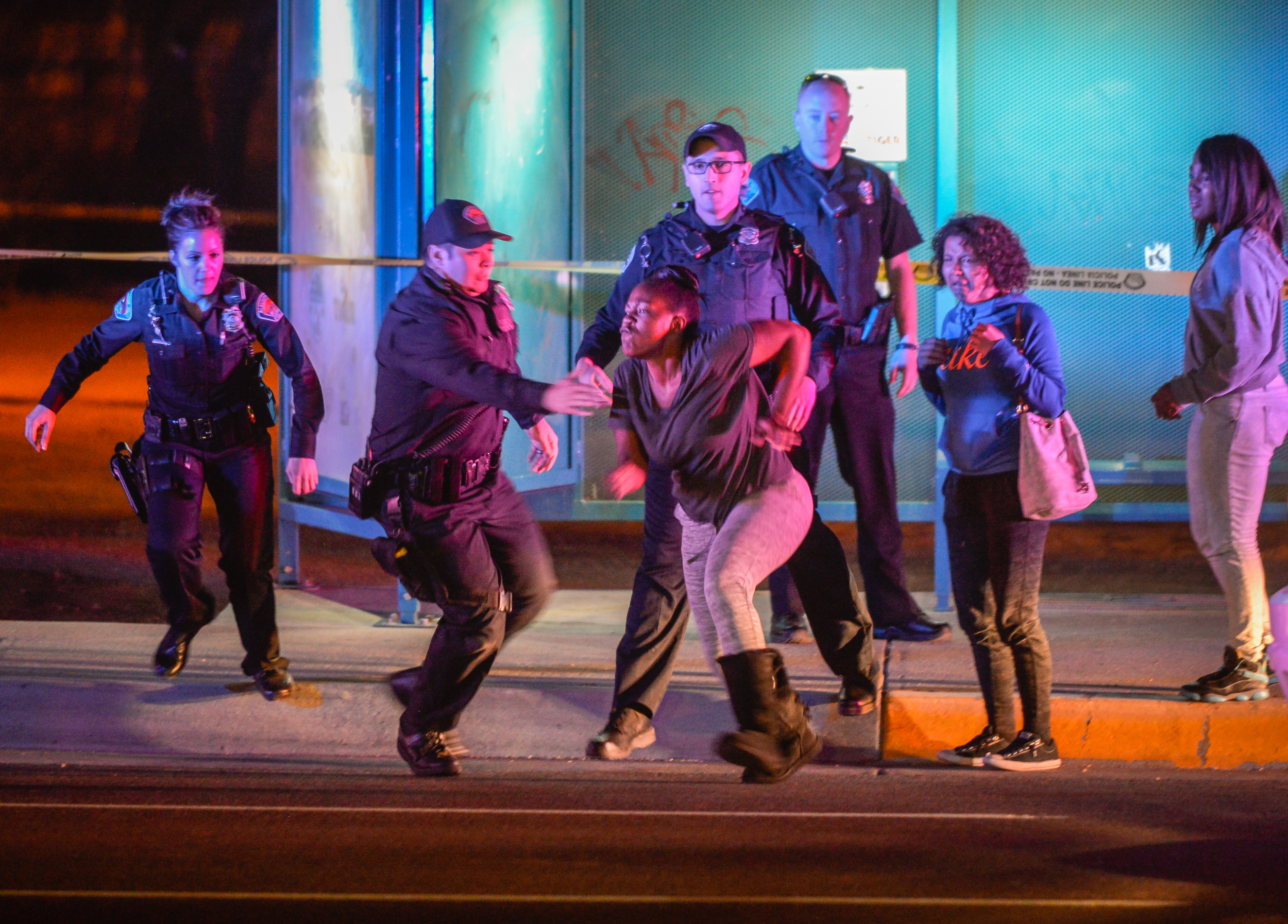
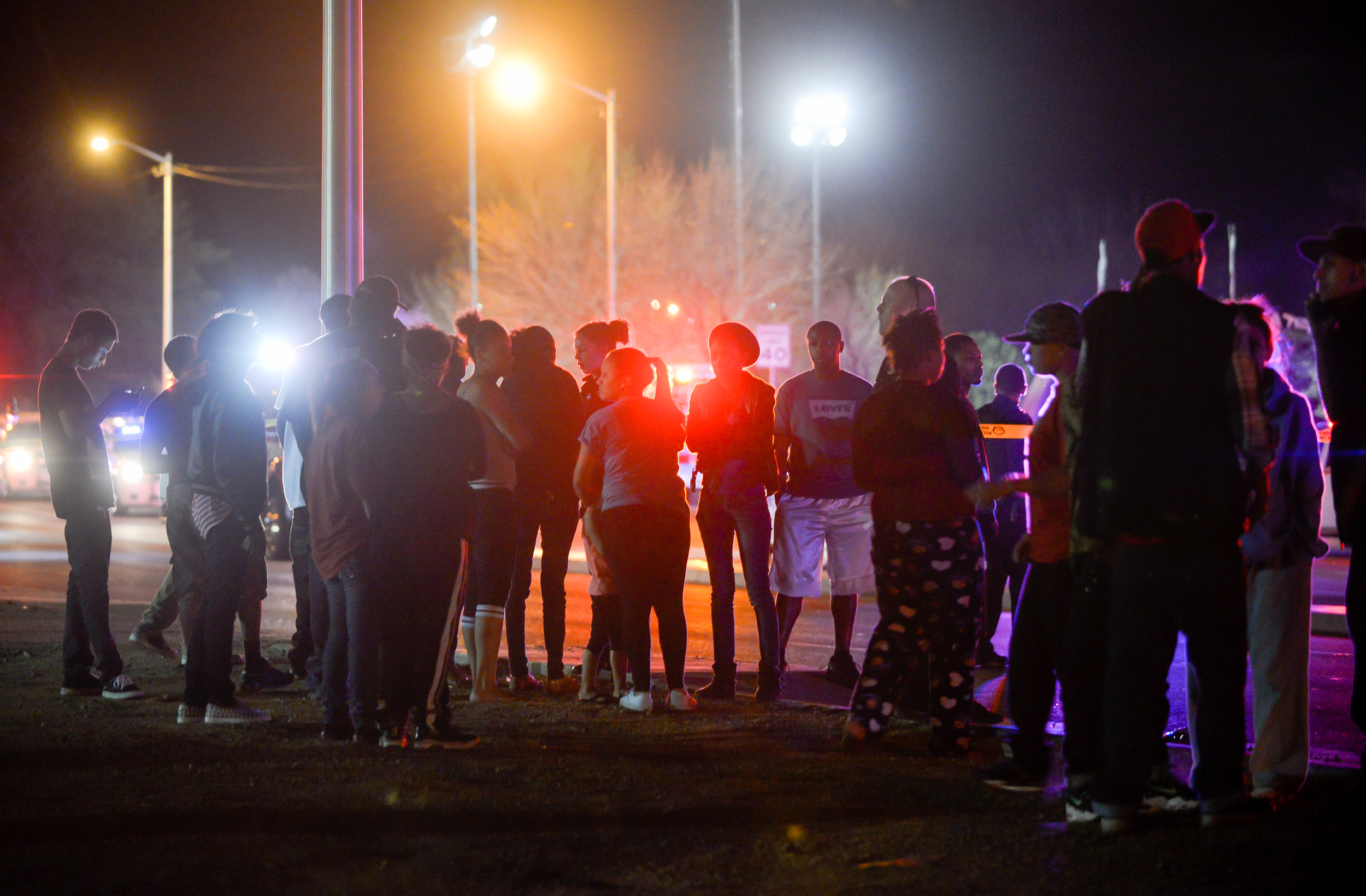
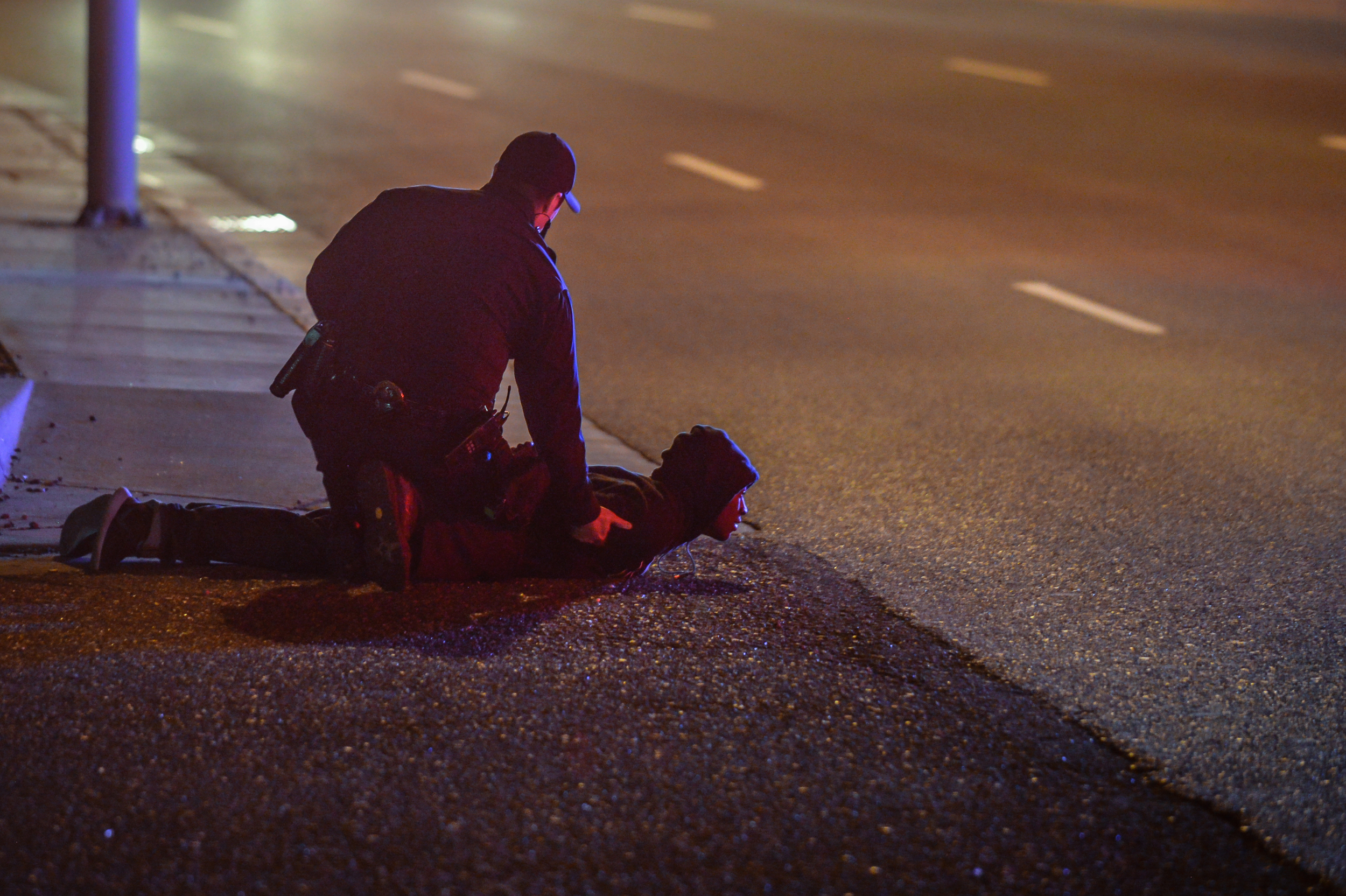
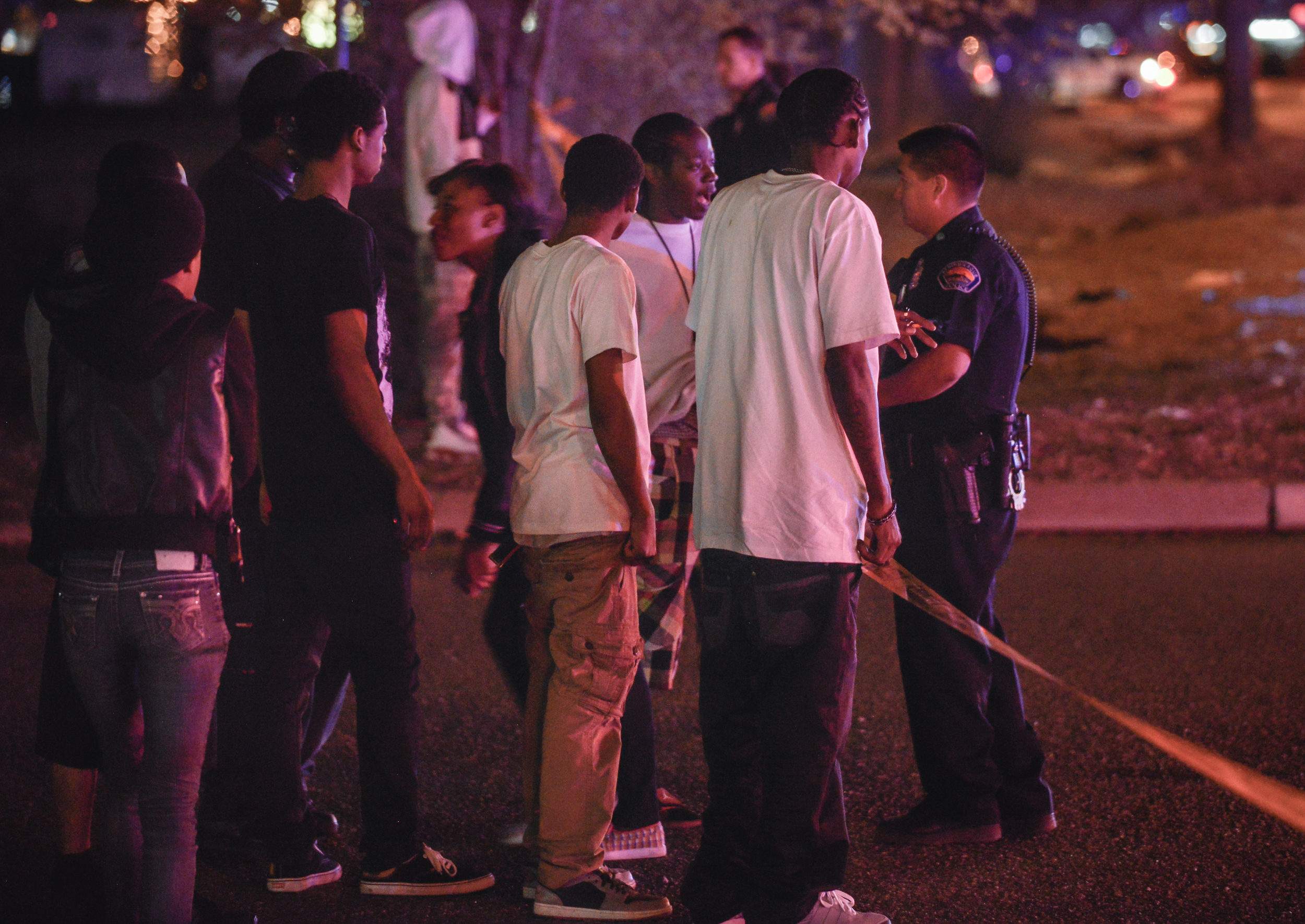
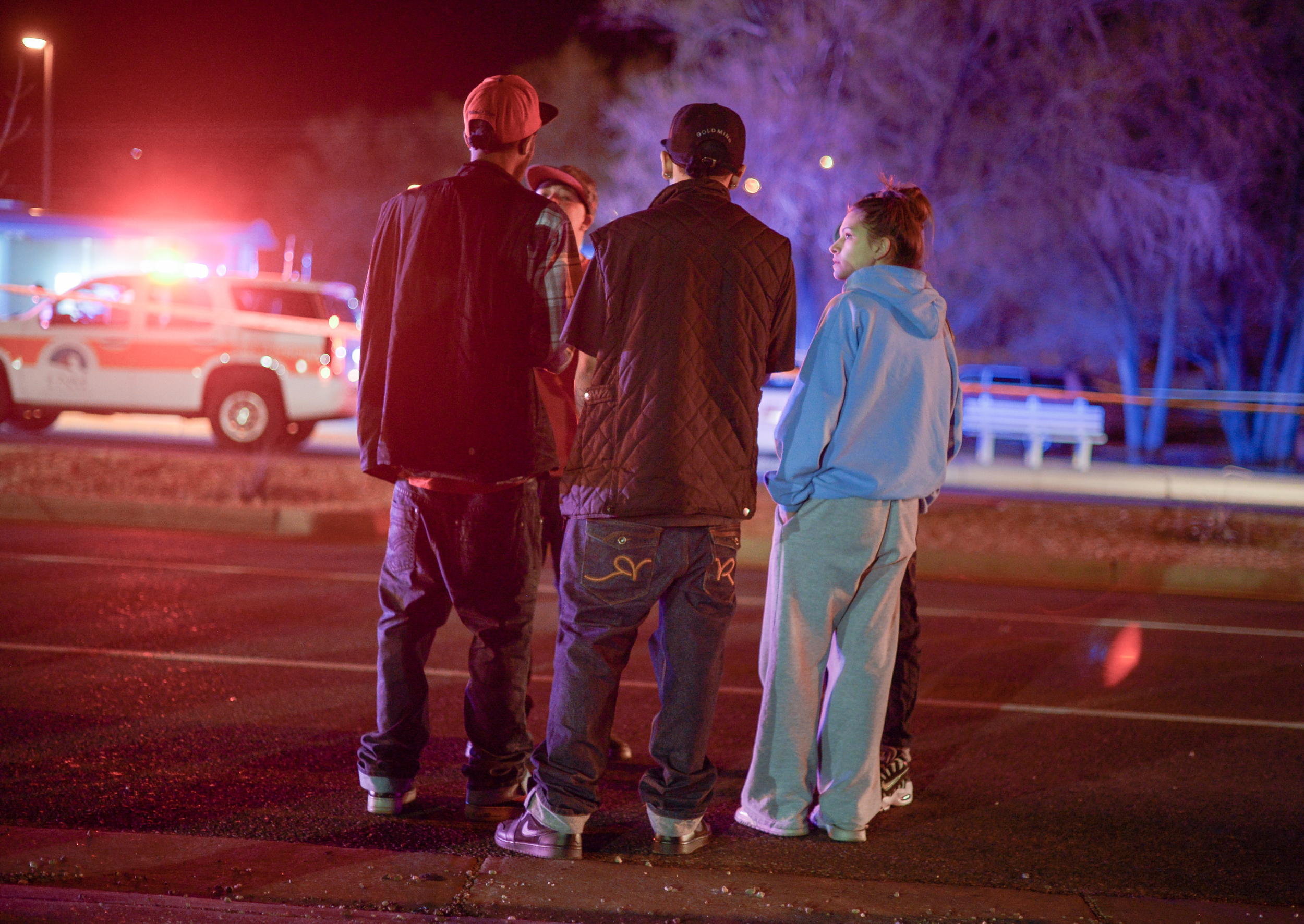
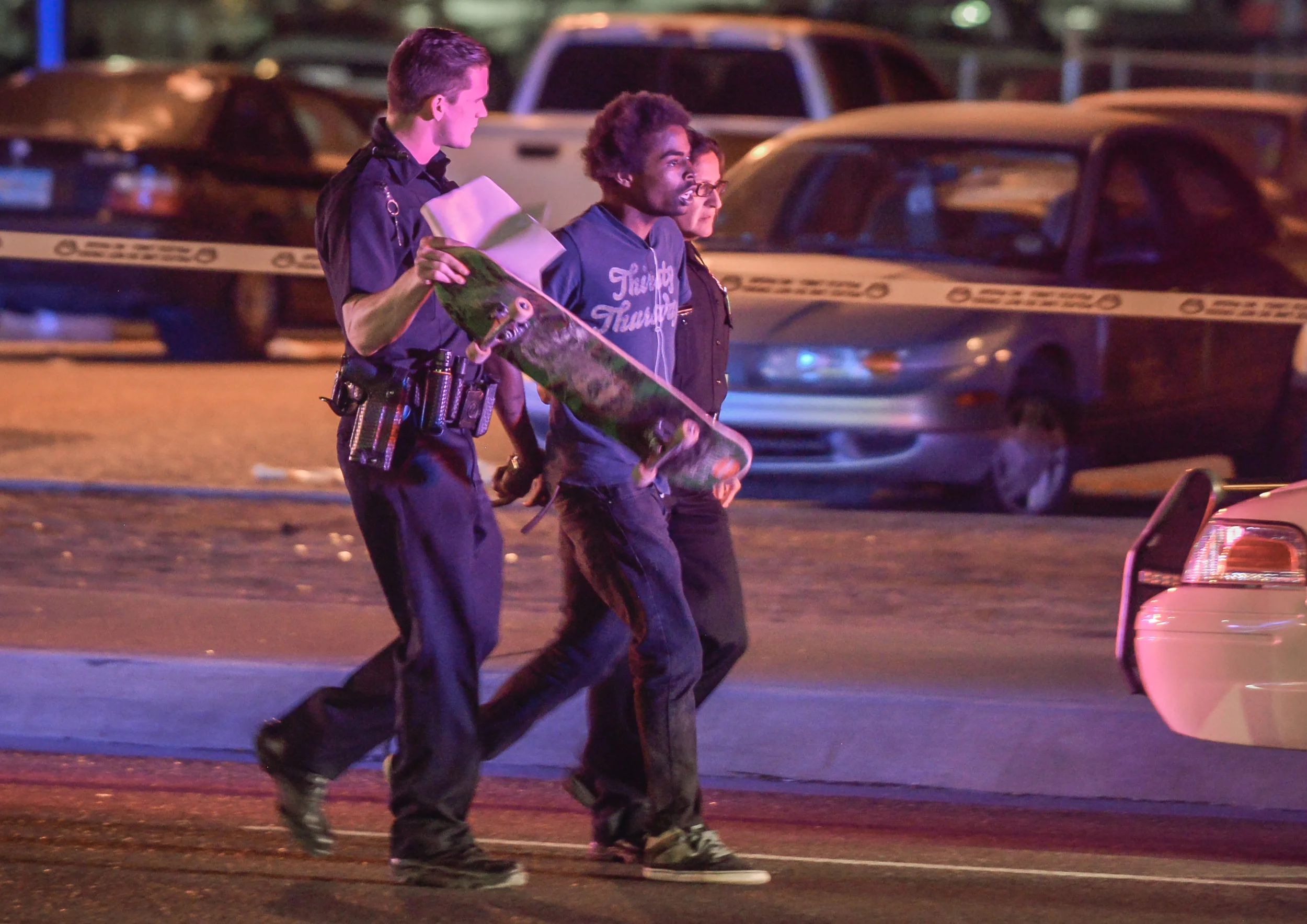
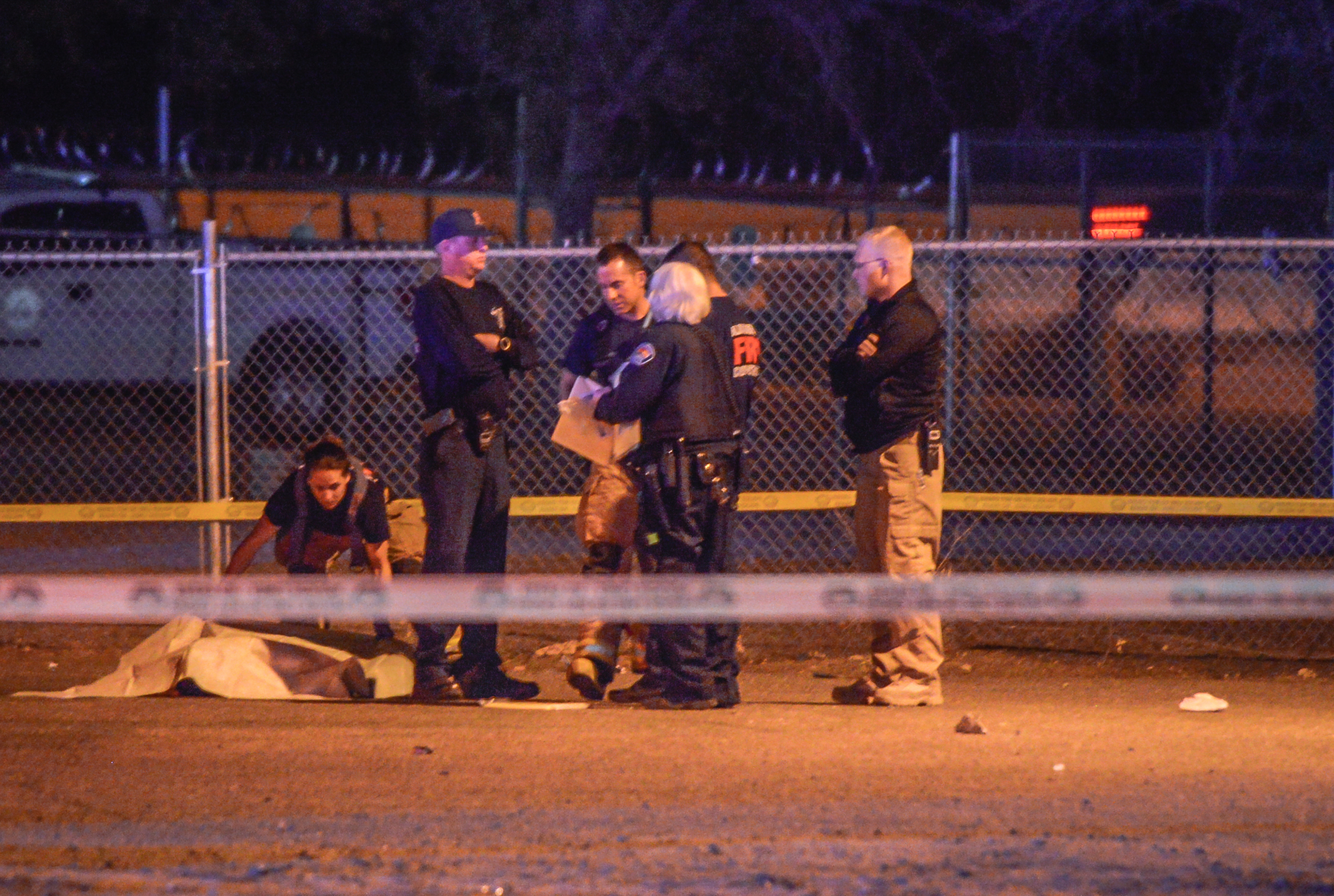
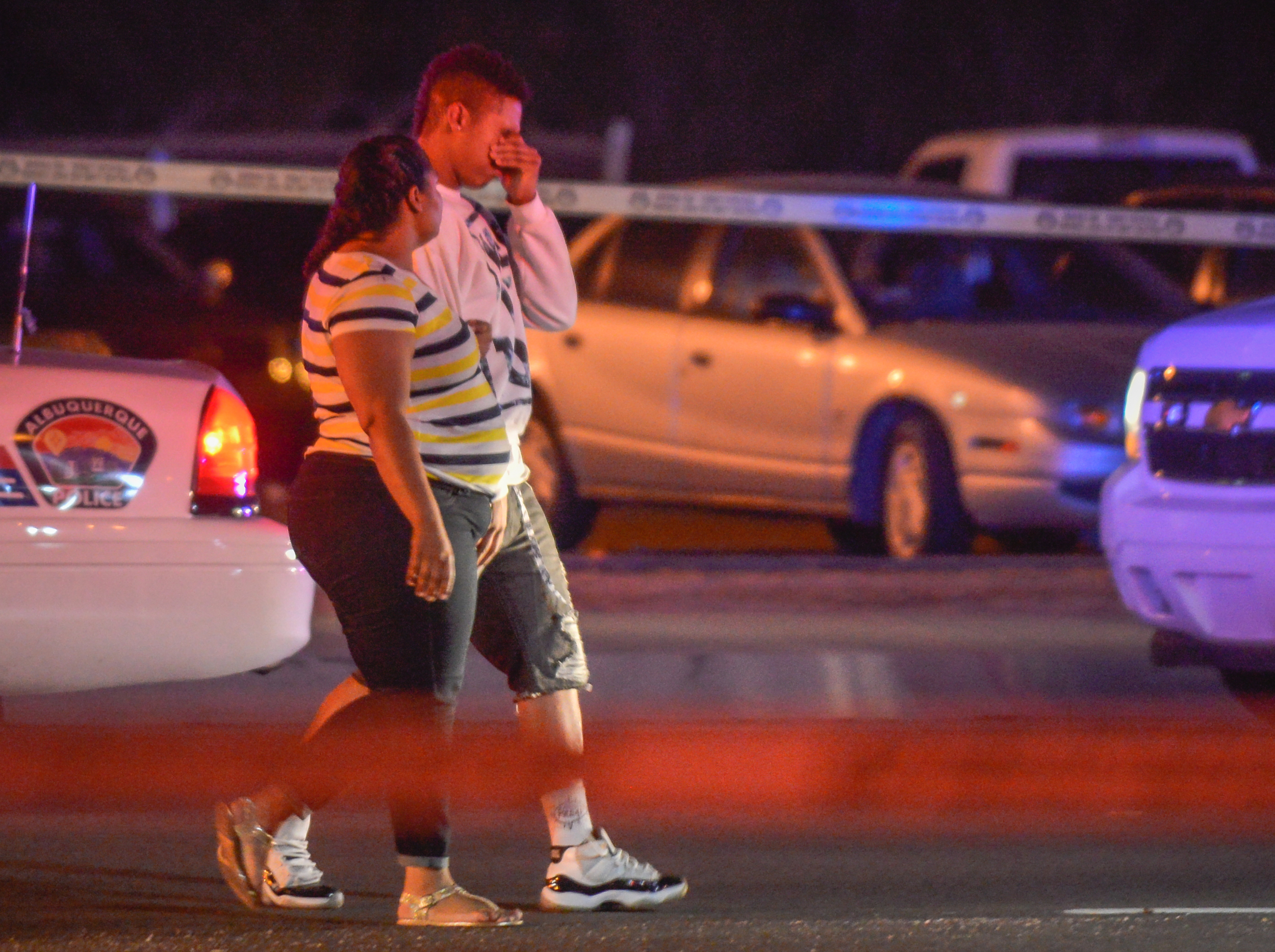
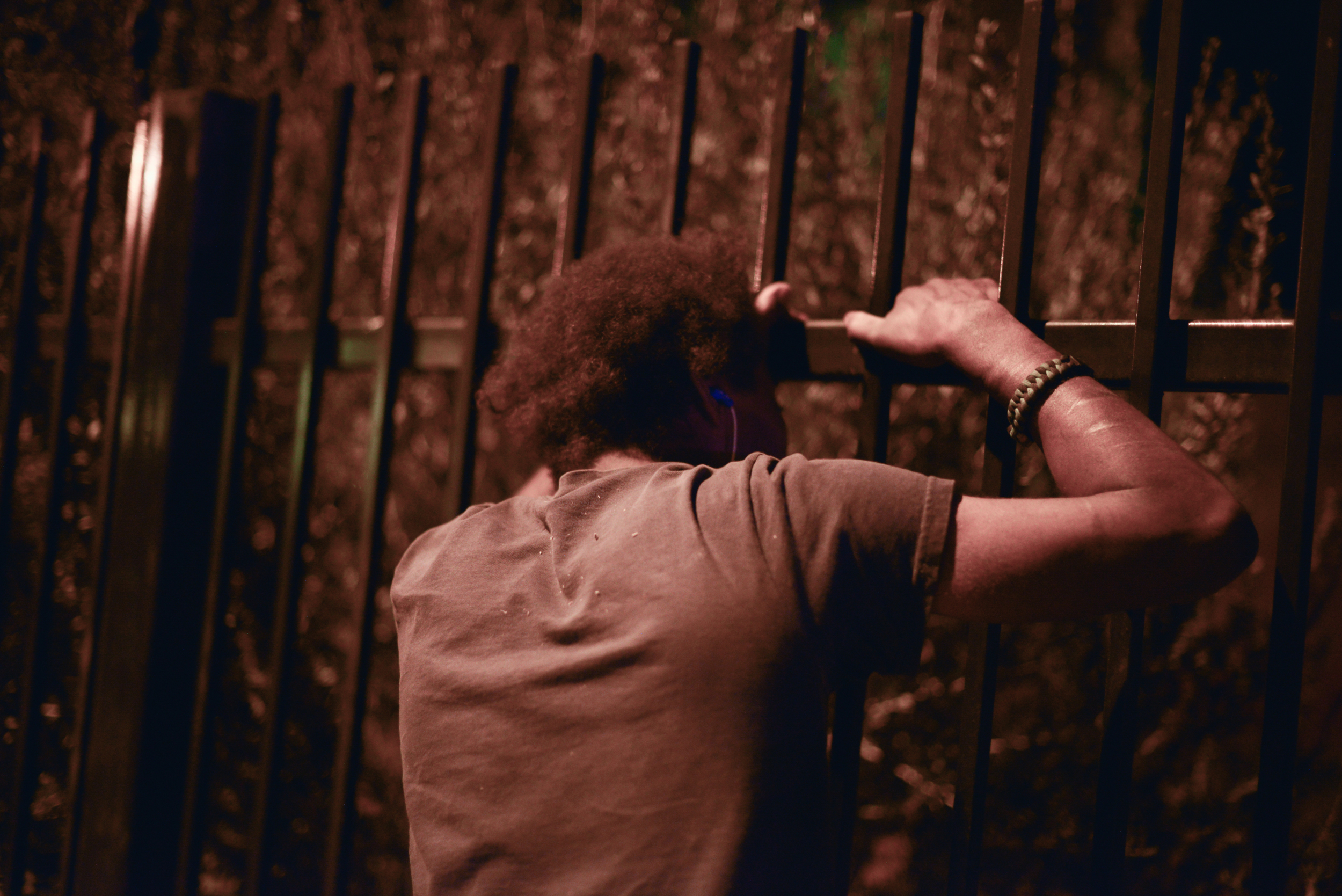
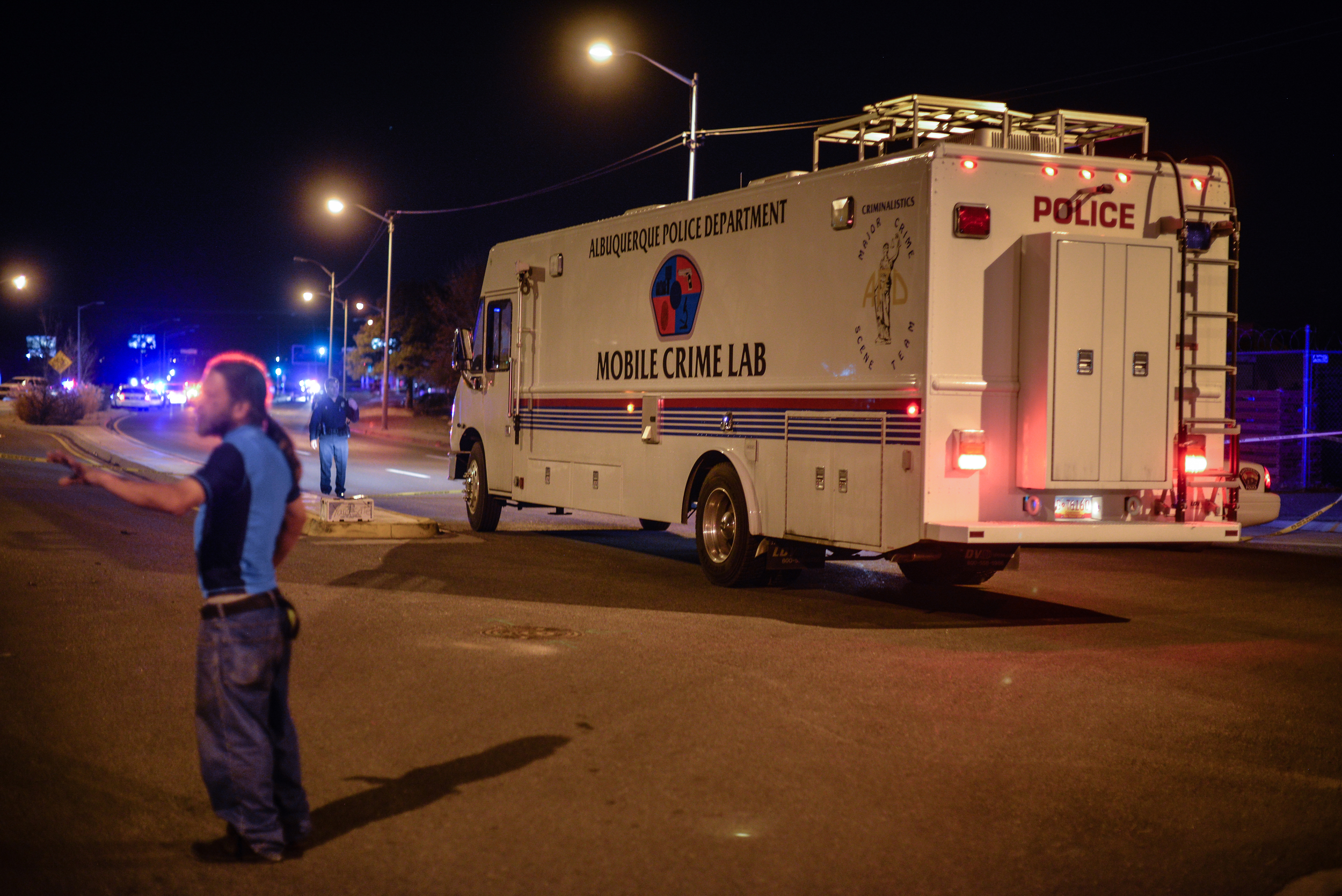
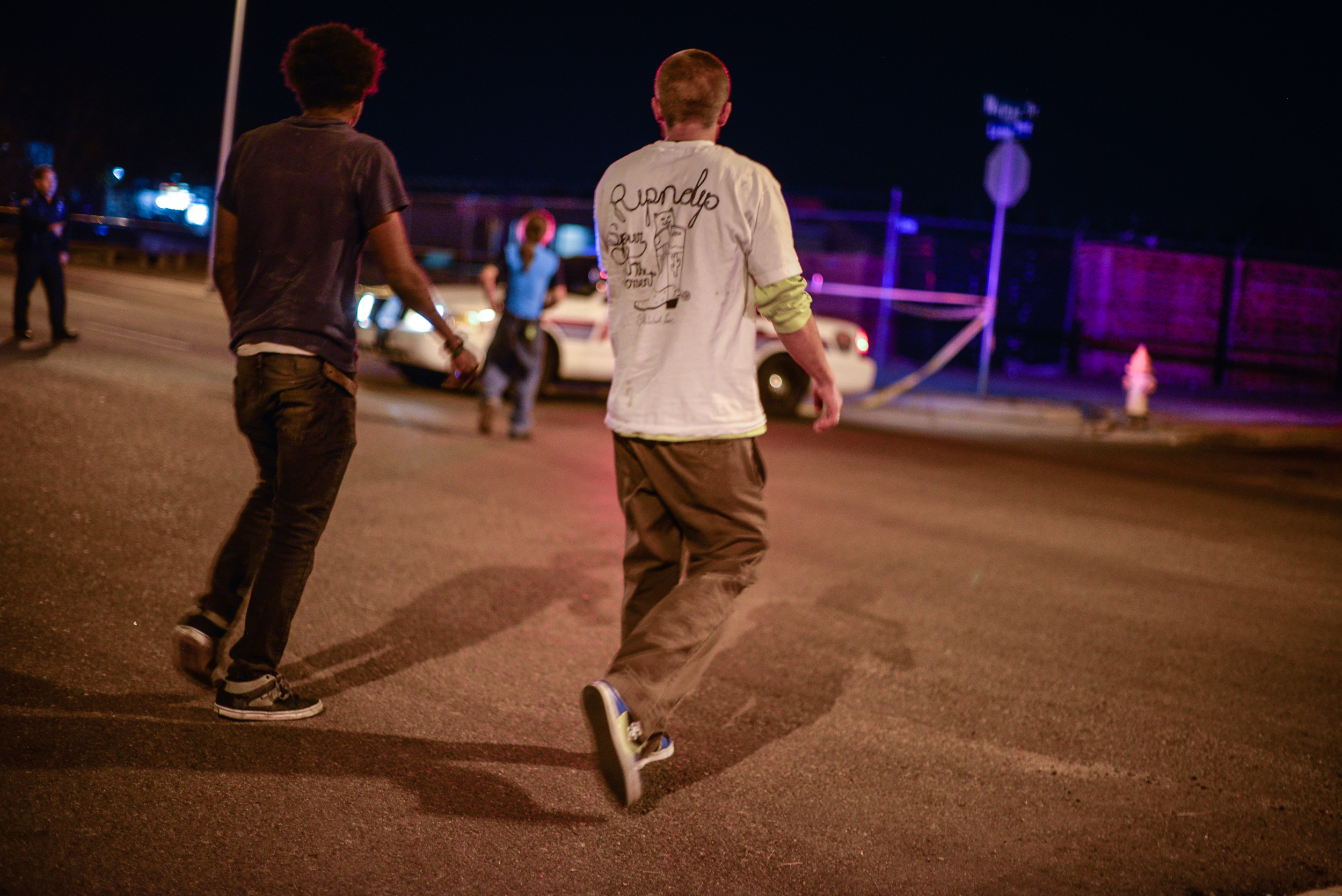
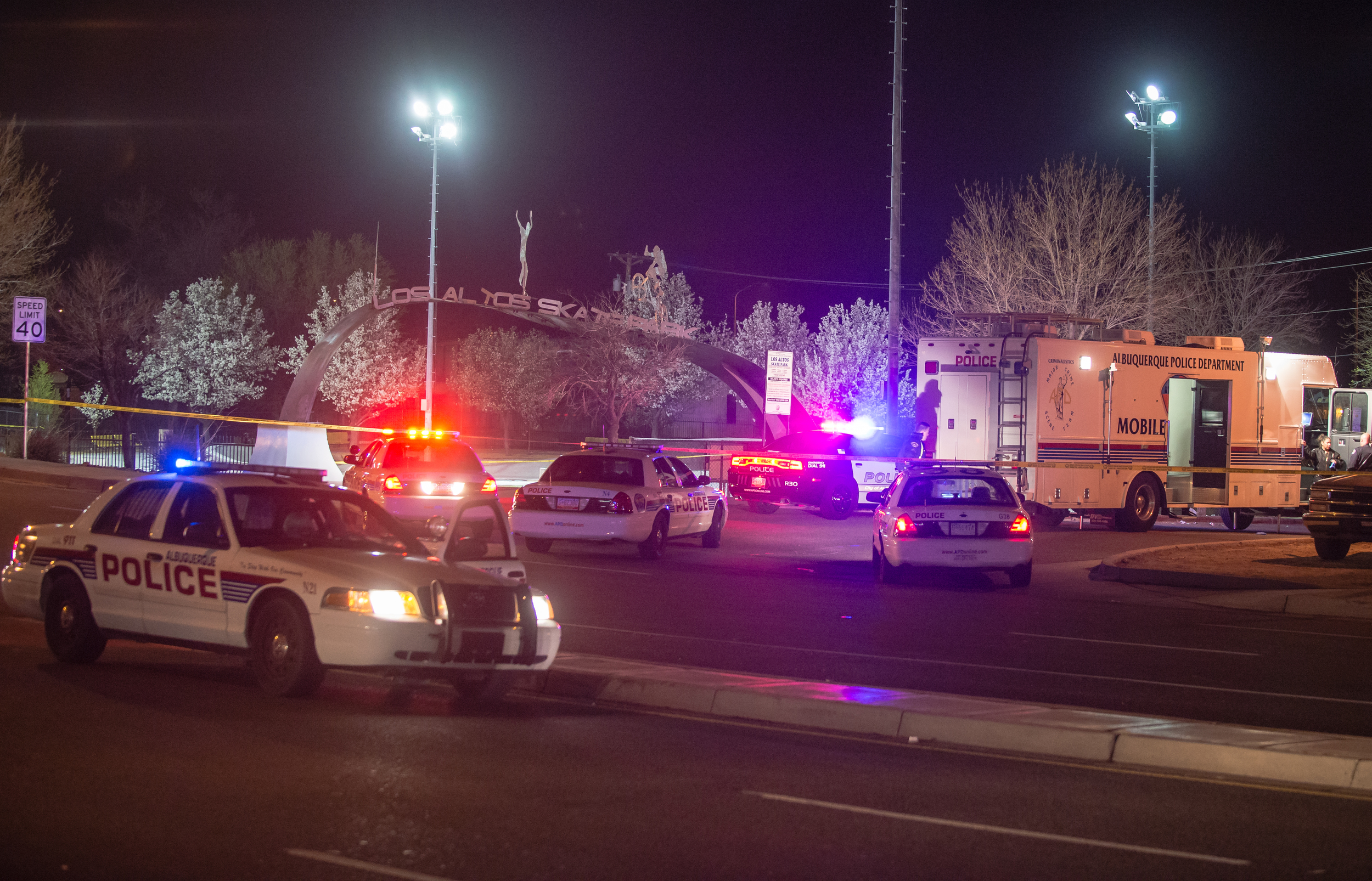
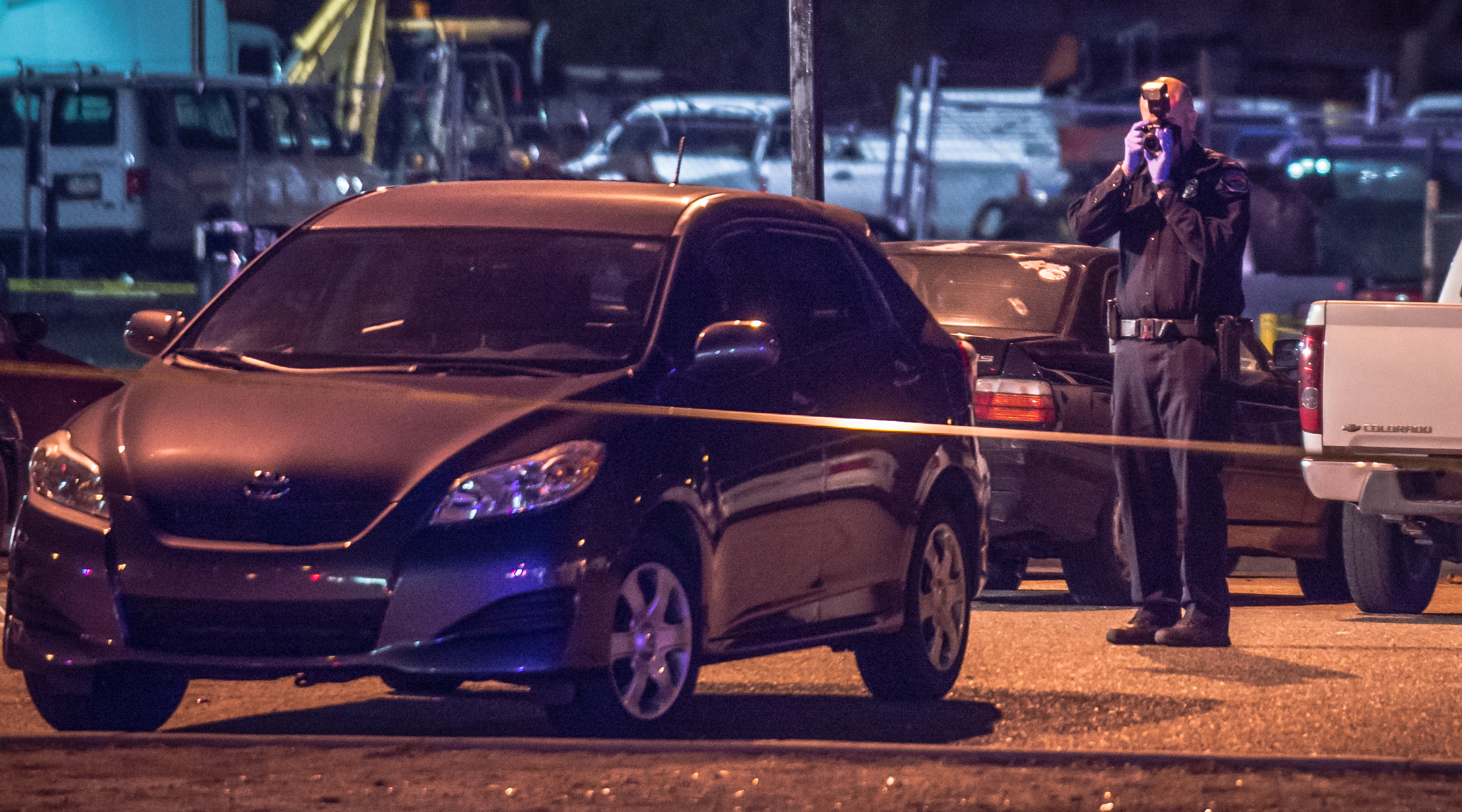
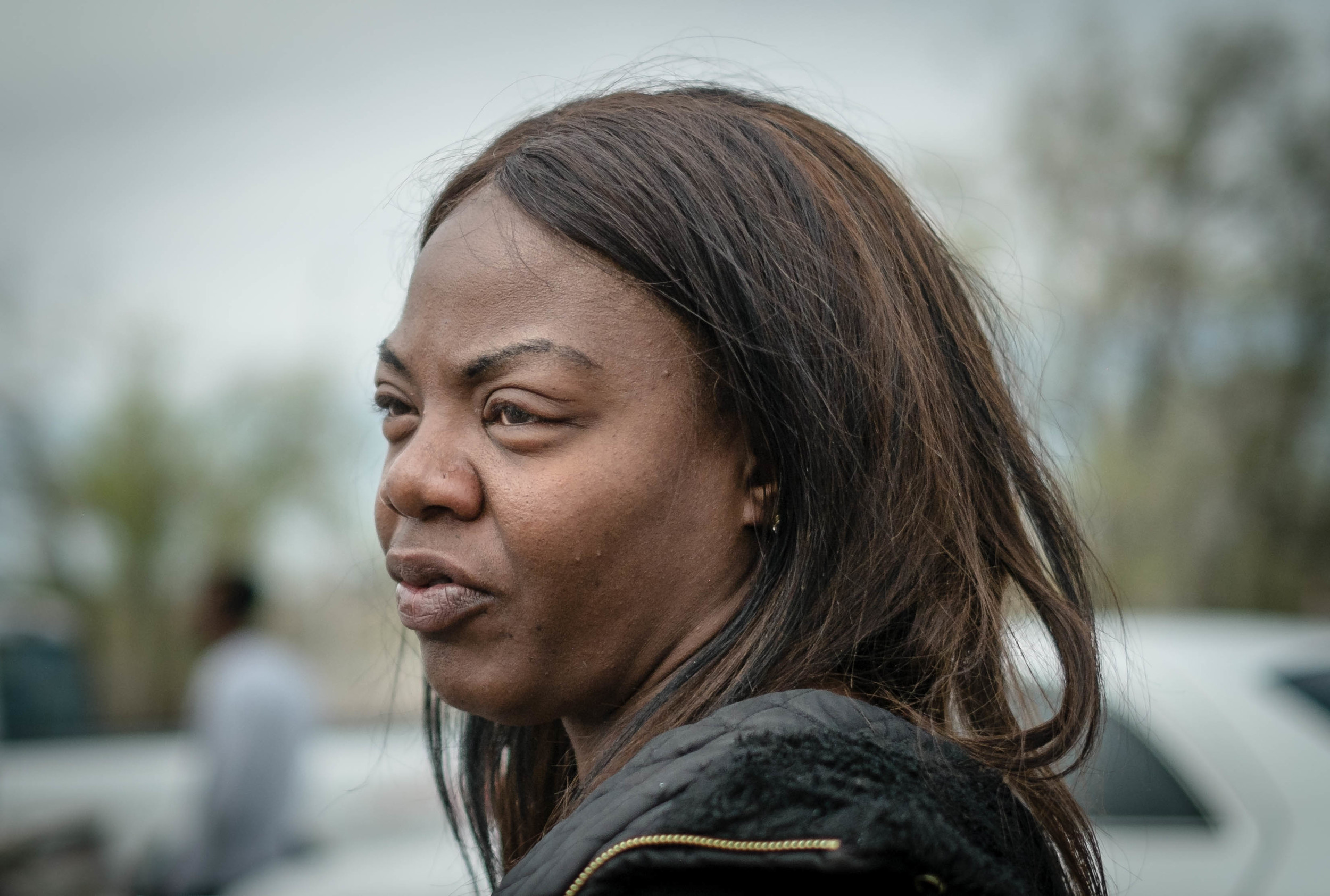
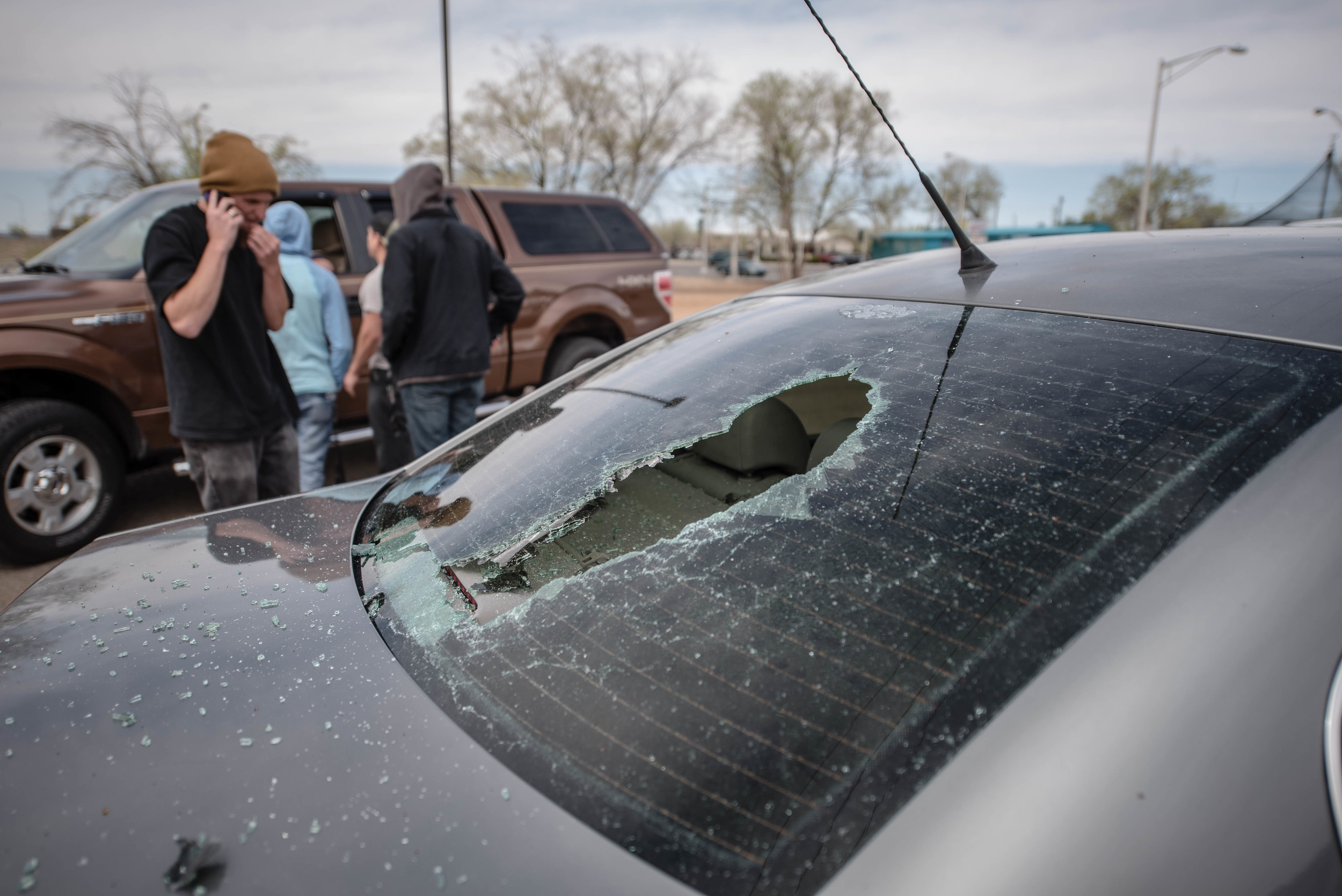
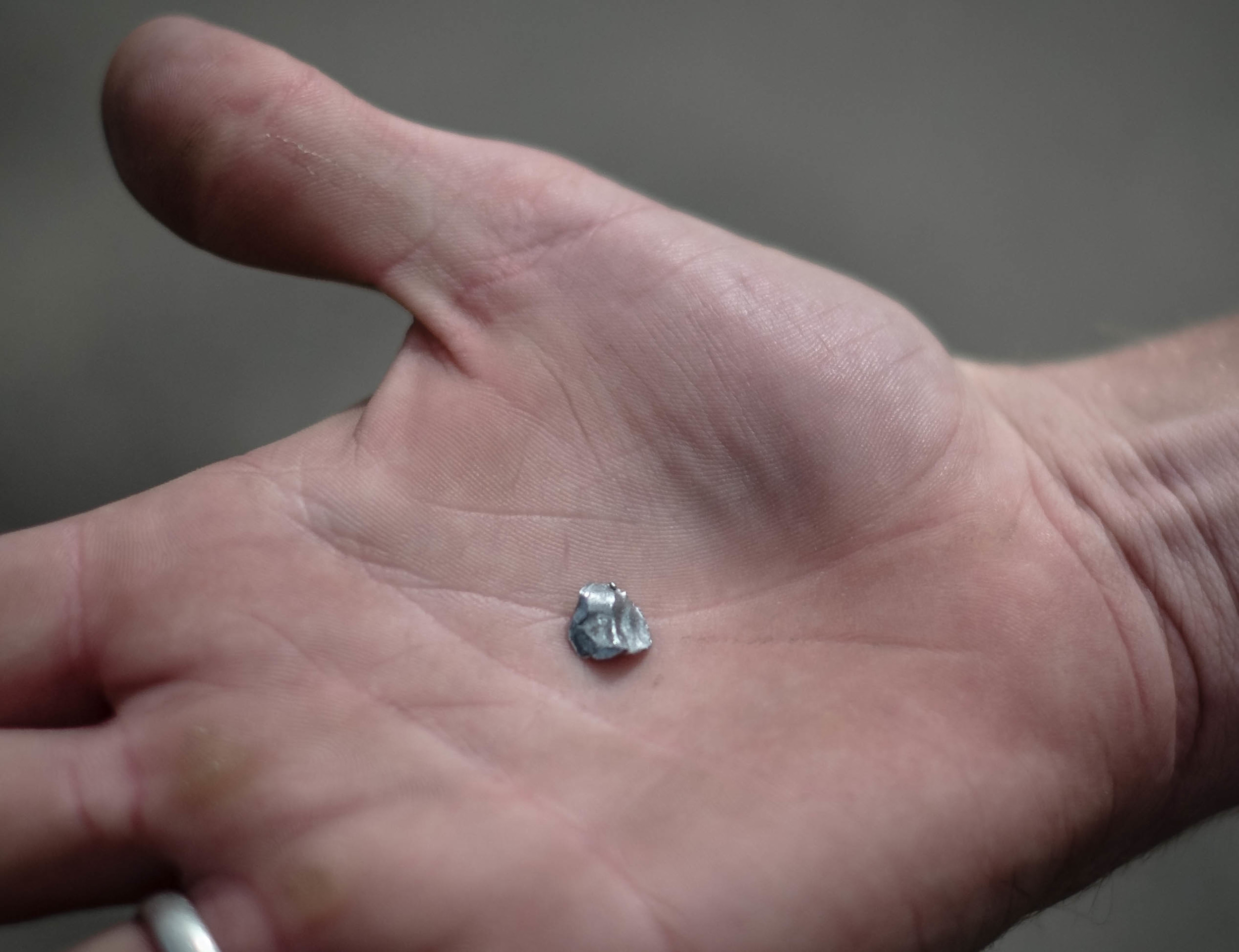
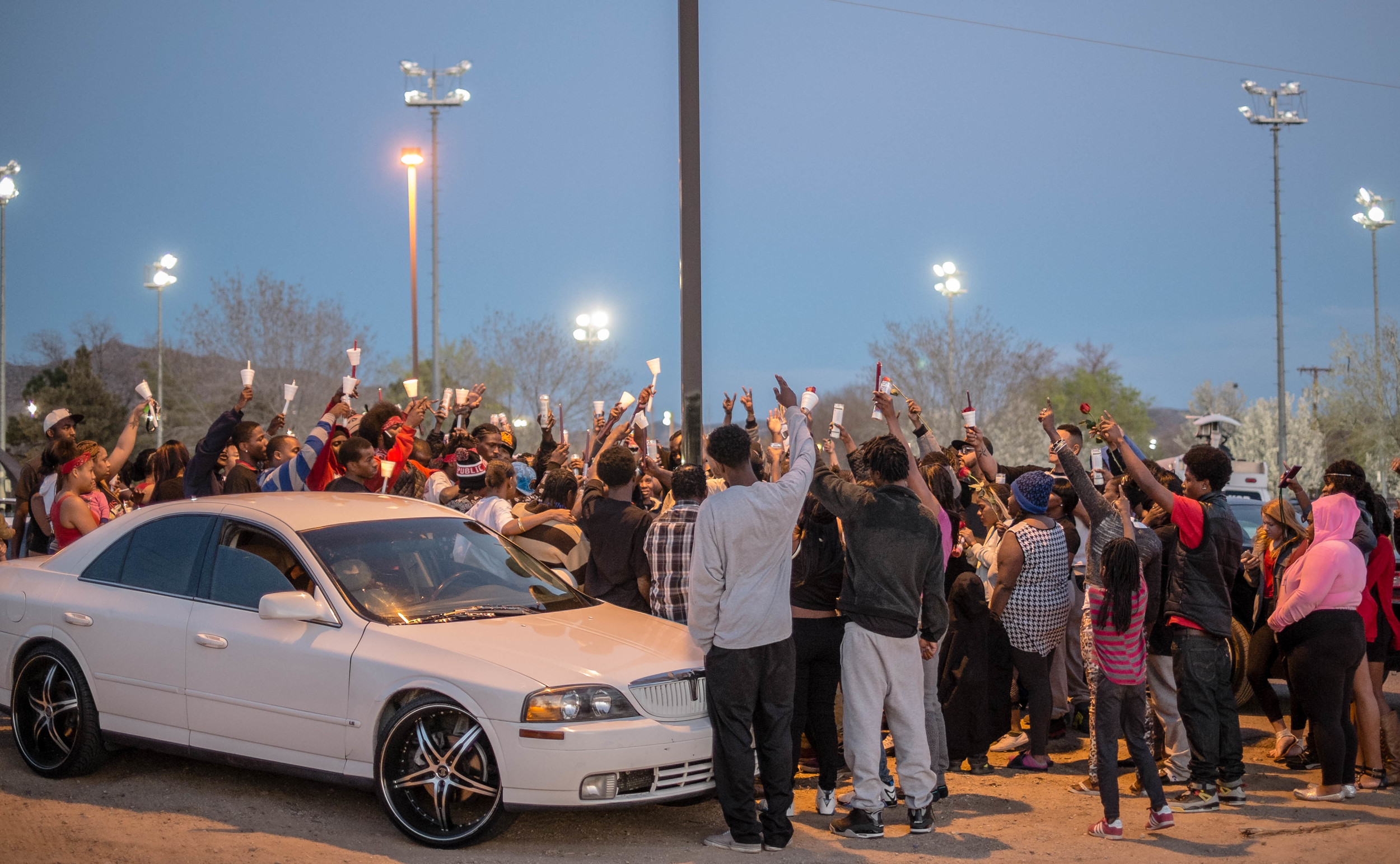
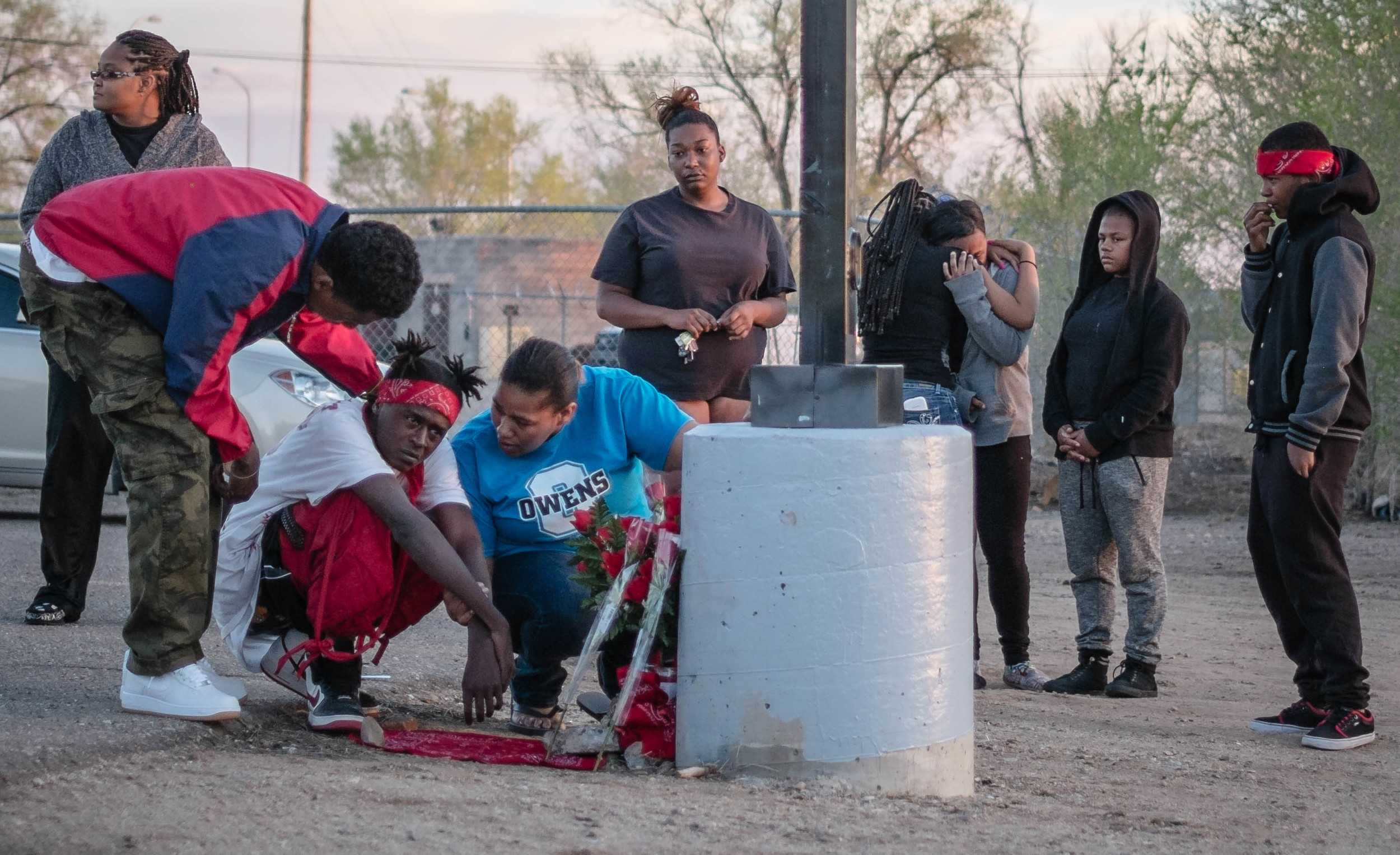
By Robert Browman And Elise Kaplan / Journal Staff Writers
A fight between two groups celebrating birthday parties at Los Altos Skate Park in Northeast Albuquerque exploded into gunfire Sunday night, leaving 17-year-old Sandia High School student Jaquise Lewis dead in the parking lot and six others shot and injured.
One person remains hospitalized in critical condition after what police say they suspect was a gang-related clash.
Richard Brandon, a longtime skater who was at one of the parties, said his friends confronted a man in the other group, claiming someone had stolen a skateboard. Not long after, he said, punches and shots started flying from both sides.
Brandon said he saw his friend whose birthday it was get hit by a bullet and go down.
“He was bleeding out of his stomach,” he said. “The only thing I could think of is it’s like fight or flight.”
Seven people were struck by bullets, including Lewis, who died at the scene. Several cars in the parking lot also were struck by bullets.
Lewis had recently returned to Albuquerque to live with his grandparents after living with his mother in Las Vegas, Nev. He had previously attended Highland and Manzano high schools.
“He loved sports, he loved electronics and computers. He was very high skilled with electronics,” said his mother, Munah Green. “He could get a computer taken apart and put it back together.”
Green jumped in her car and drove to Albuquerque as soon as she heard the news.
“It’s just so senseless and so pointless,” she said. “I will see to it that they be brought to justice.”
Officer Tanner Tixier, a spokesman for the Albuquerque Police Department, said officers were called to the skate park just before 10 p.m. Sunday. They arrived to find a large crowd, with Lewis dead on the sidewalk and others injured. Three people were rushed to a local hospital.
Three others injured by the gunfire walked into area hospitals on their own, he said.
Crowd chaos
The shooting and its aftermath drew a large crowd, prompting officers to concentrate on crowd control, police spokesman Fred Duran said.
He described the park area as a “large and complex crime scene.”
Two vehicles were towed from the scene so police can search them, Tixier said,
He said the police don’t have any suspects to identify at this time and said police aren’t sure if race played a part in the shooting. Lewis is black and the group he was with was mostly African-American.
“The early indication is it was somehow gang-related. We’re still trying to make sure that was the case,” Tixier said.
Cody Langdon, a longtime regular at the park, said the skateboarders he knows are not involved in gangs.
“Nobody here is part of any gang. And if they are, they are not bringing that into the park,” he said.
Tixier said he doesn’t believe the park has security cameras
“I know there’s a highway camera at I-40 and Eubank, but it was pointed in the wrong direction,” he said.
Langdon said the park is usually peaceful.
Tixier agrees. “I just pulled the calls for service there for the past three years and it didn’t seem like an overwhelming number,” he said.
When fights do break out, Langdon said they are solved without guns.
“If any of us has a problem with each other, we’ll just go into the parking lot and fight,” he said. “I don’t know why people have to shoot each other.”
Journal staff writers Nicole Perez and Jon Swedien contributed to this report.
Snow storm Coverage 2015
These are some of the images taken across two evenings and one morning after what we consider to be a snow storm. For Albuquerque it was a big deal and I took advantage of hitting the streets with two Nikon FX cameras: D750 and D600 with a 50mm f/1.4 lens and a 70-200mm f/2.8. There is something special of seeing our desert environment with a fresh blanket of snow. The moment that brought it all in perspective for me was seeing a coyote galloping along a snow-packed field at the local Nature Center. It was more beautiful when it stopped to take a look at me with curiosity. Nature is amazing. Enjoy.

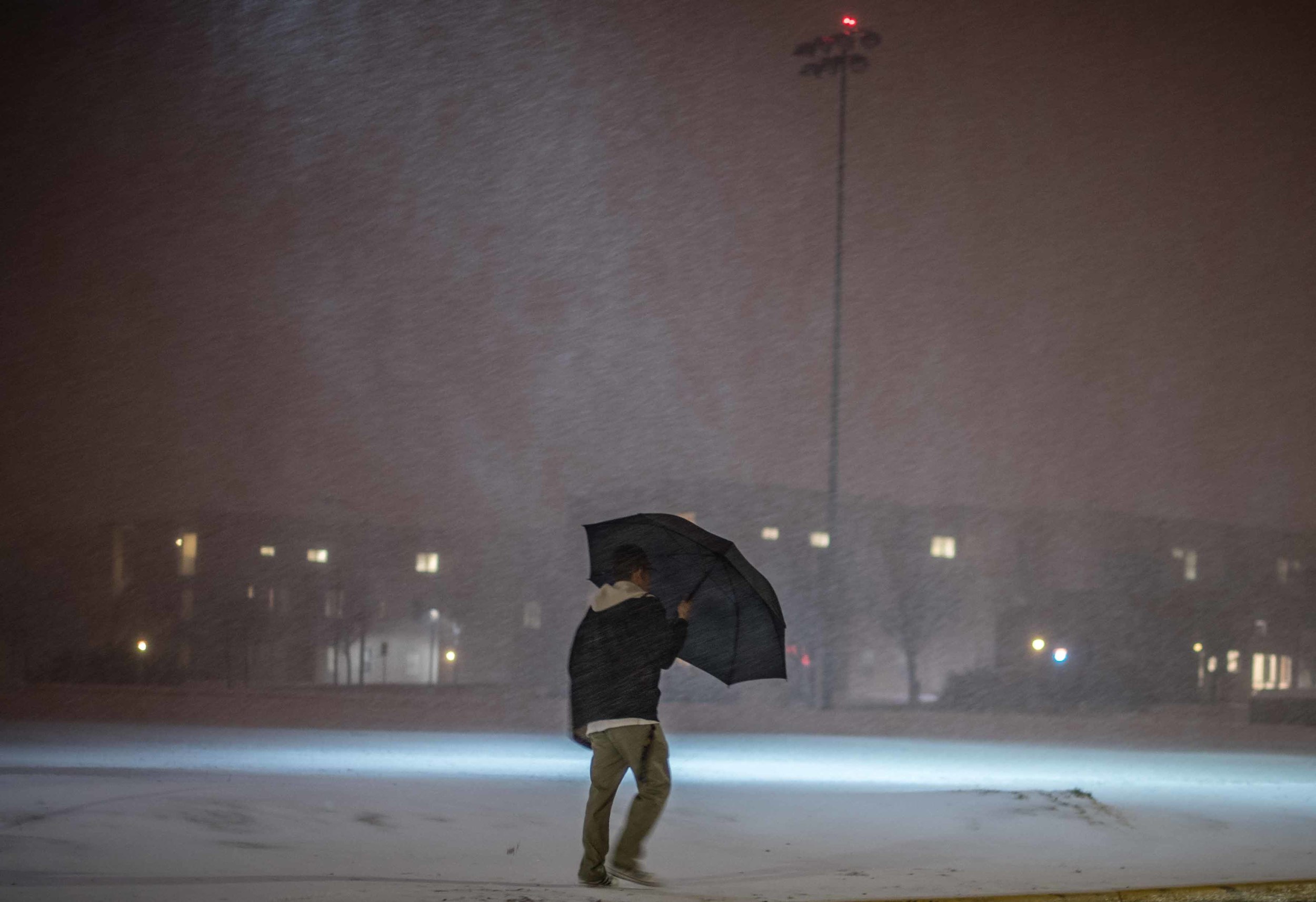

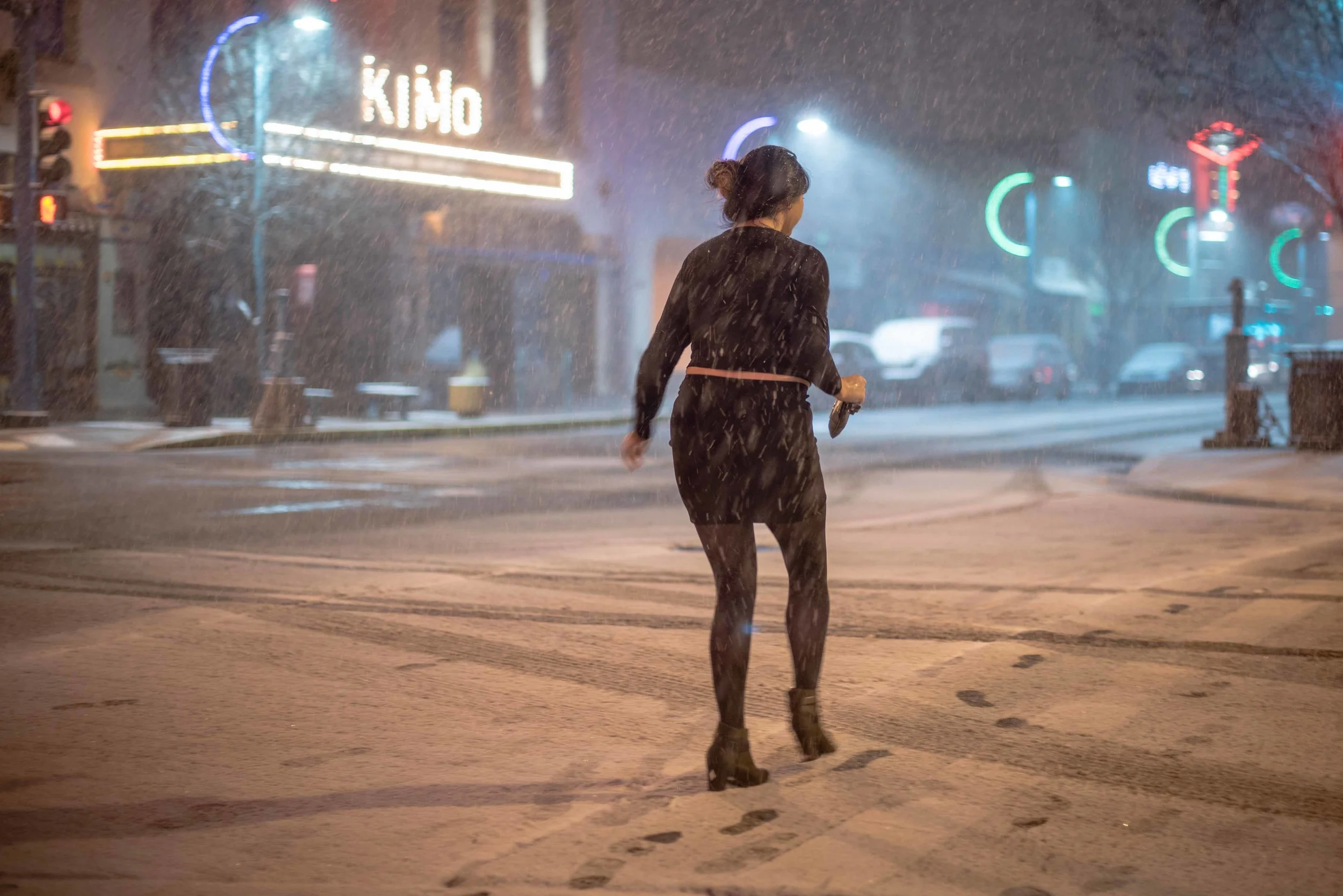
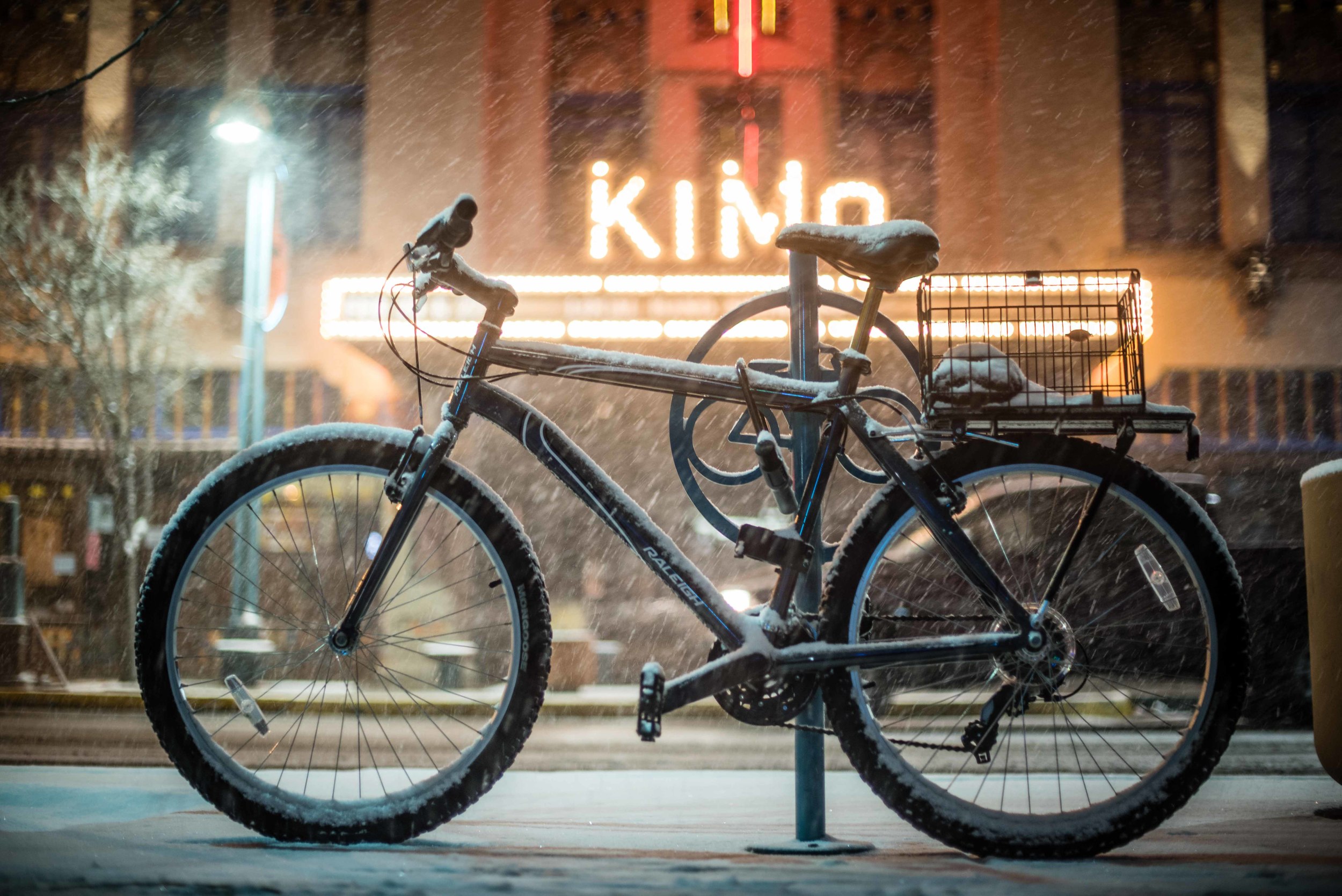
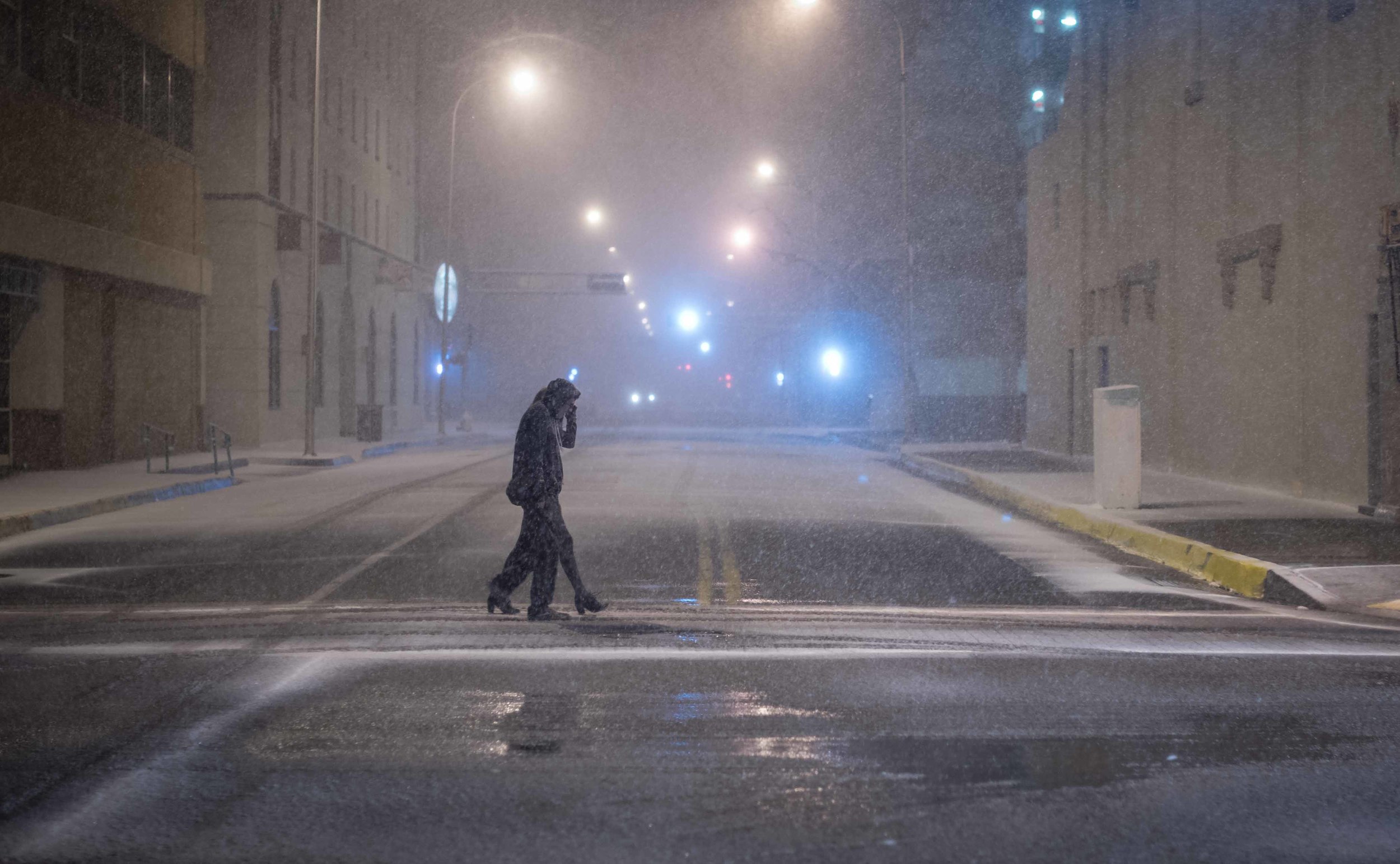

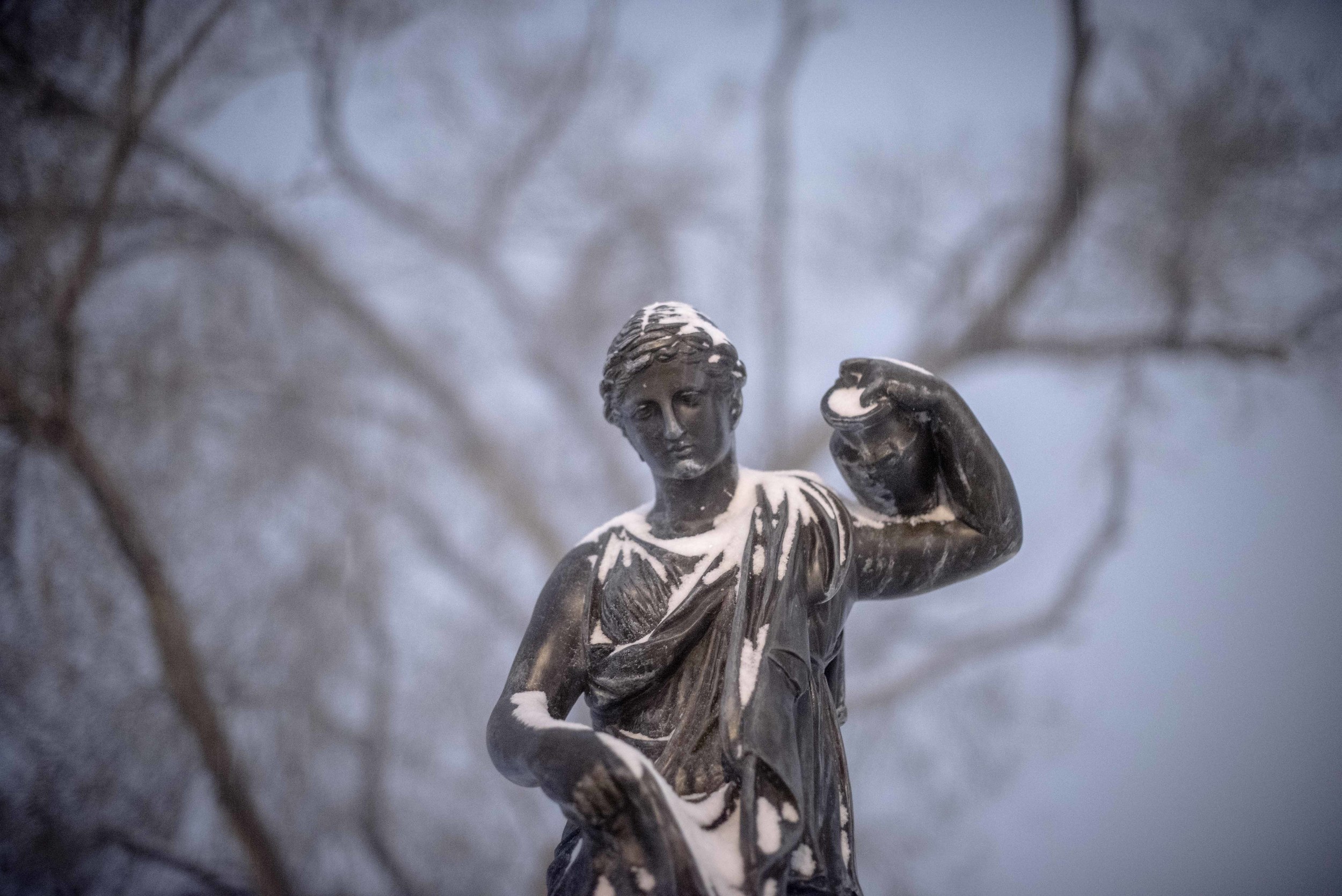
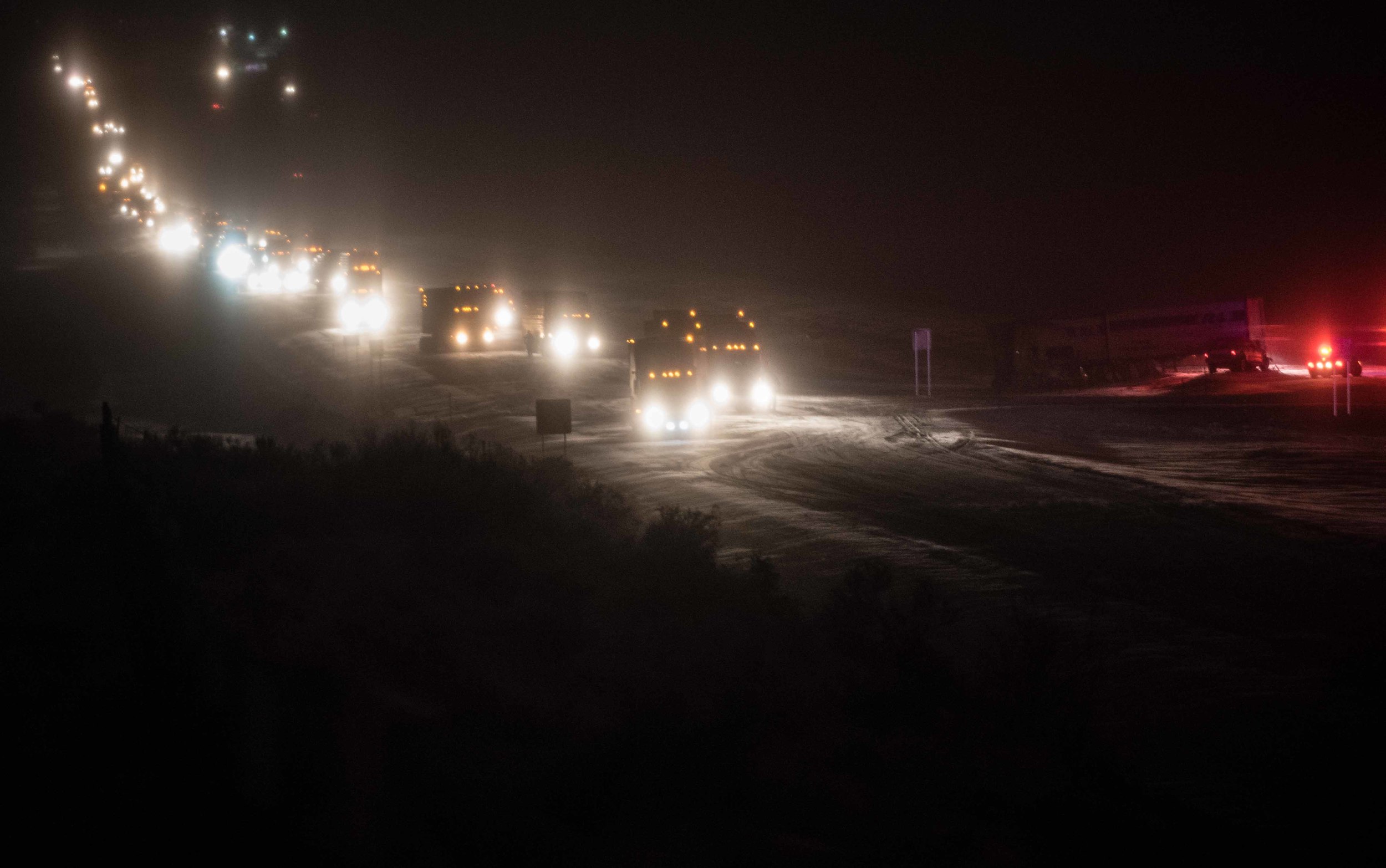

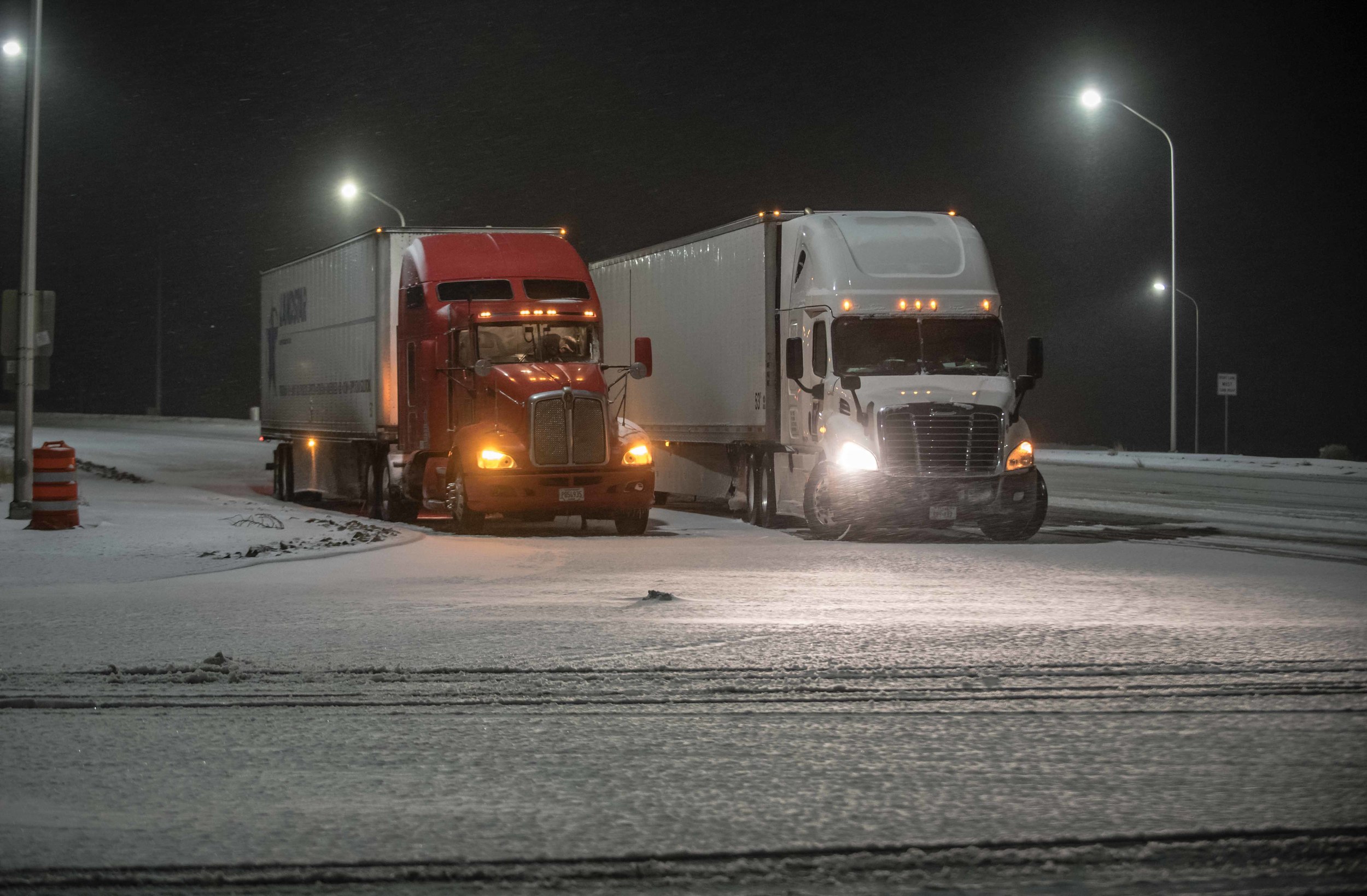


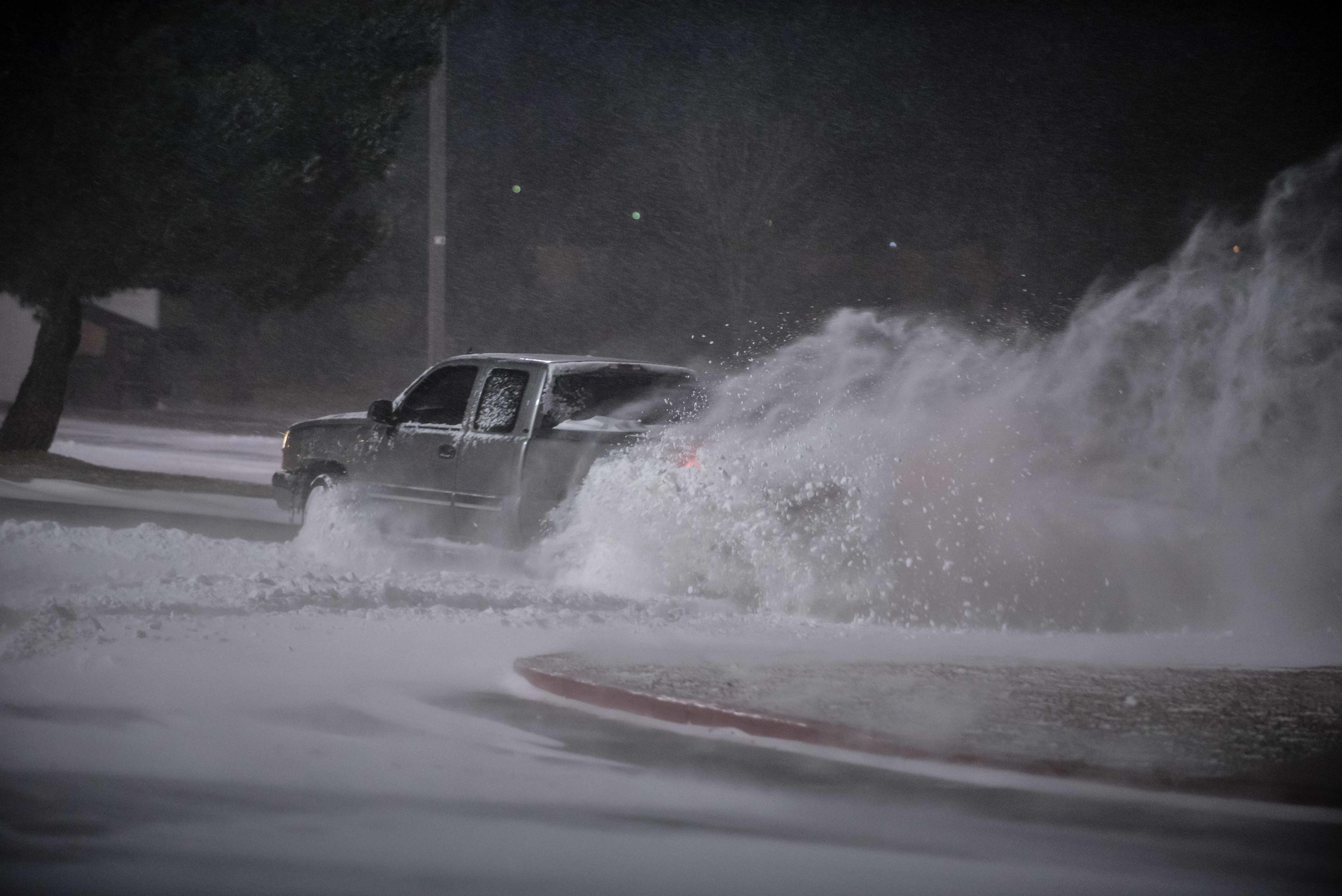
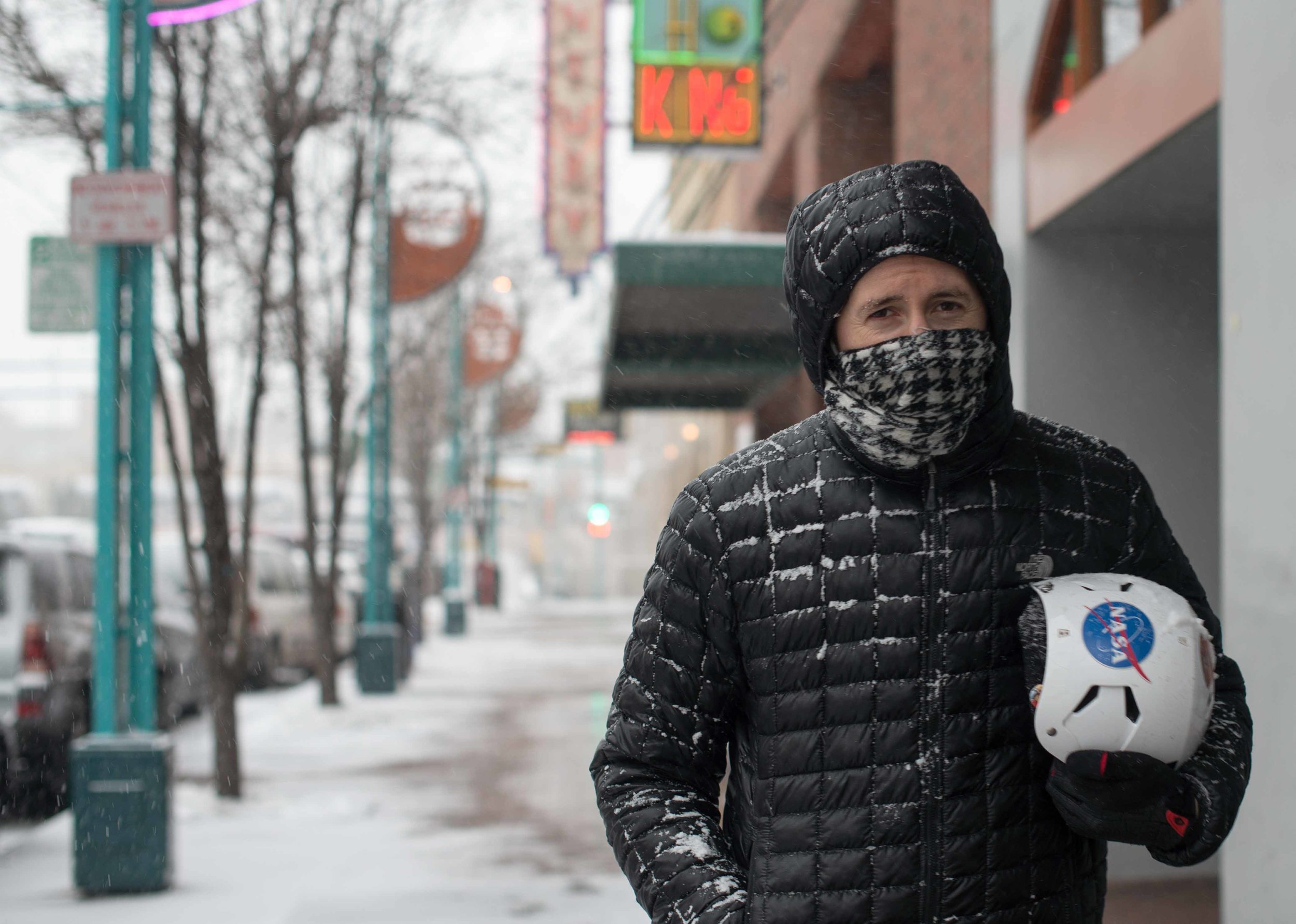


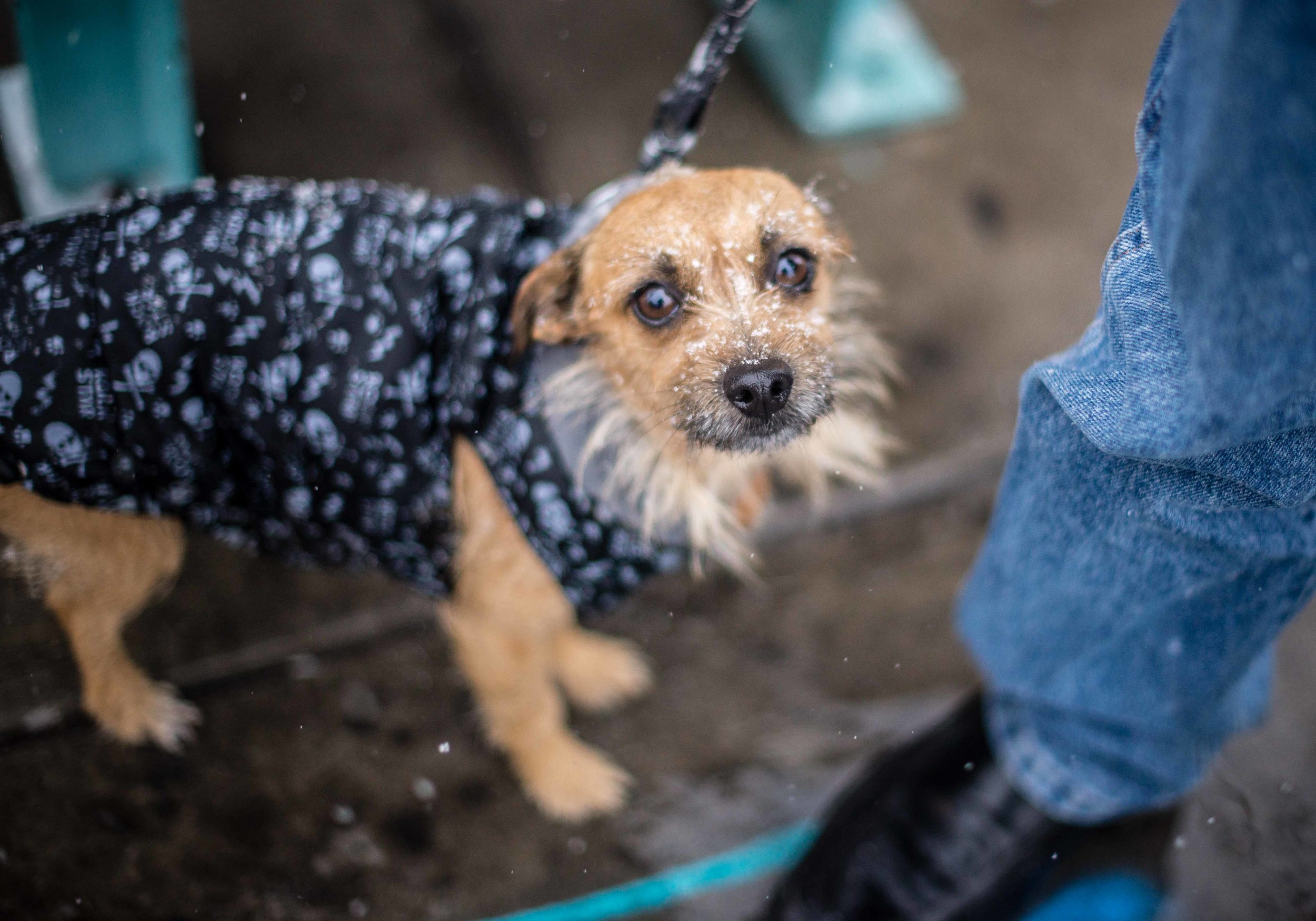
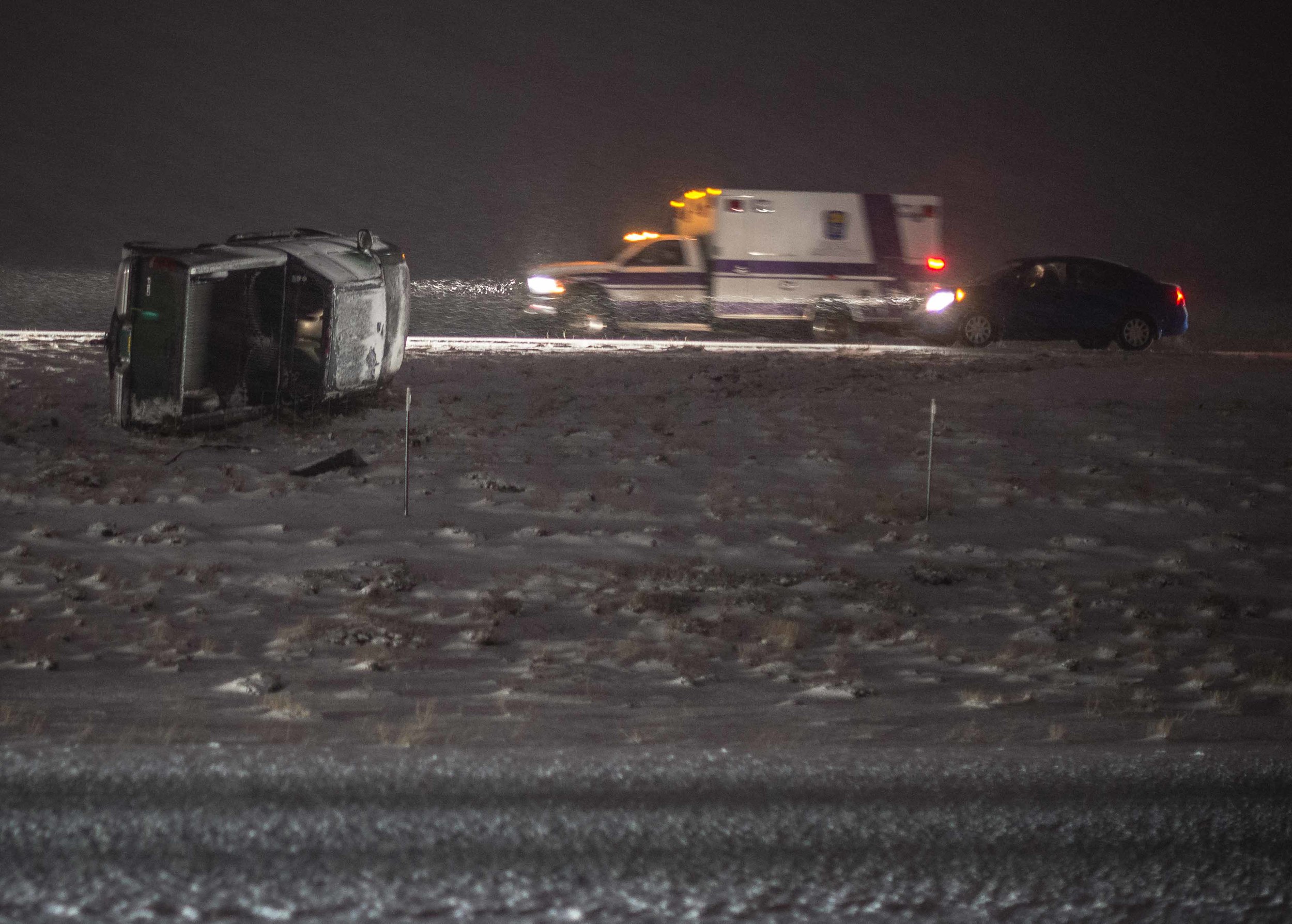

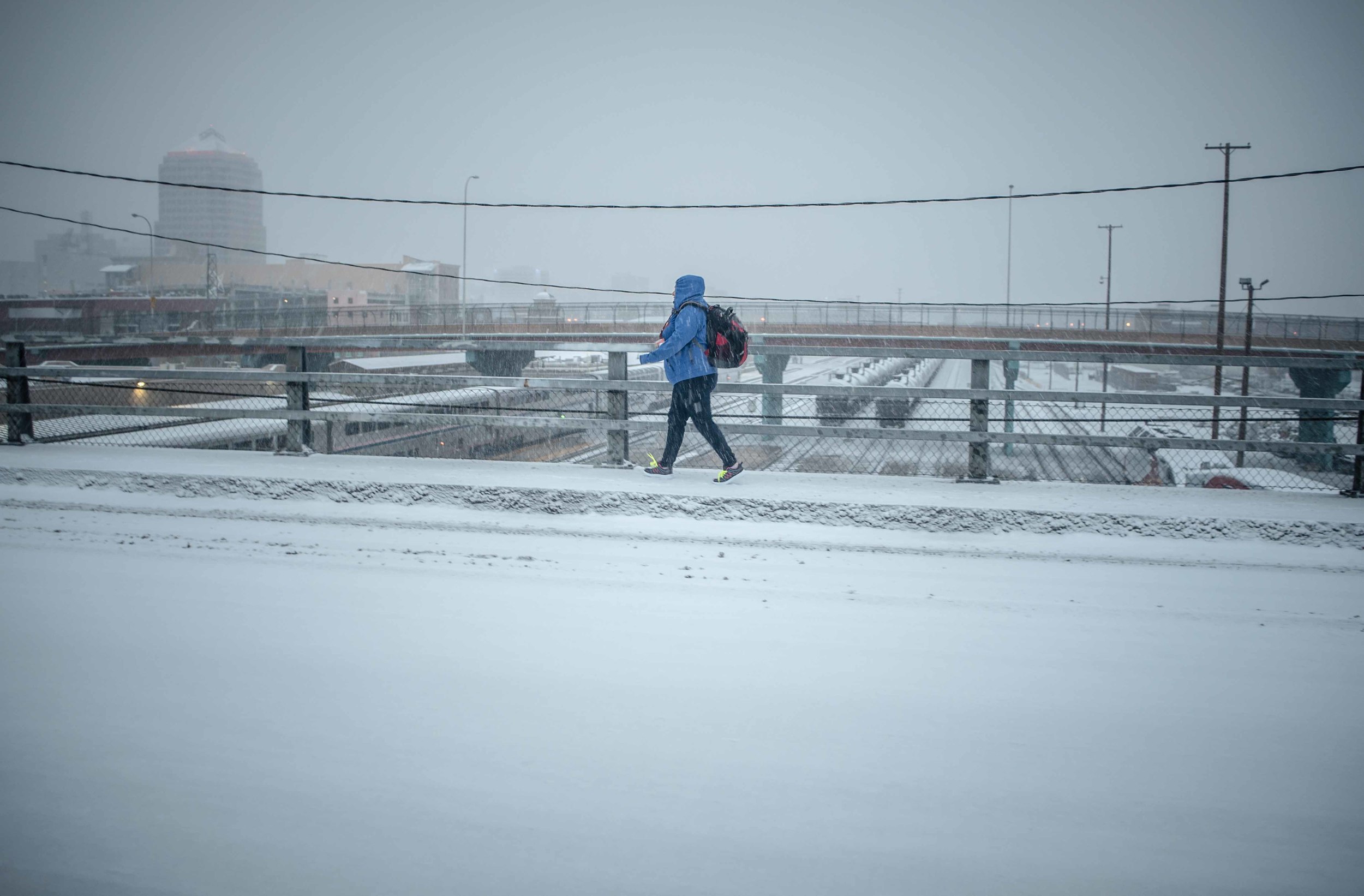

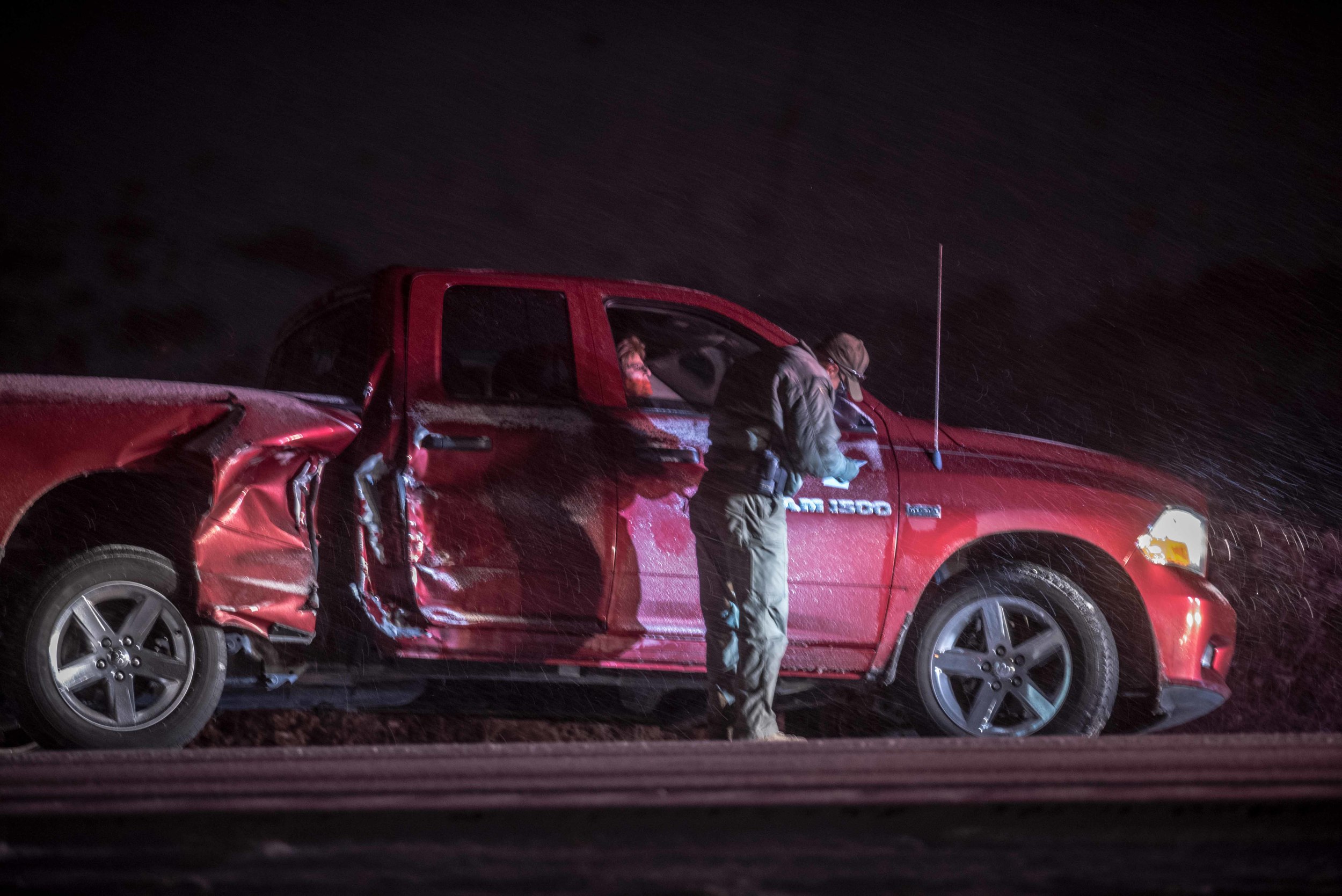
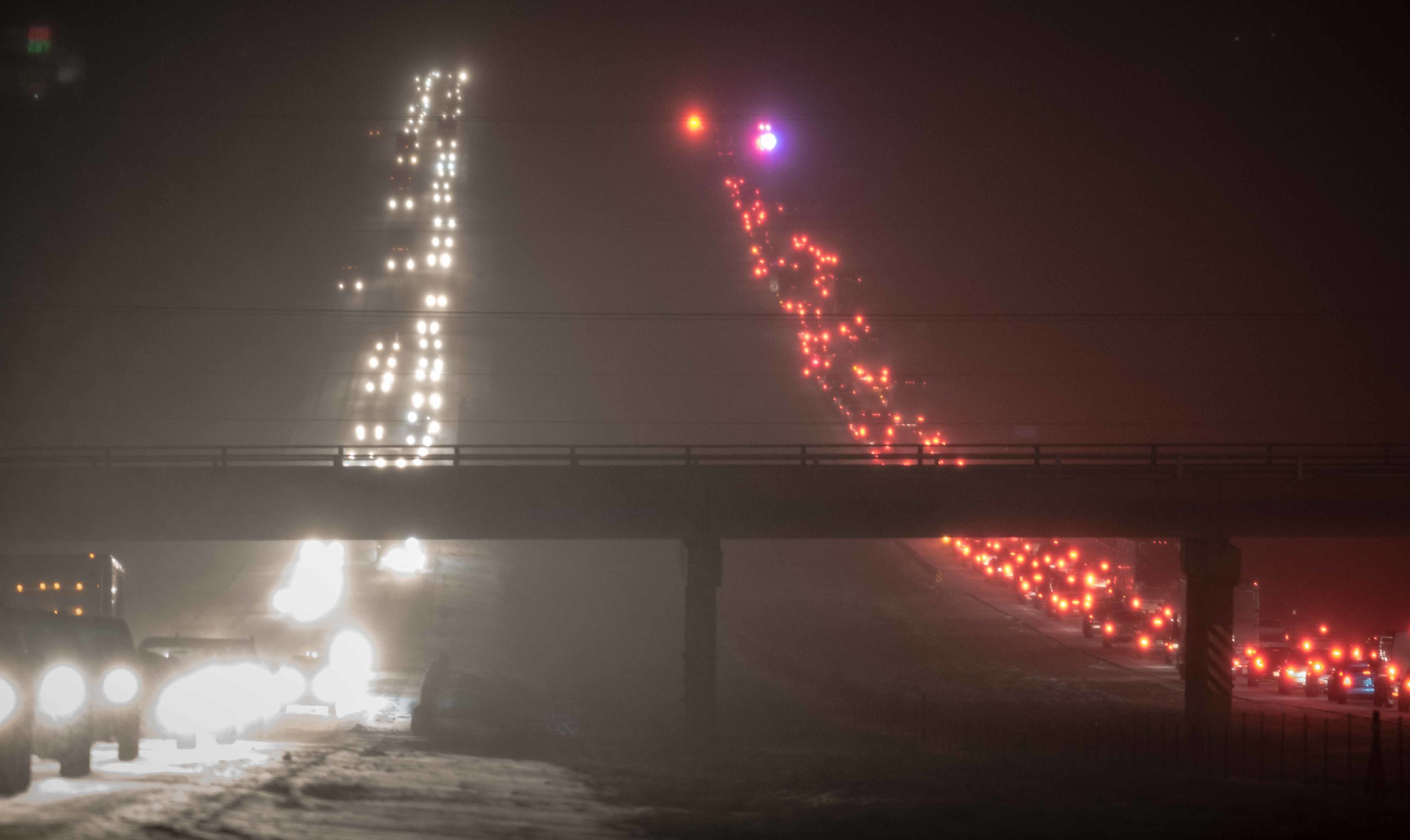

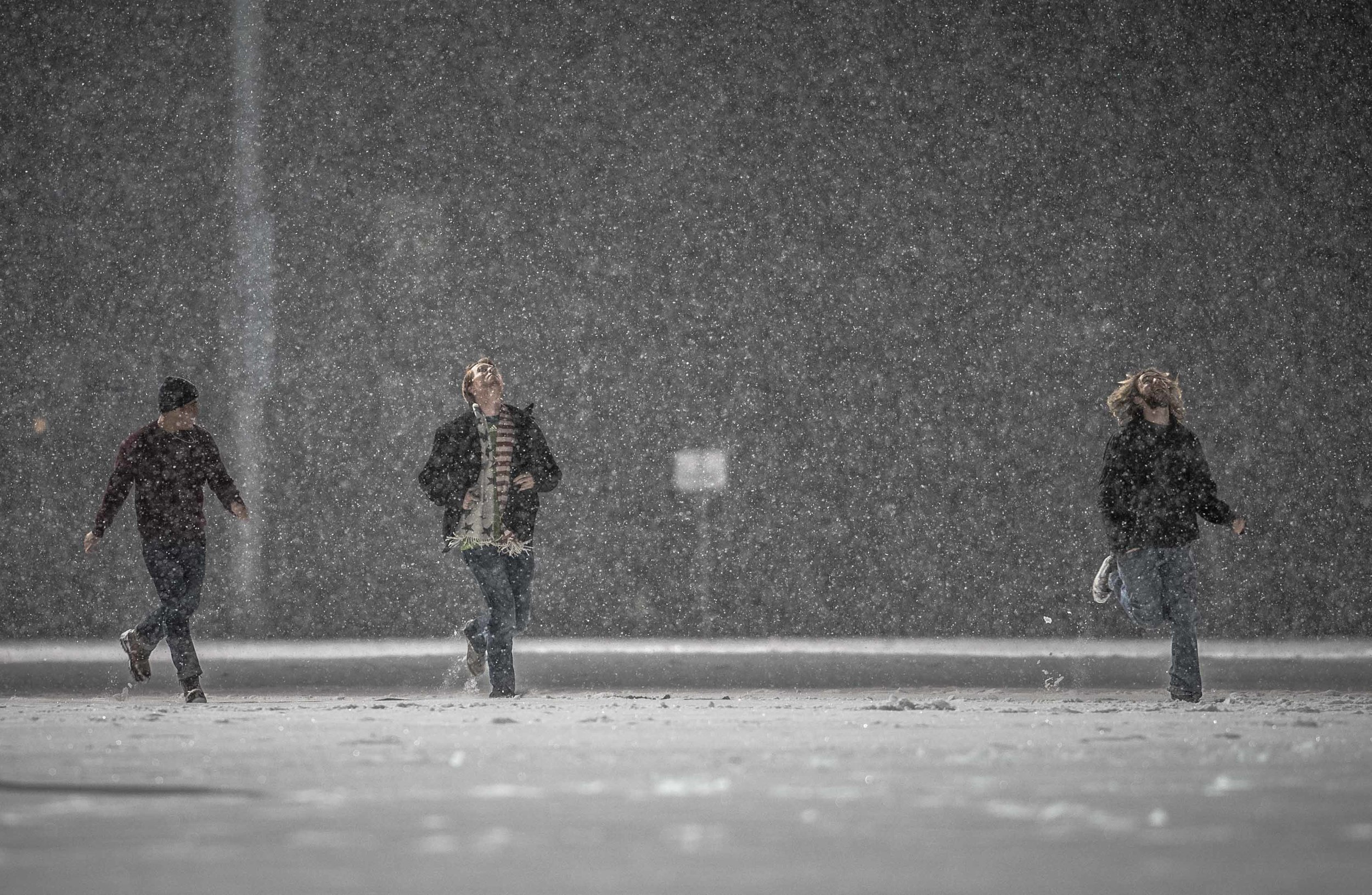


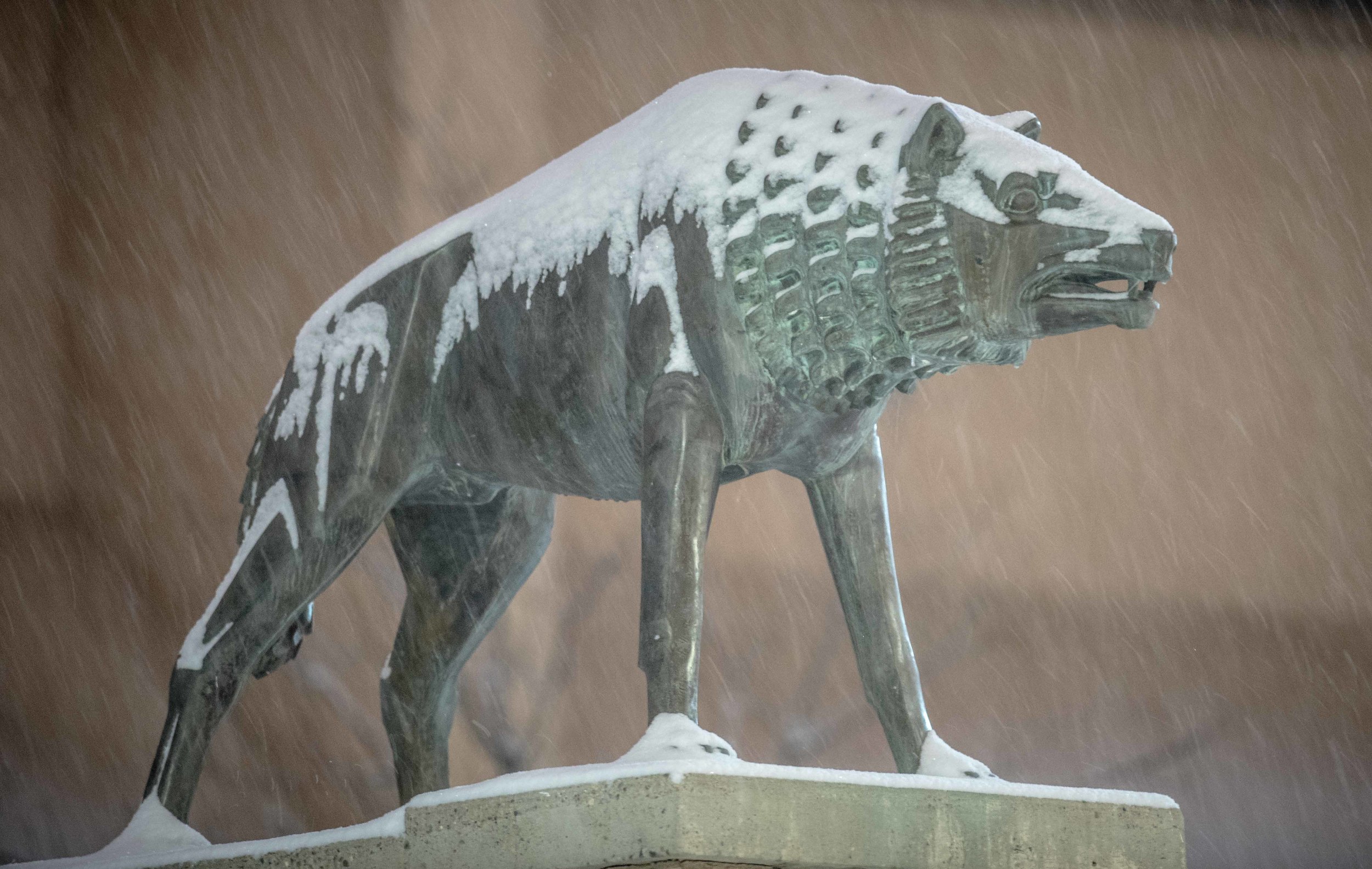

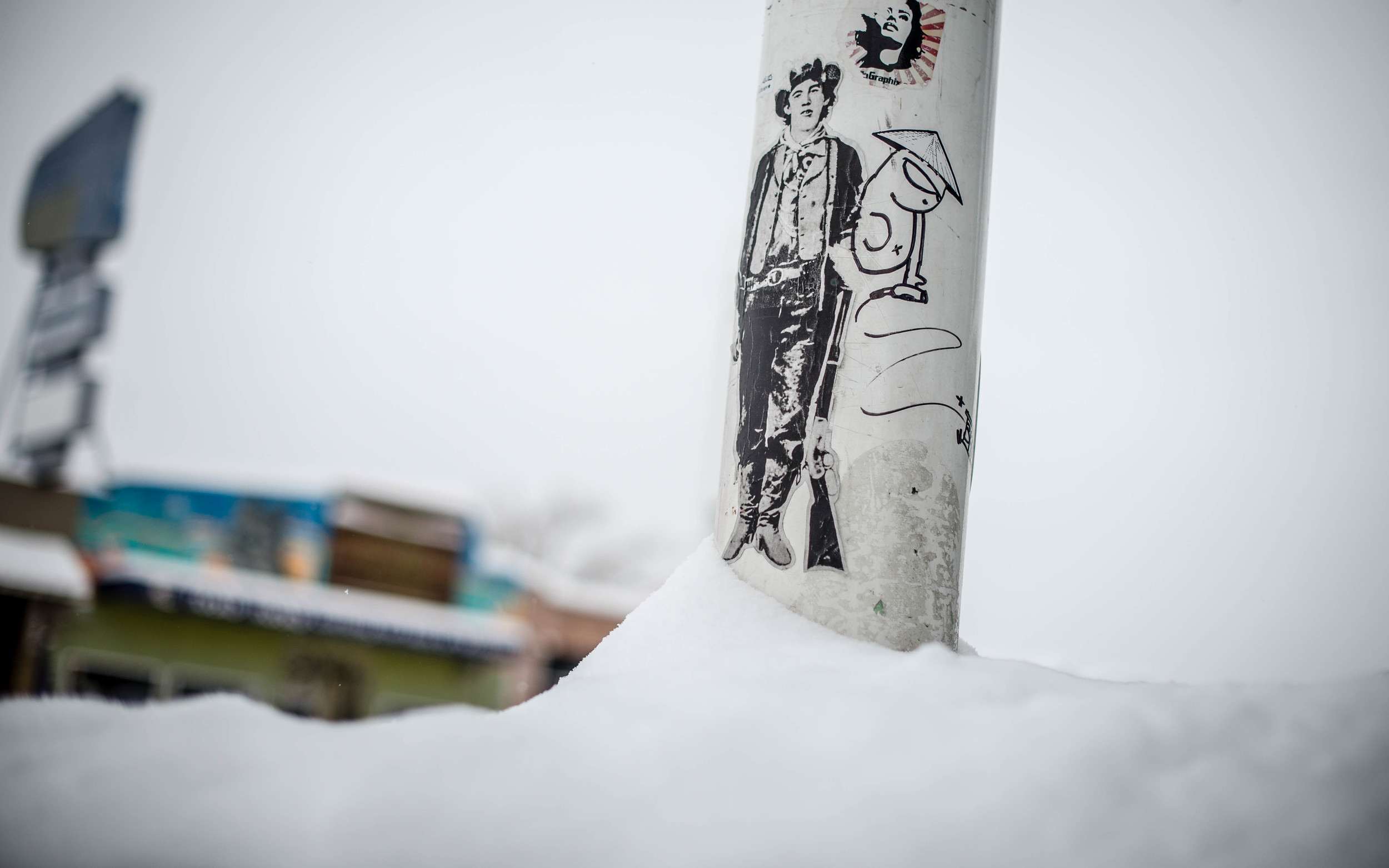

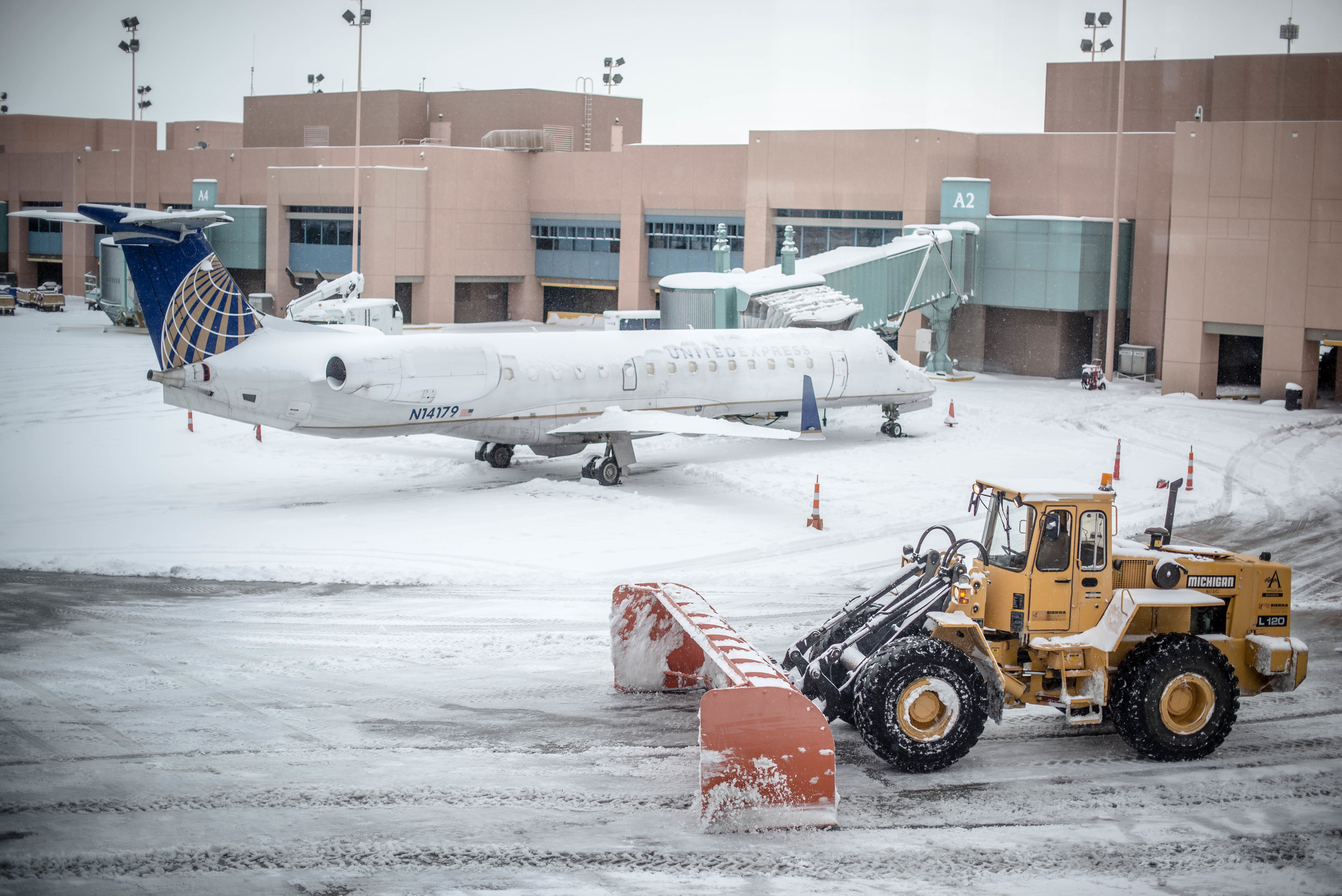

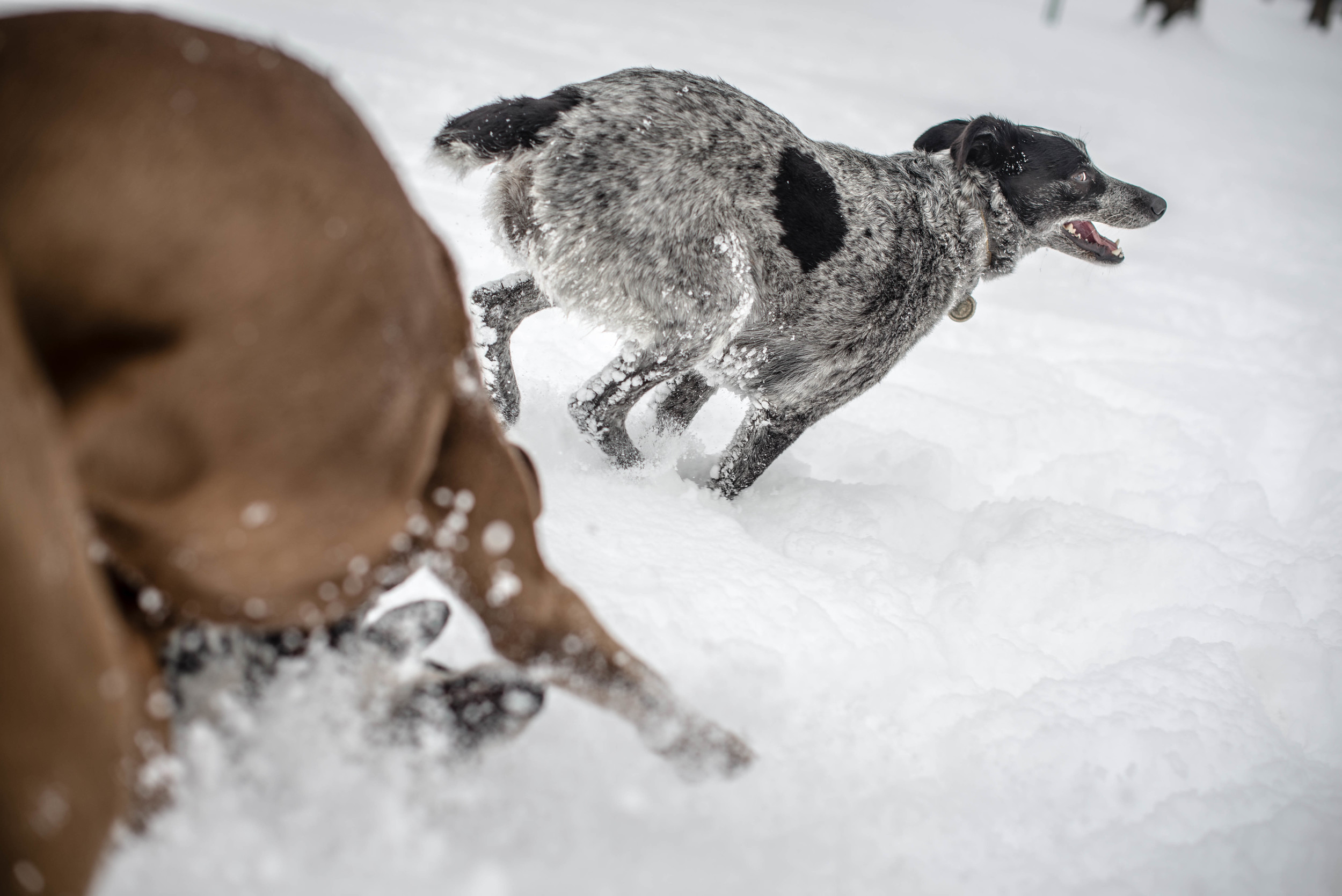
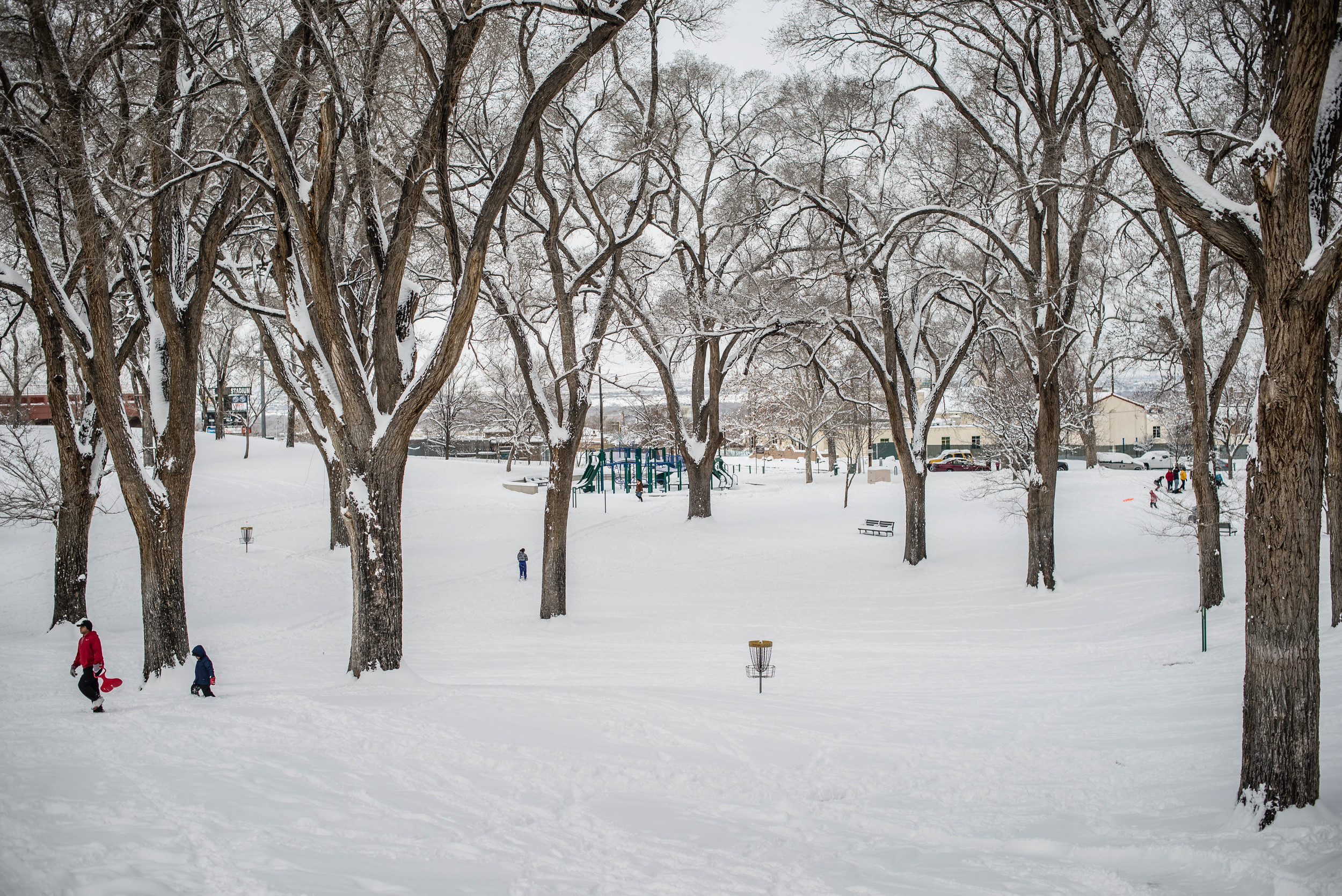

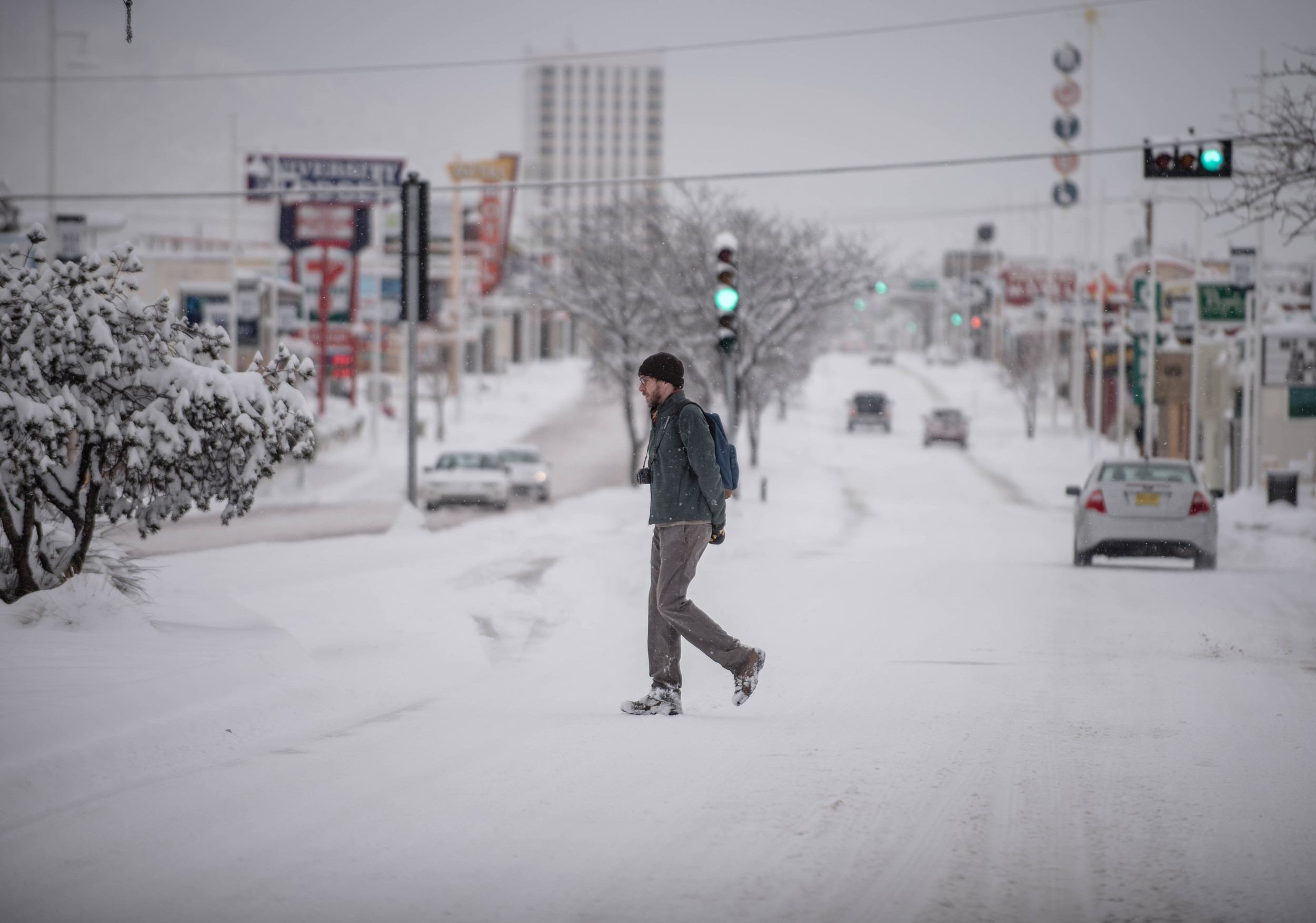


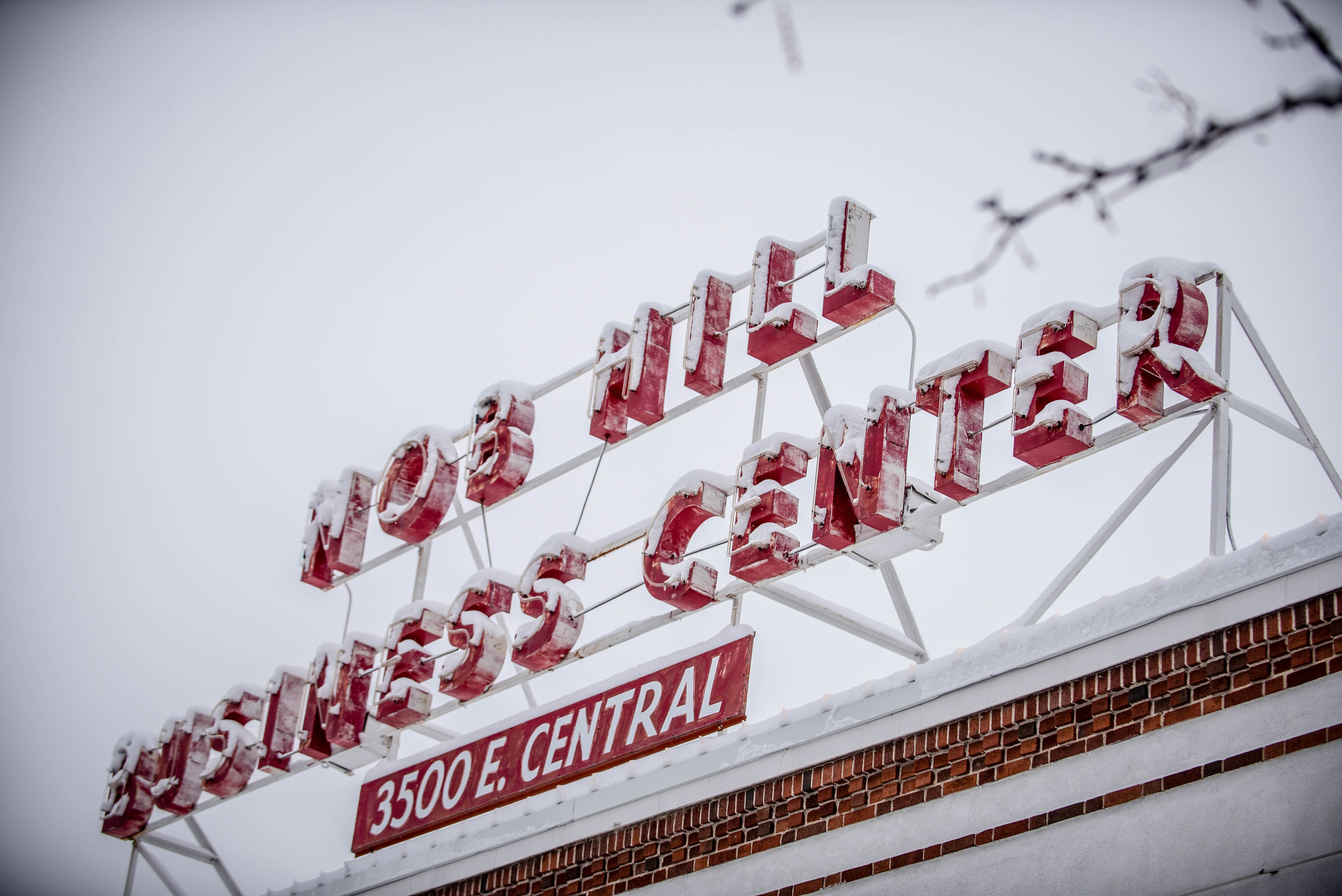

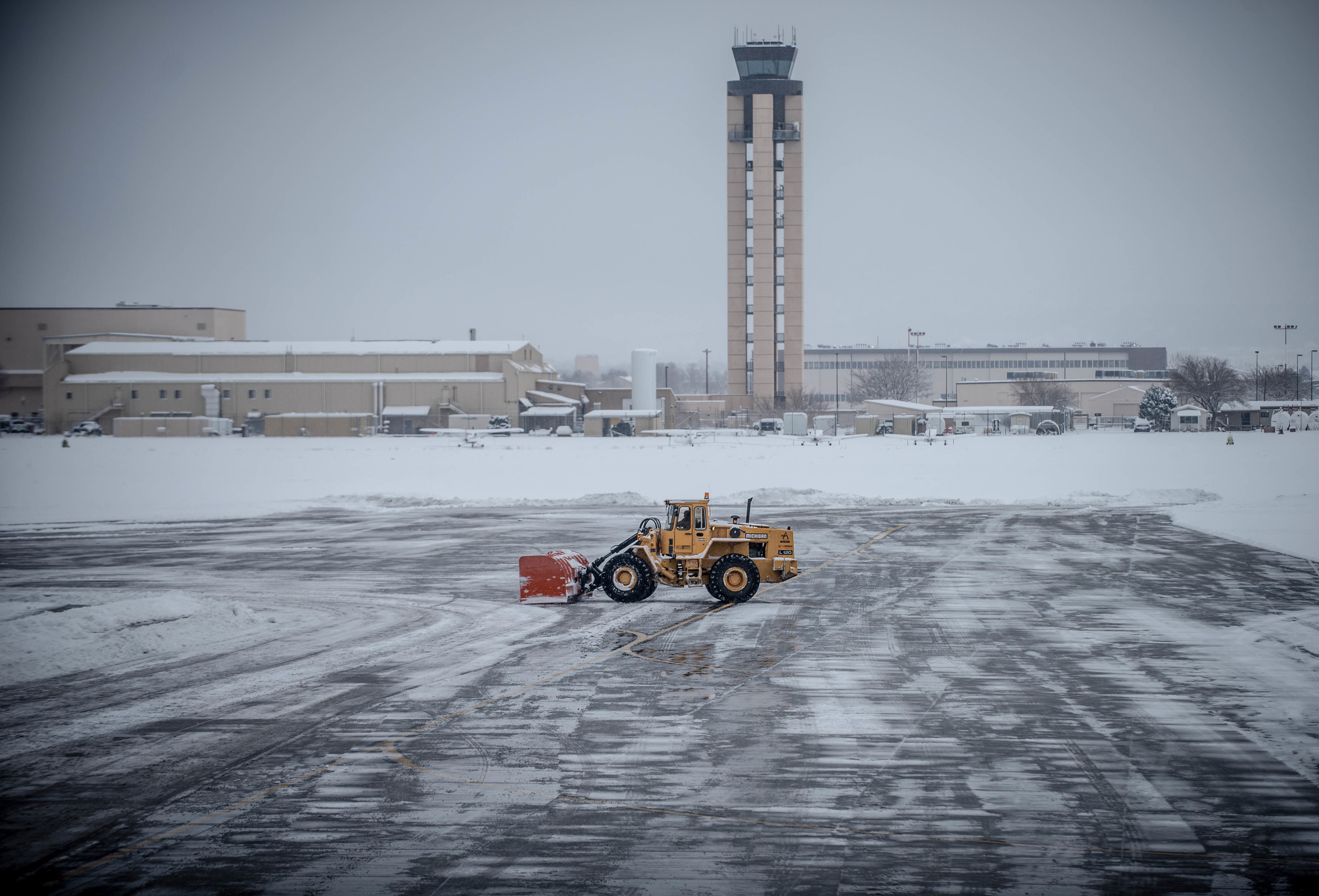
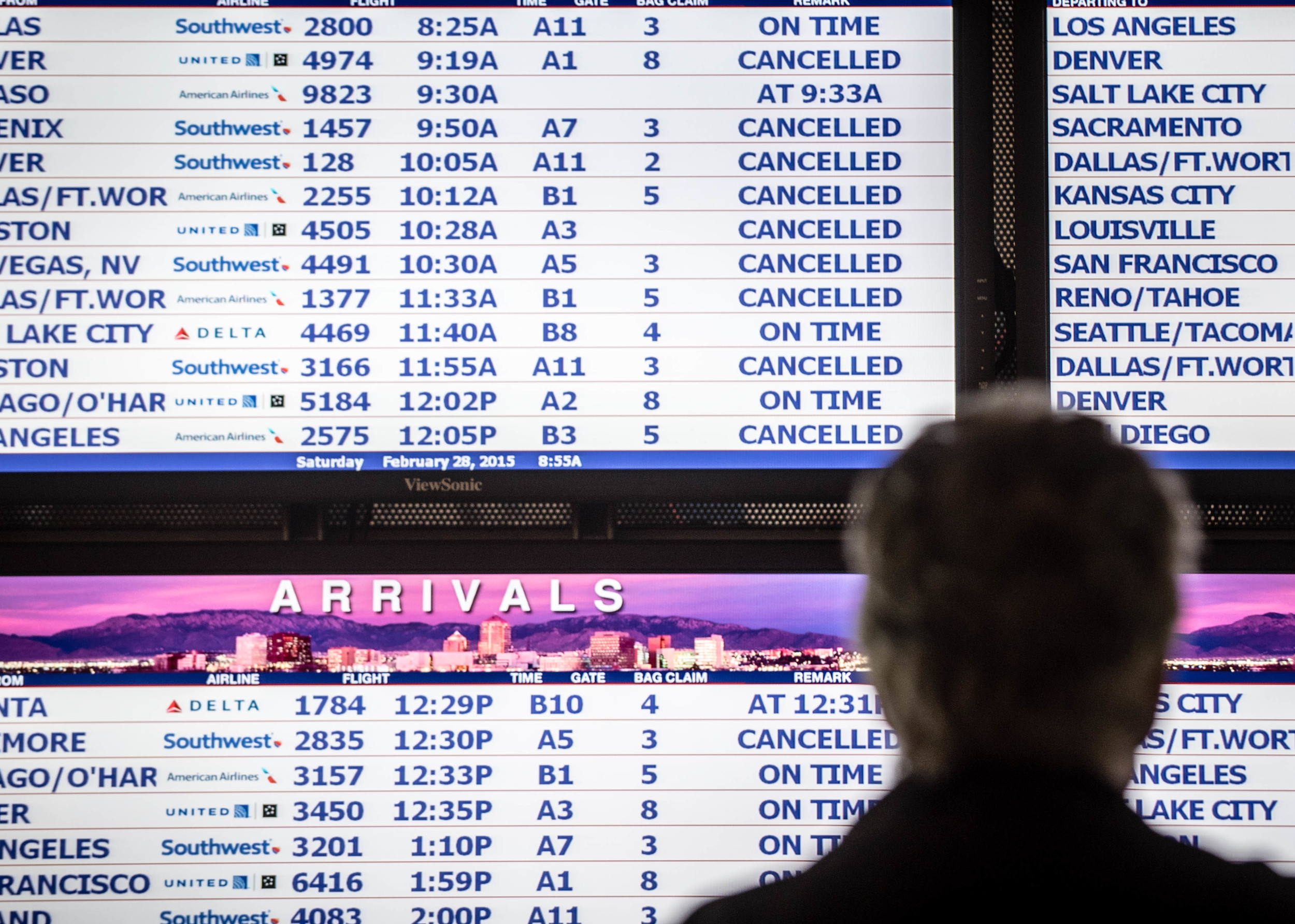
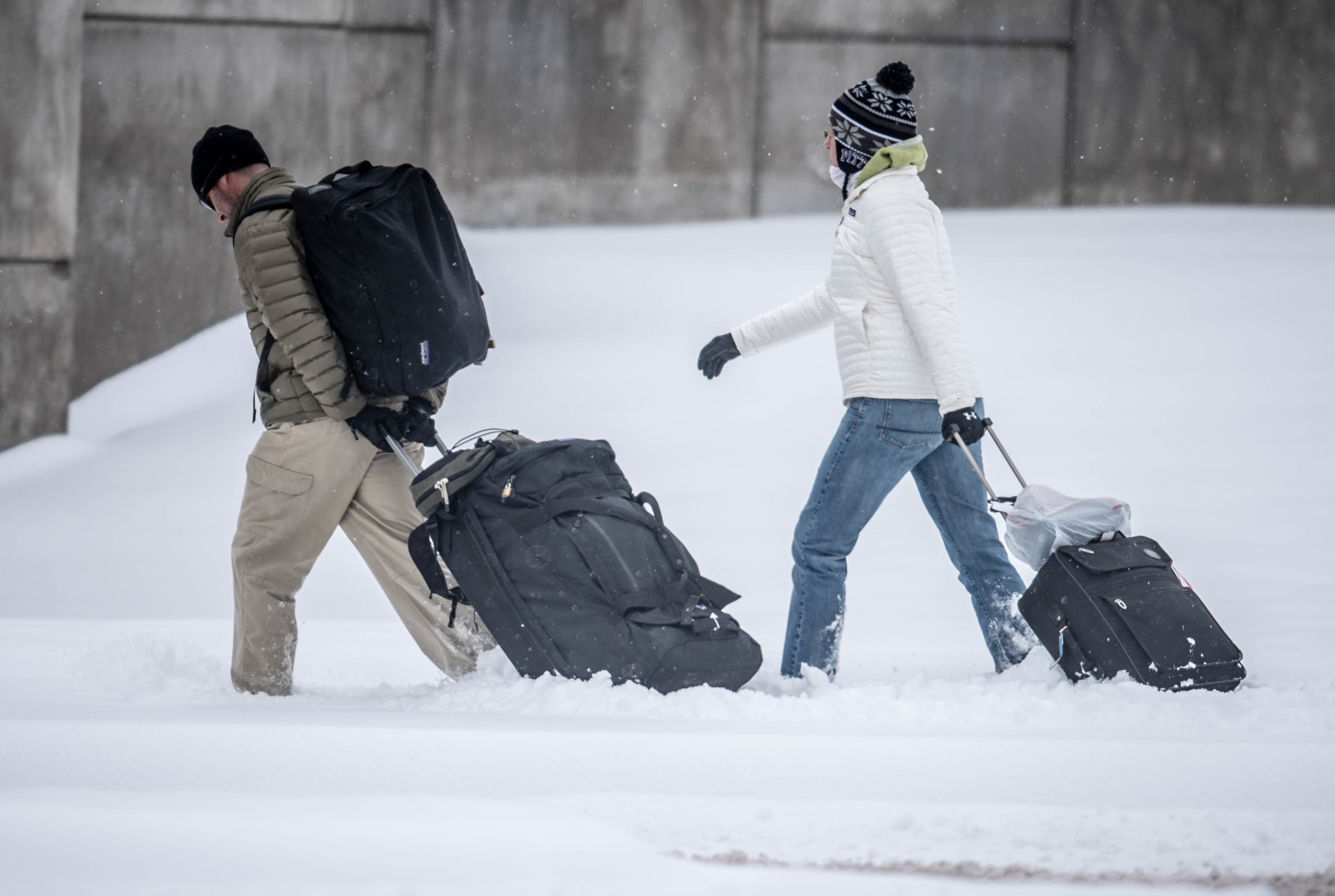
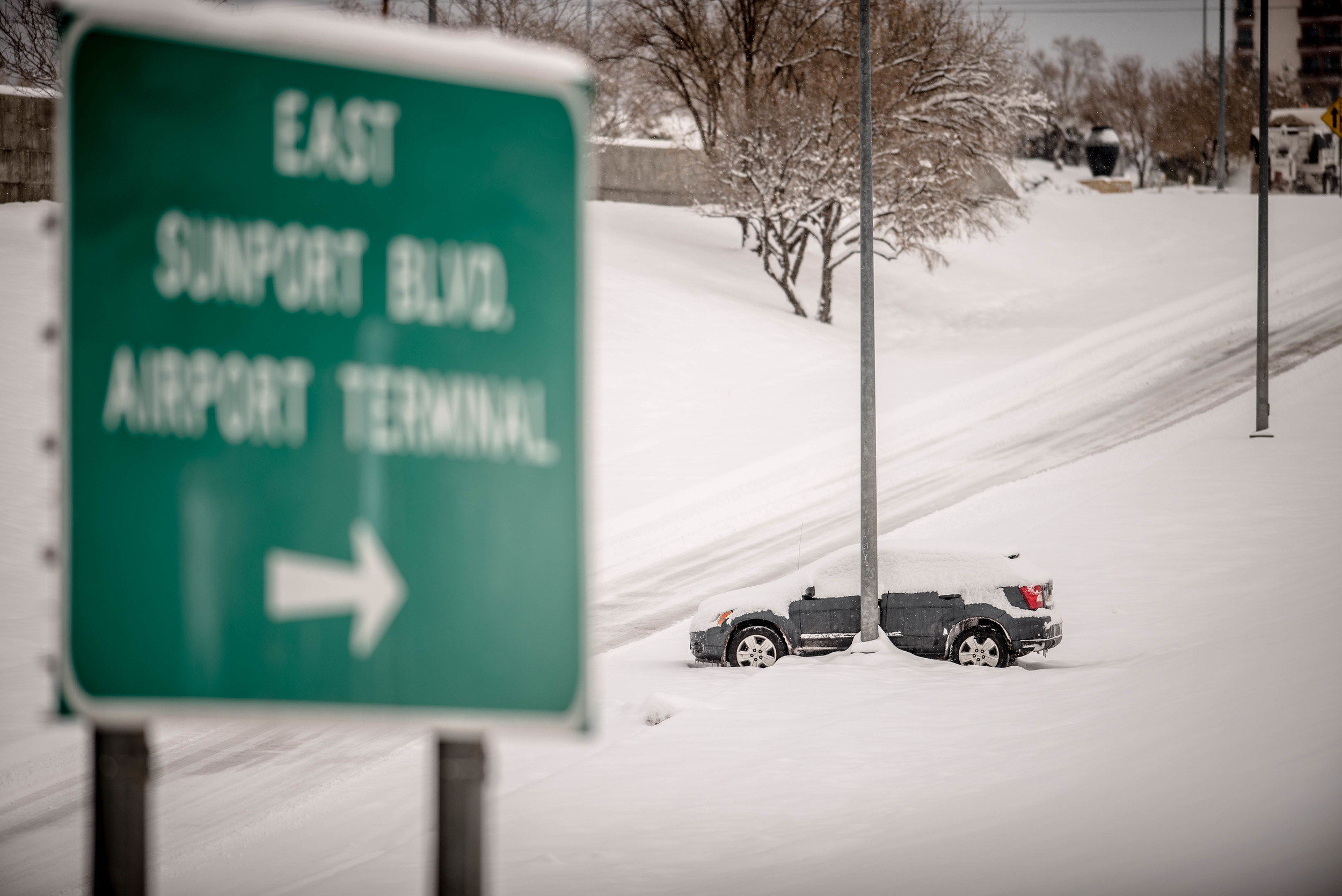



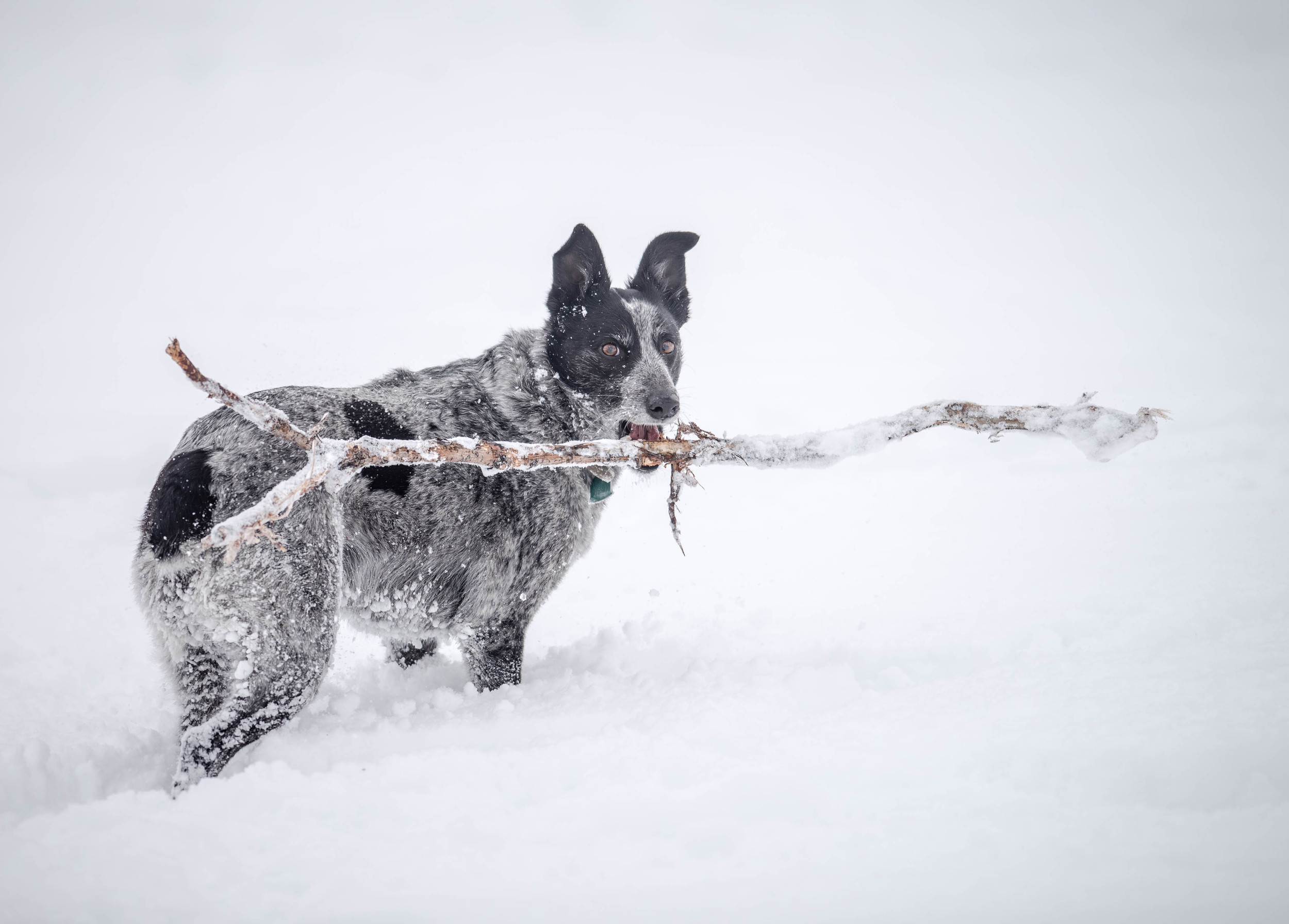
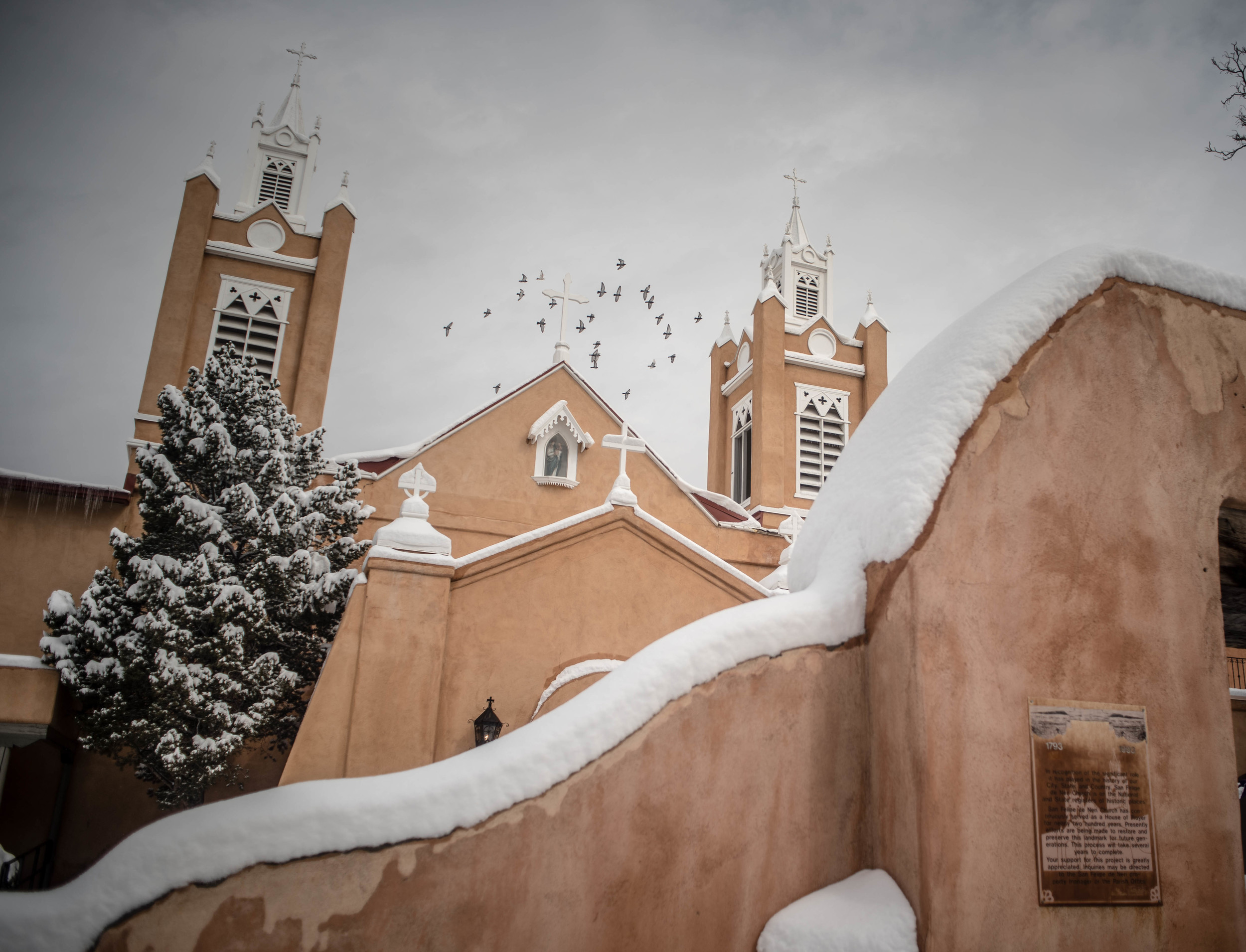
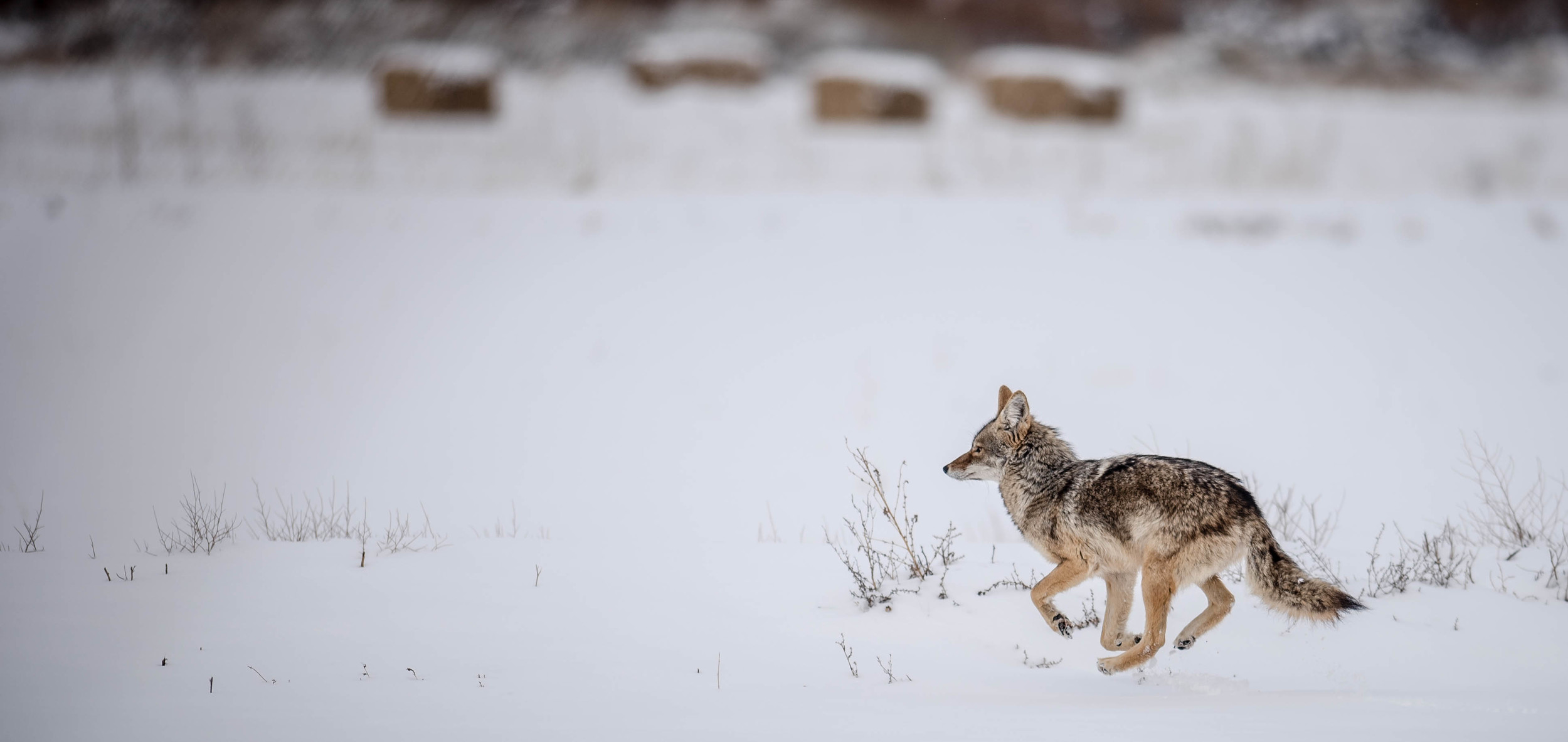


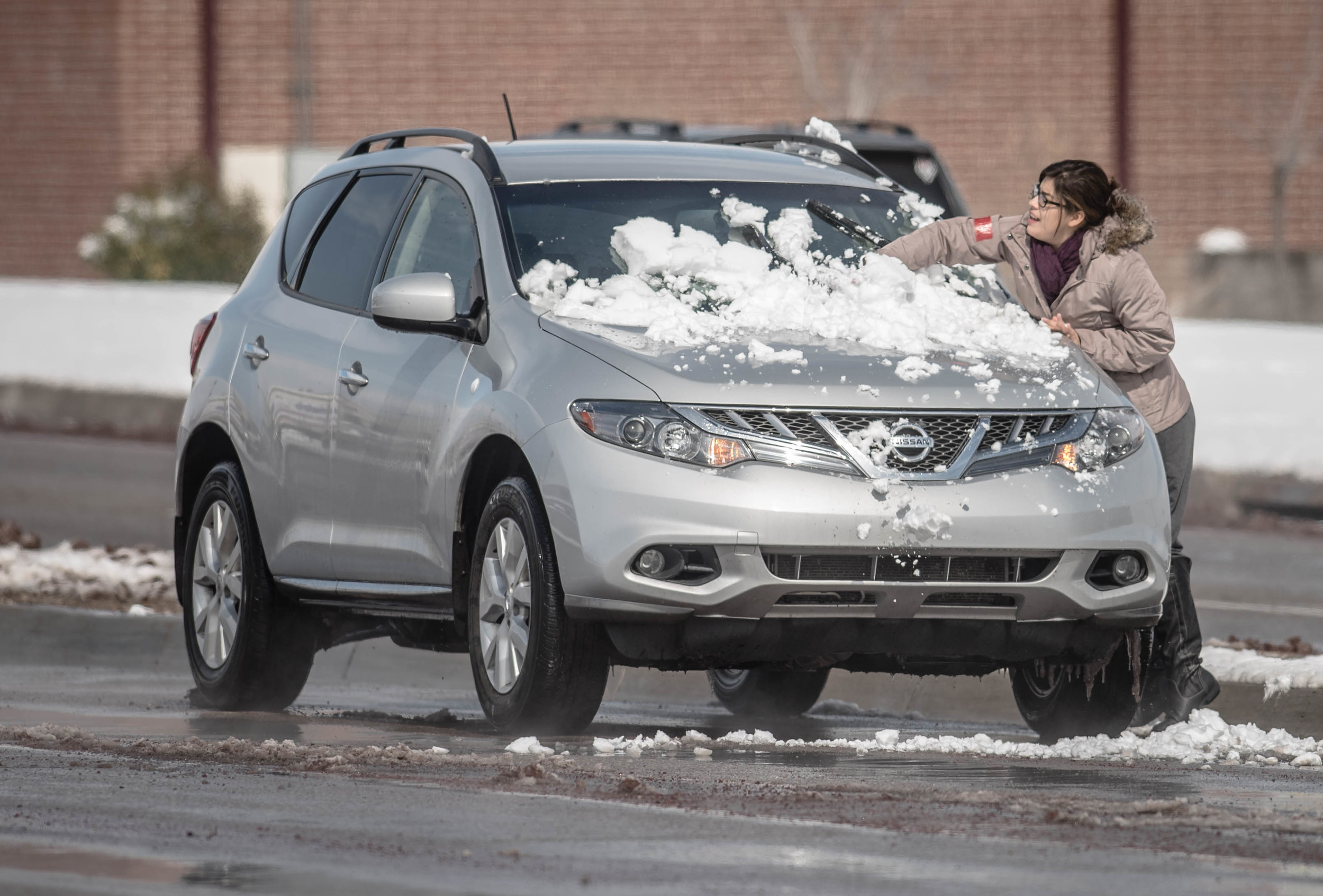
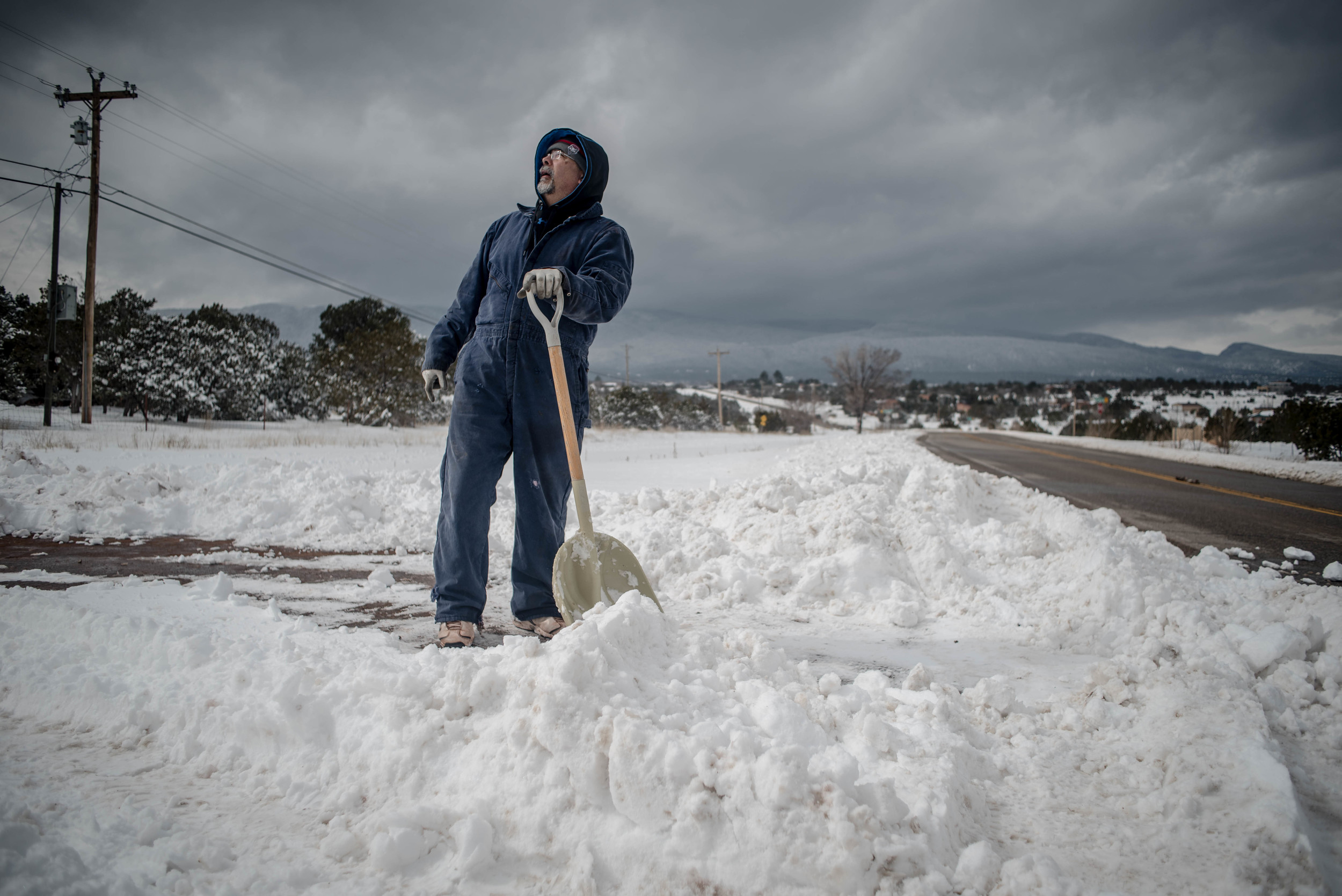
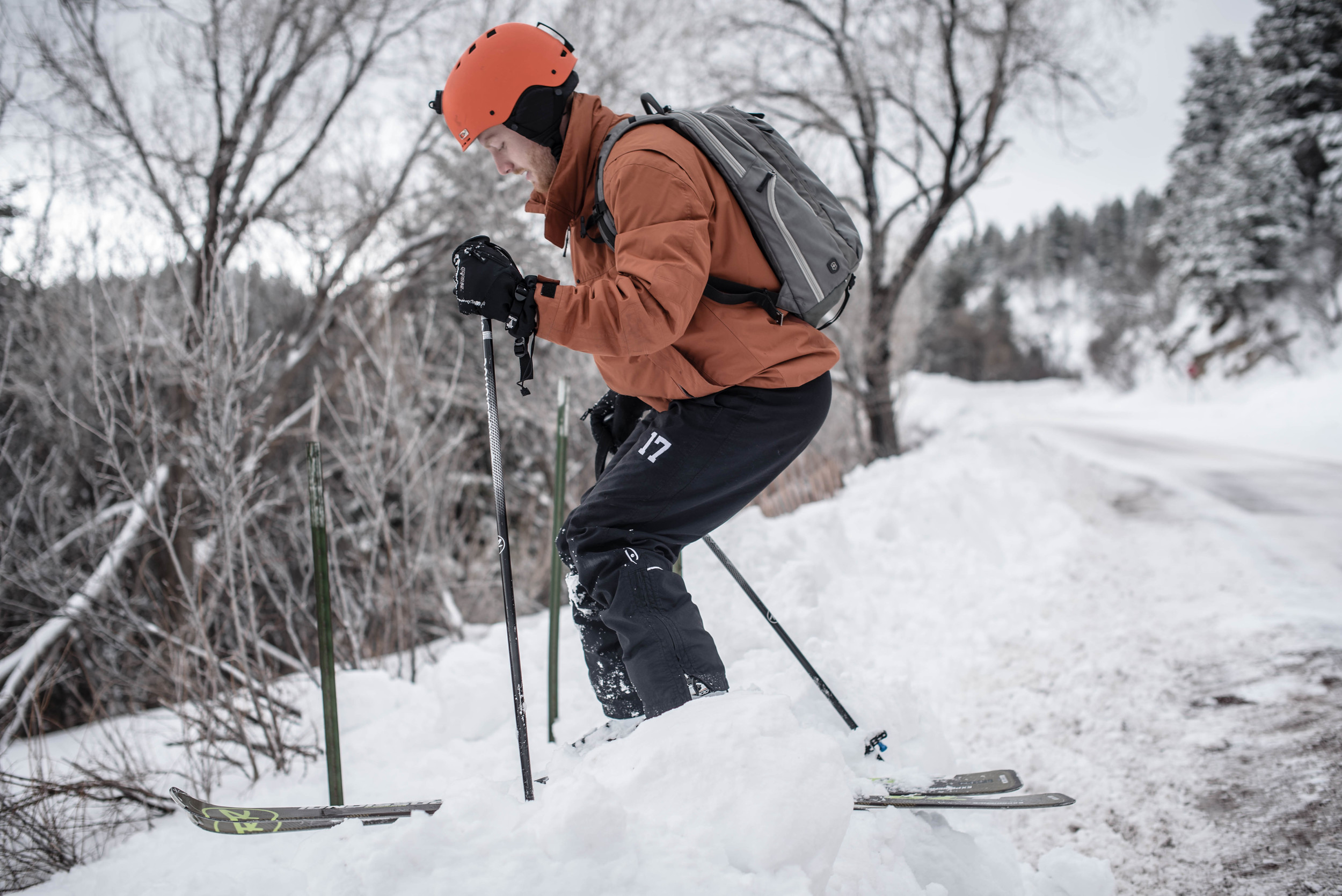
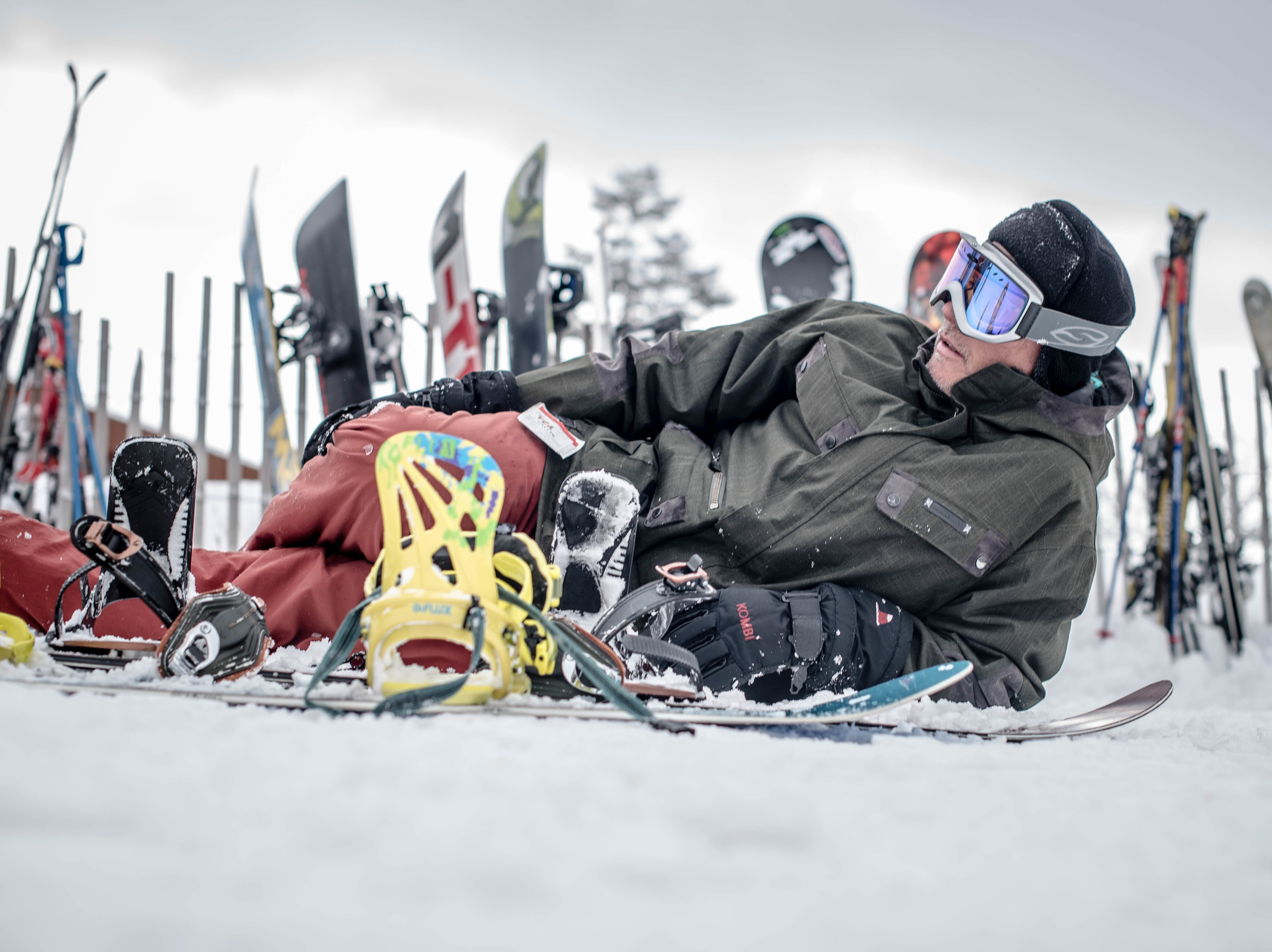

Wells Blog
Duis mollis, est non commodo luctus, nisi erat porttitor ligula, eget lacinia odio sem nec elit. Maecenas faucibus mollis interdum. Nulla vitae elit libero, a pharetra augue.


